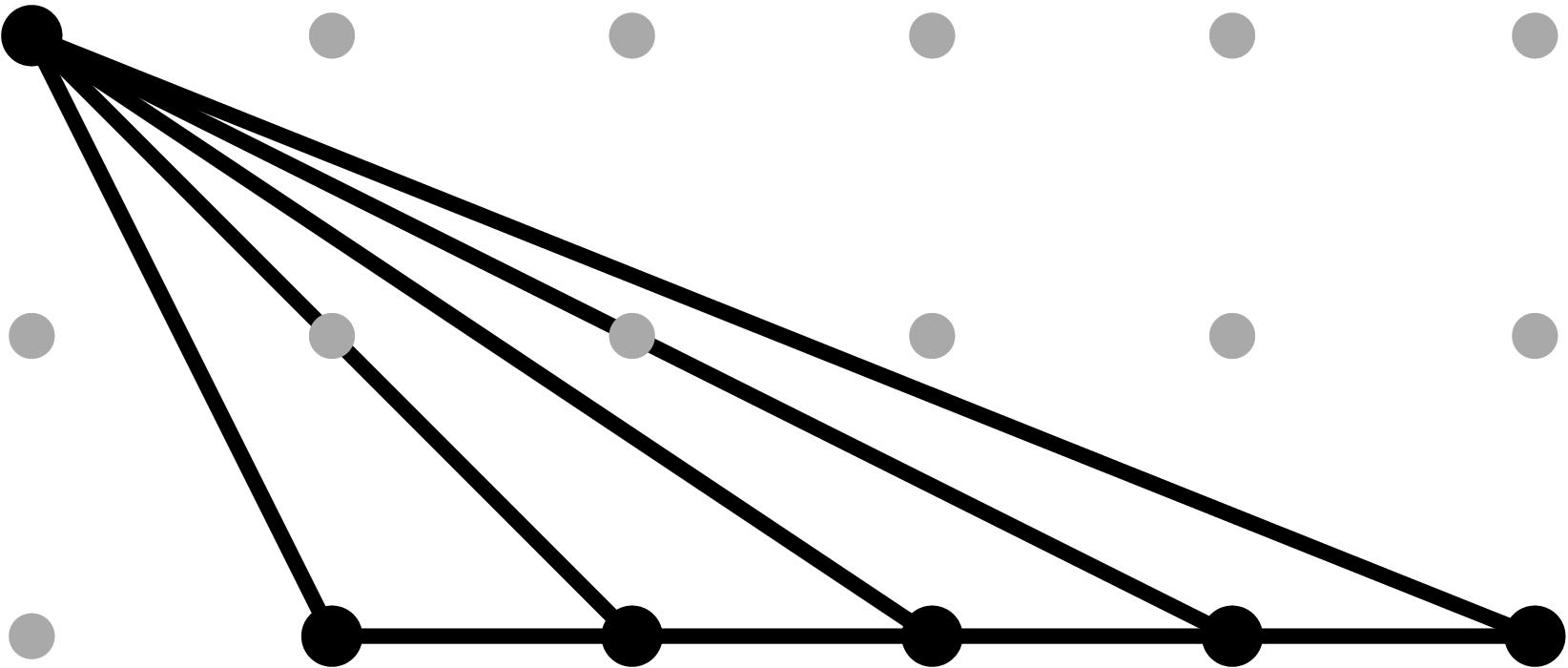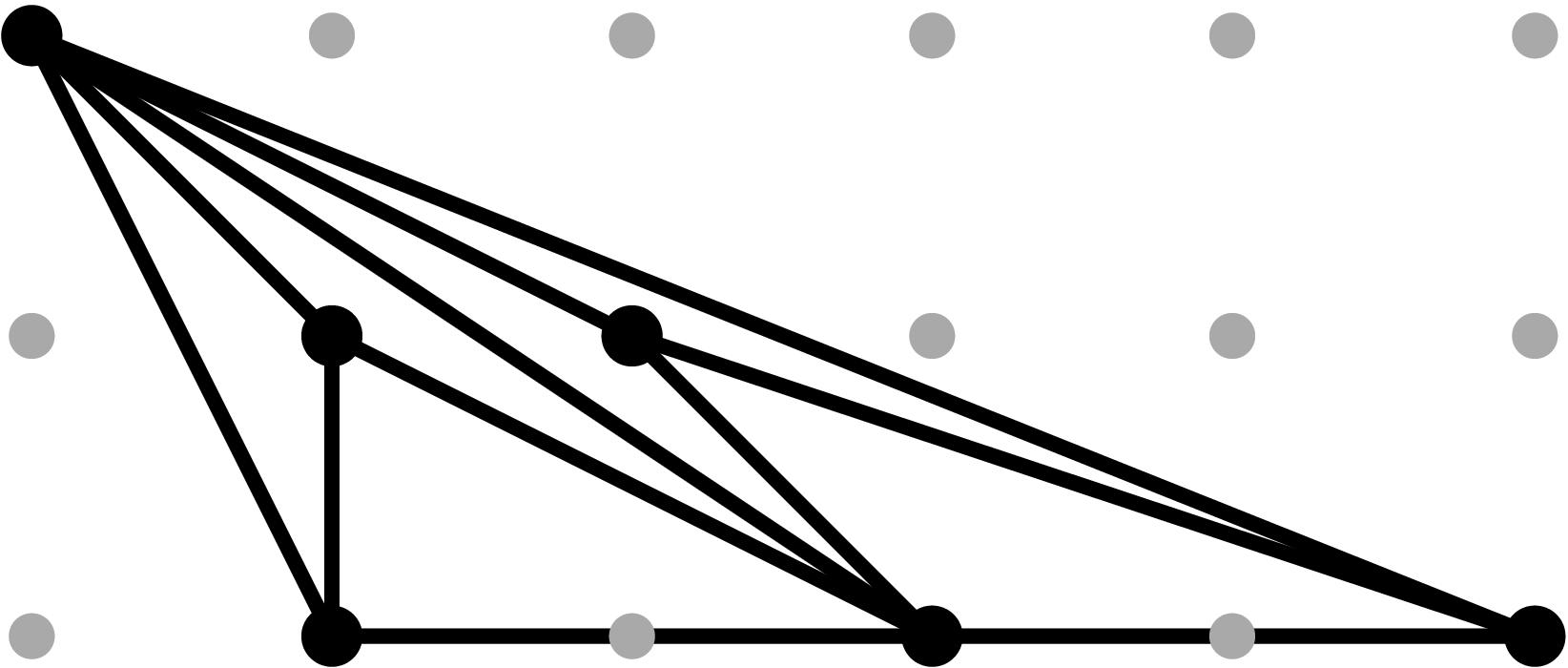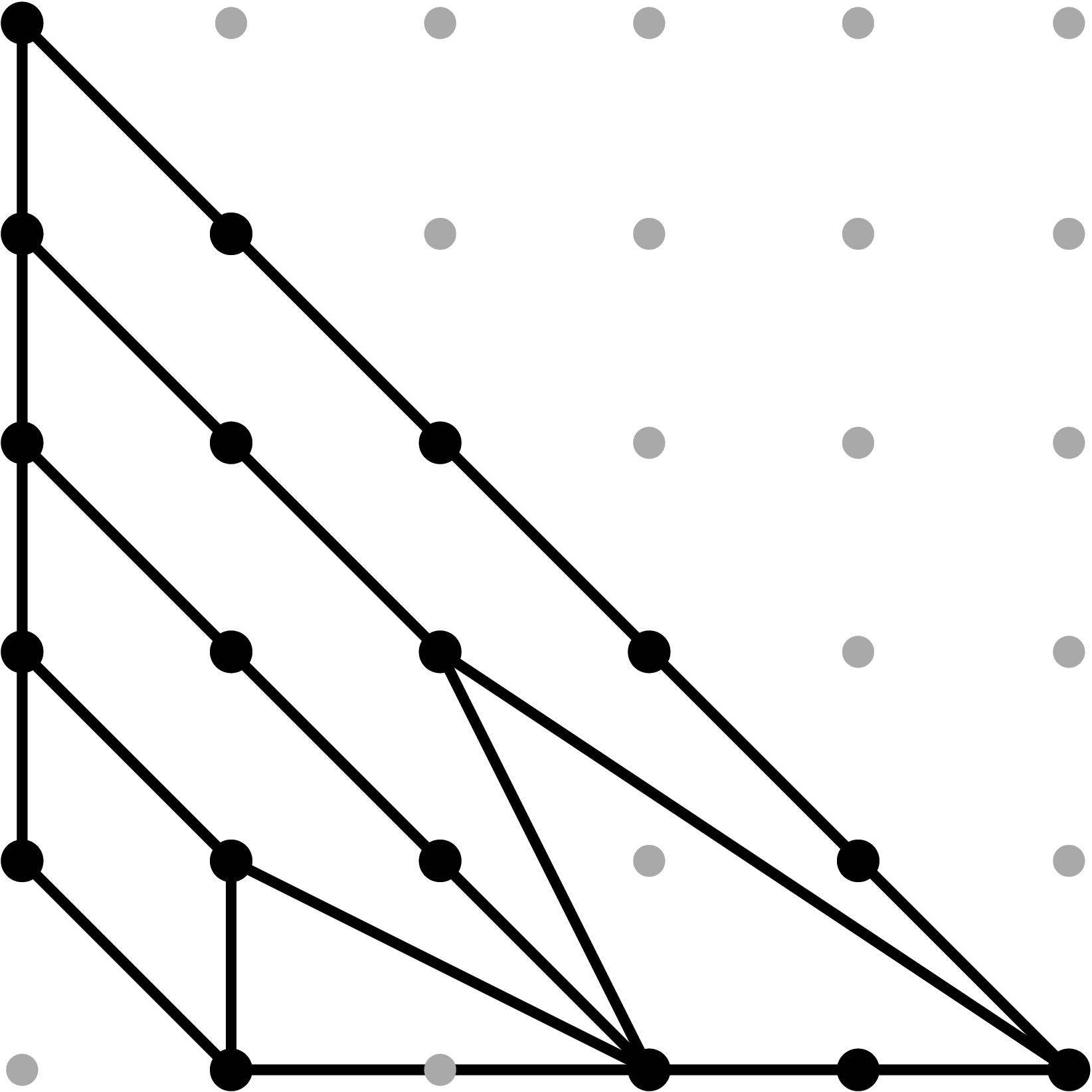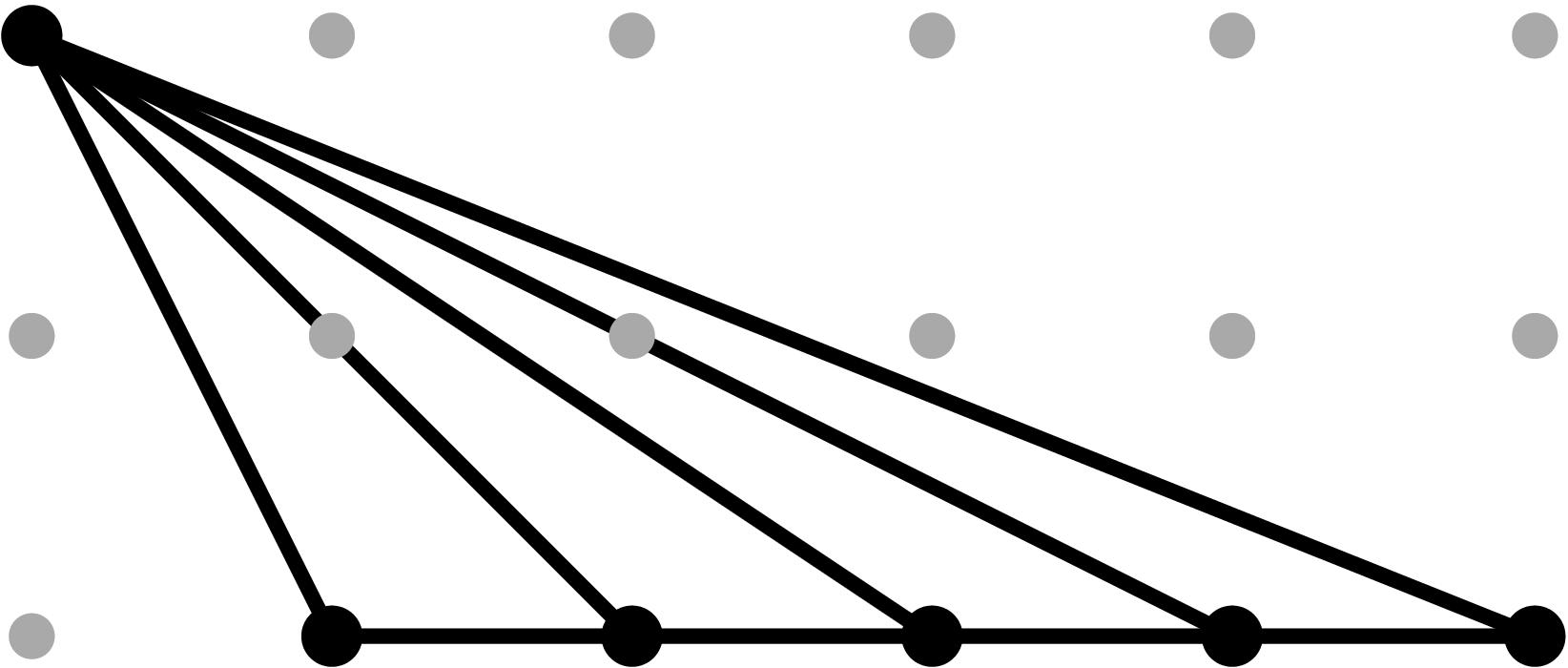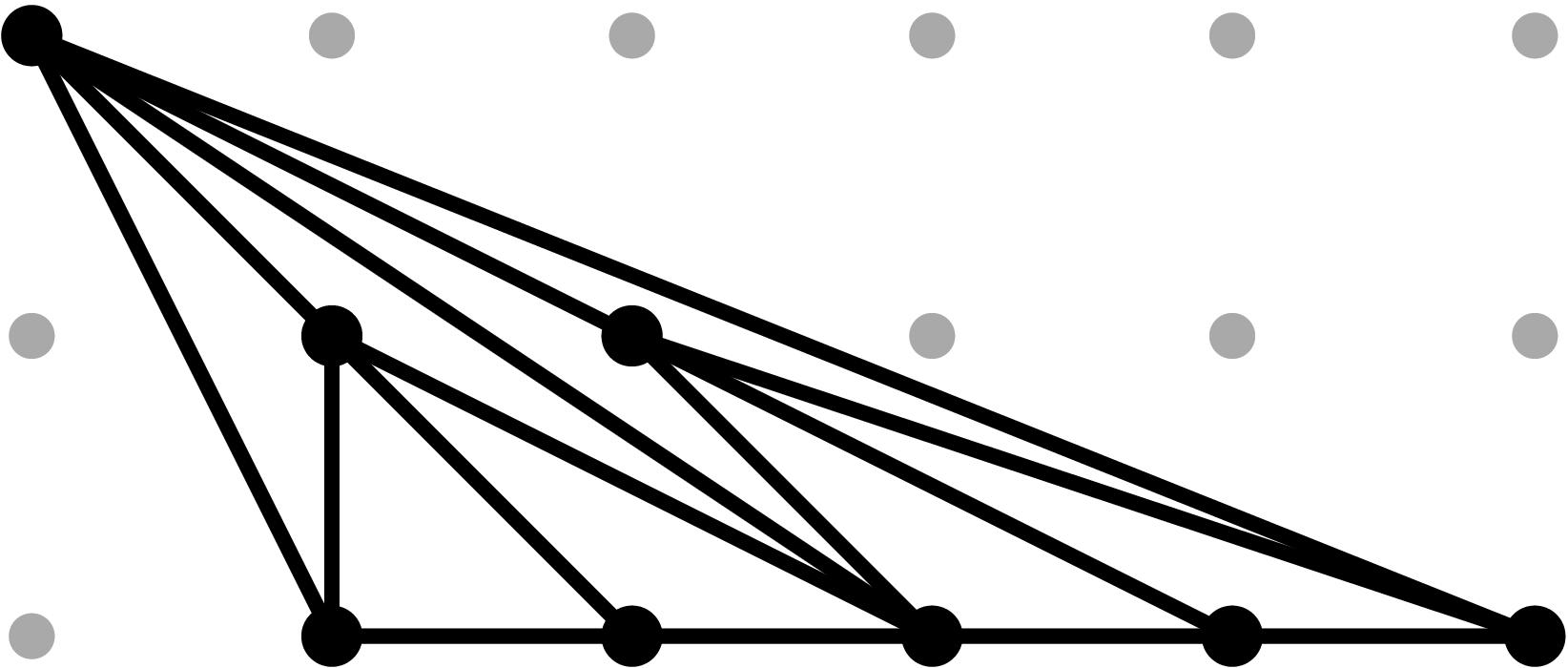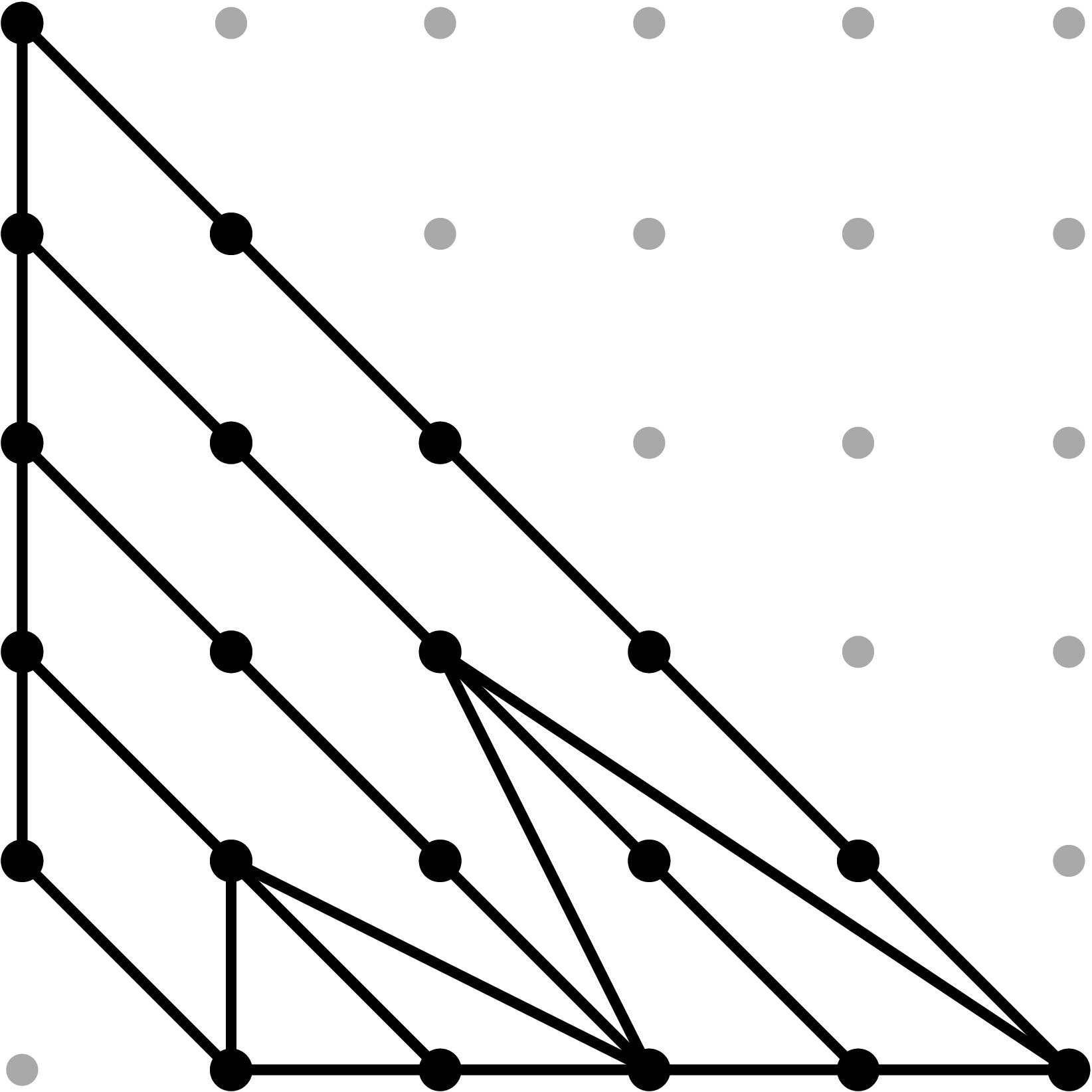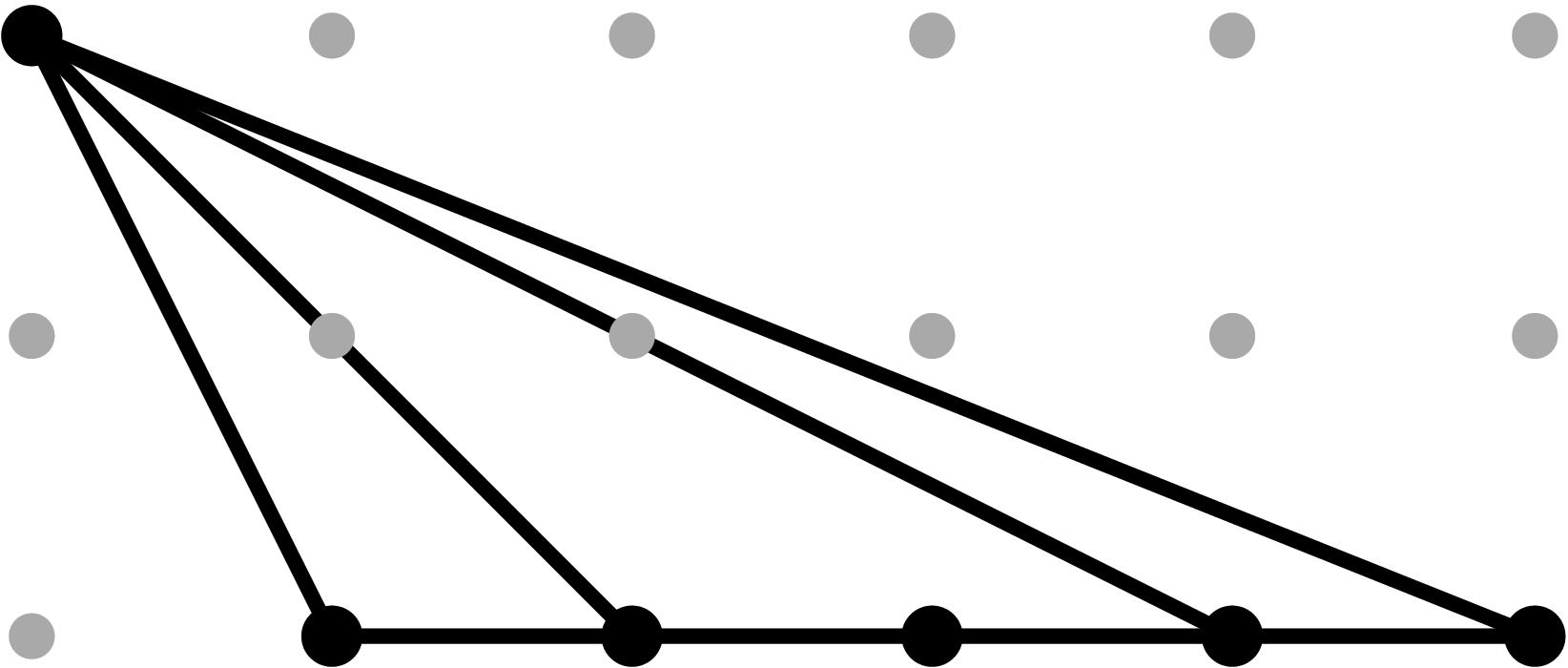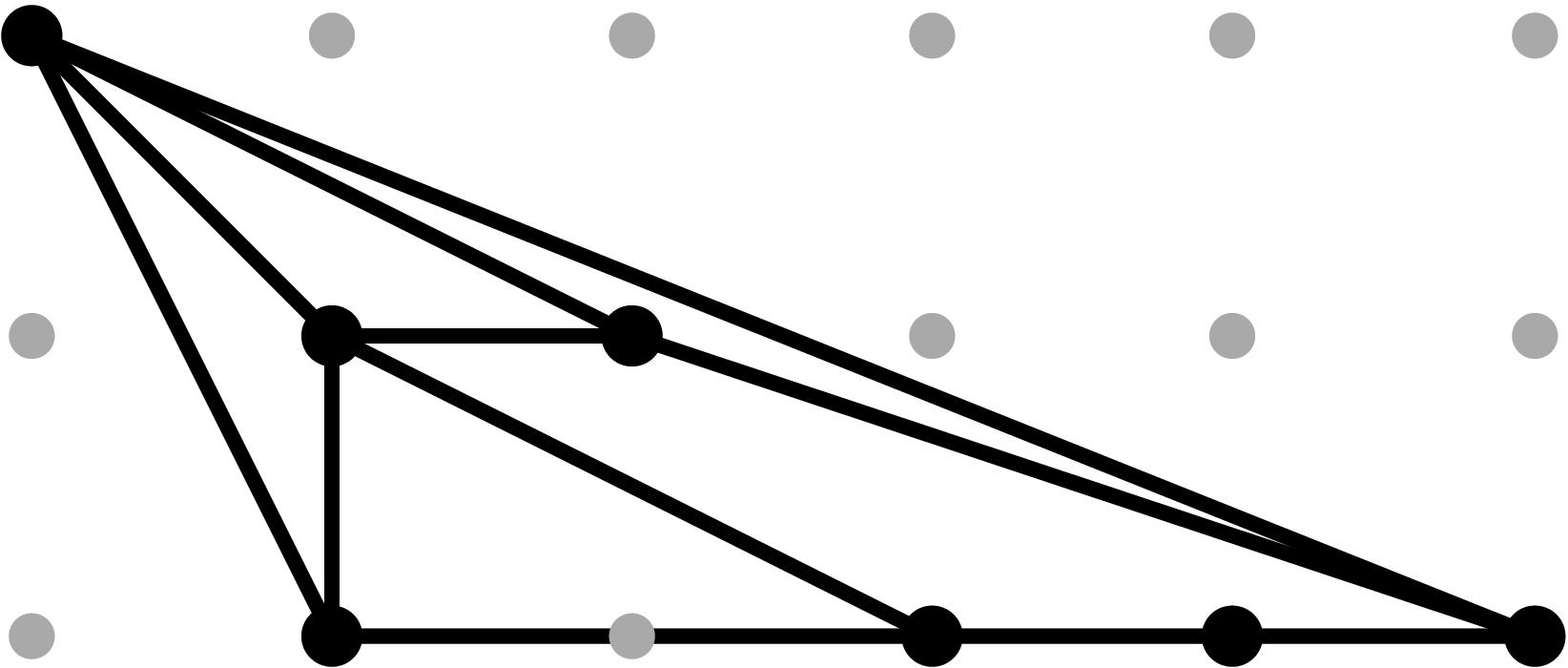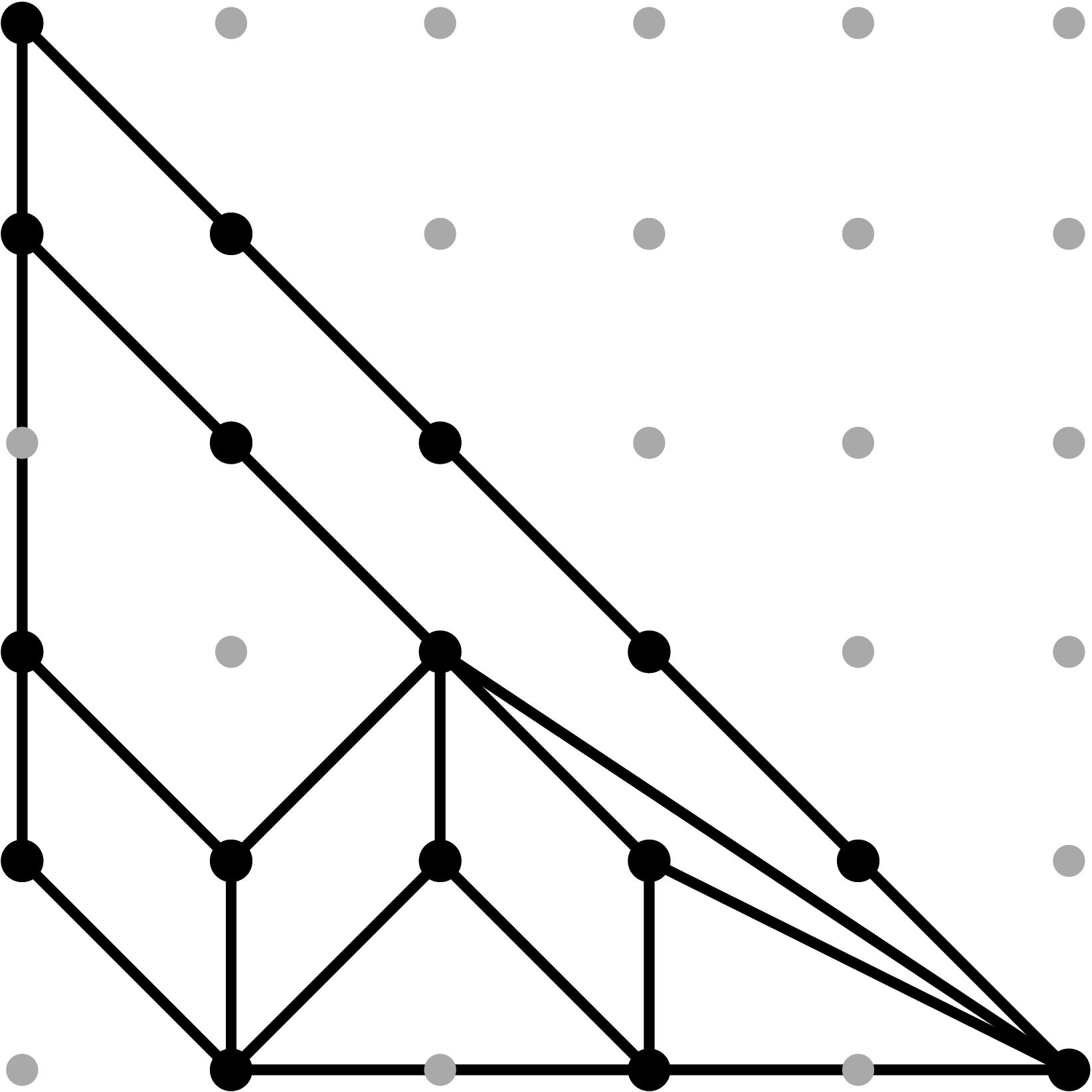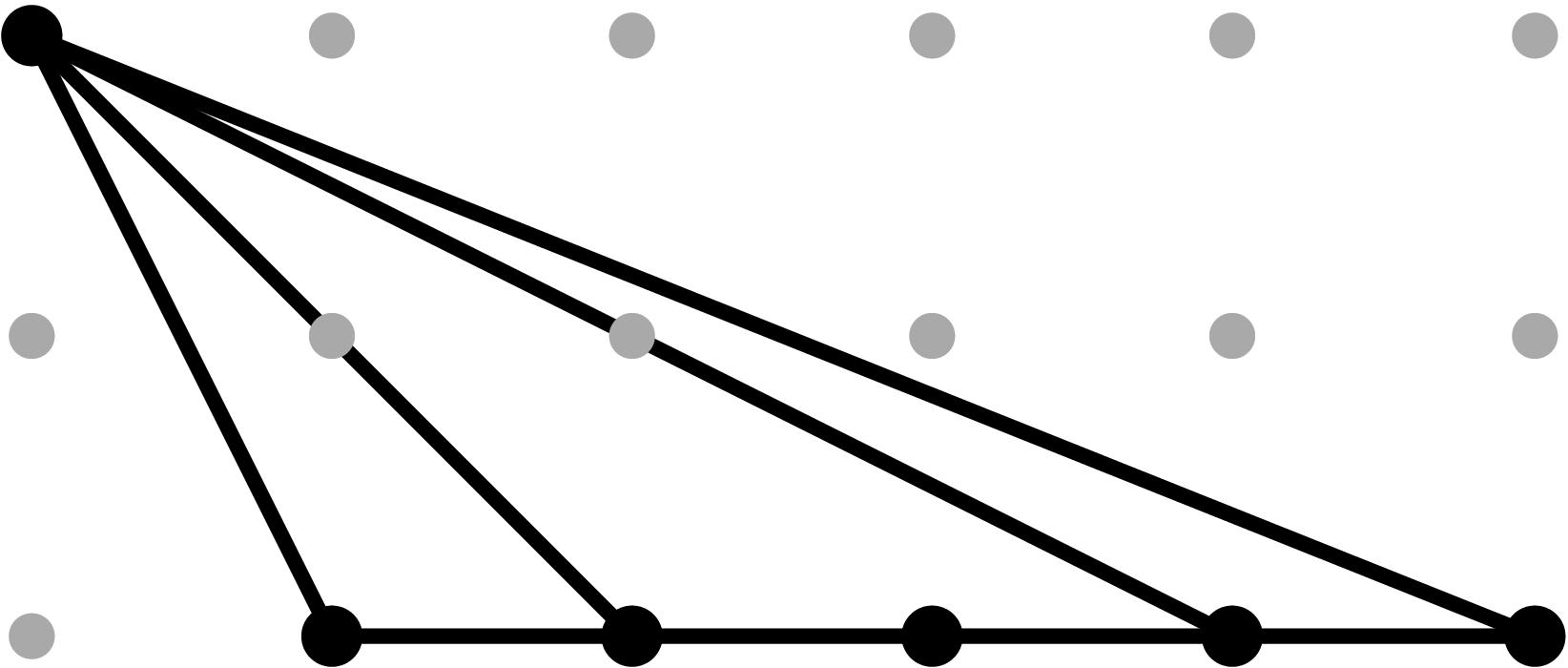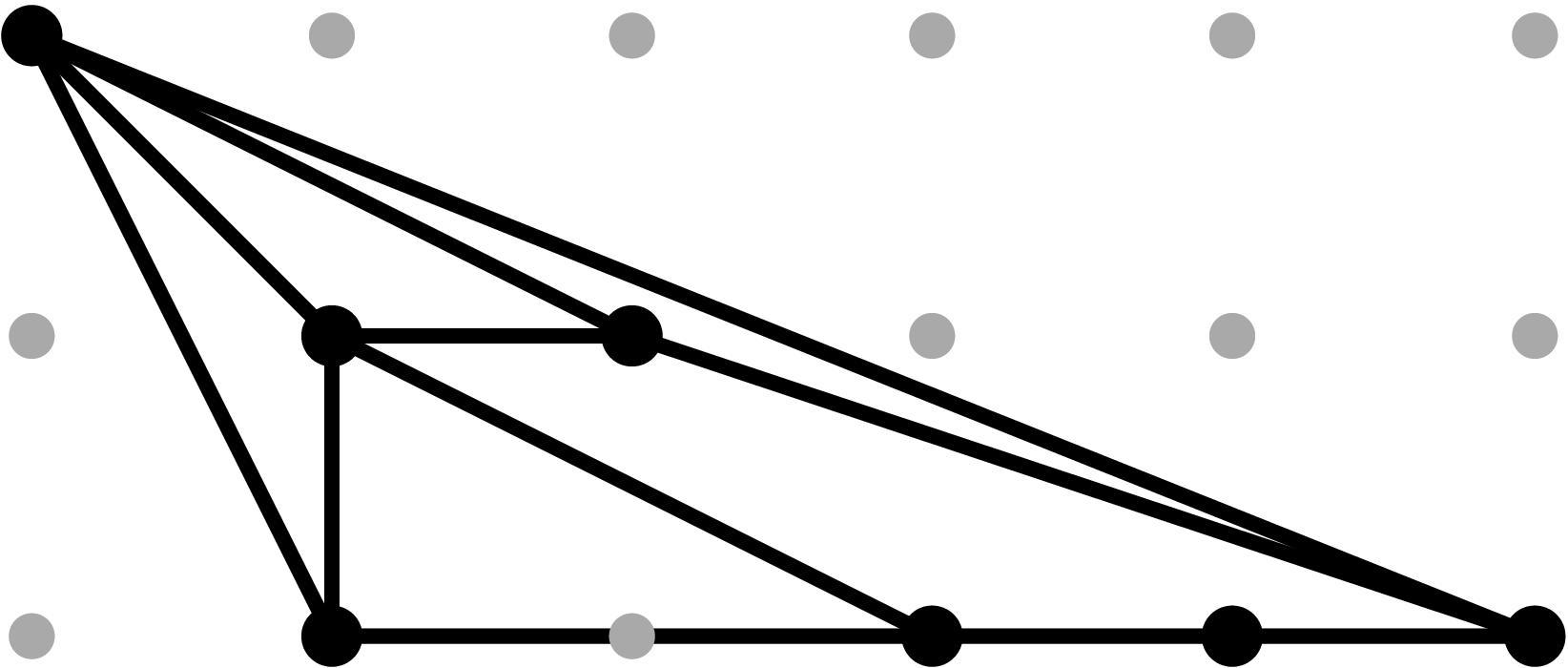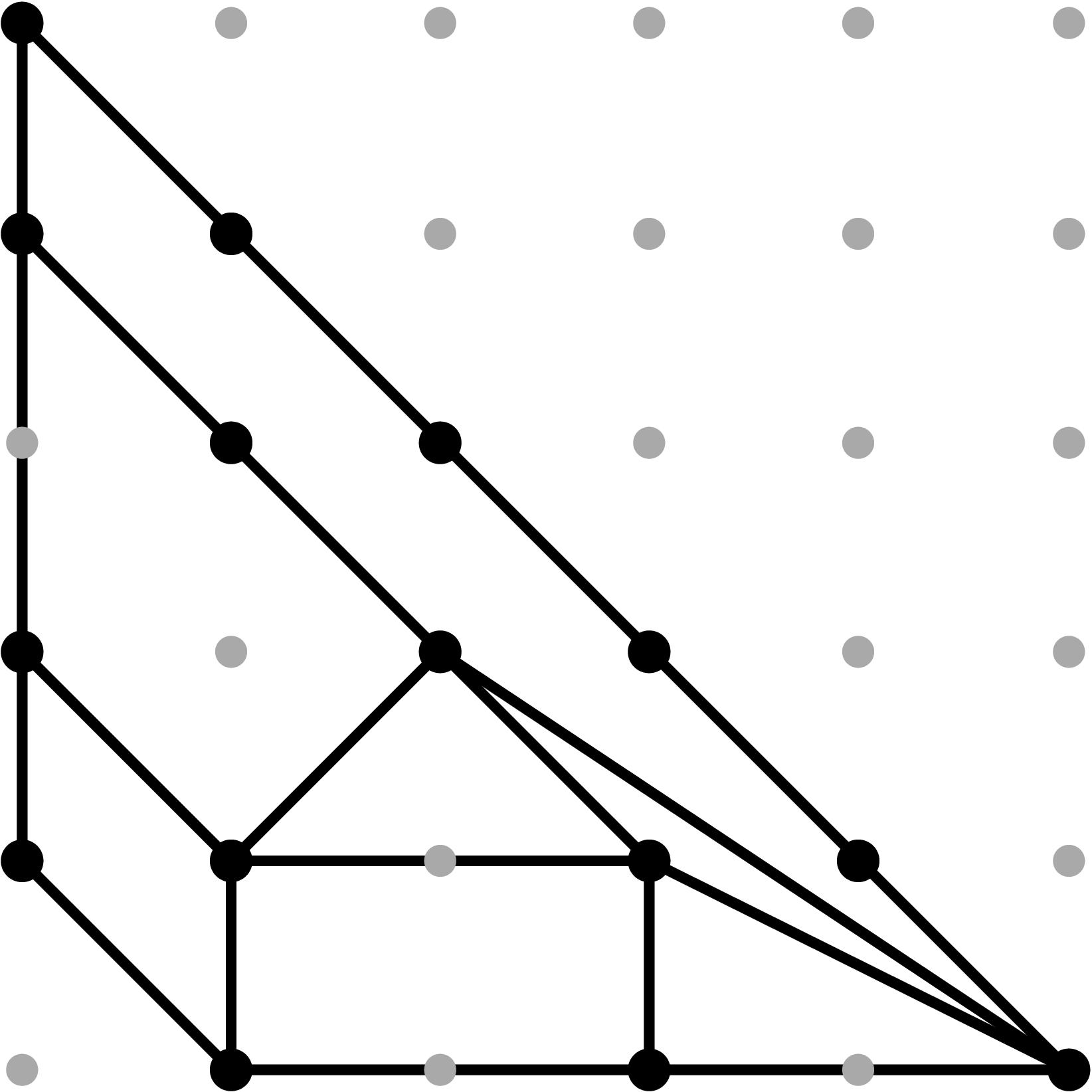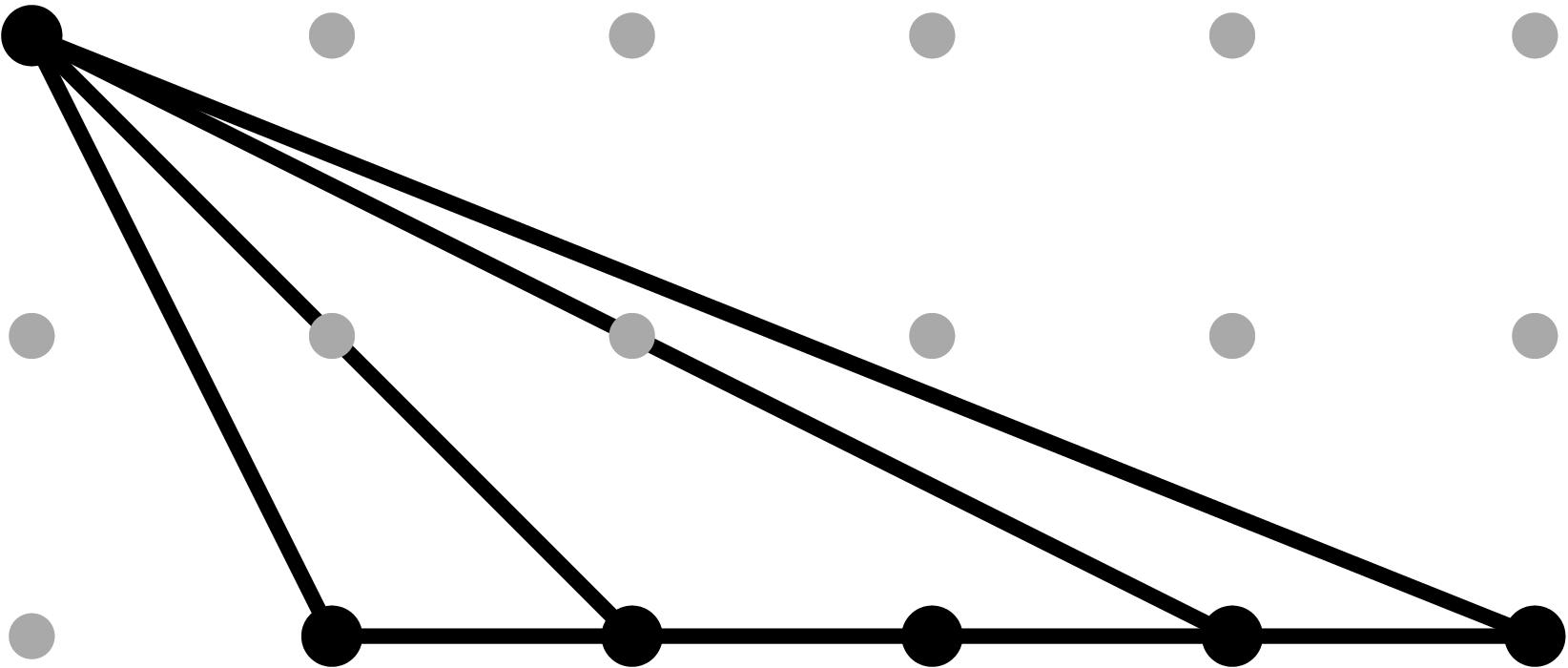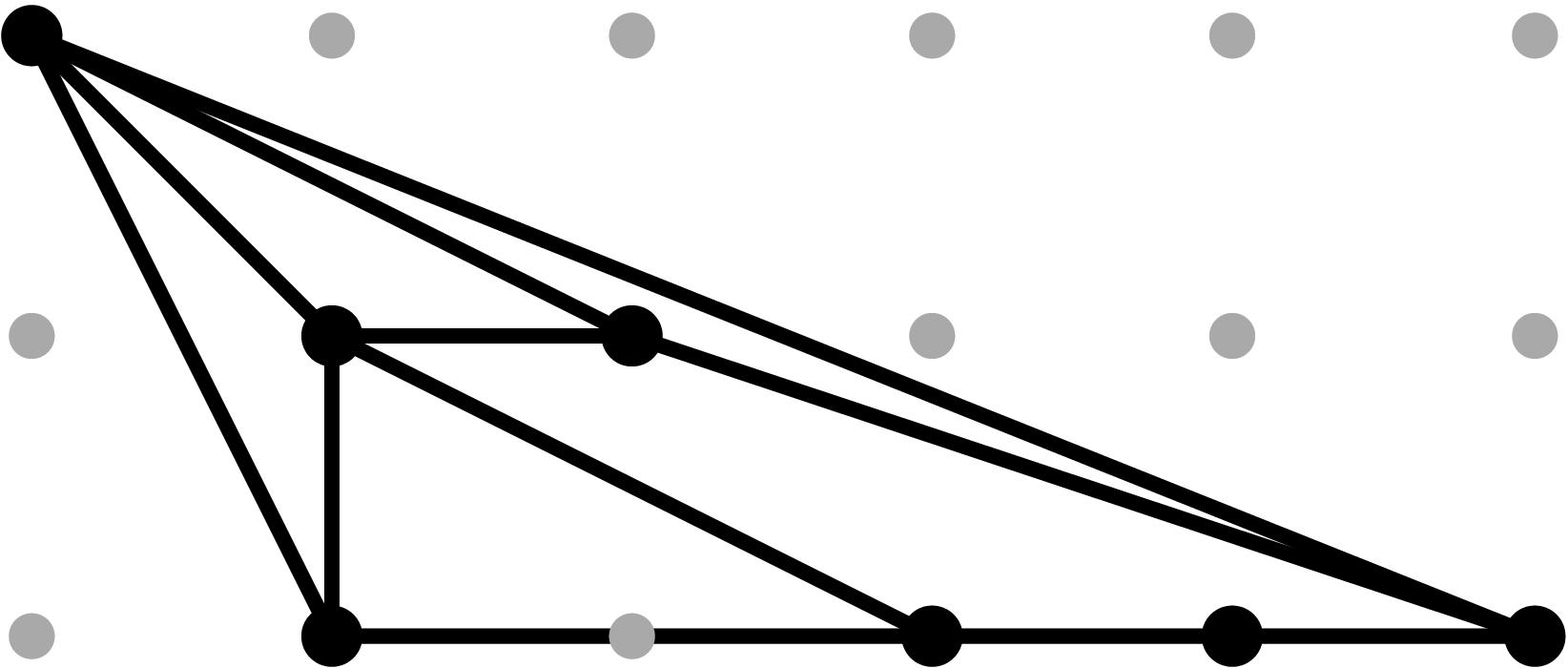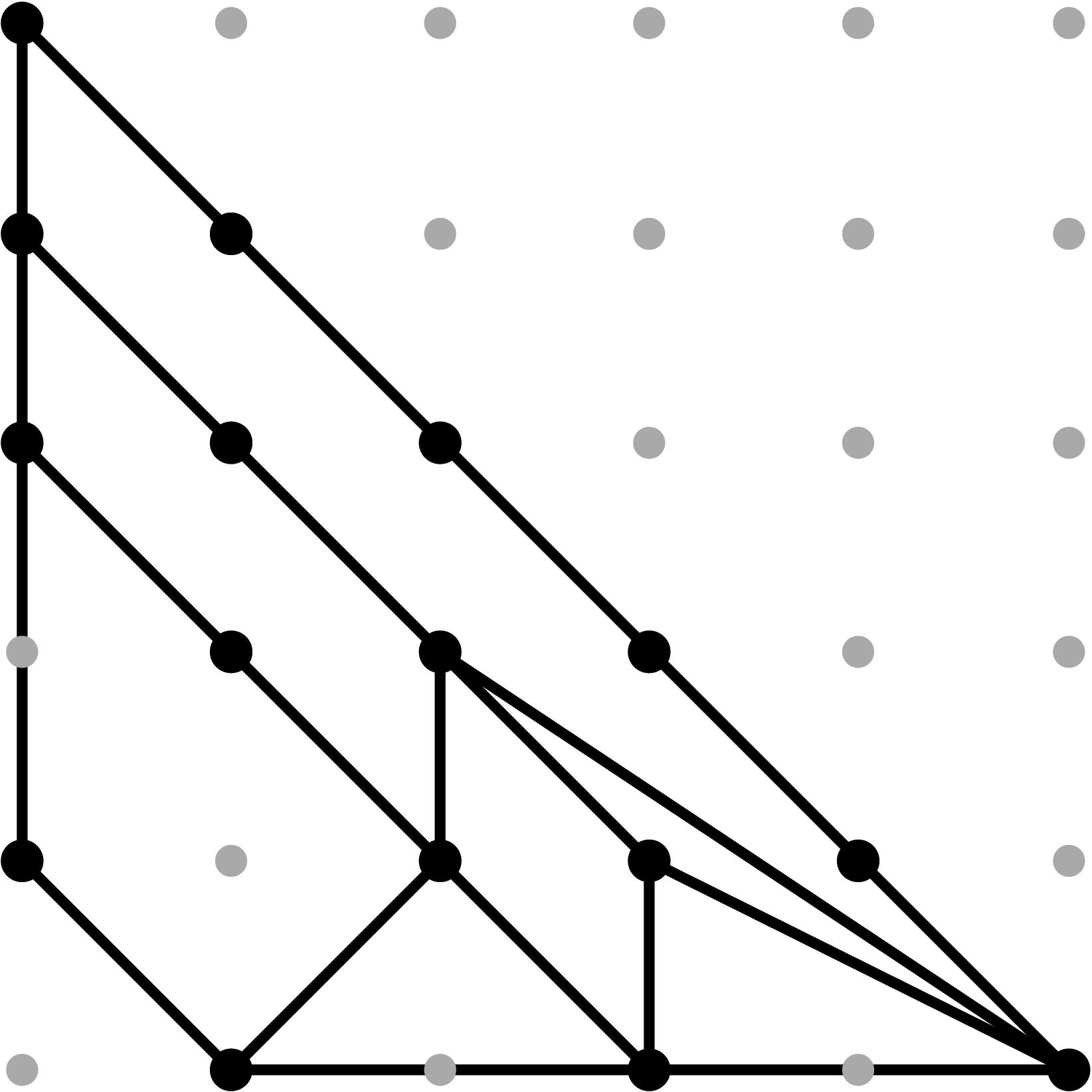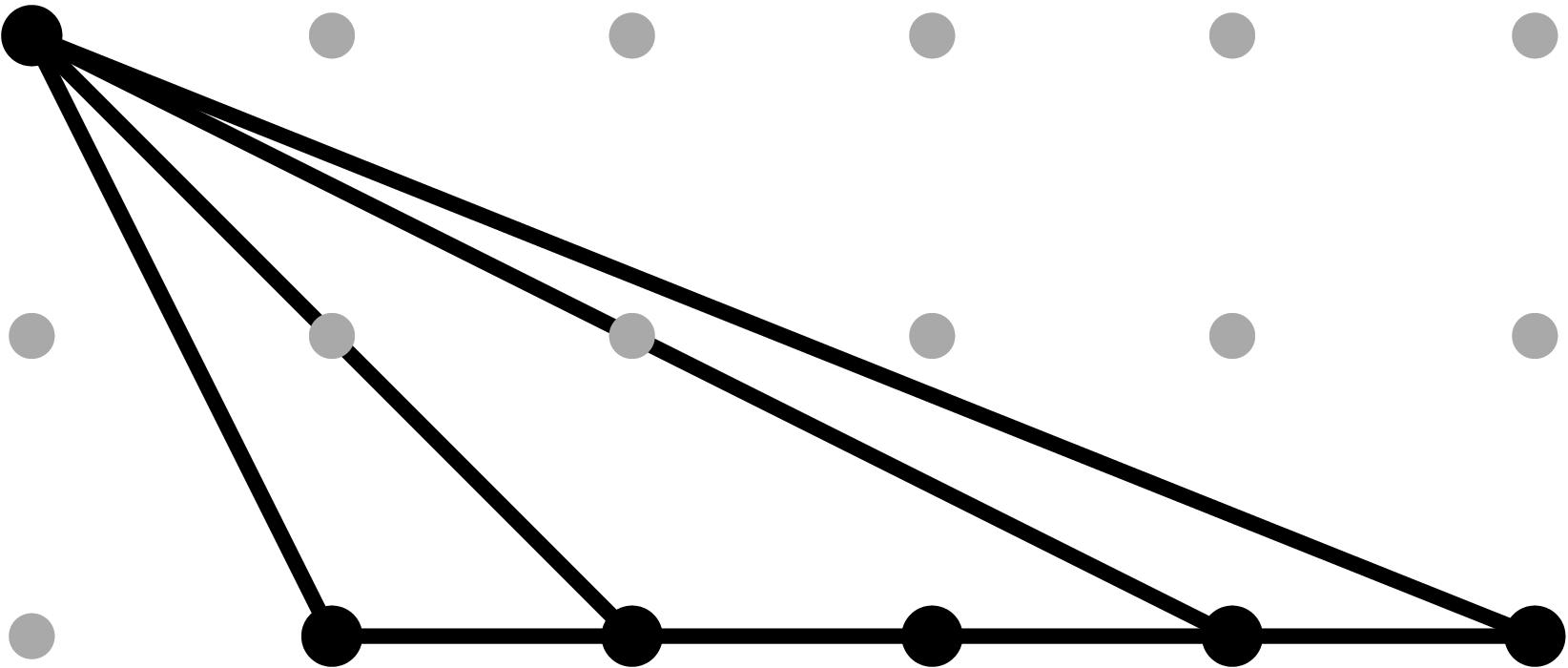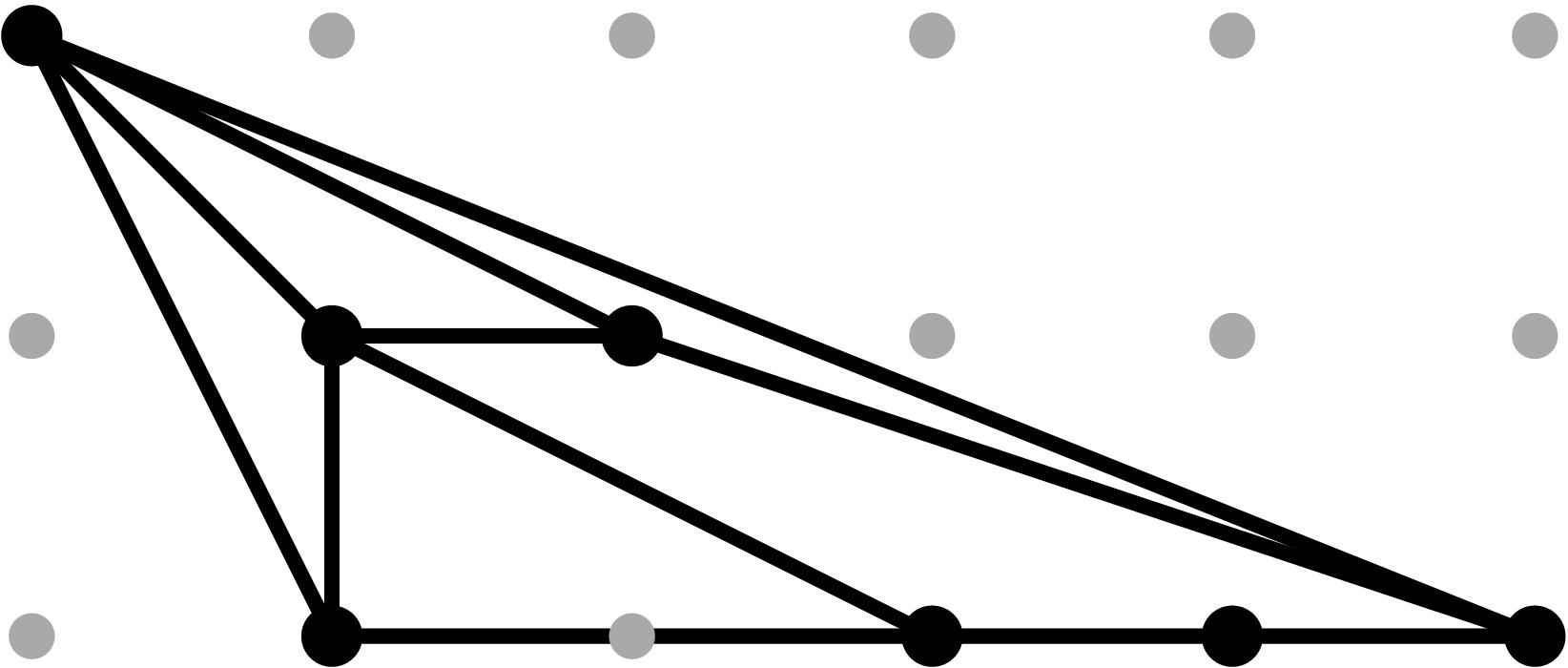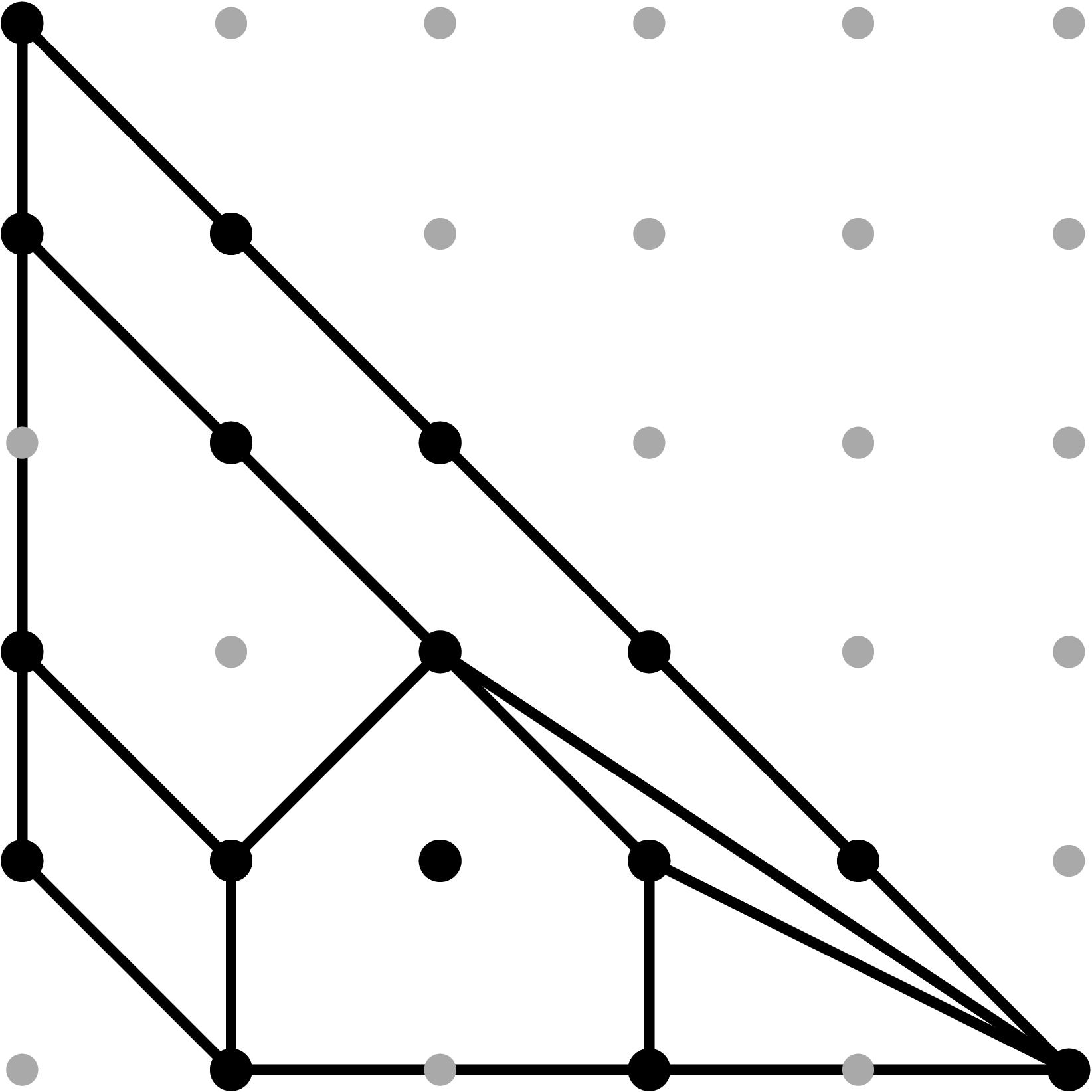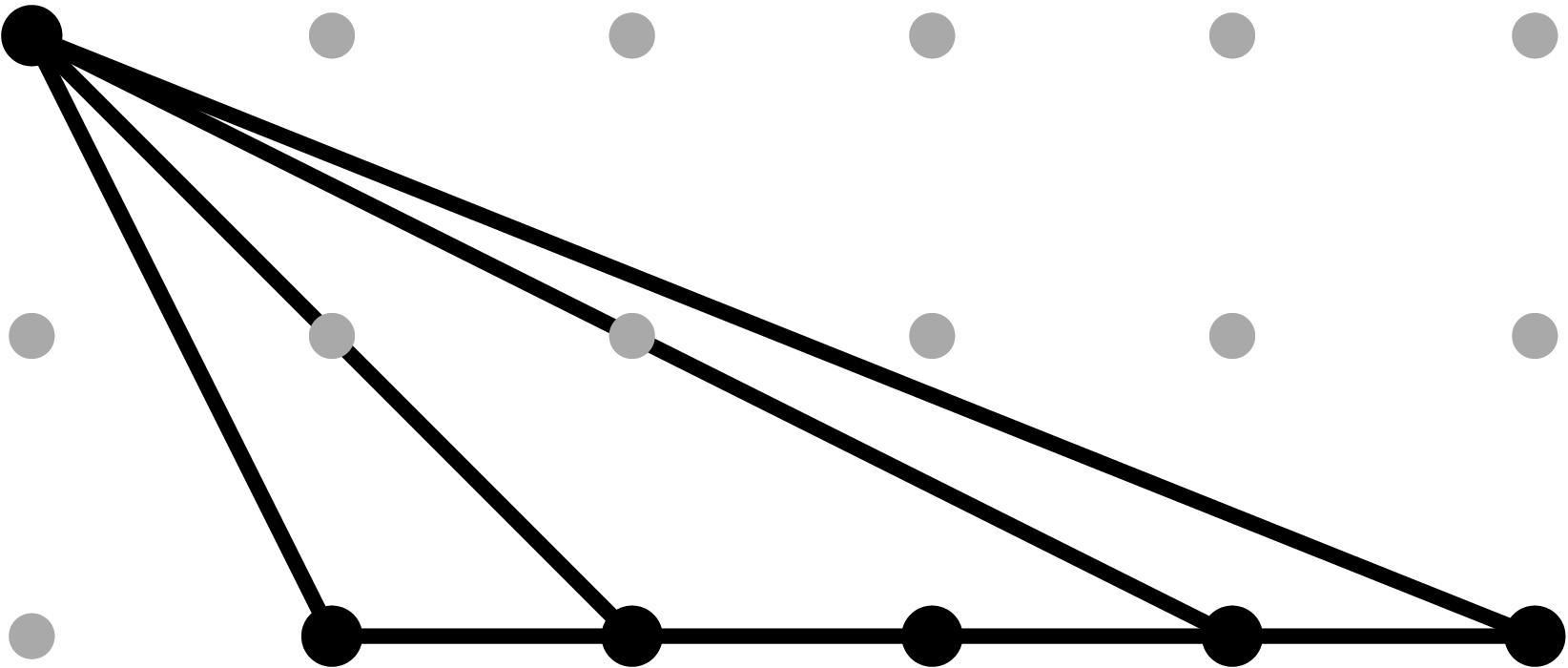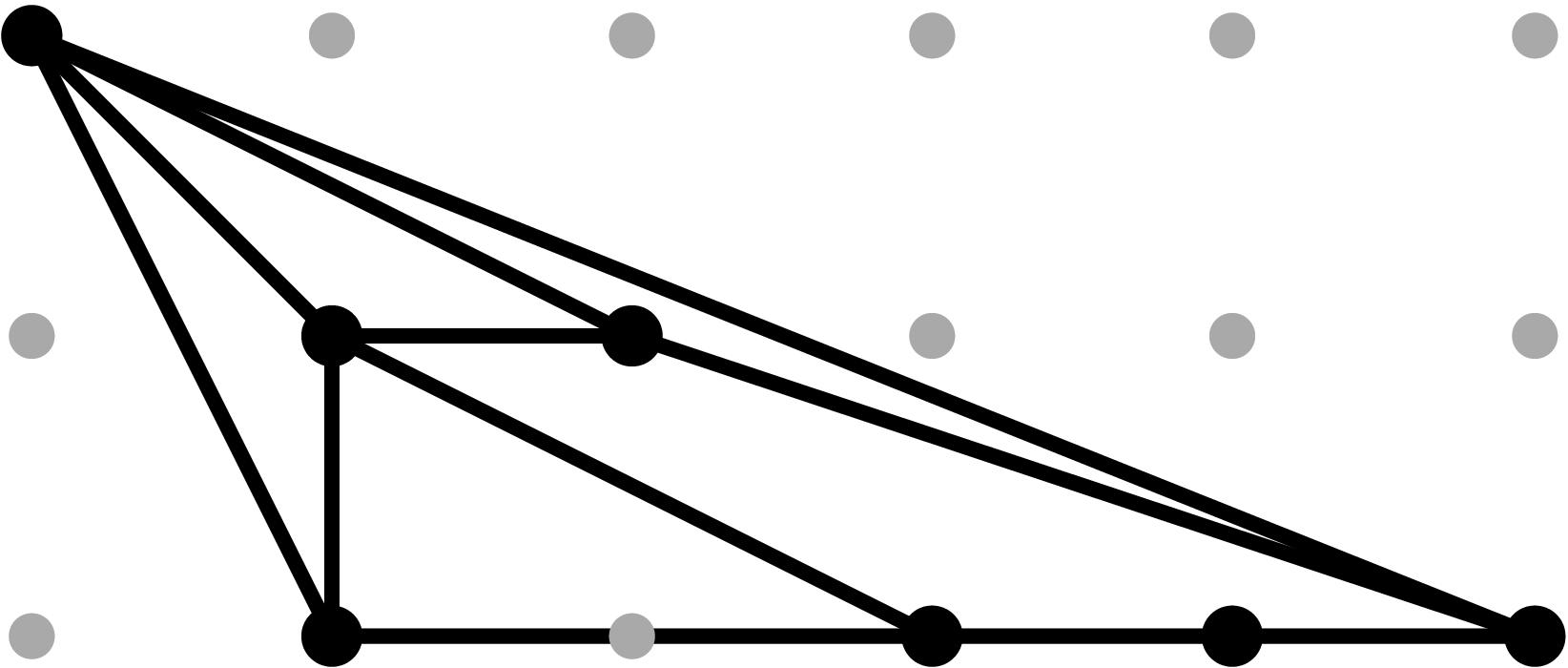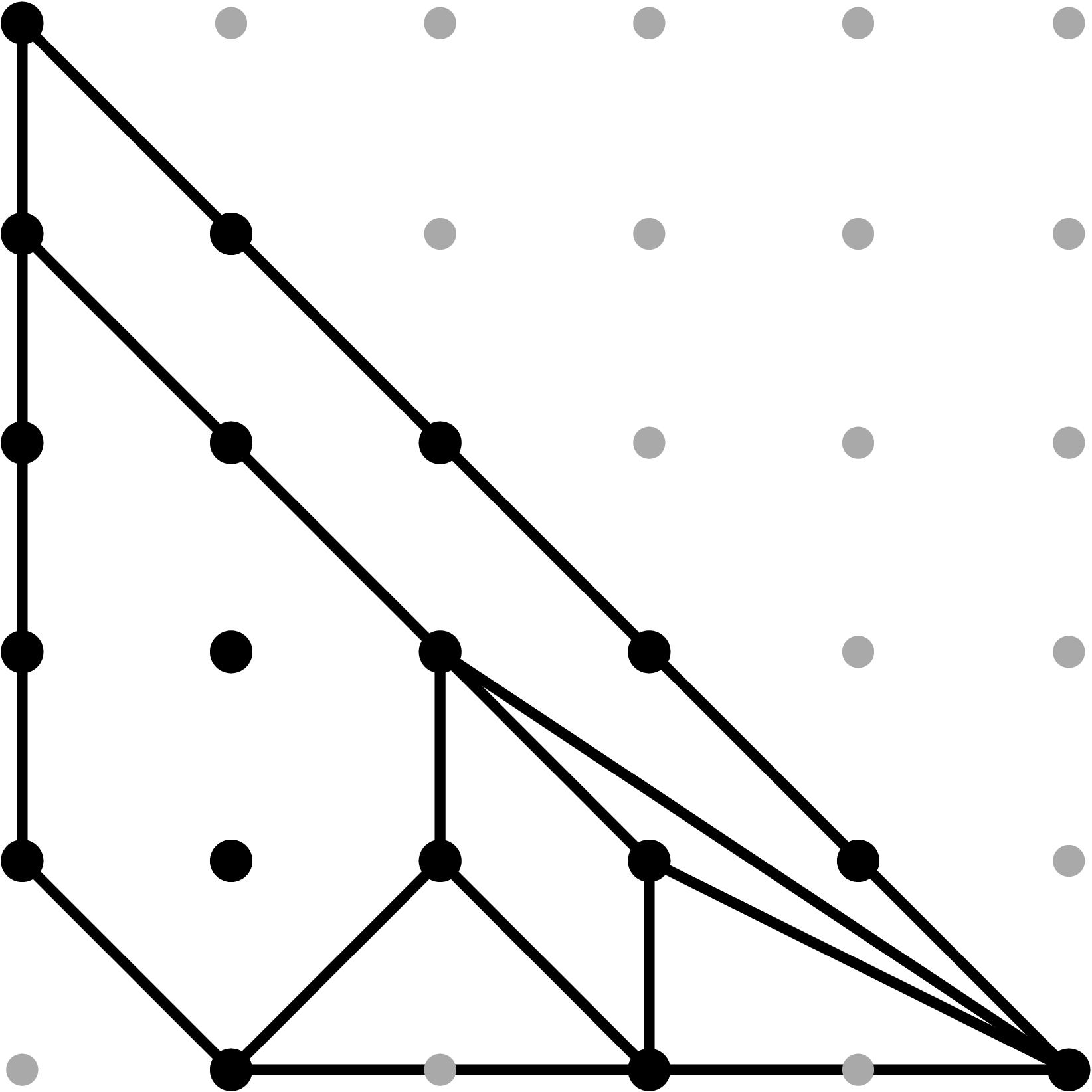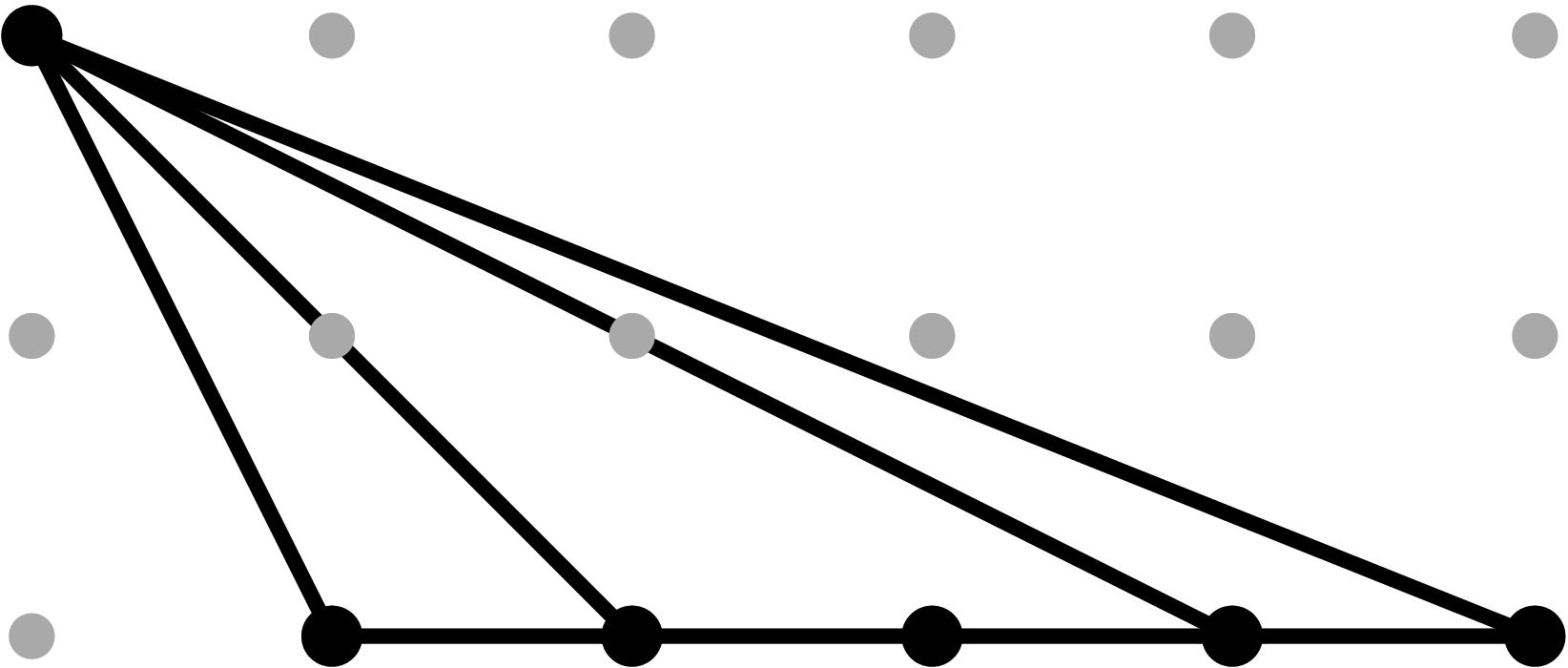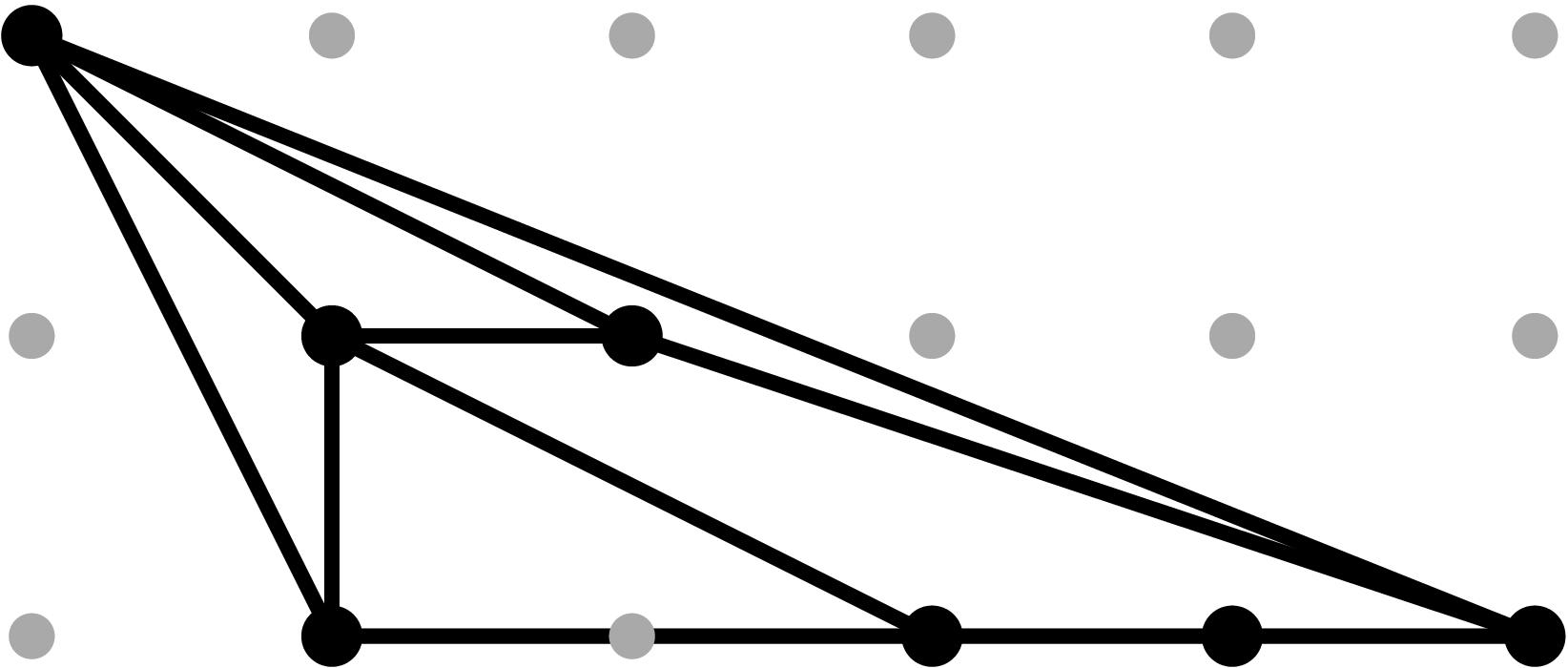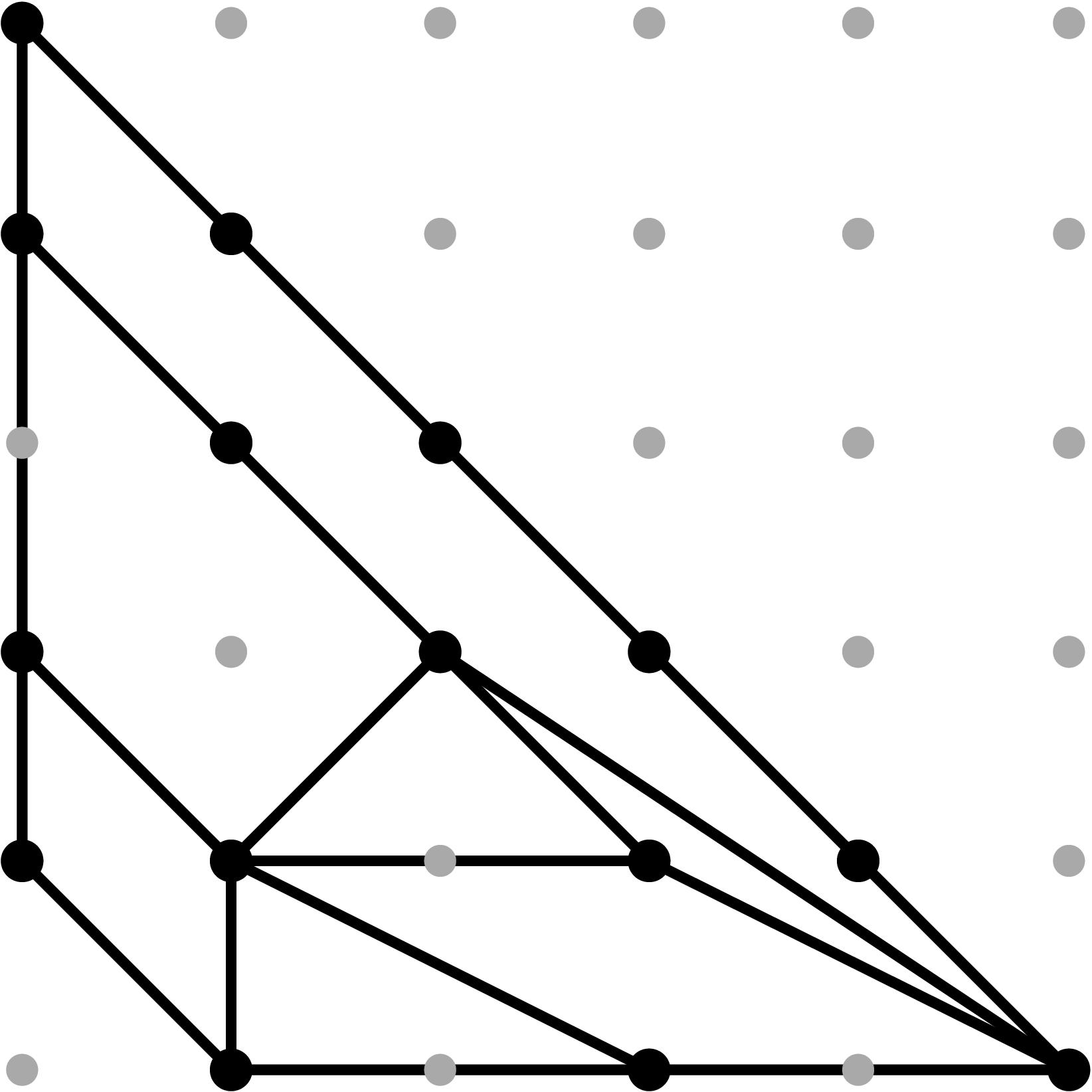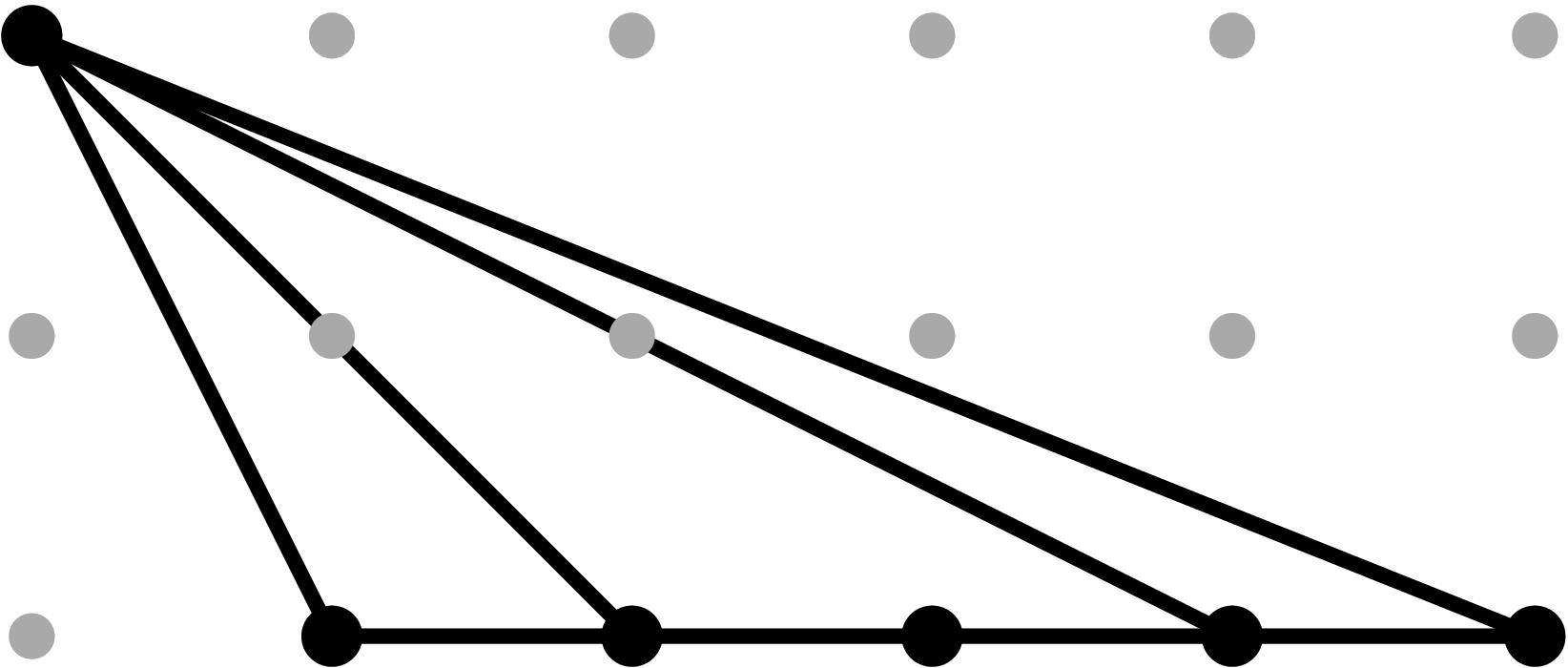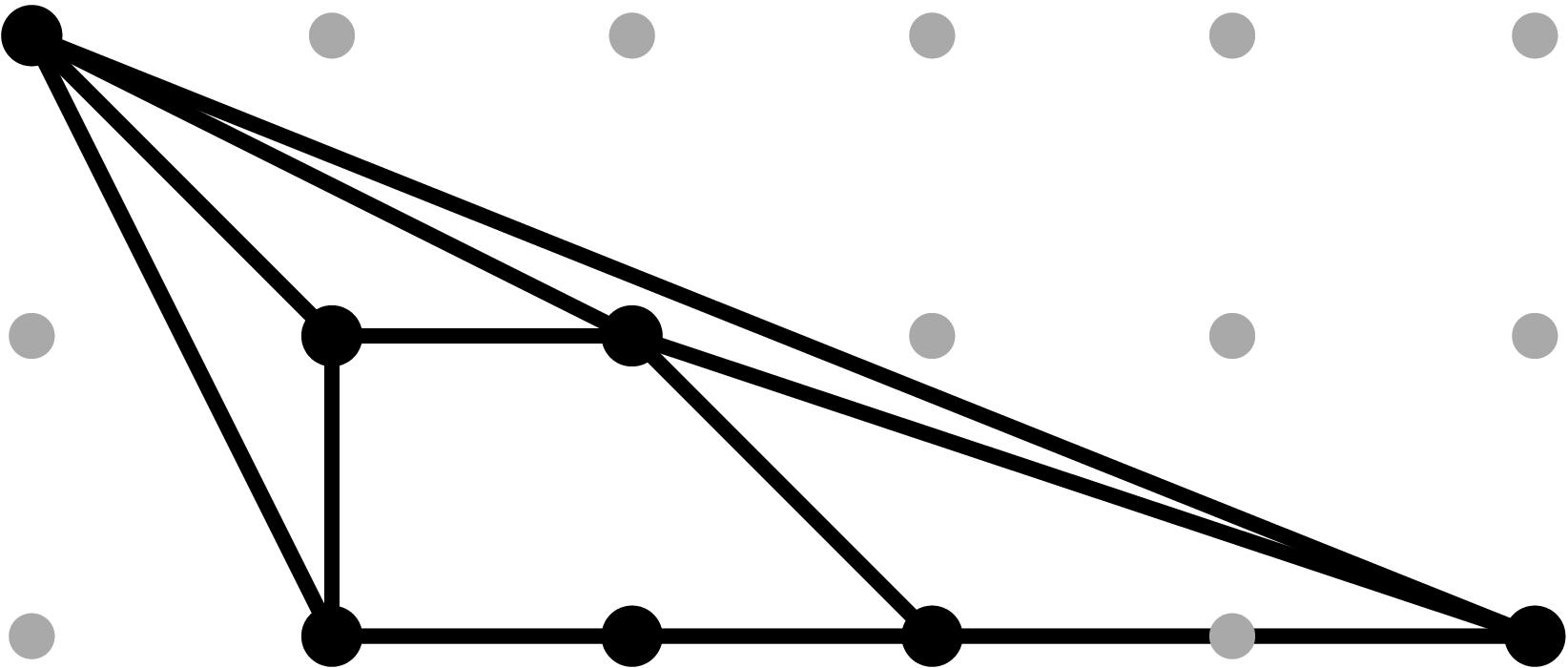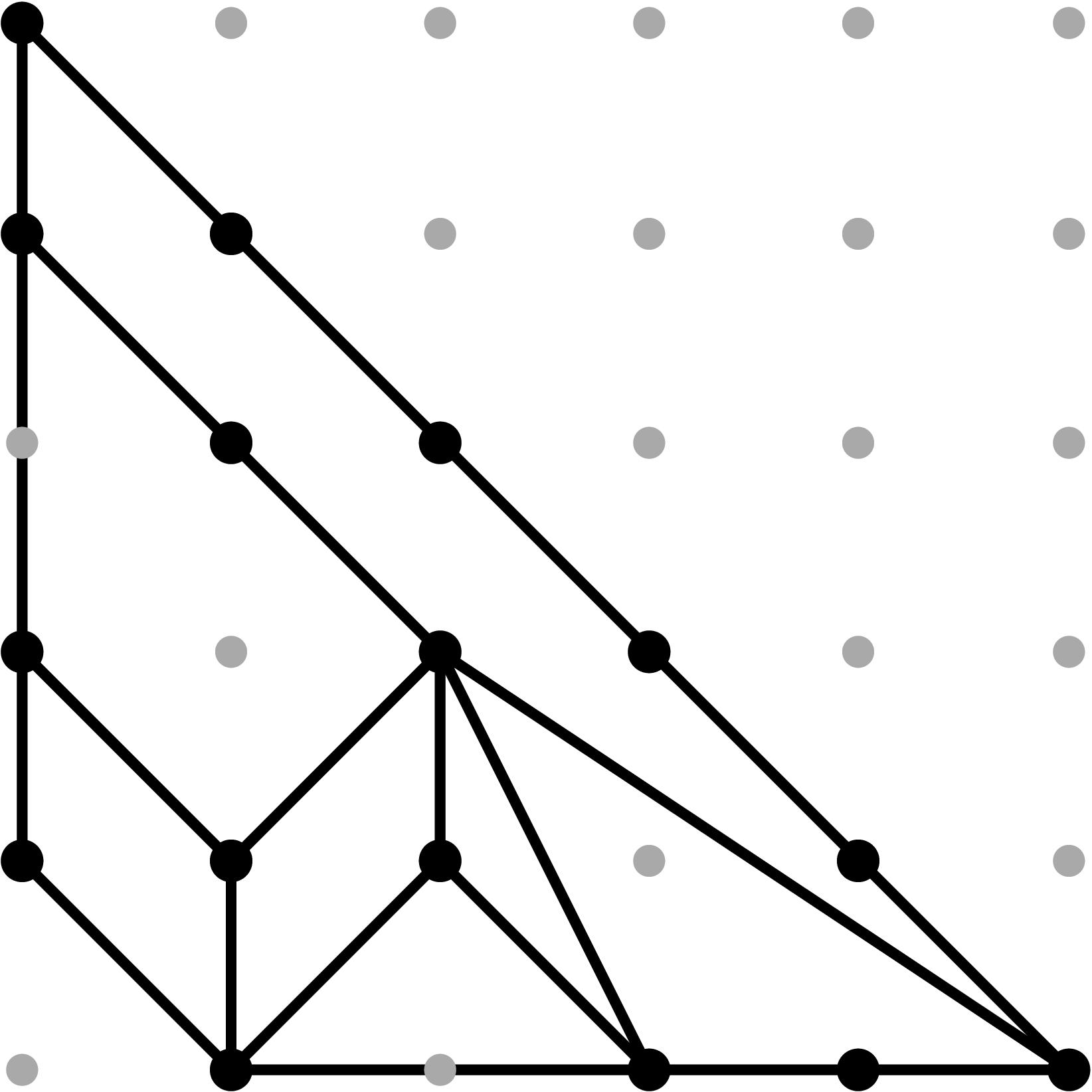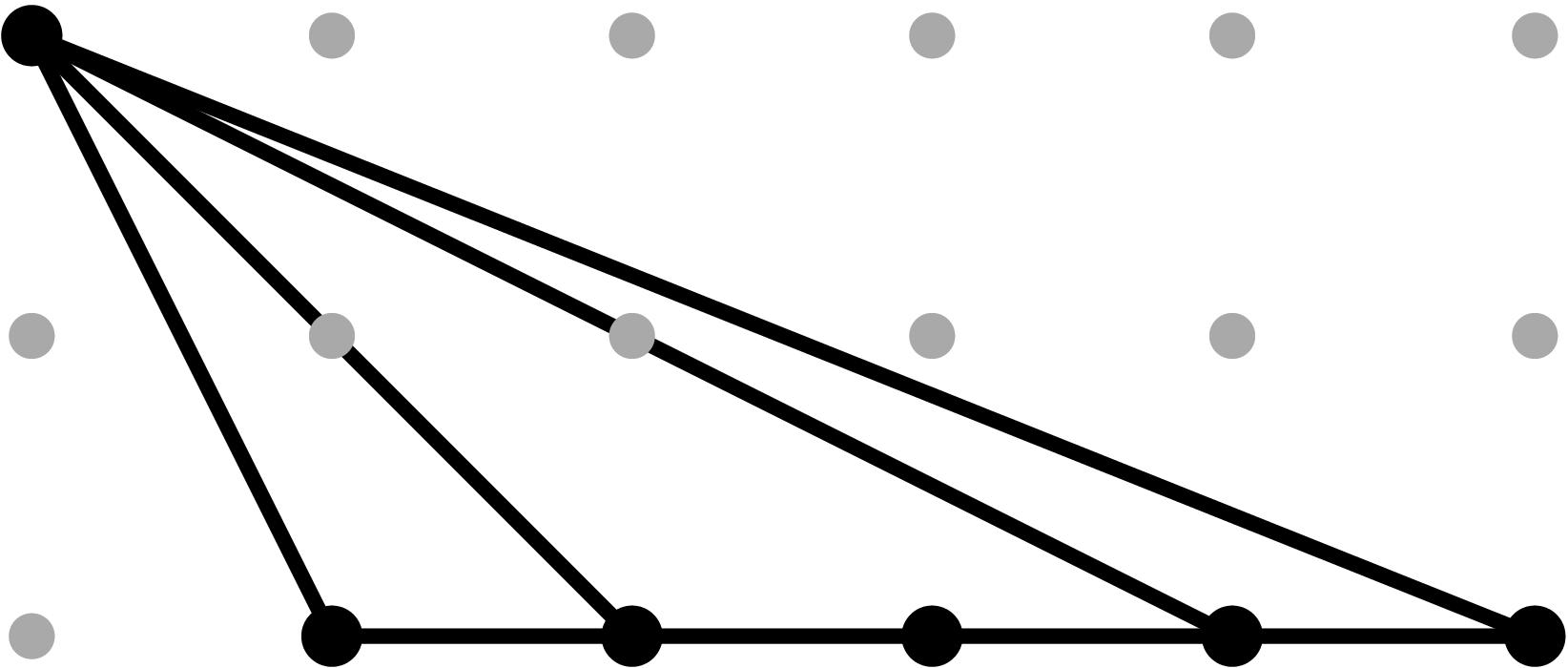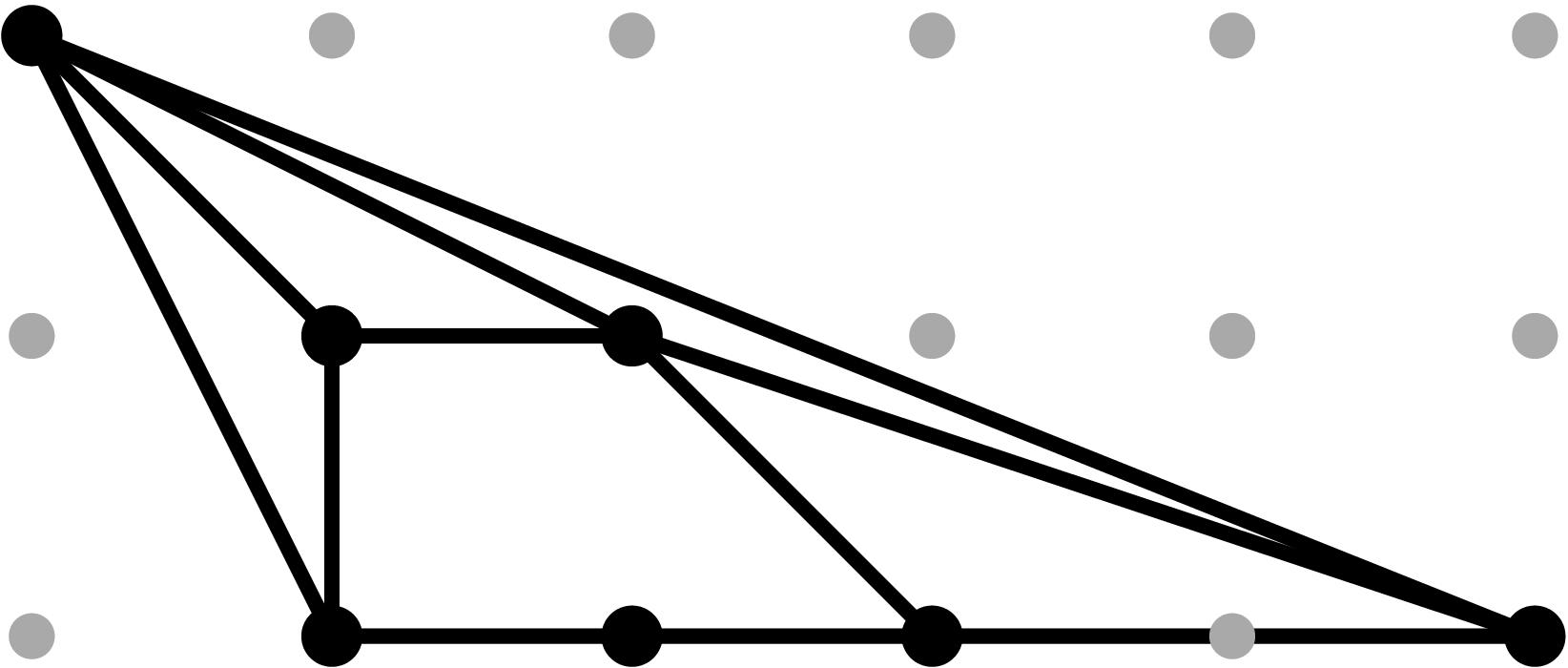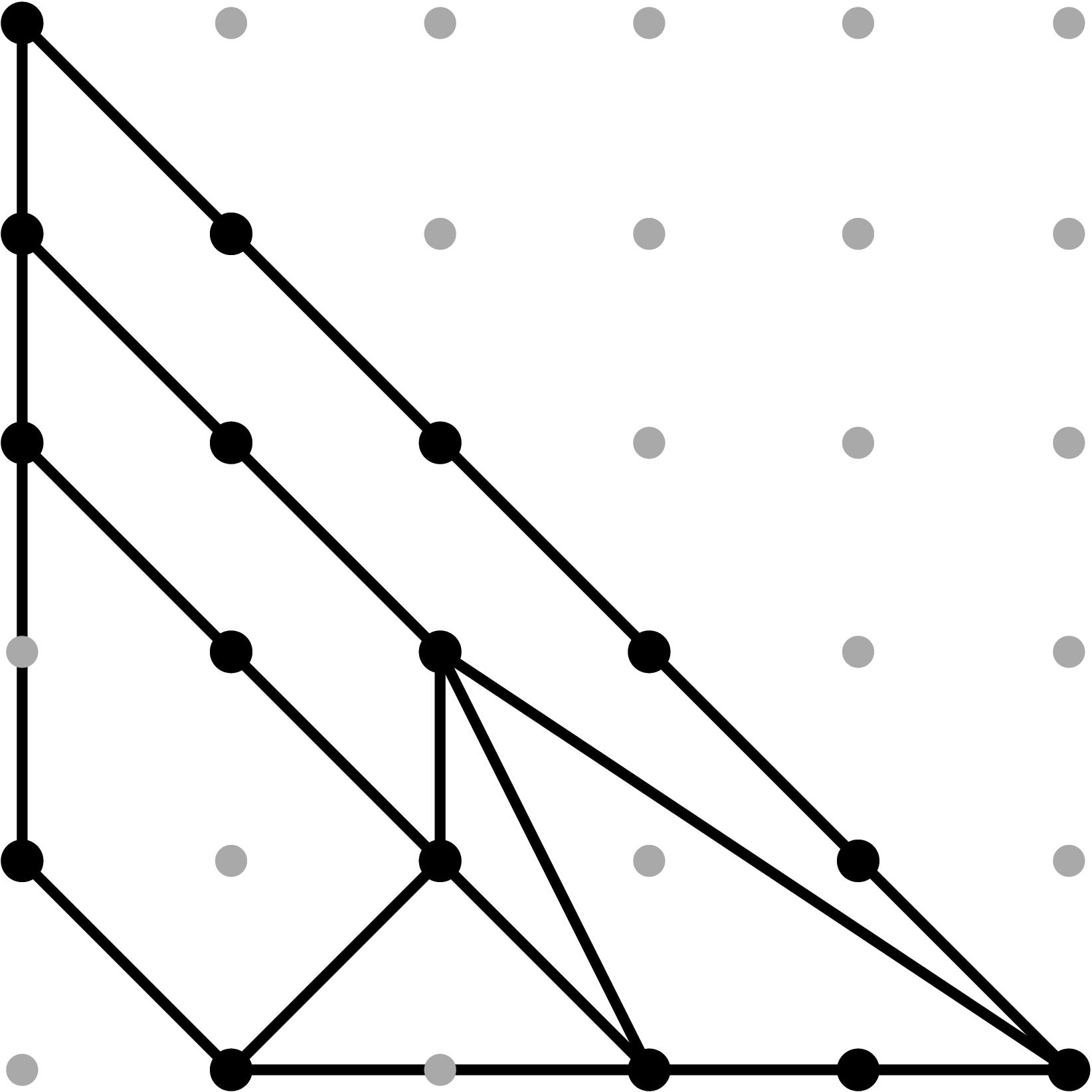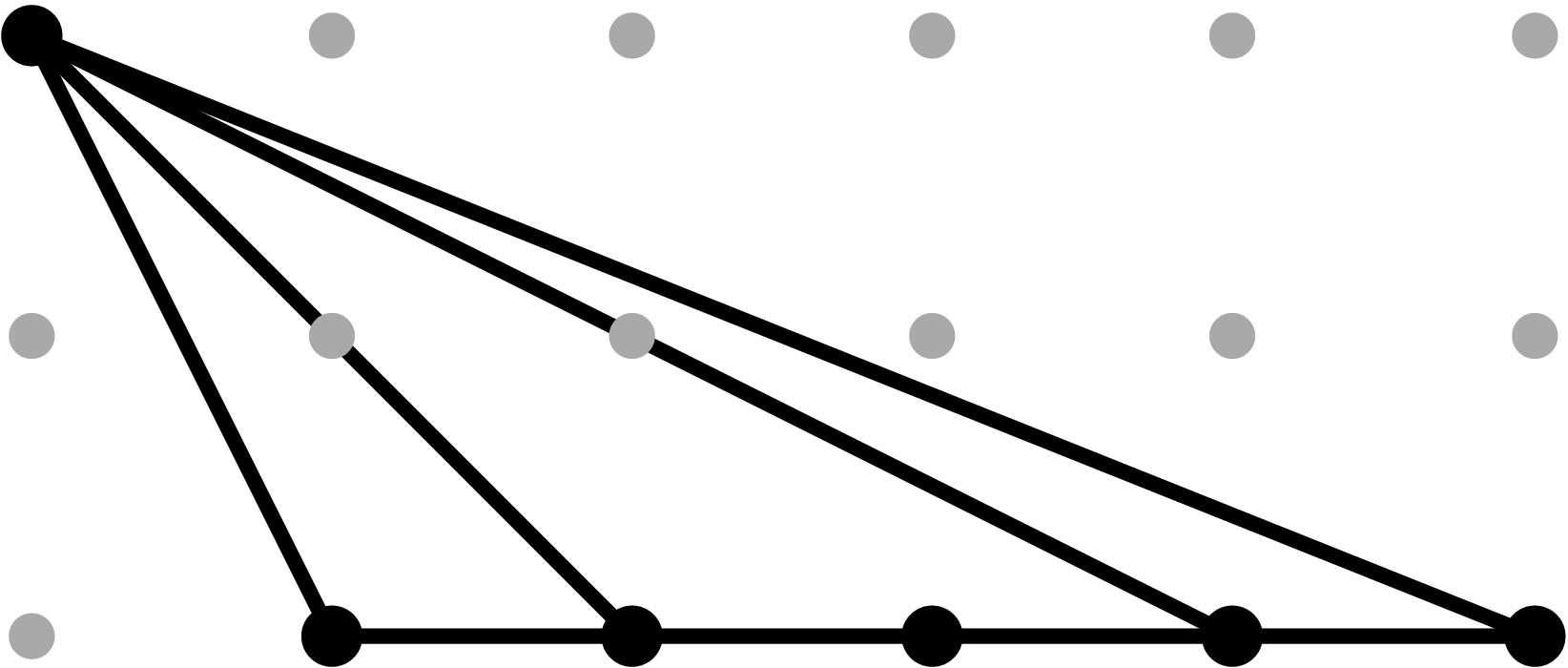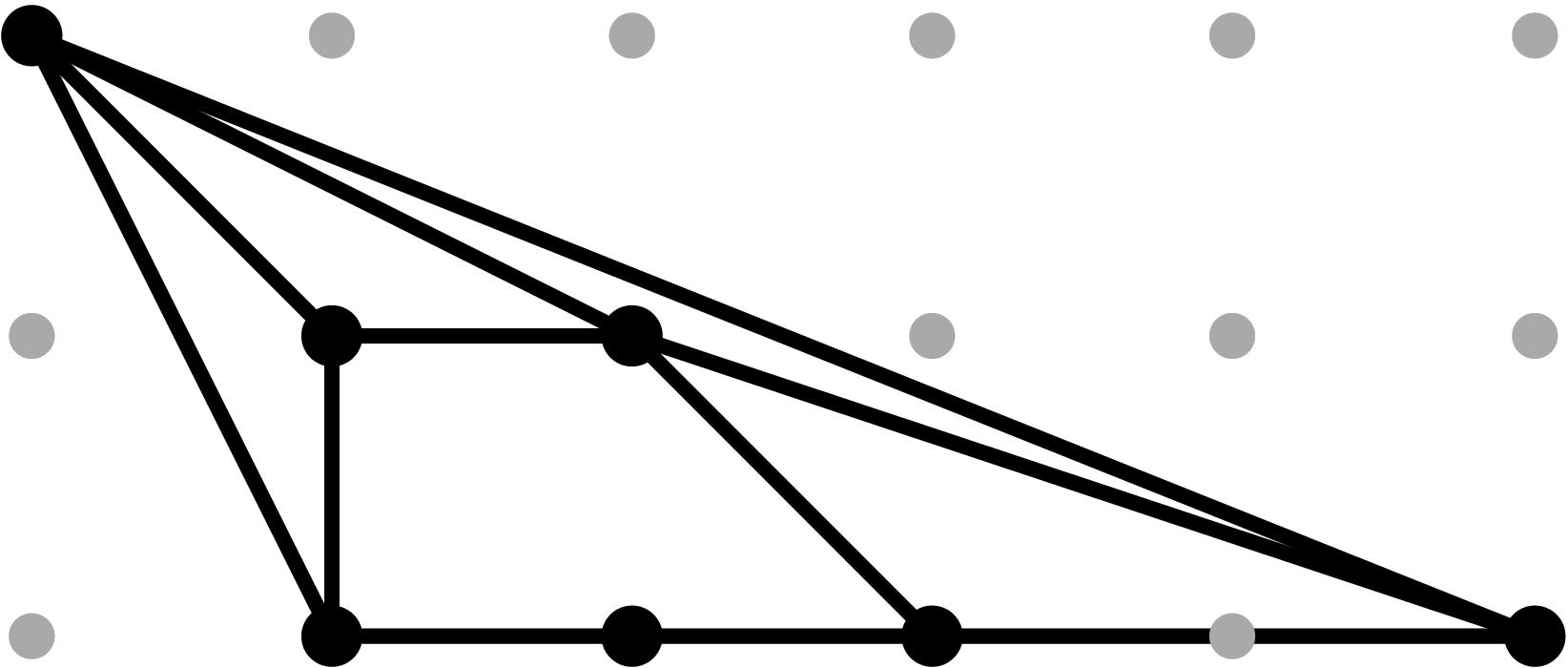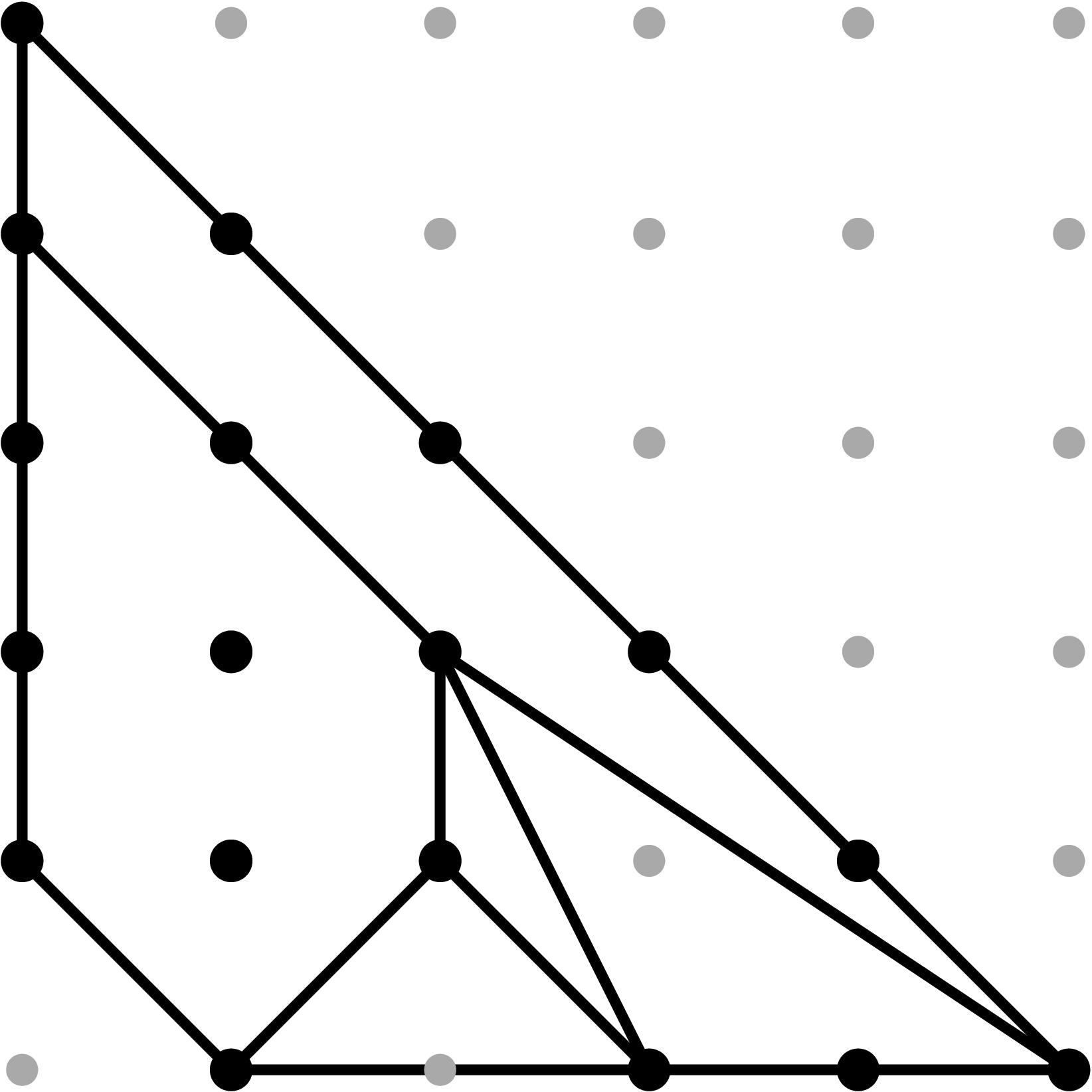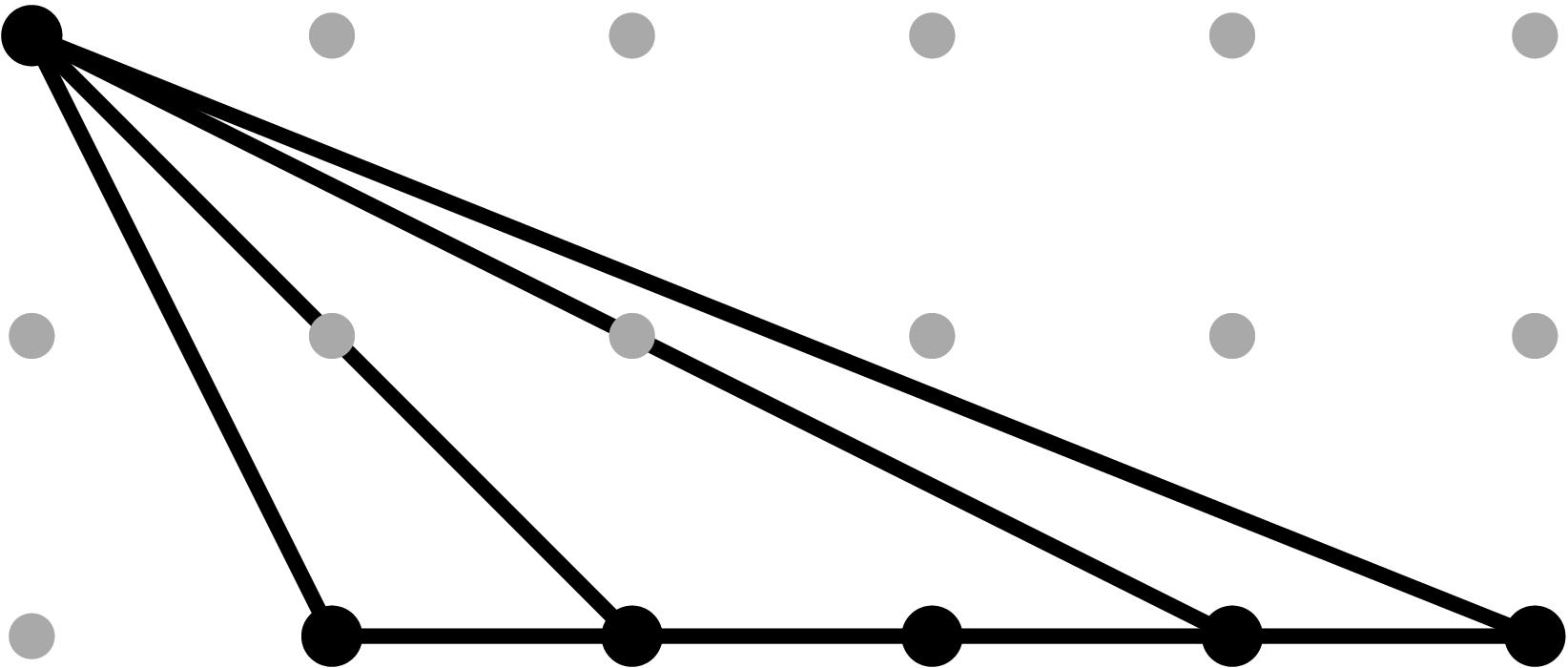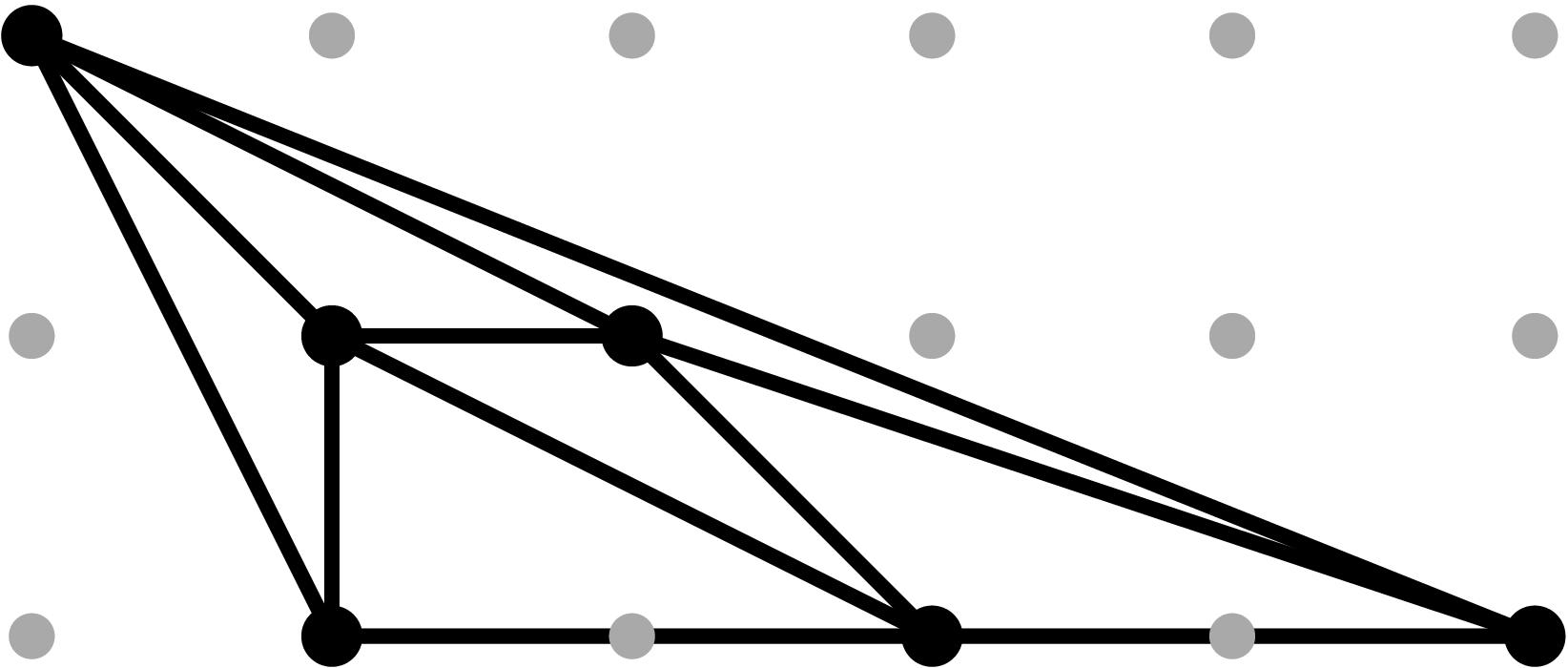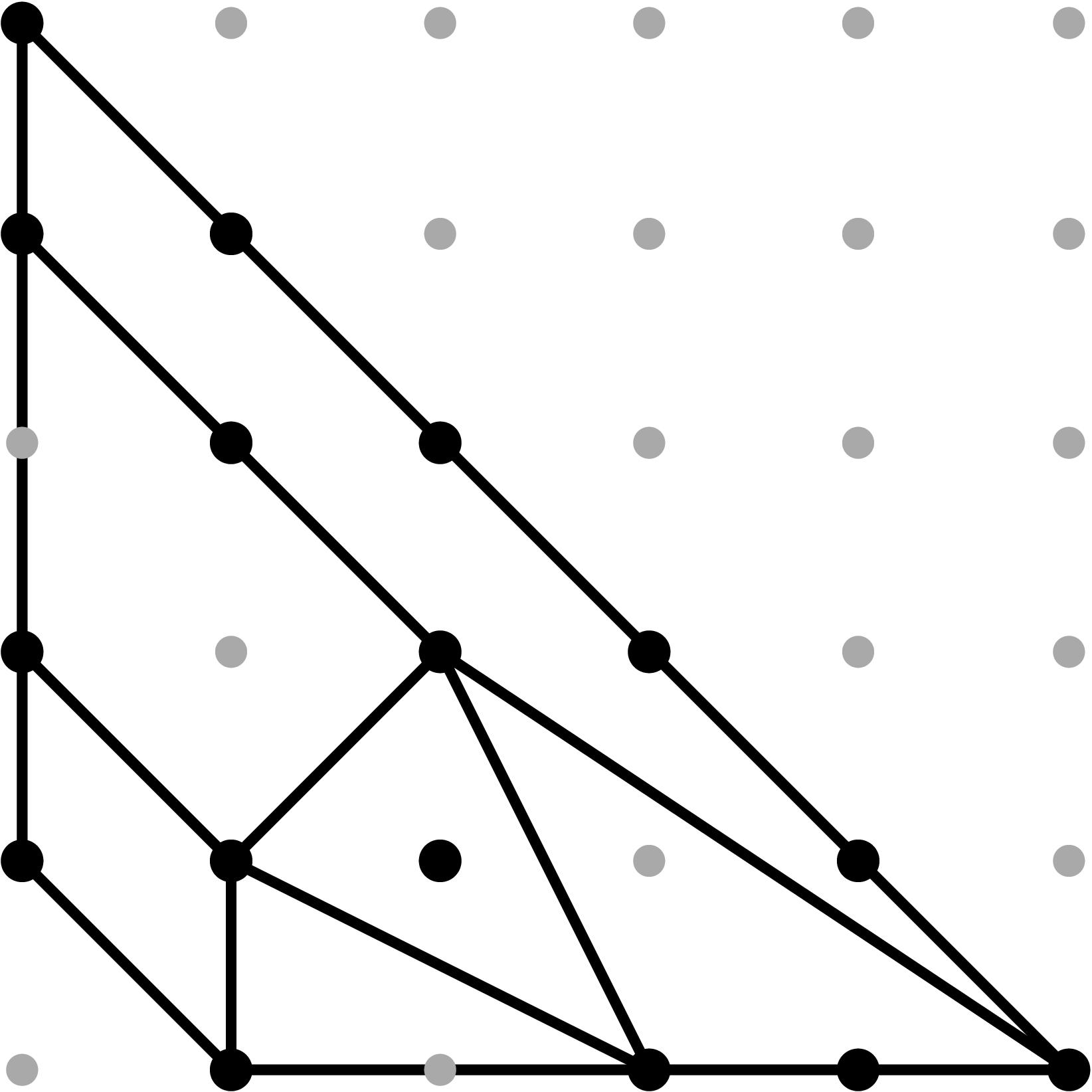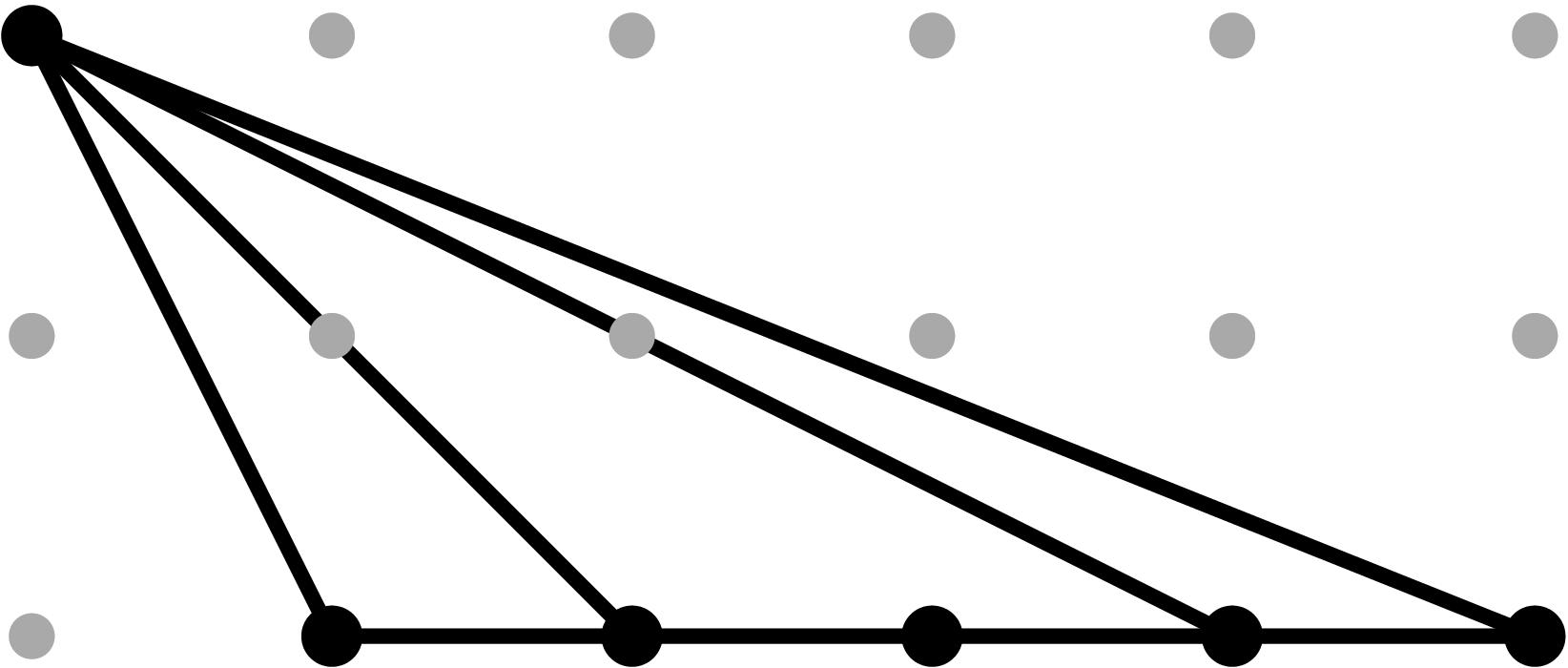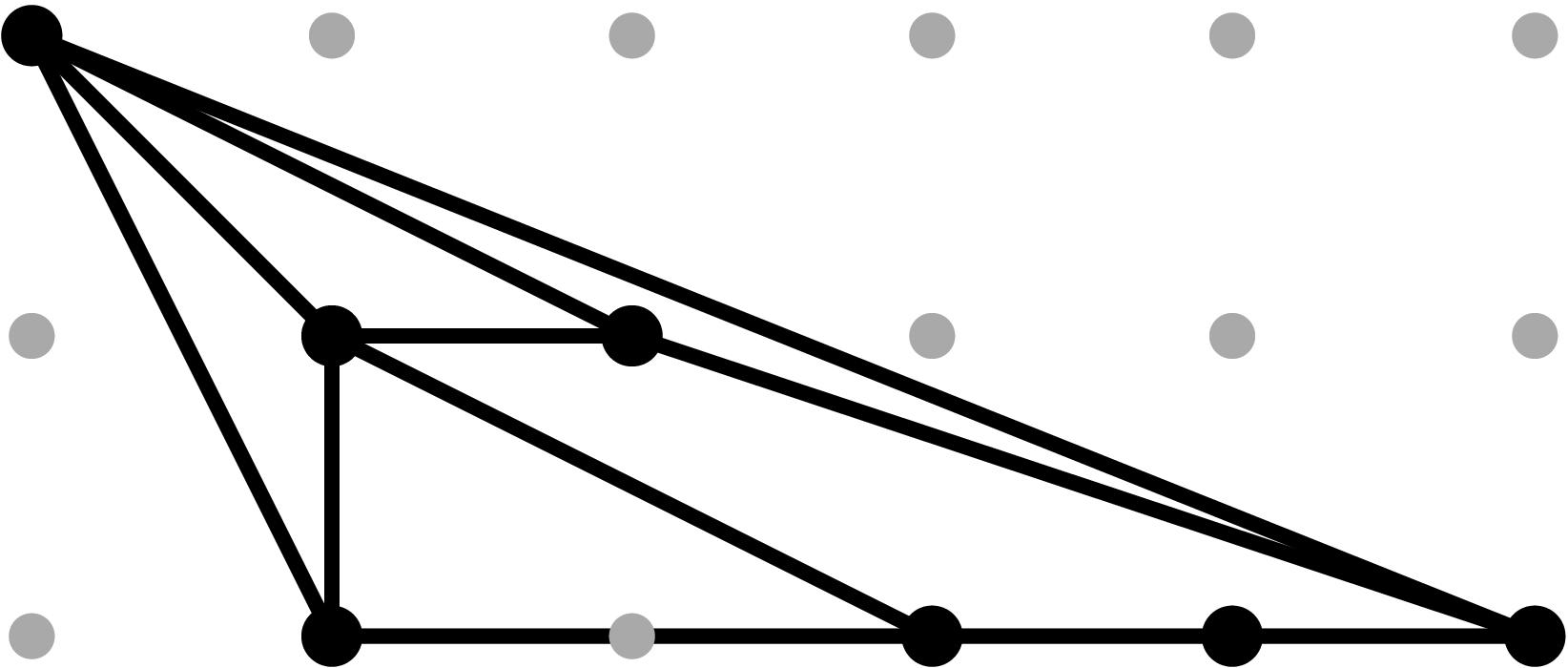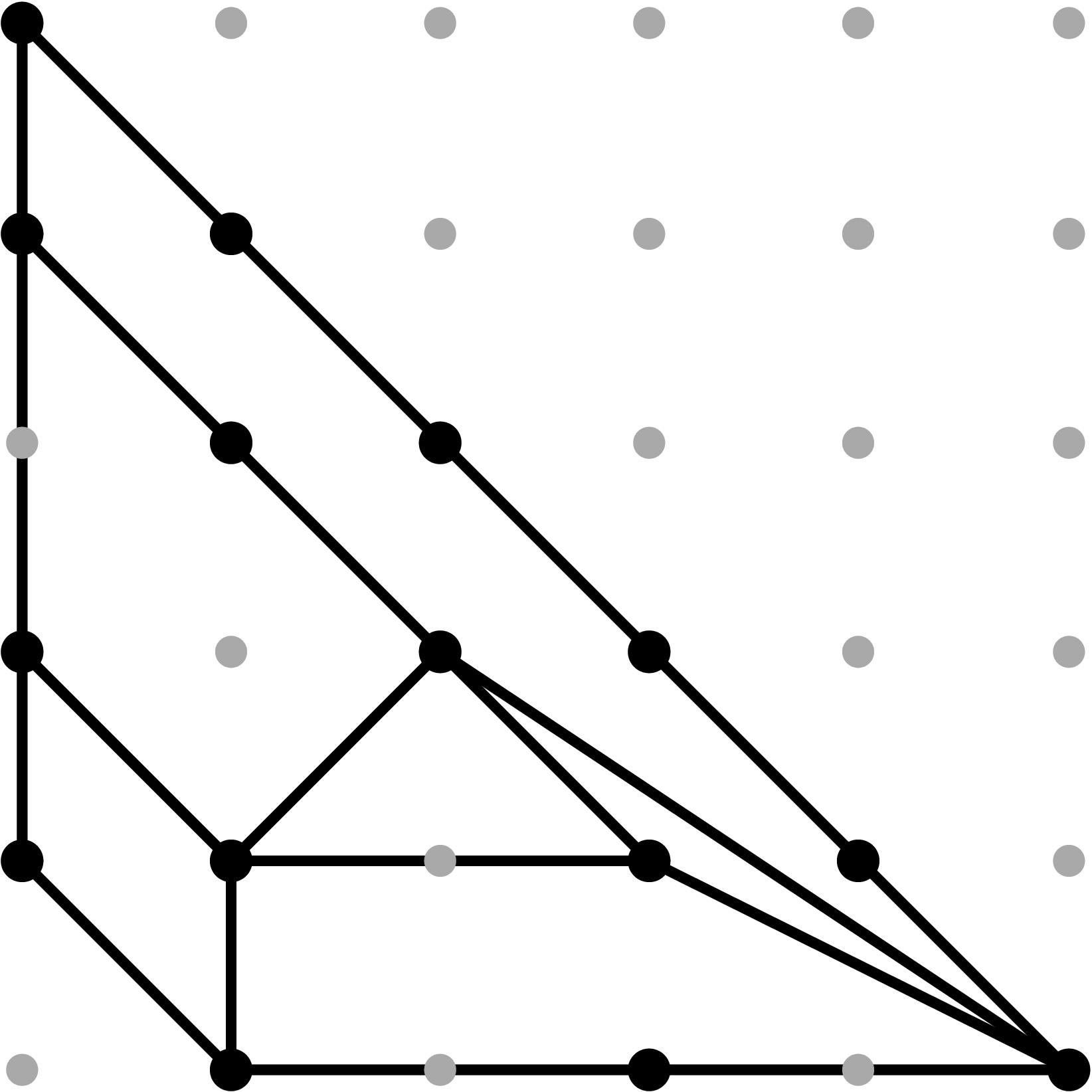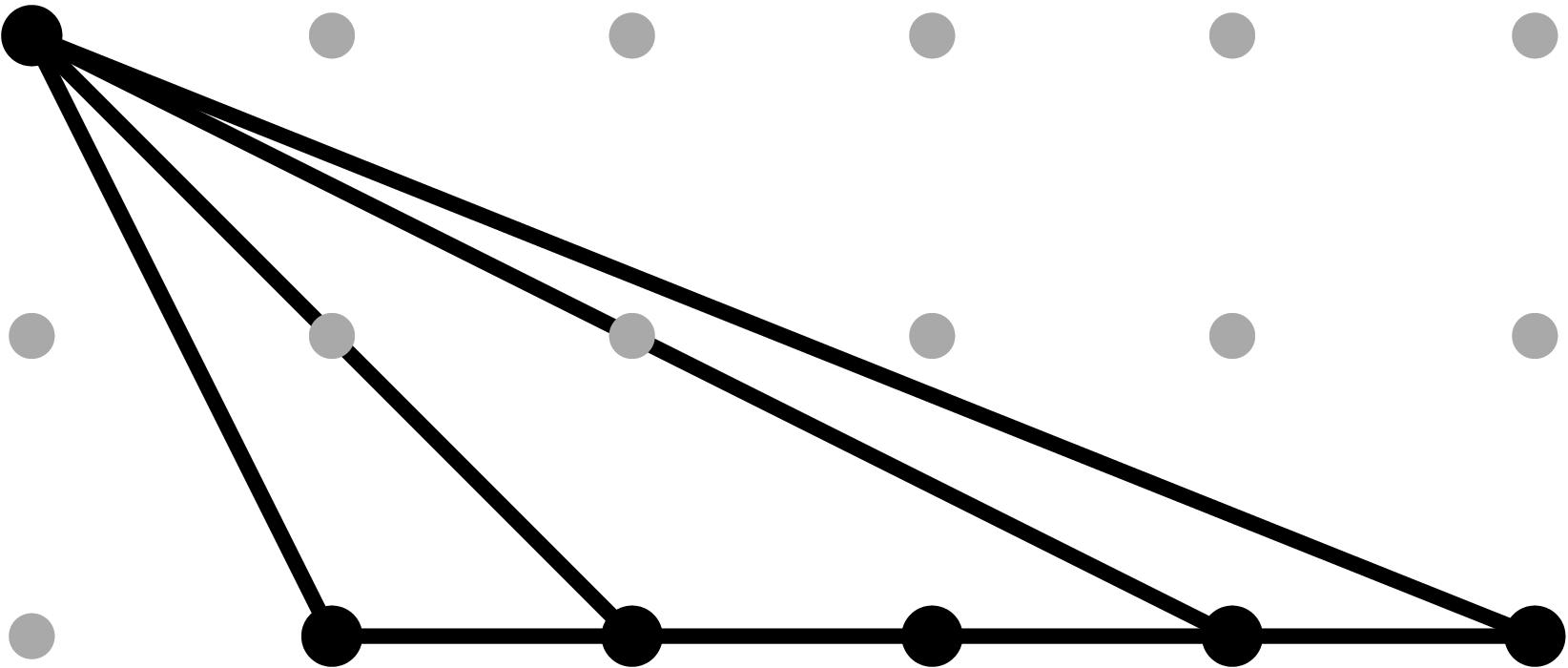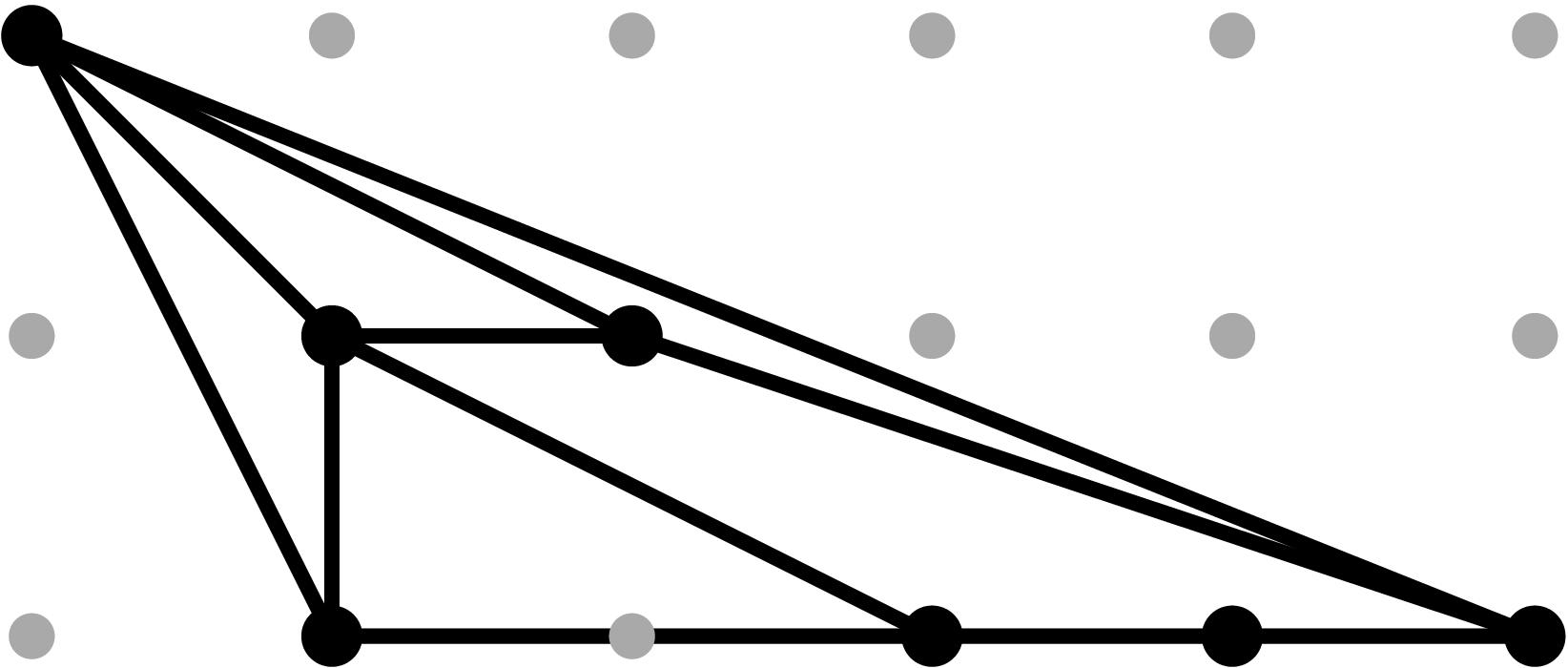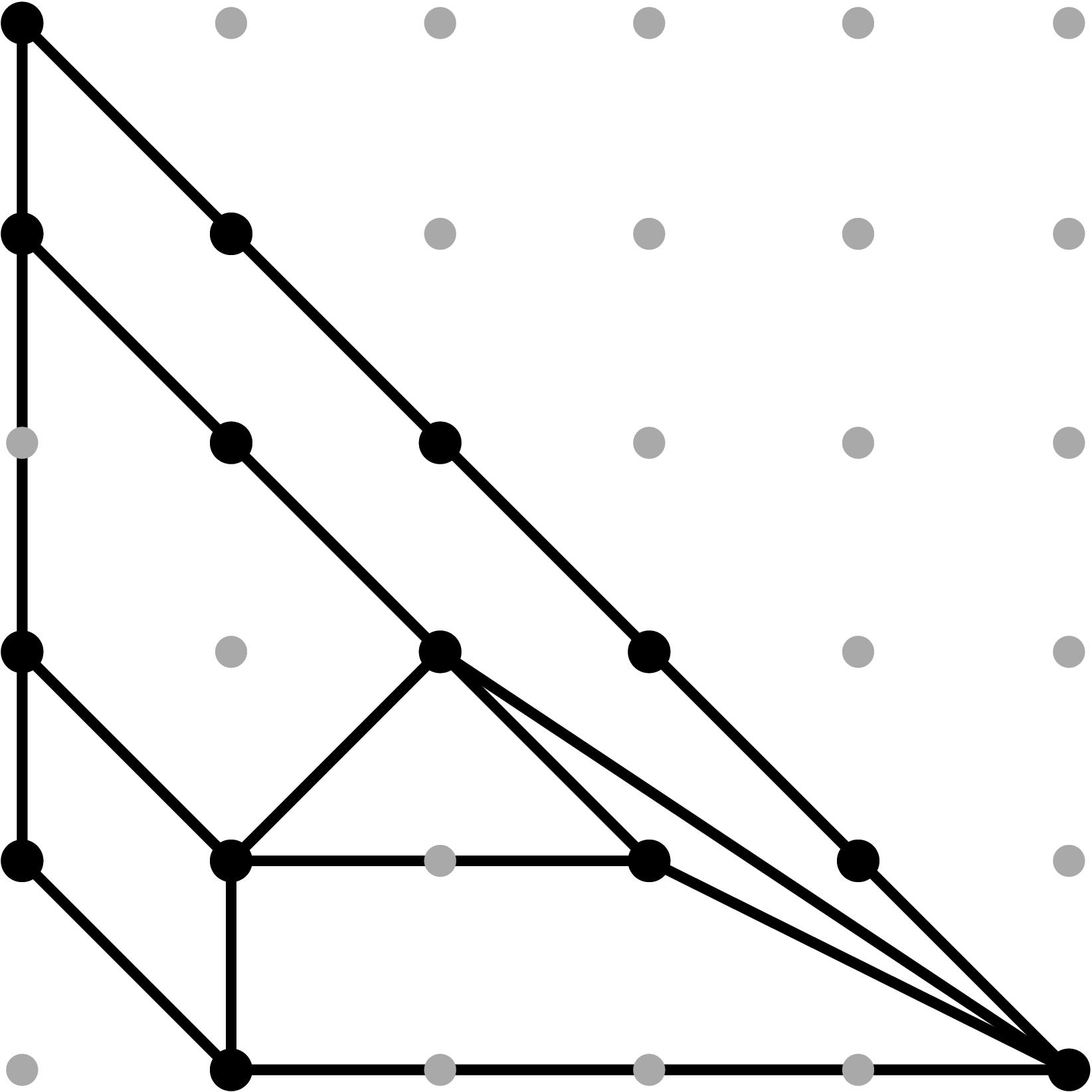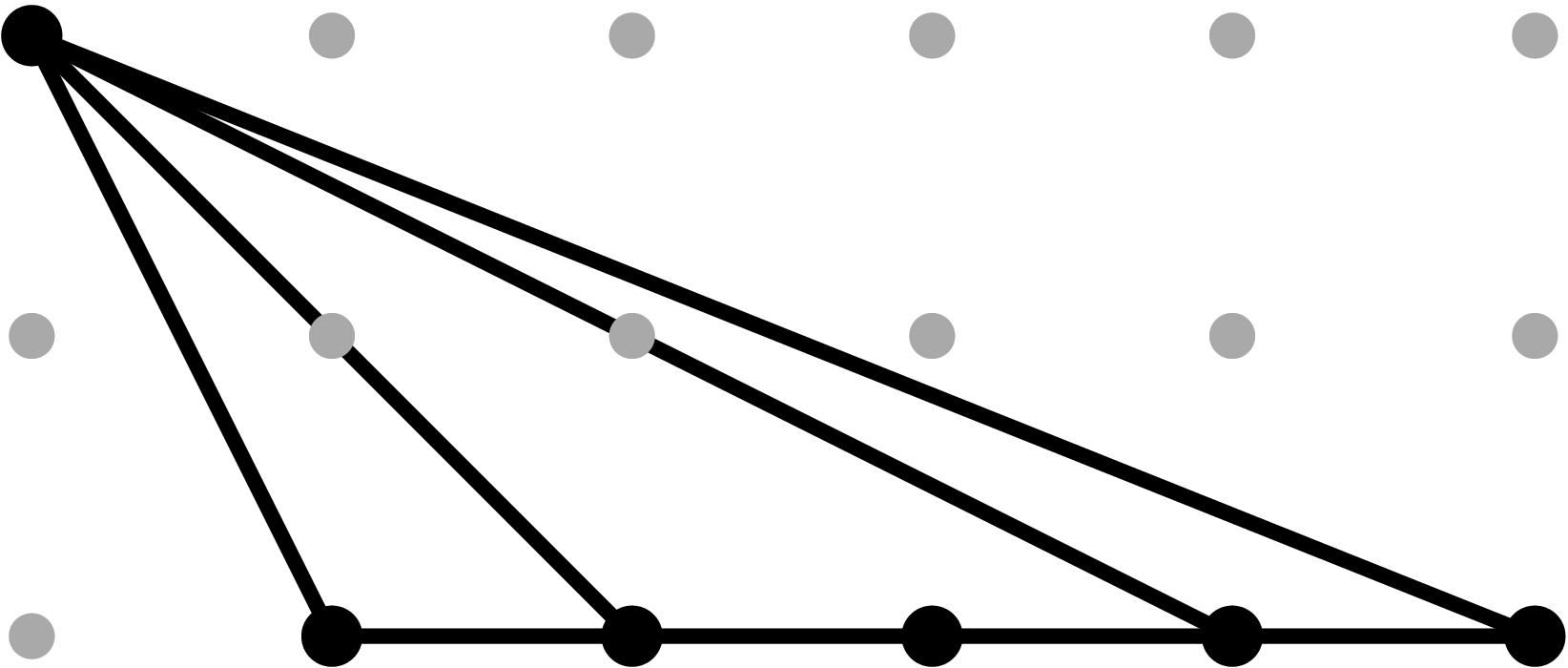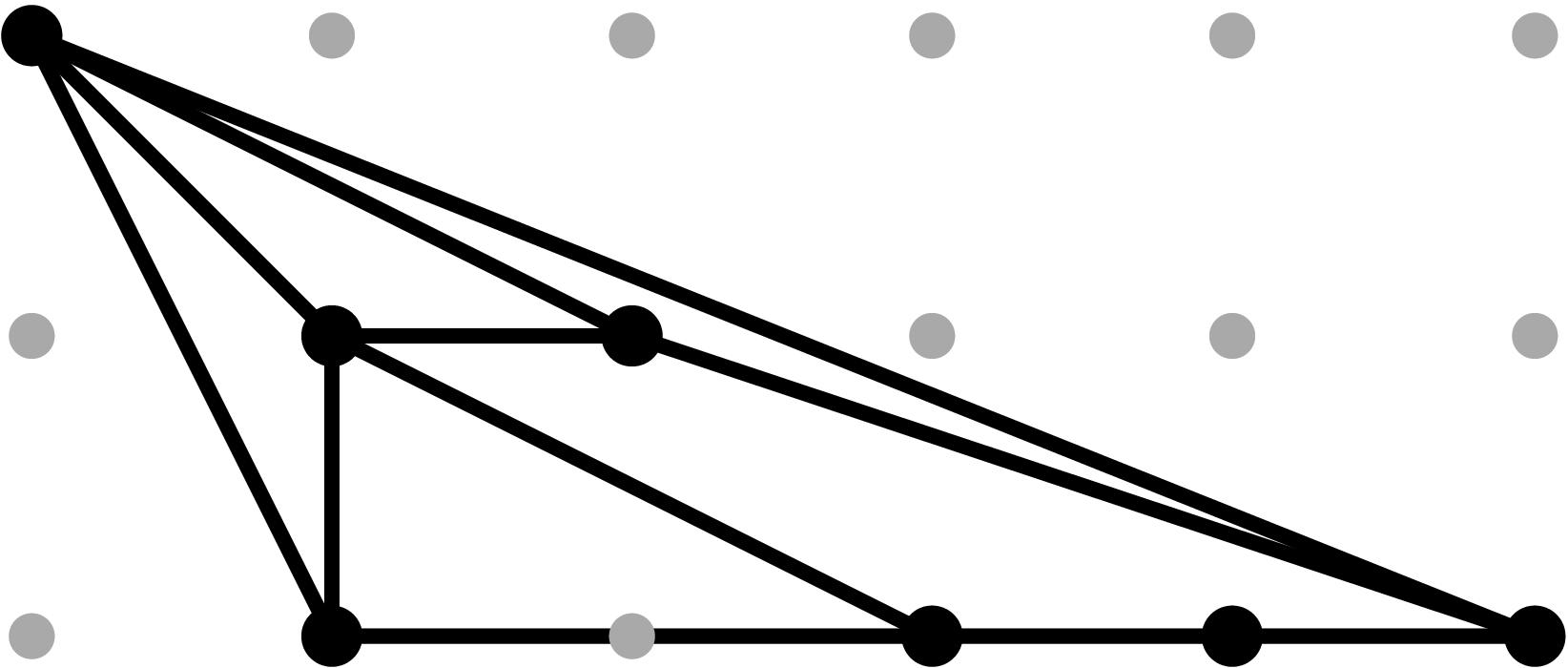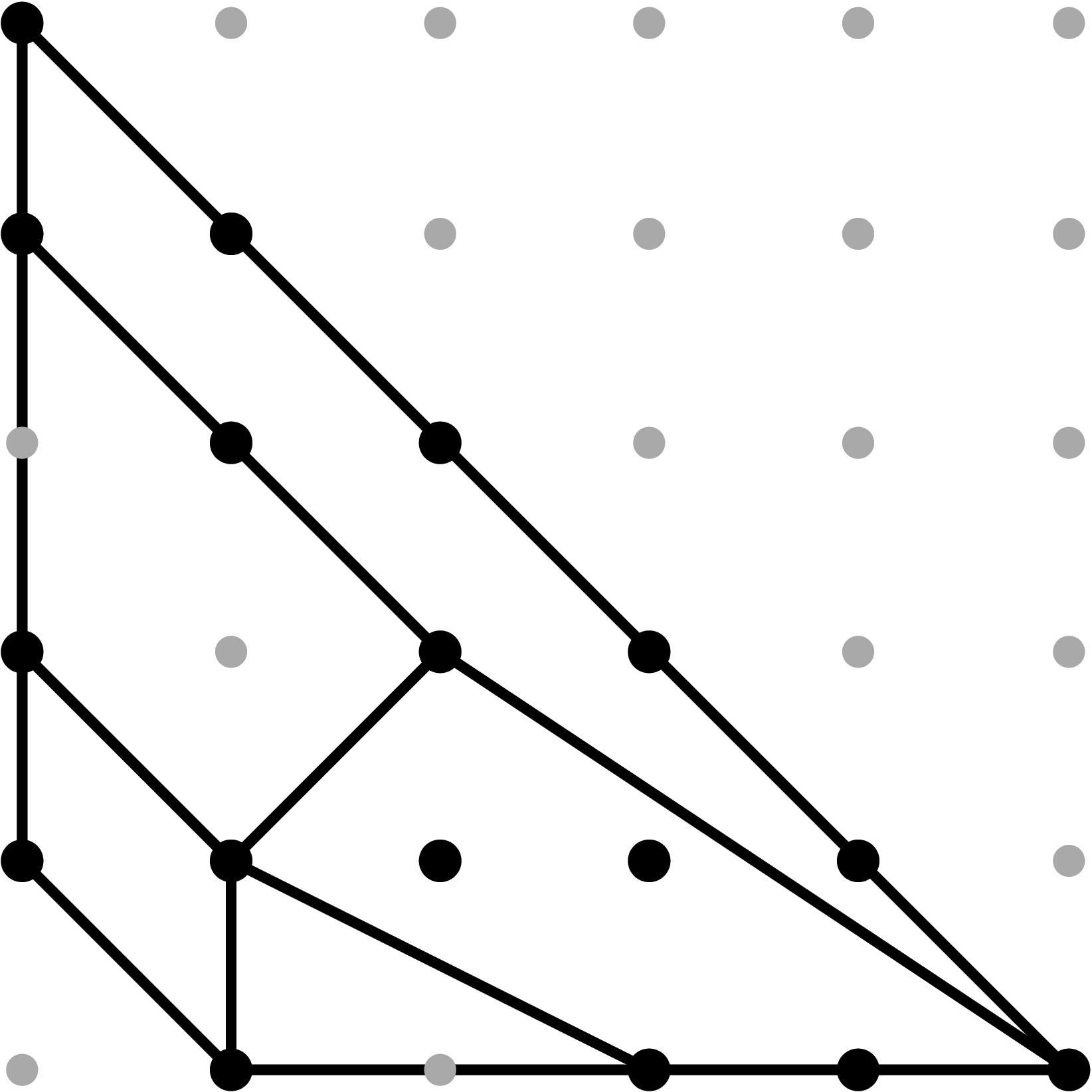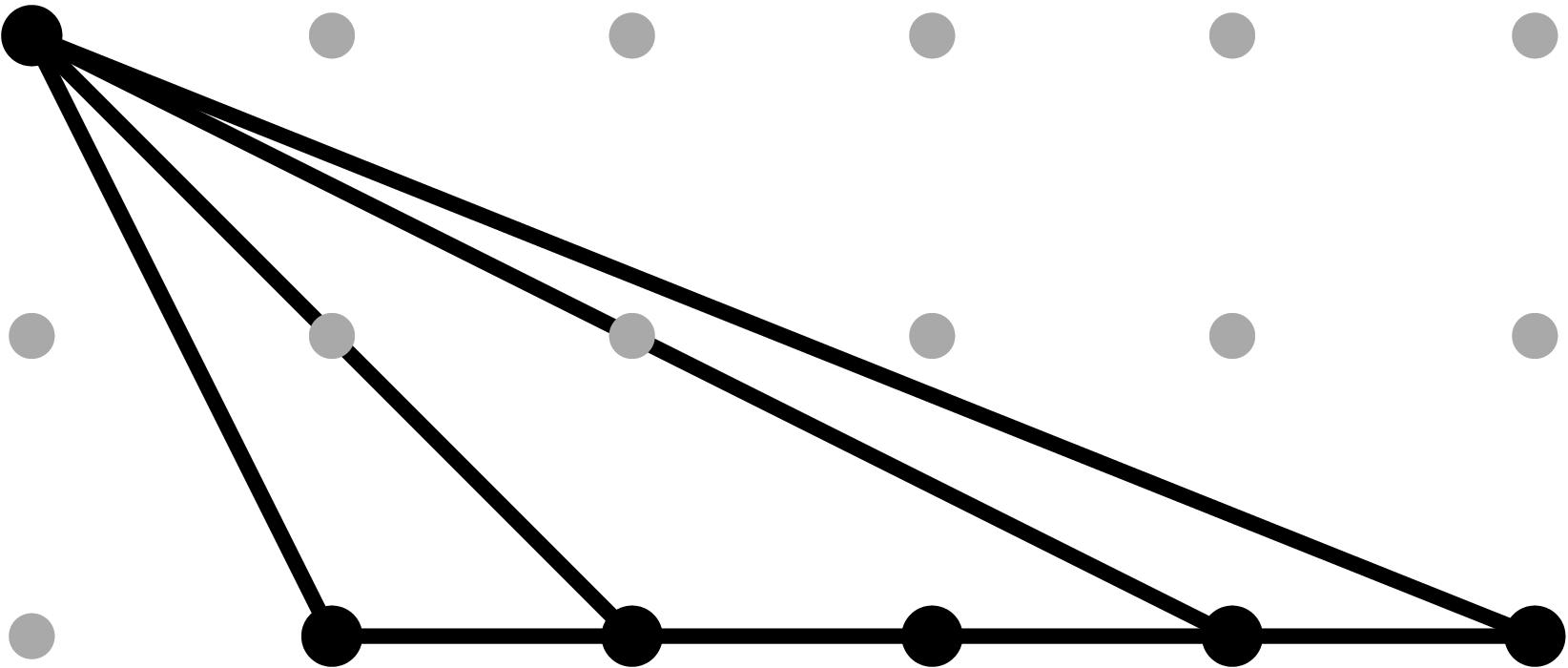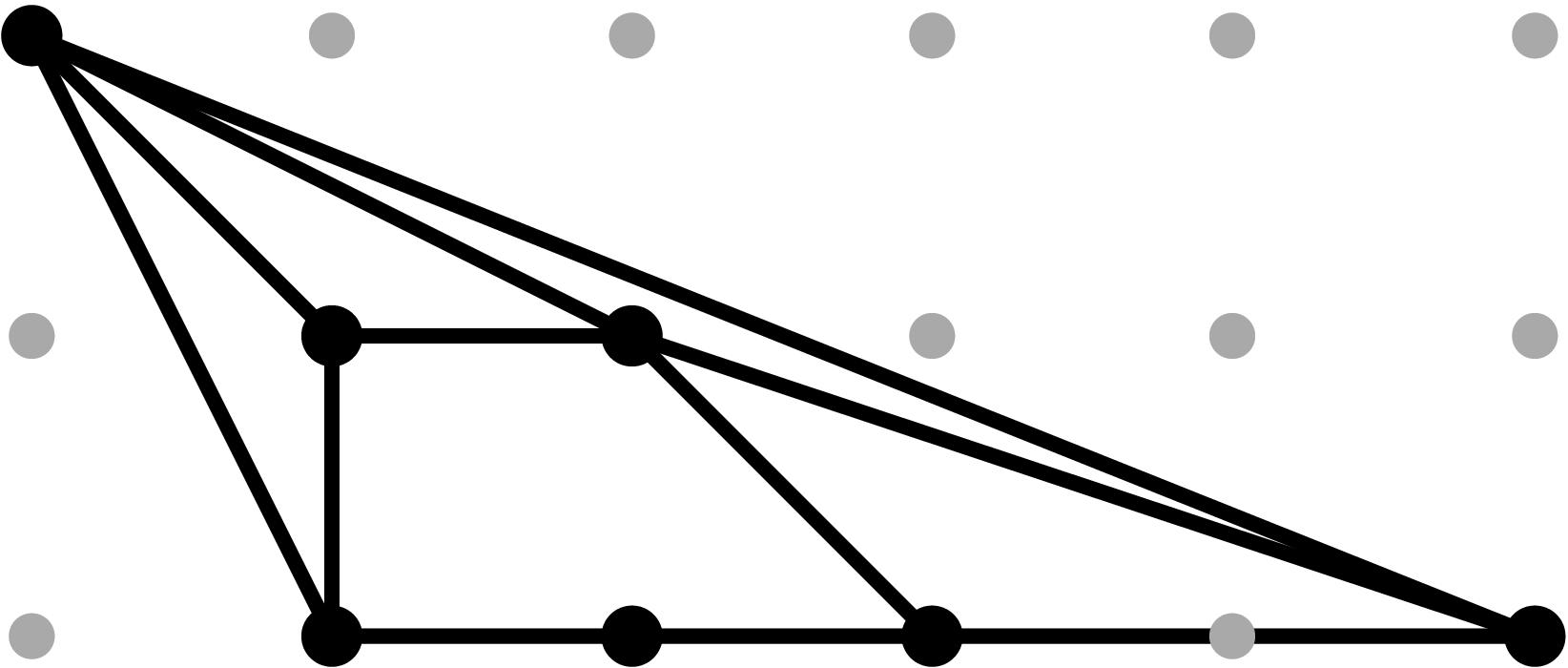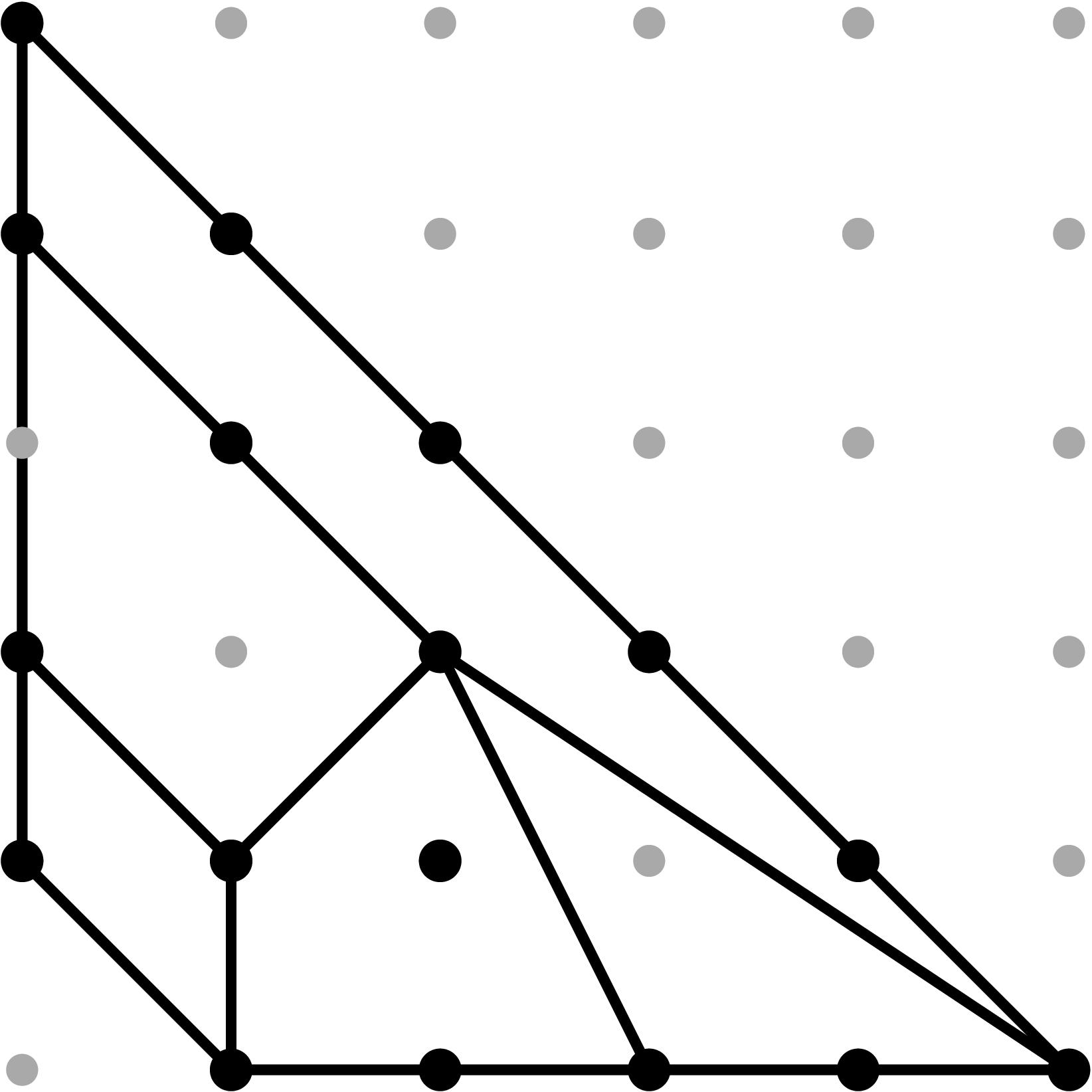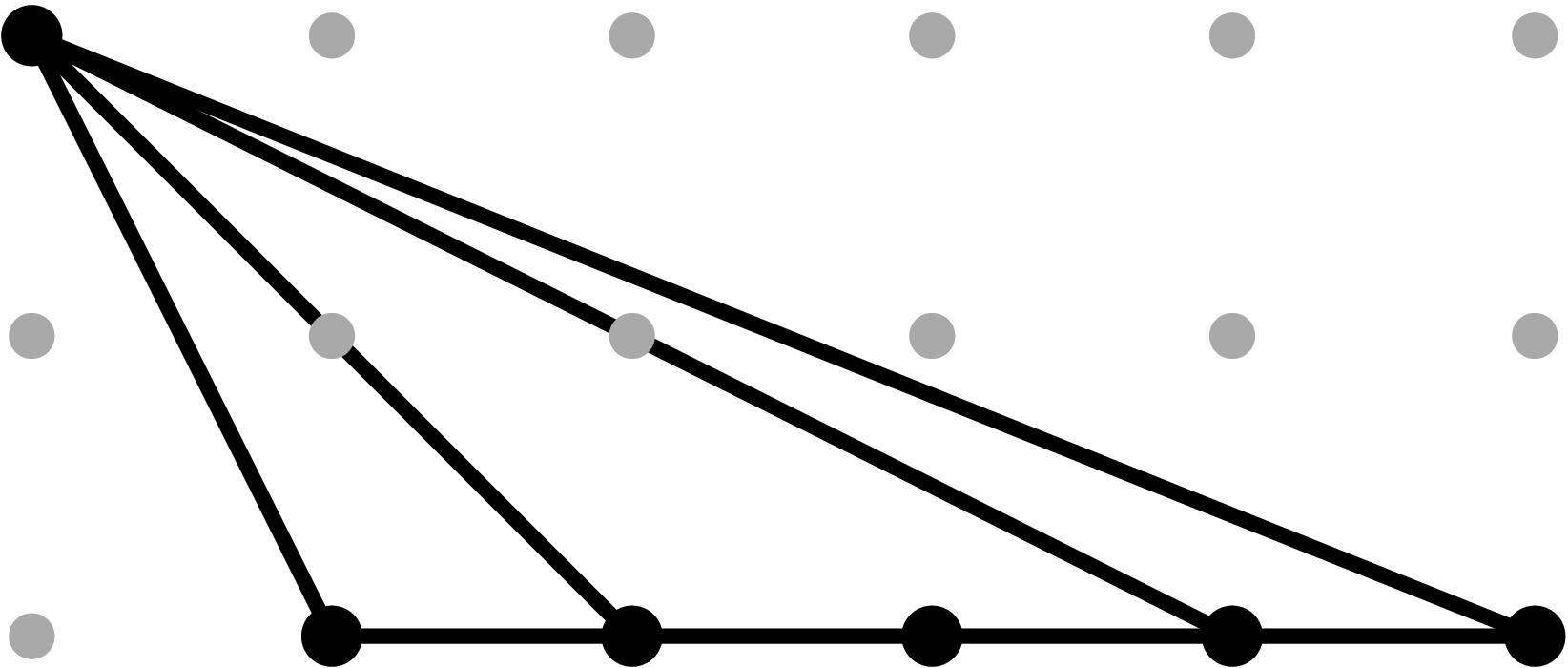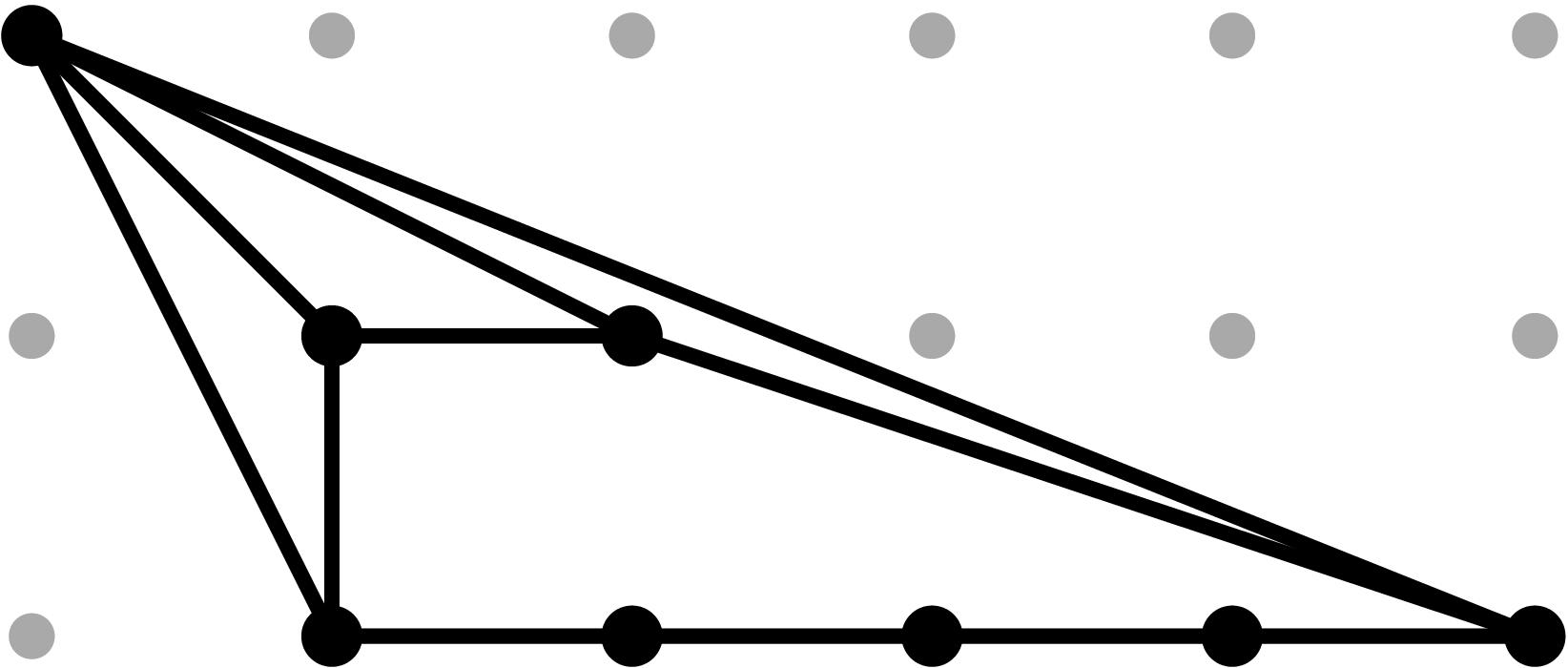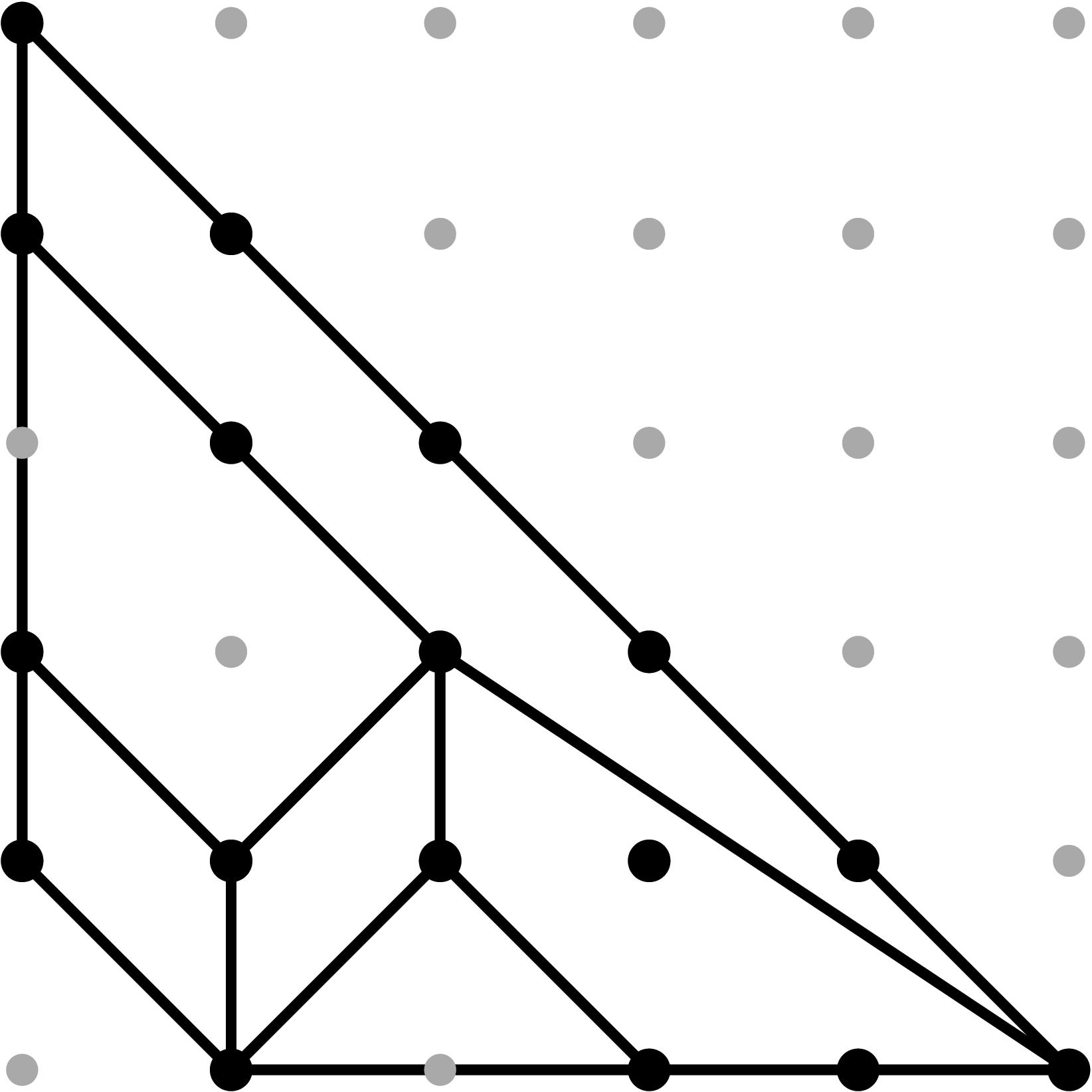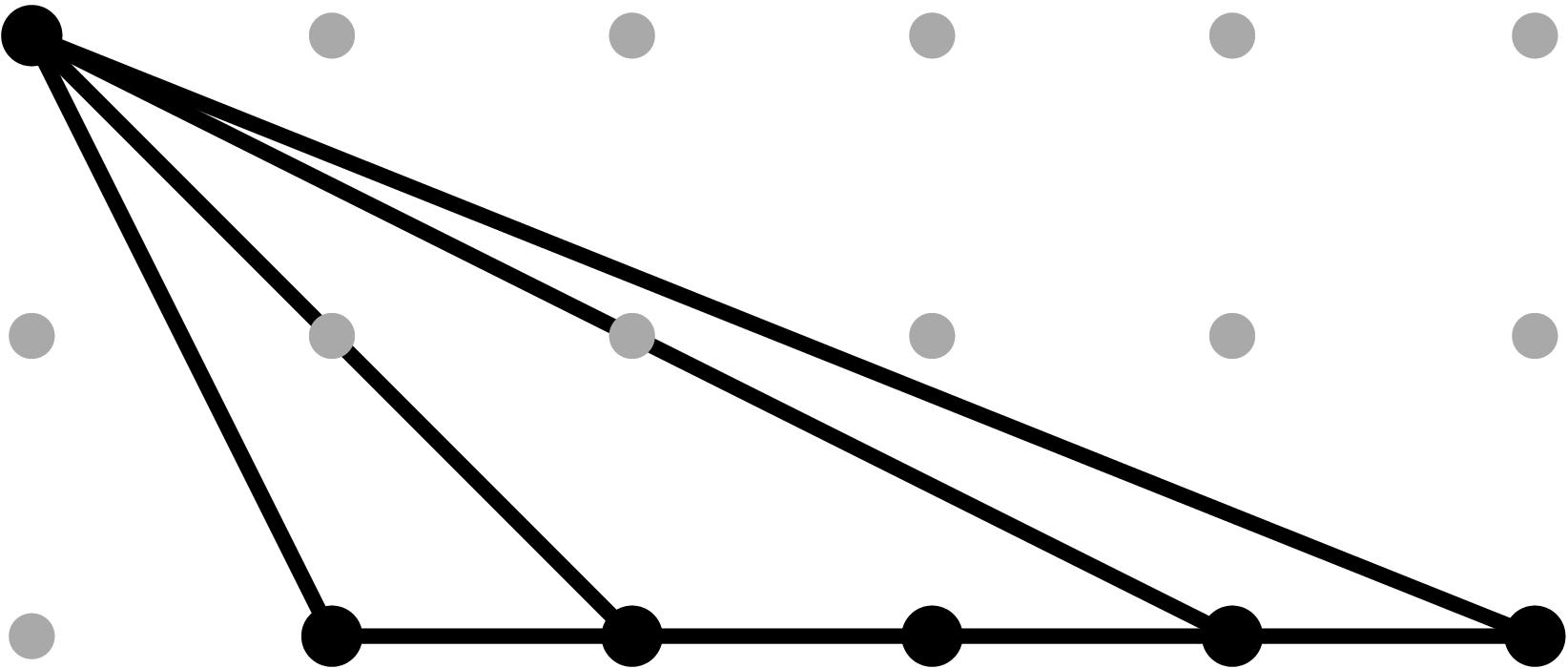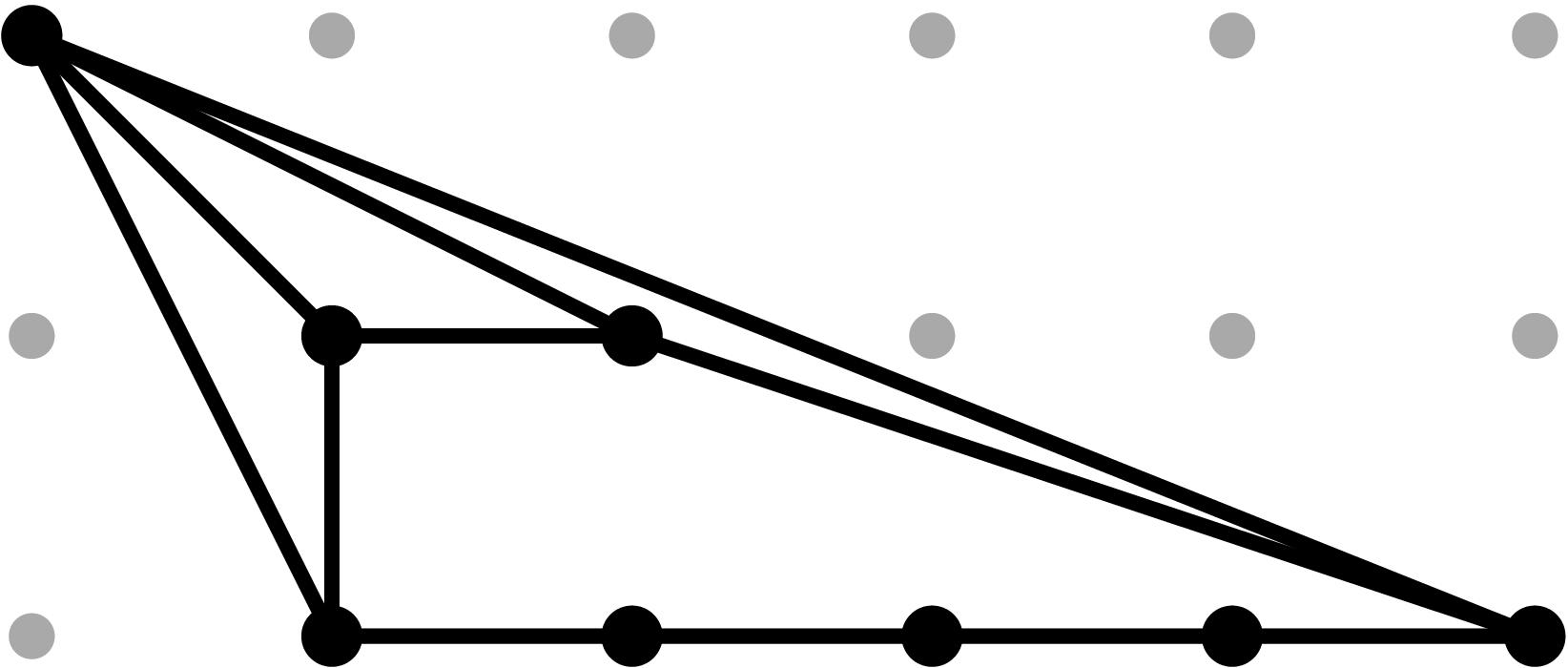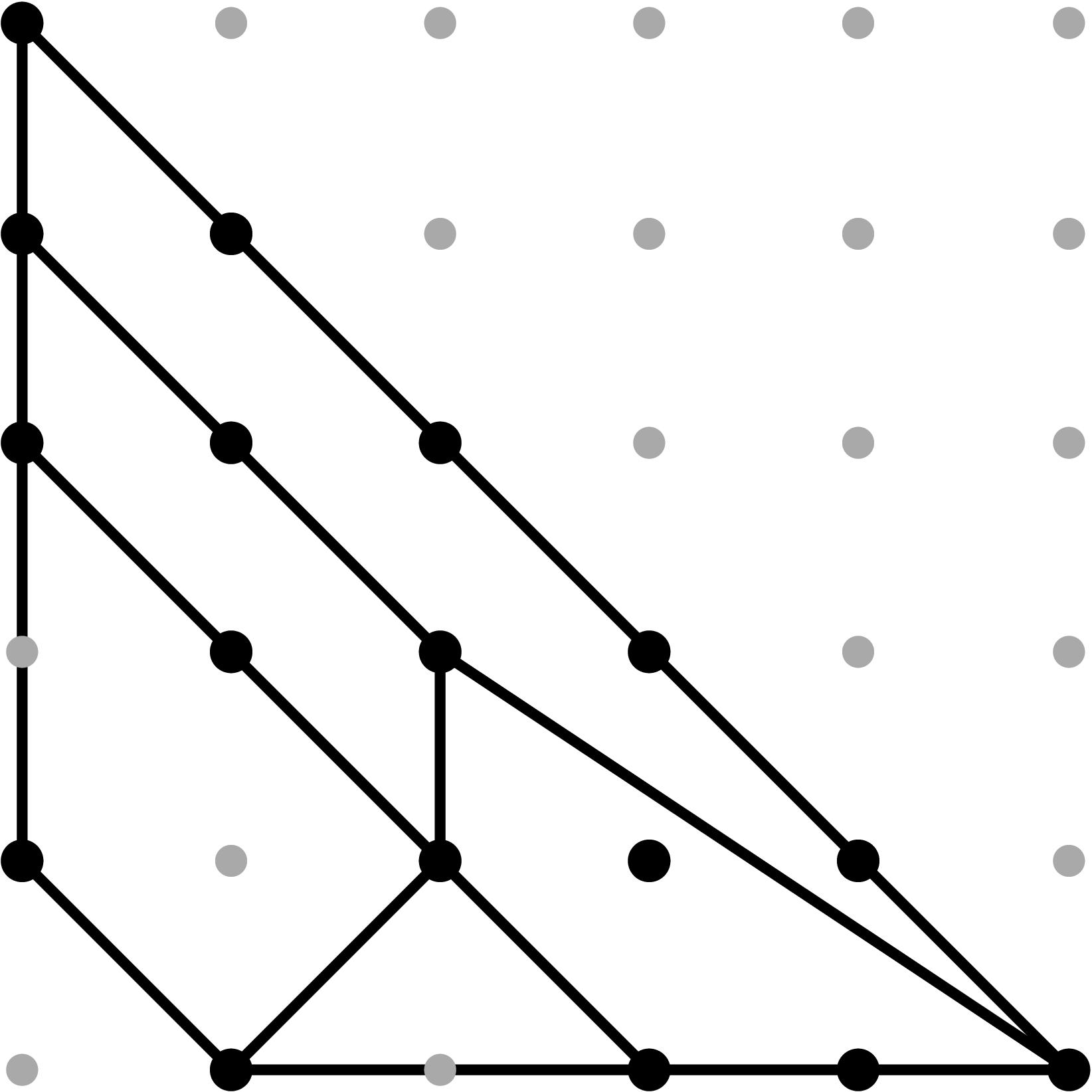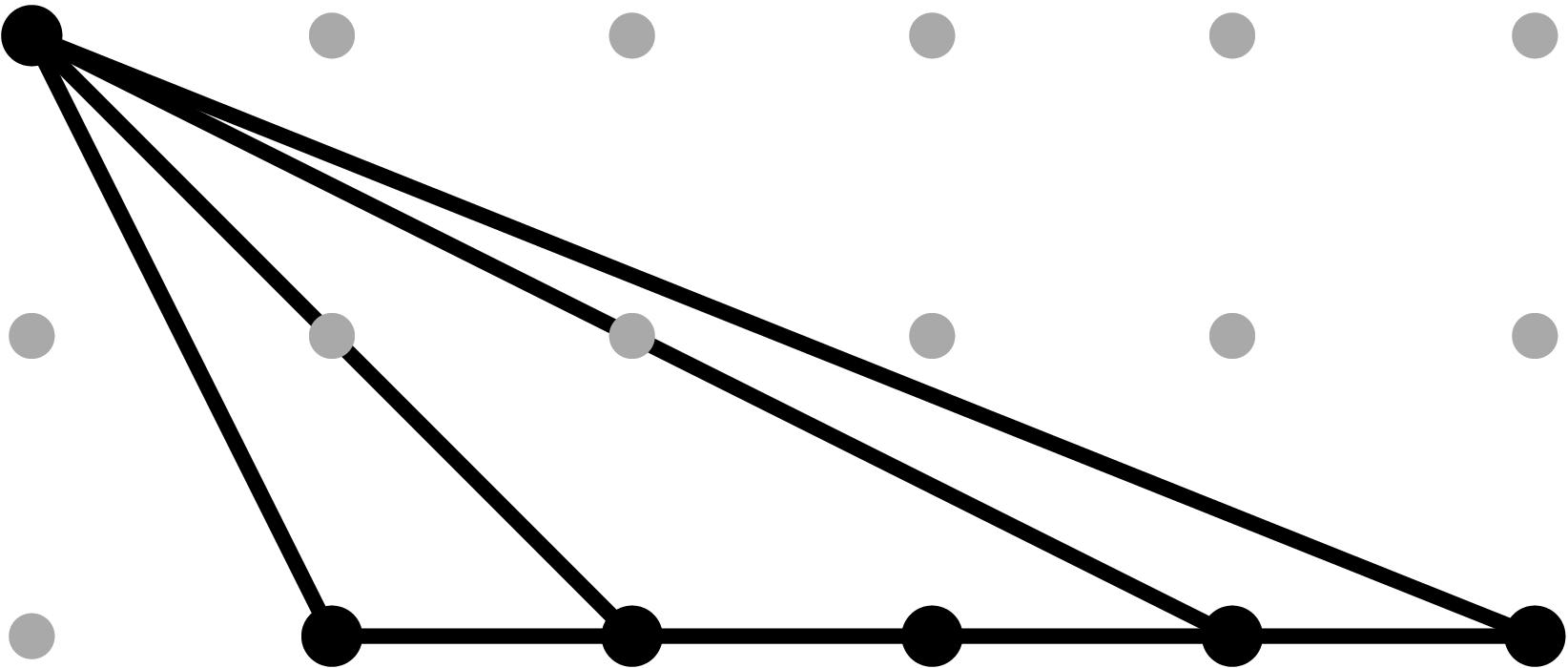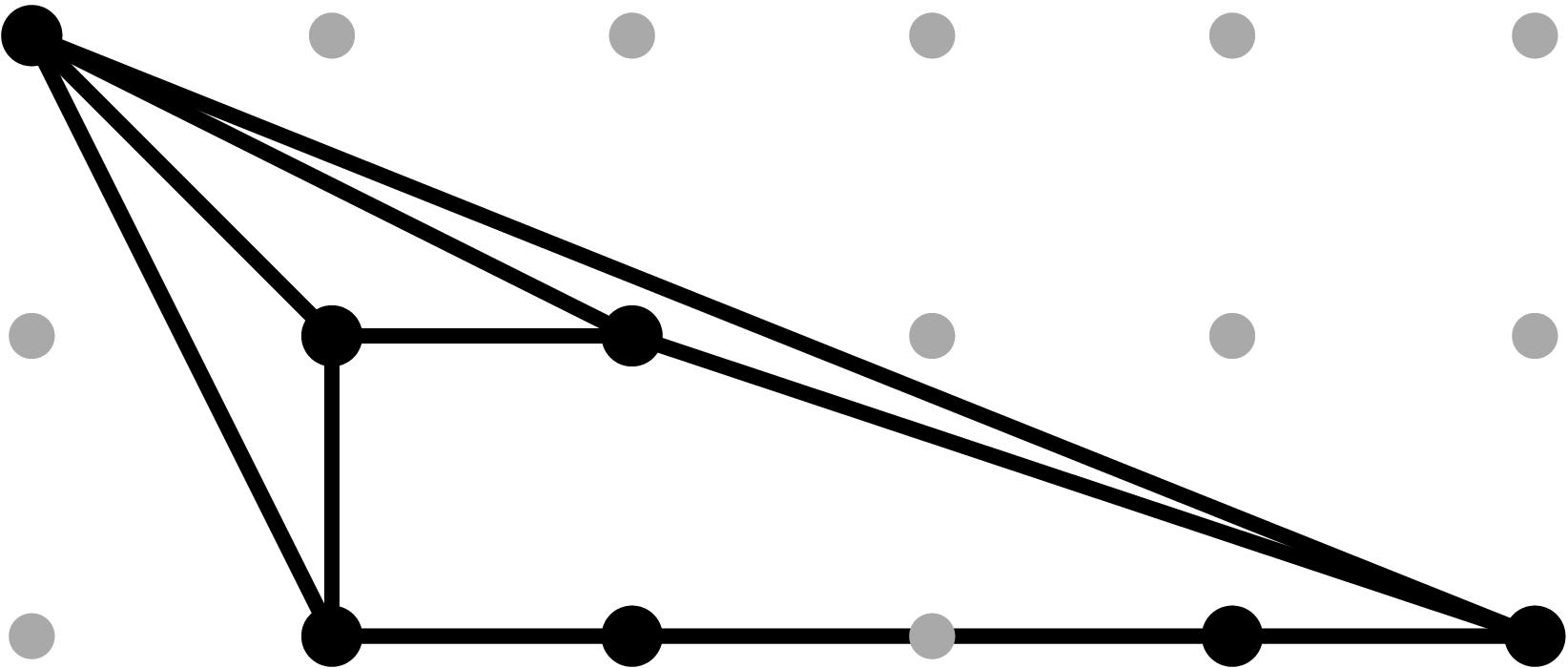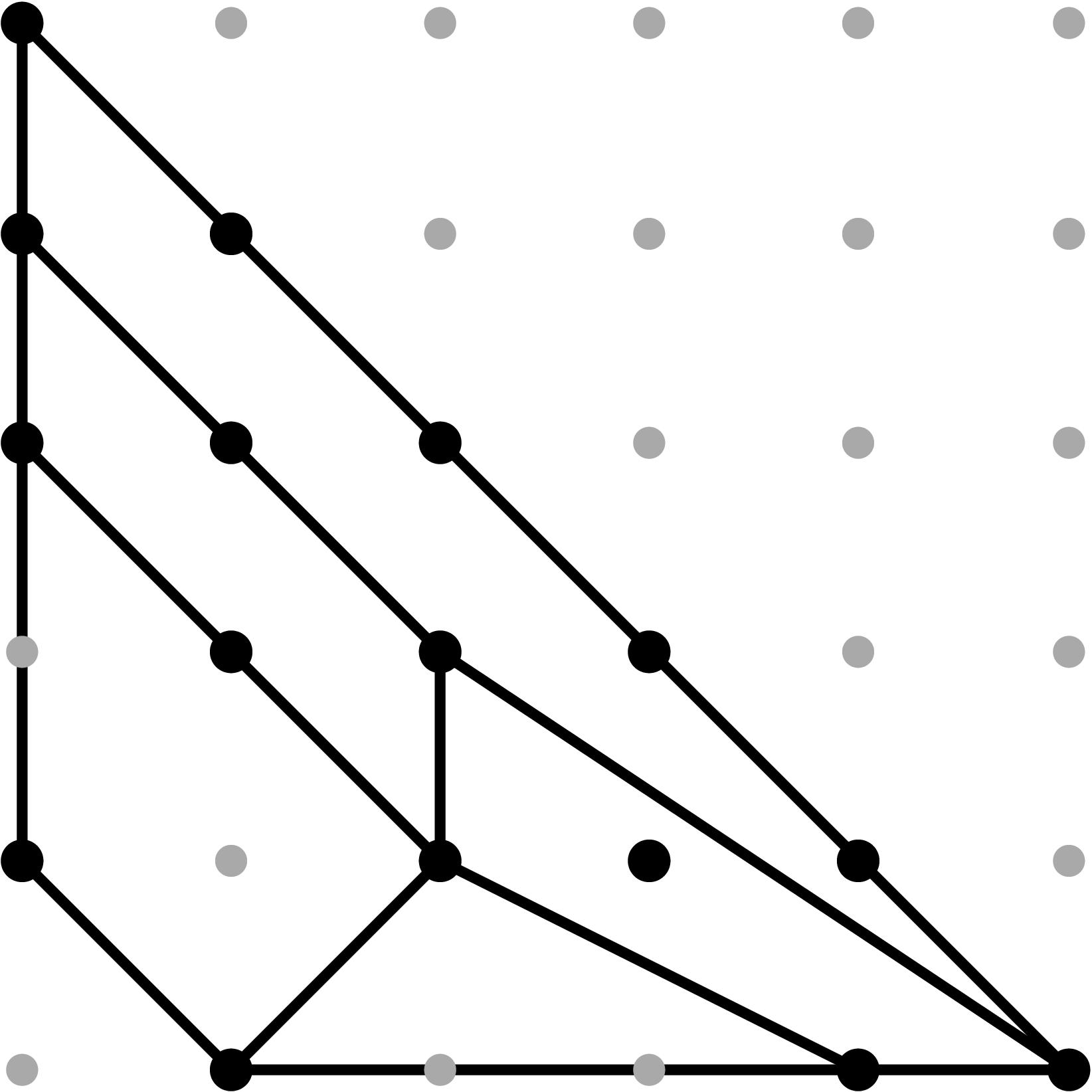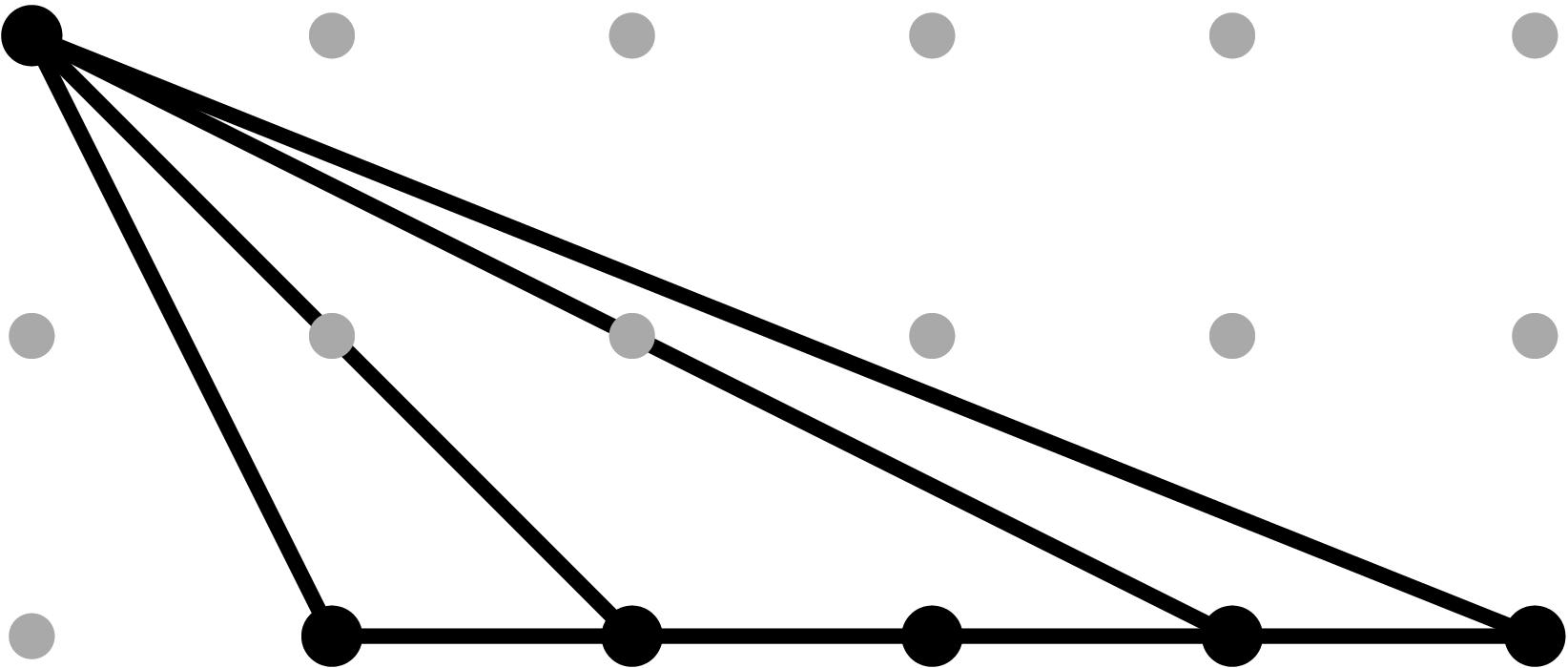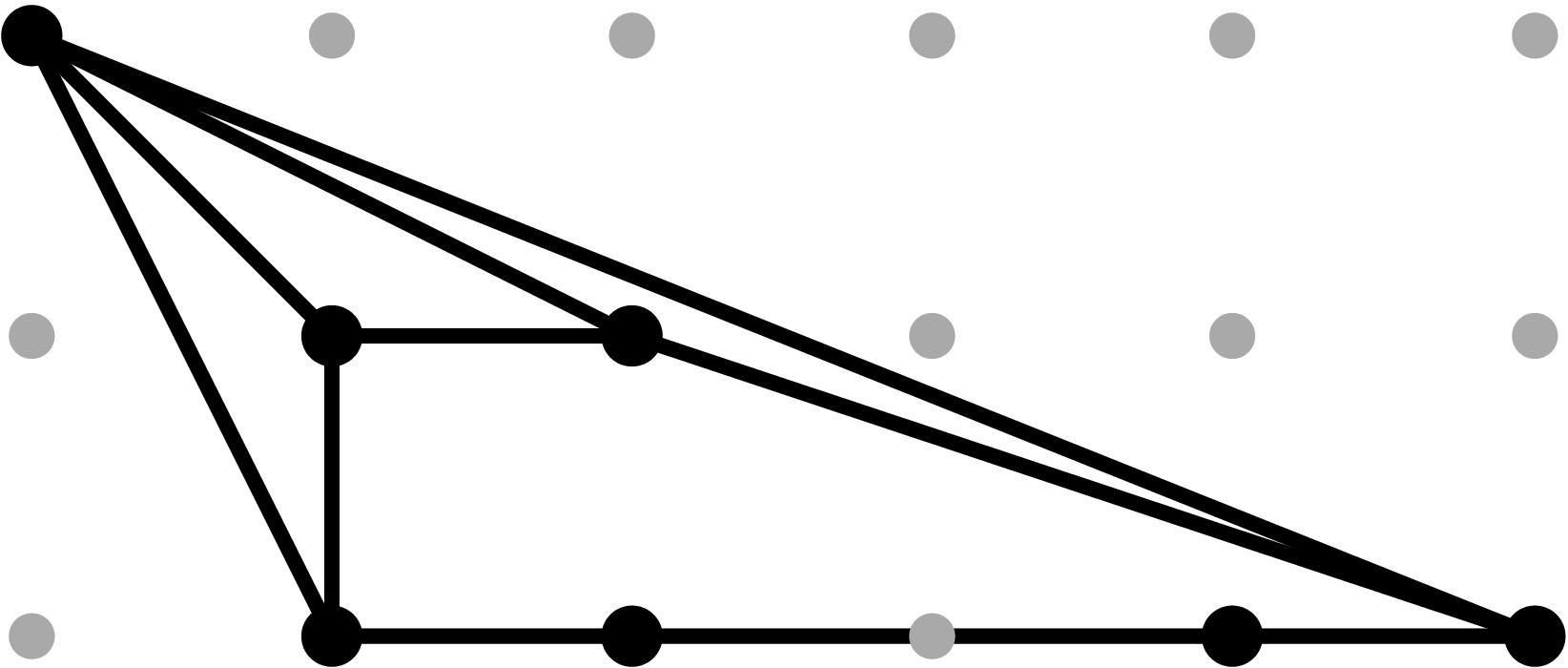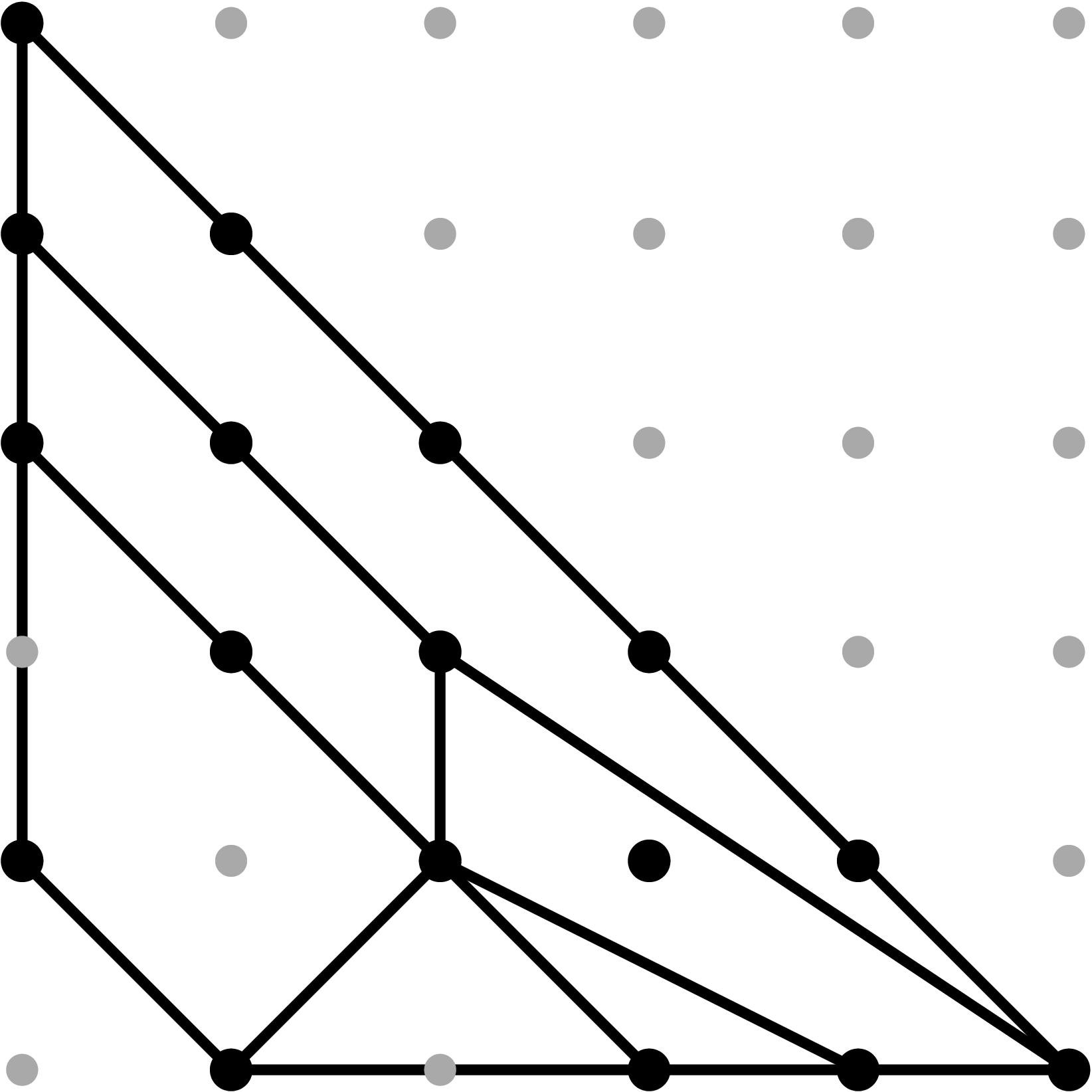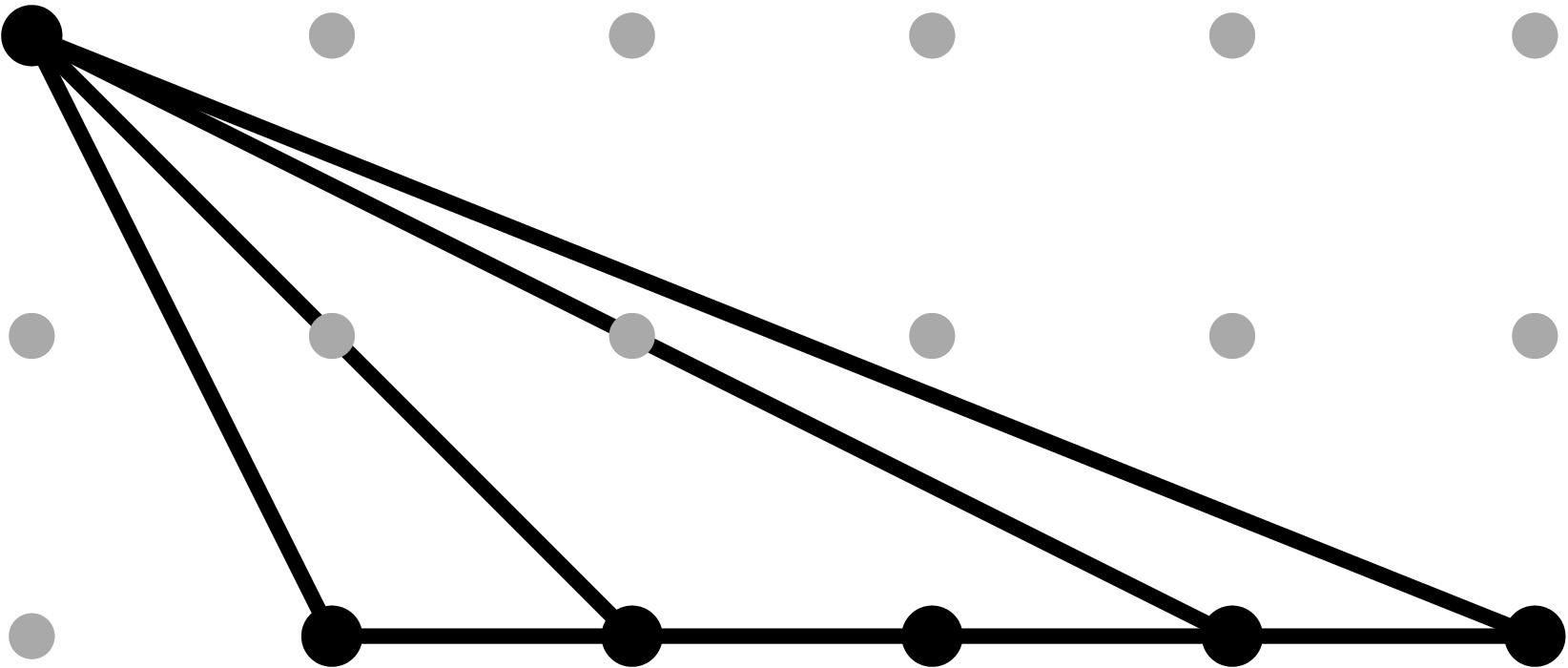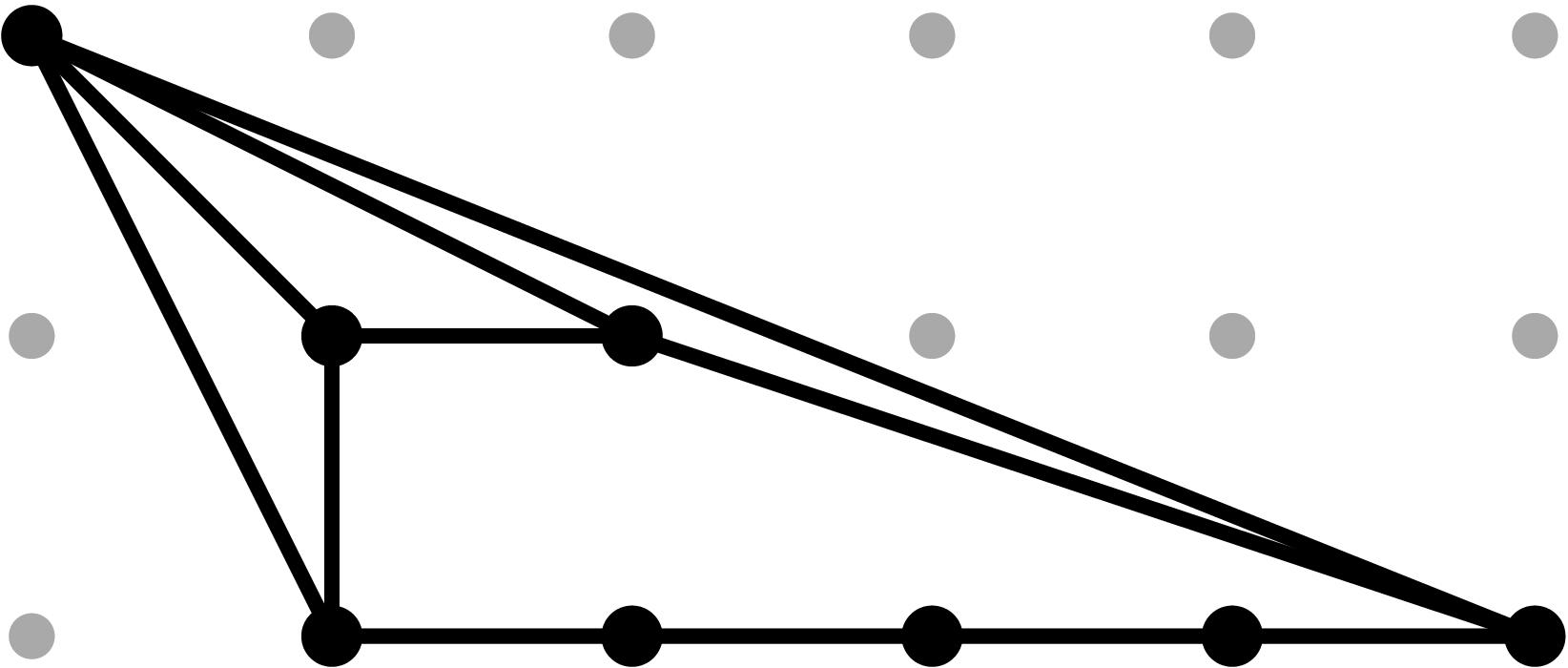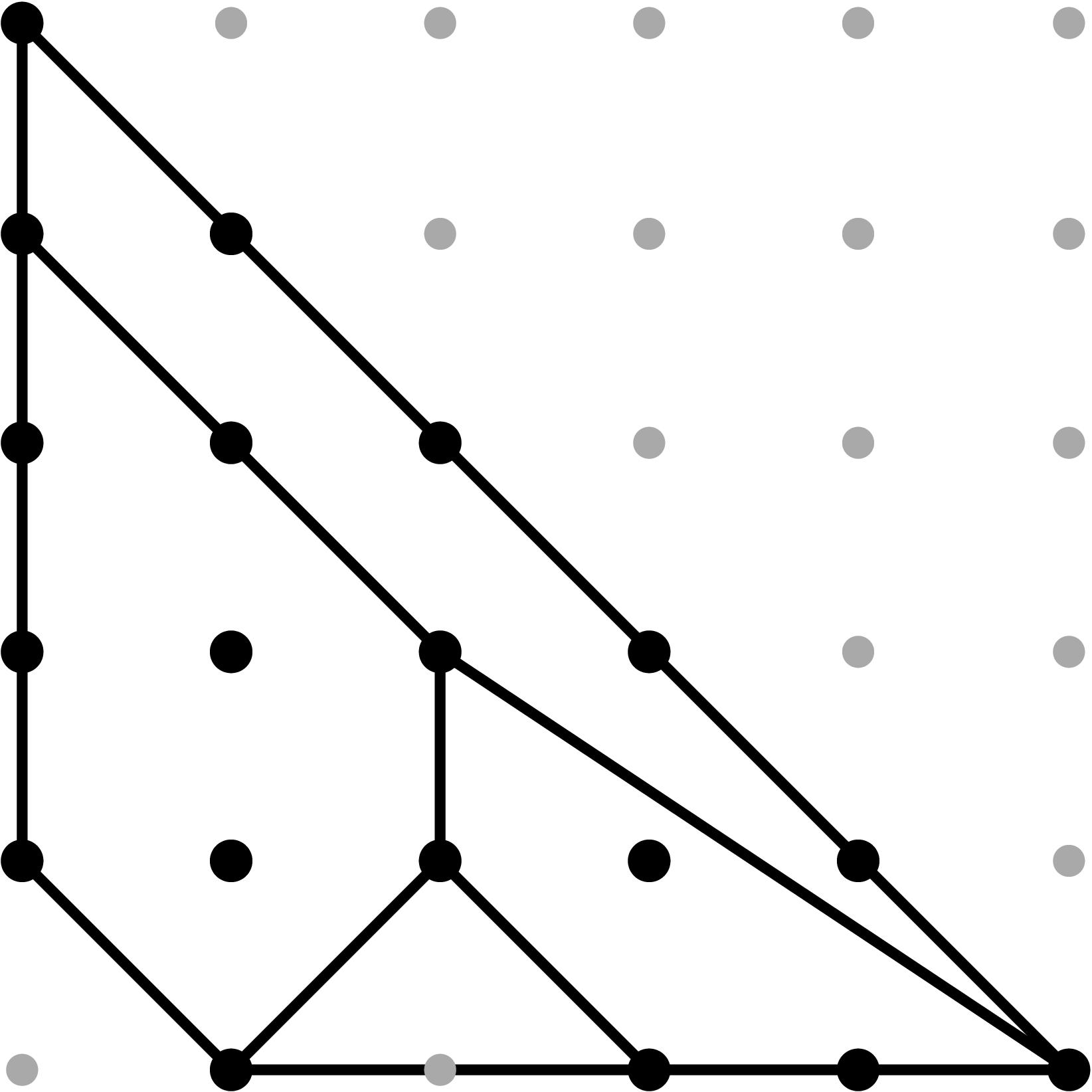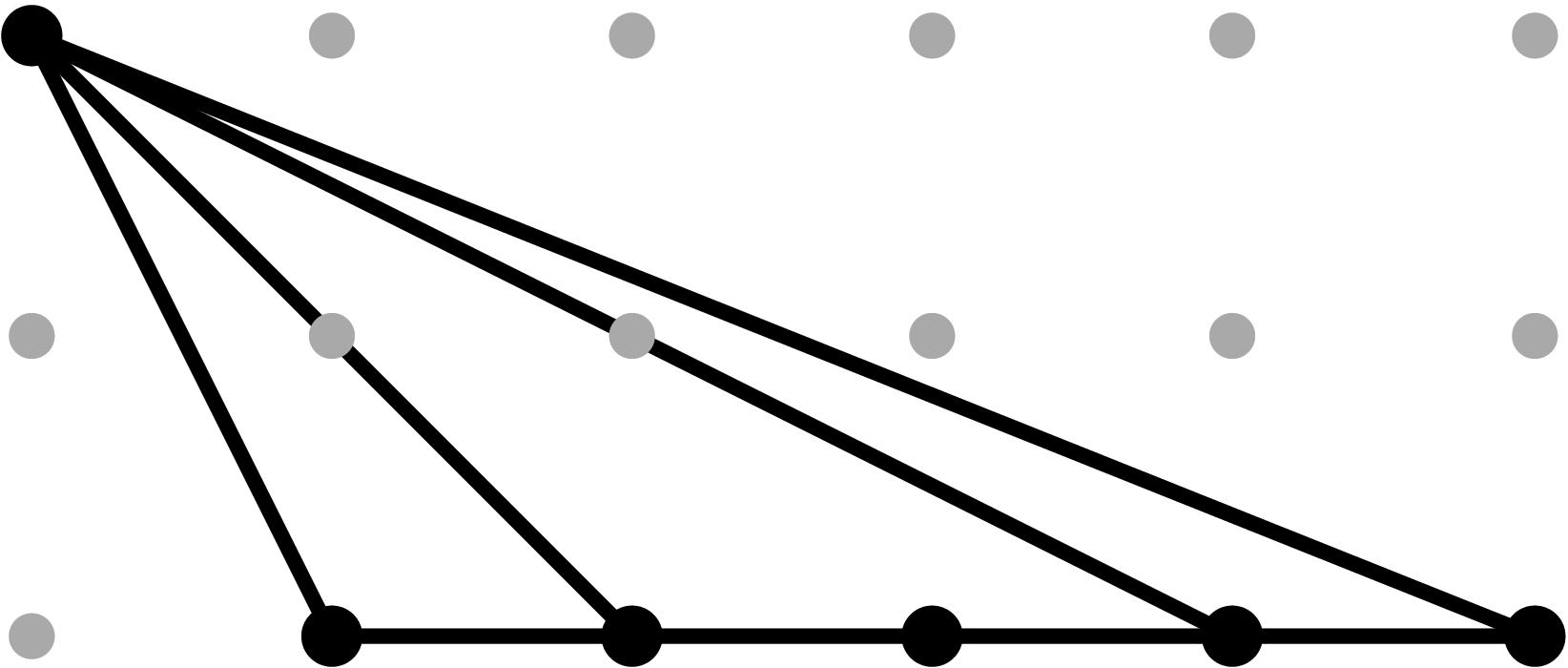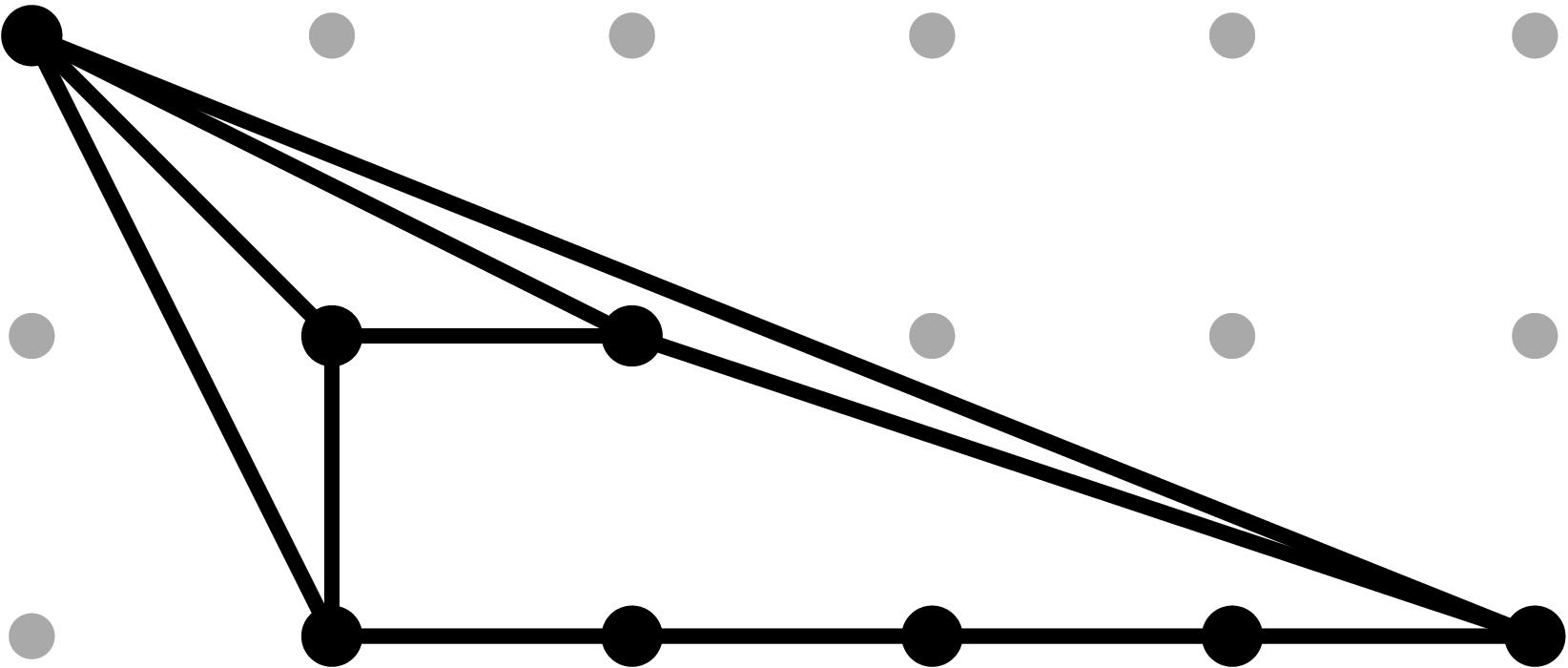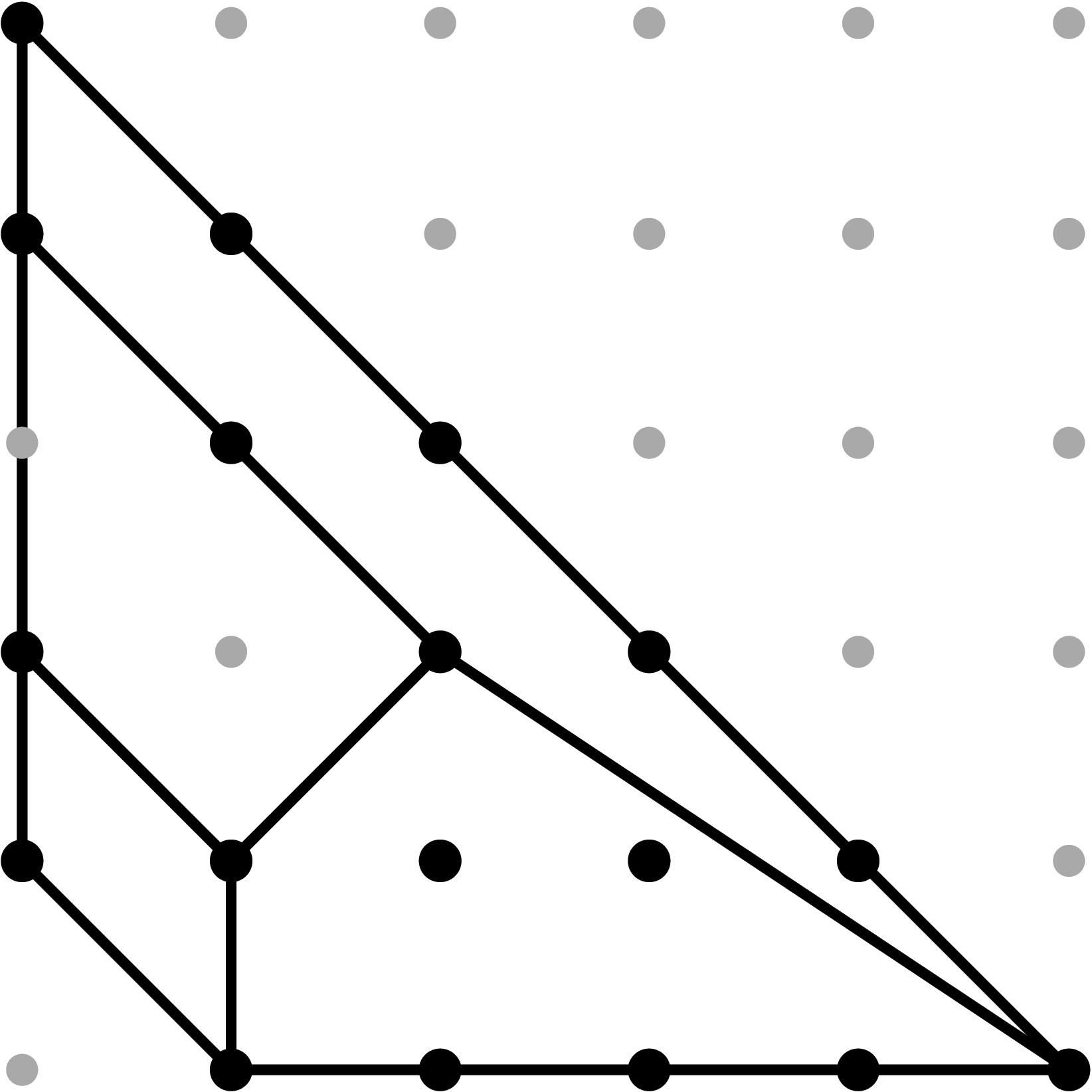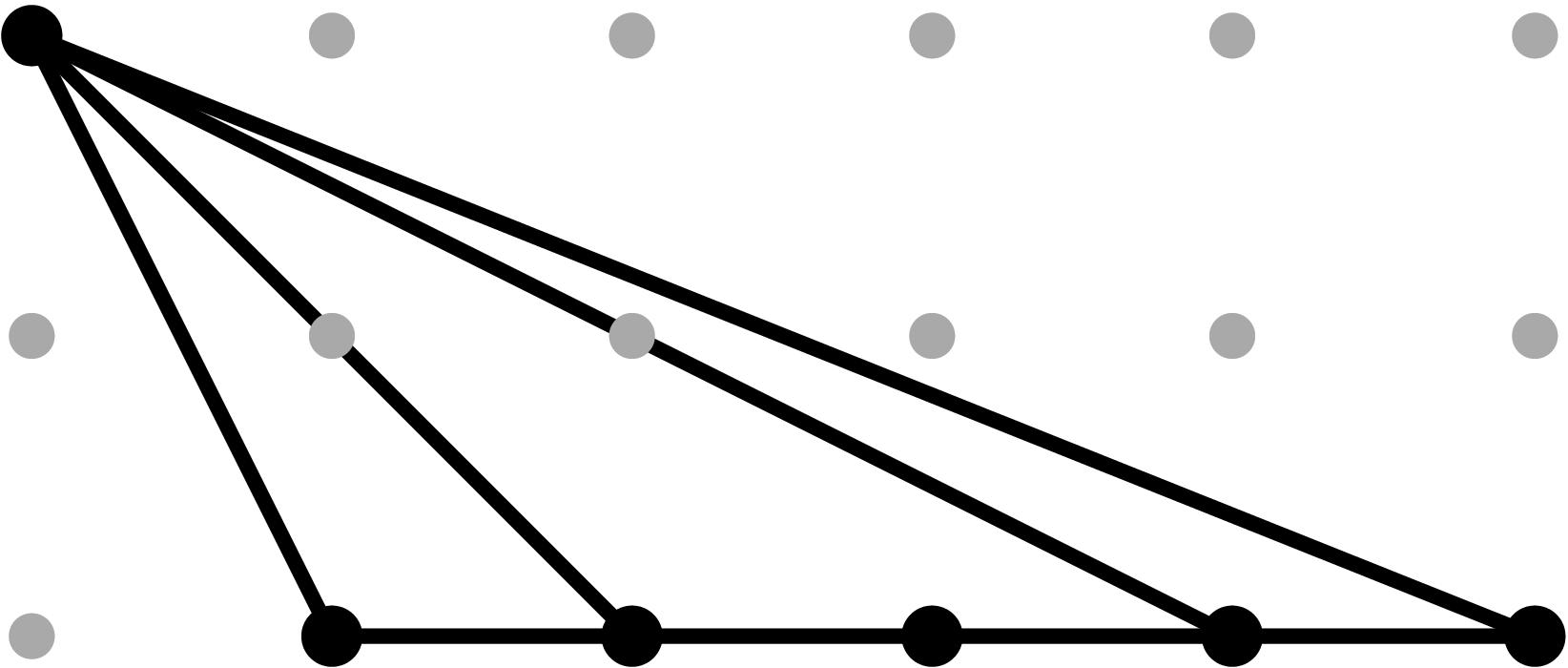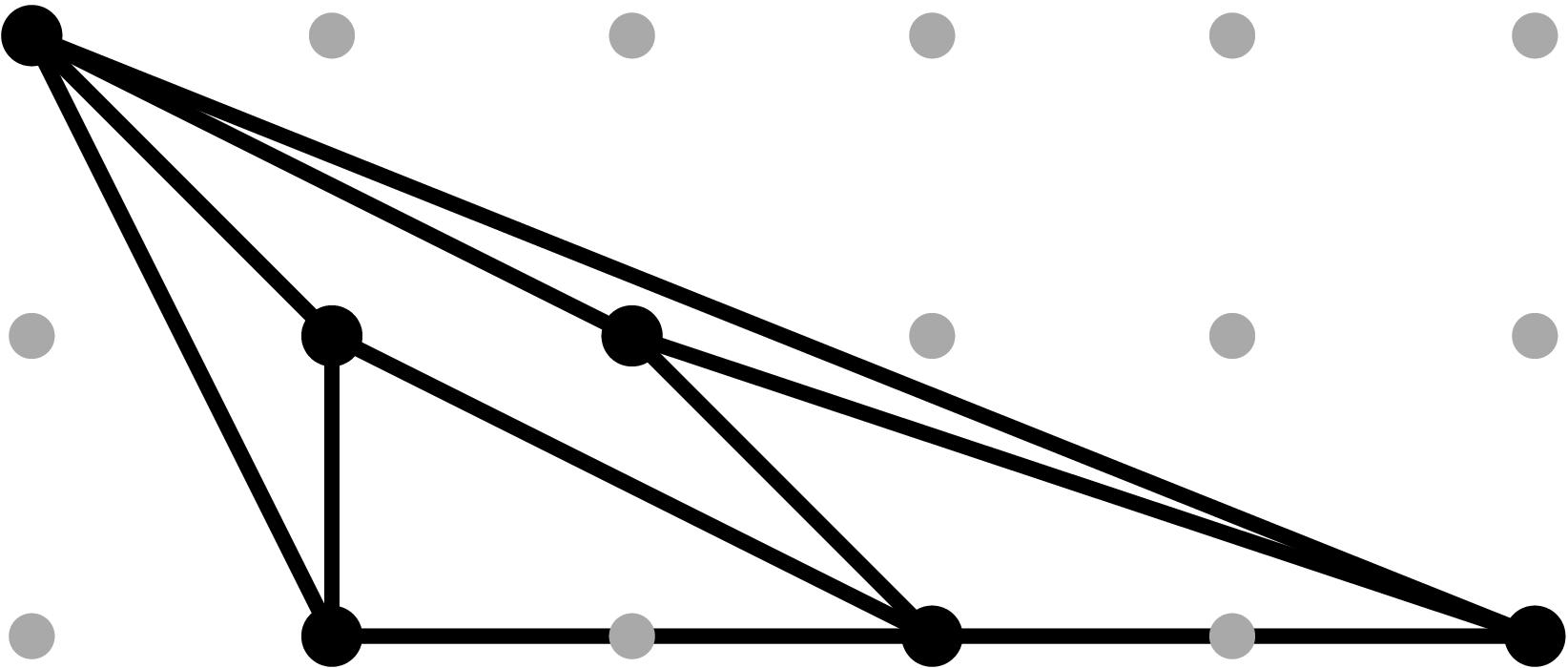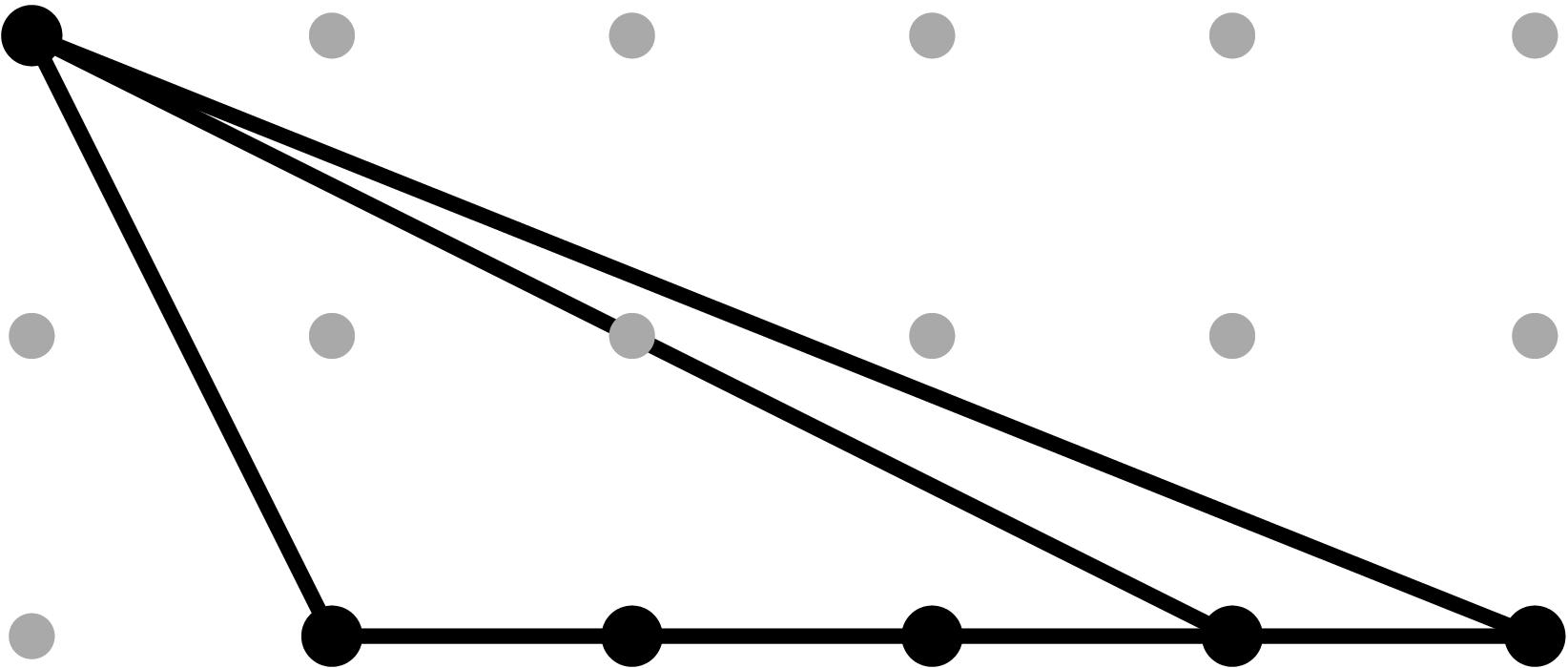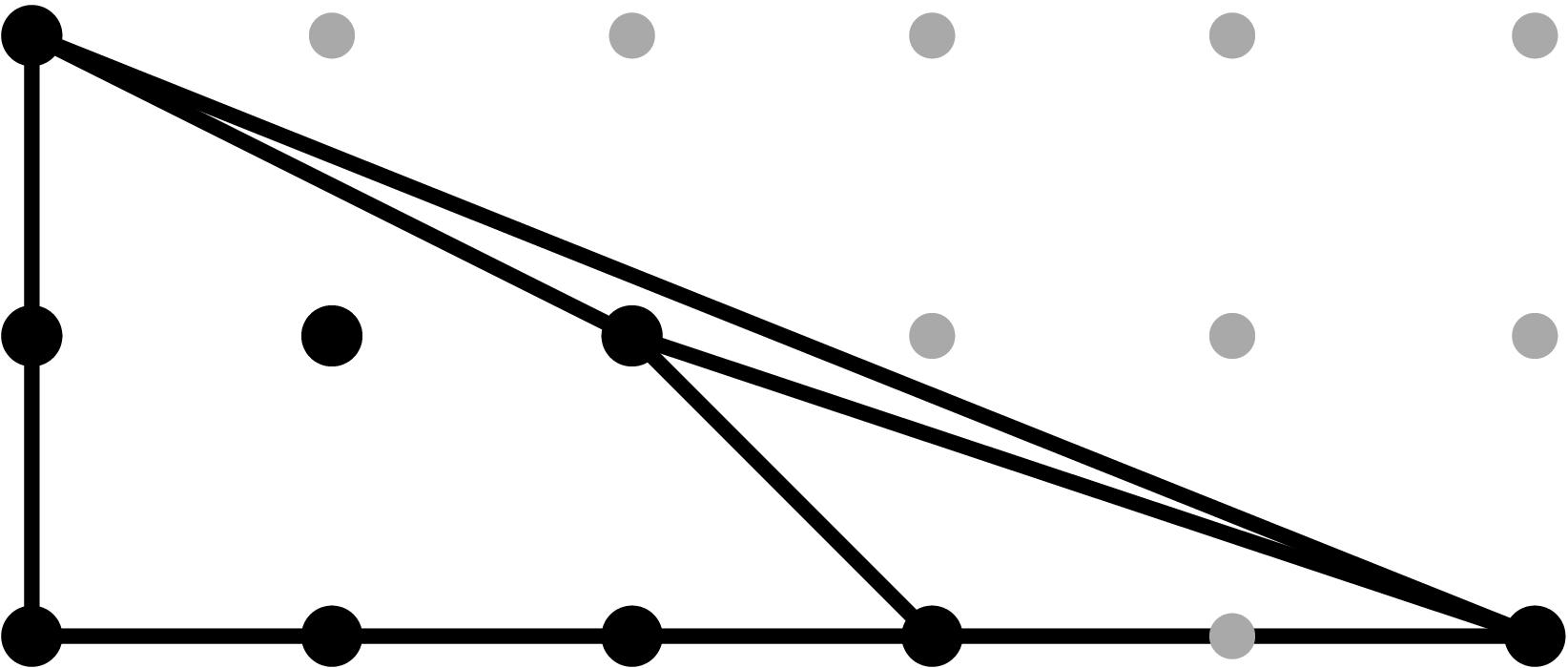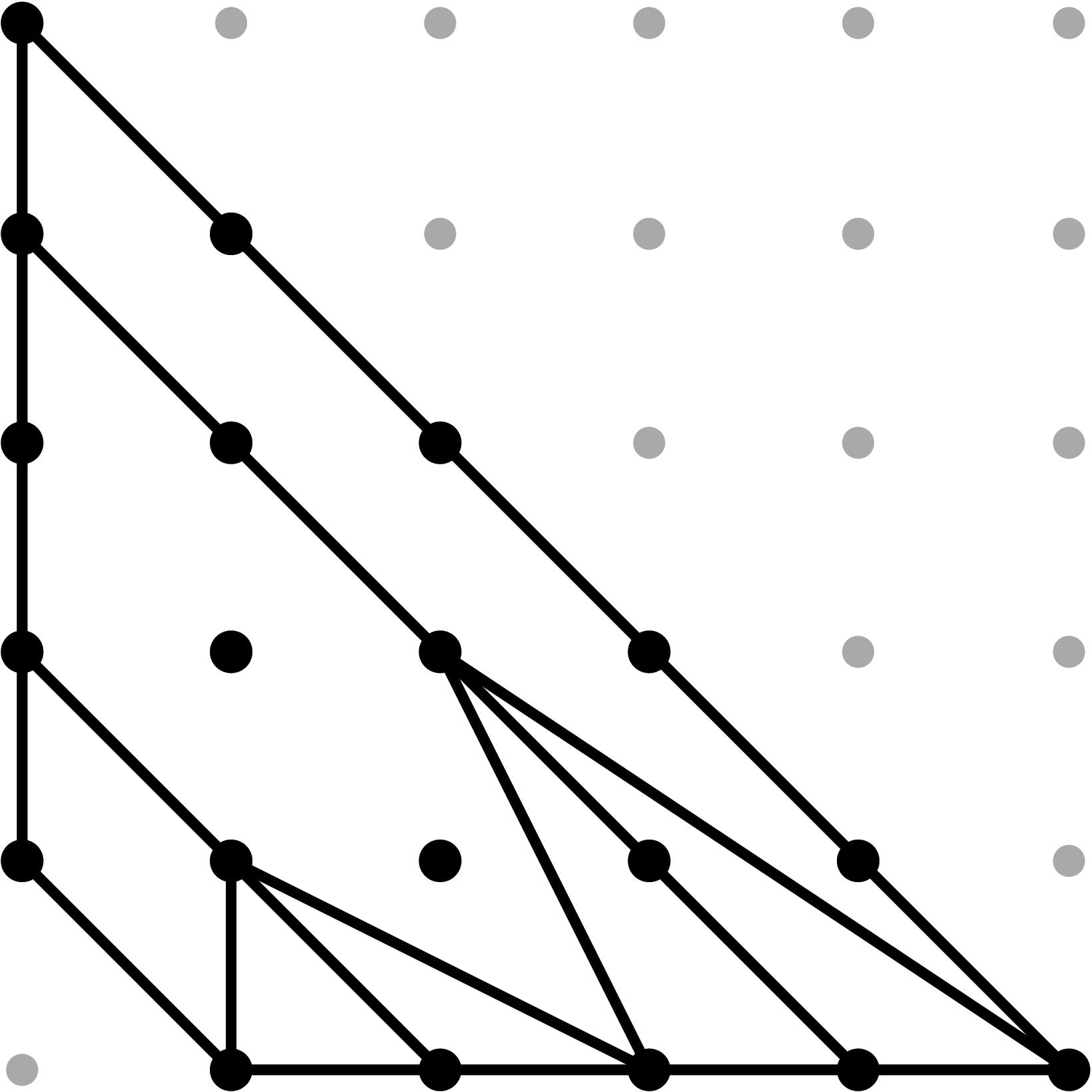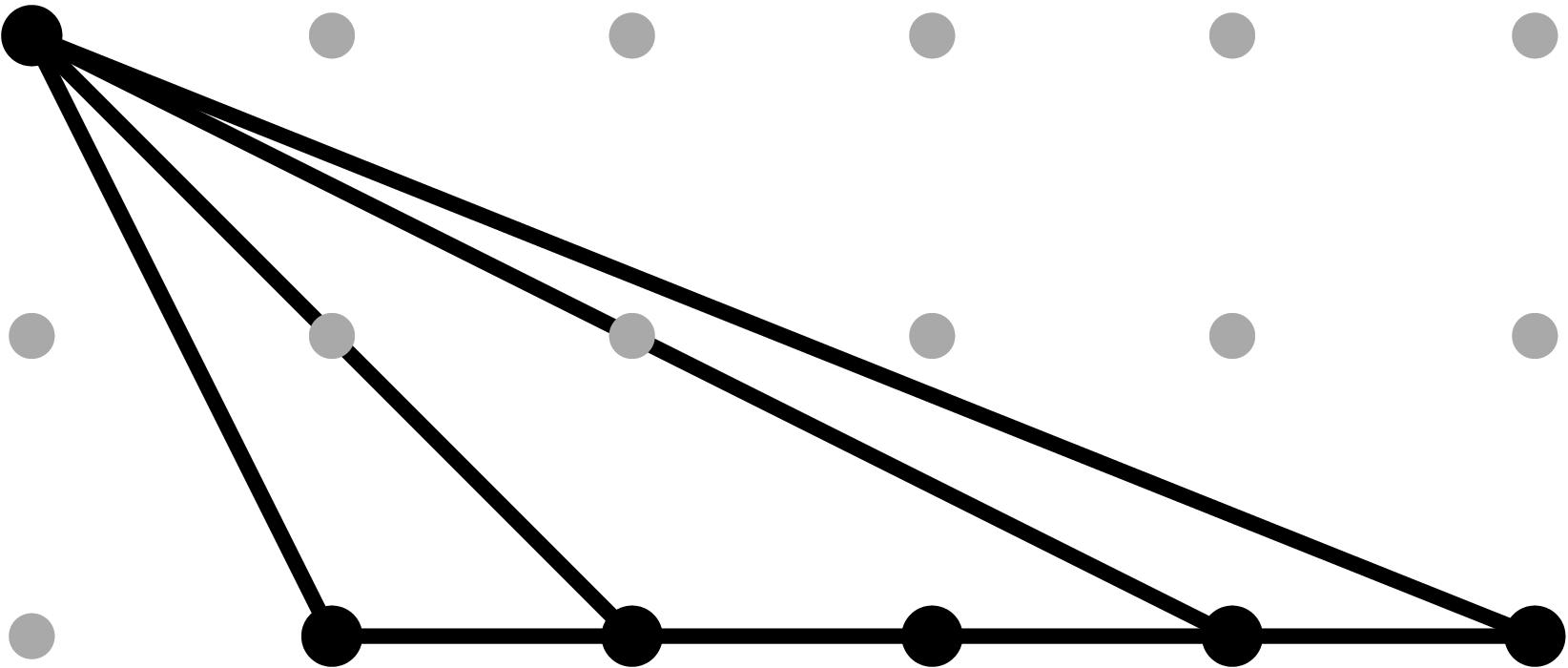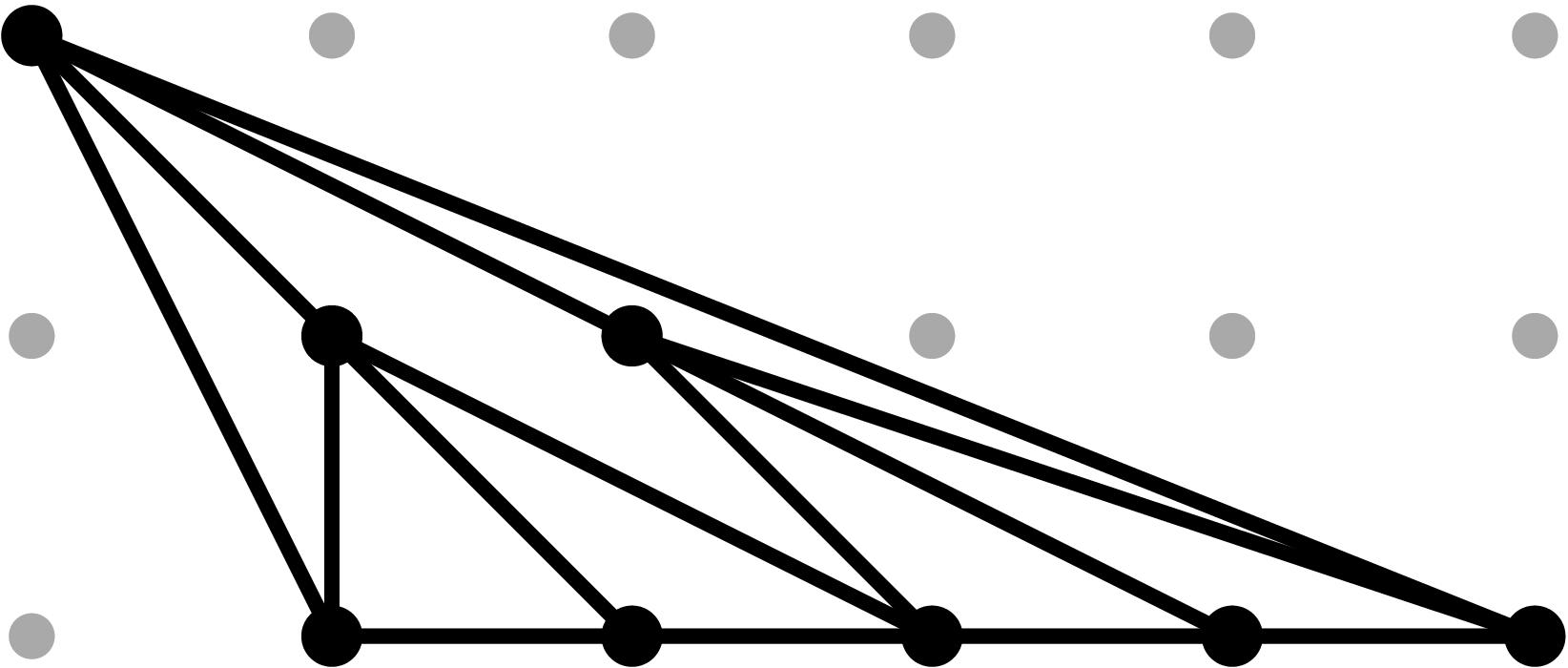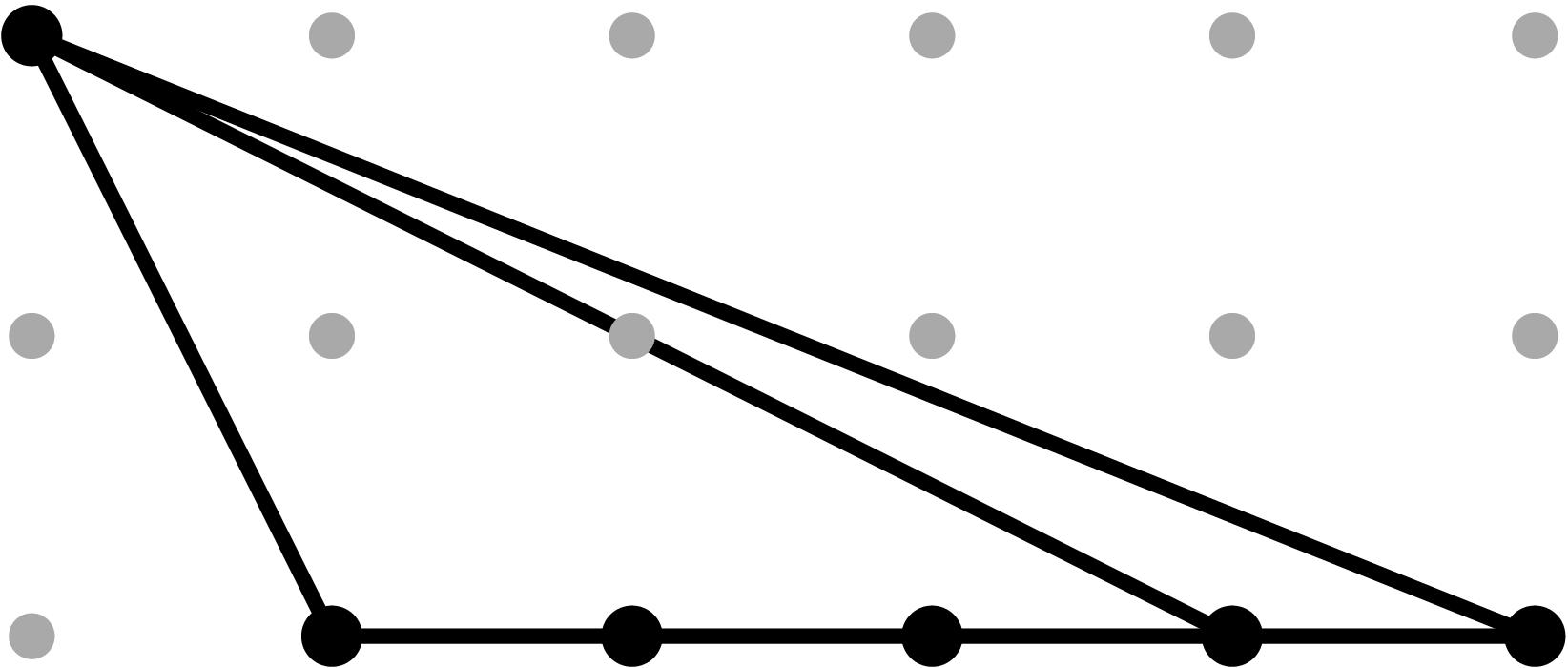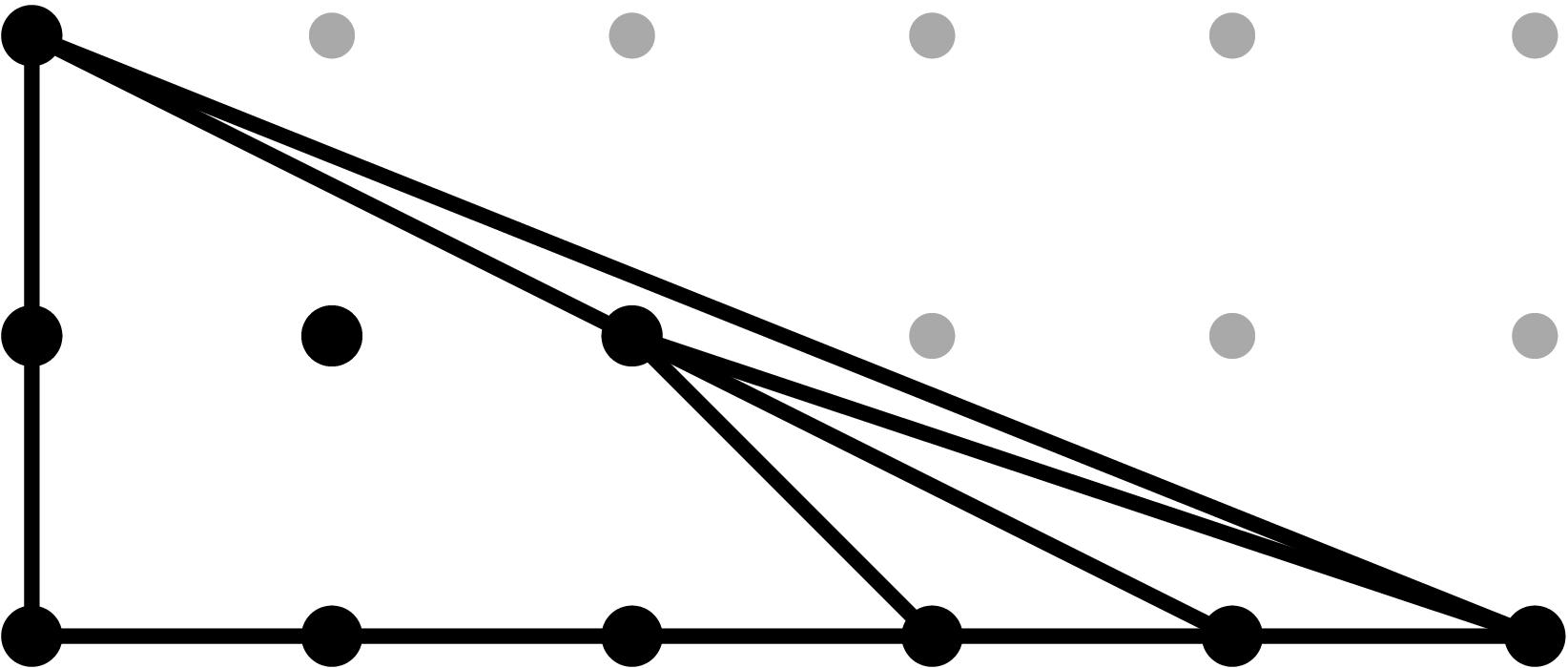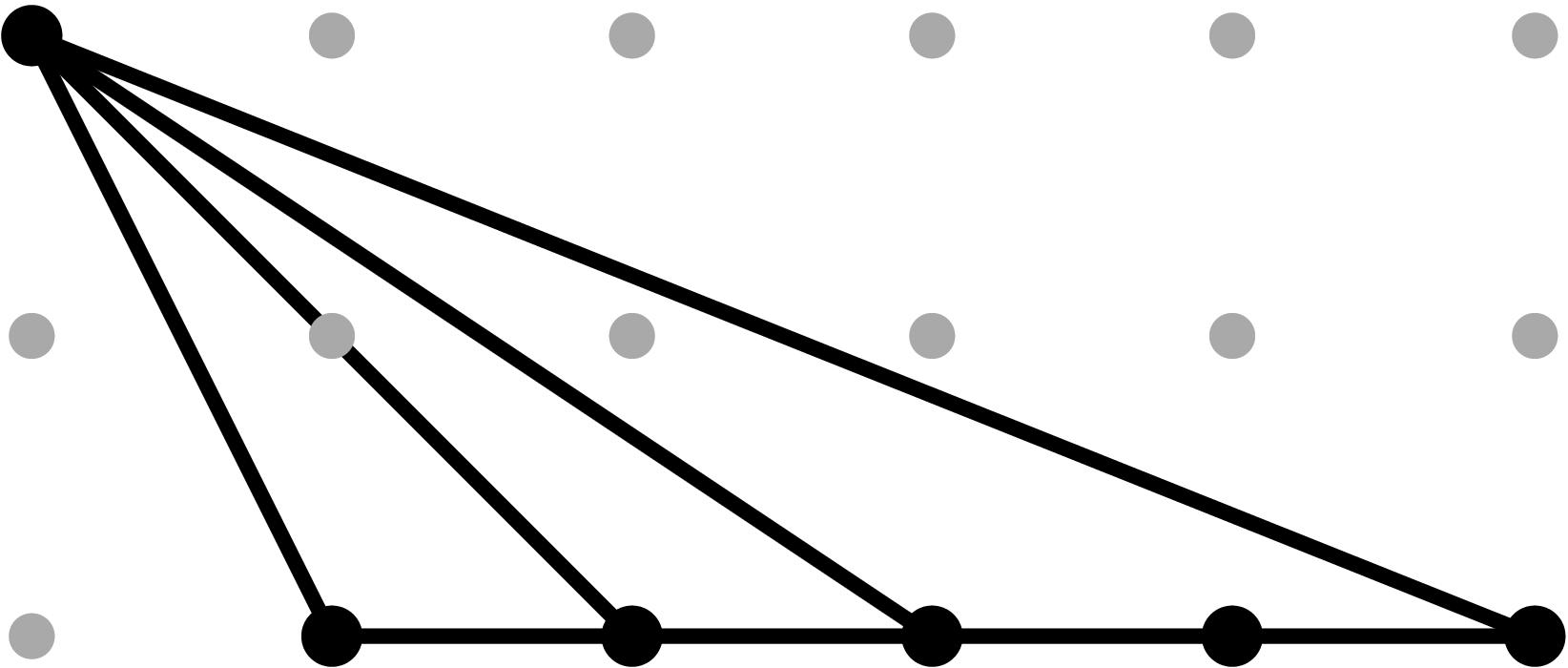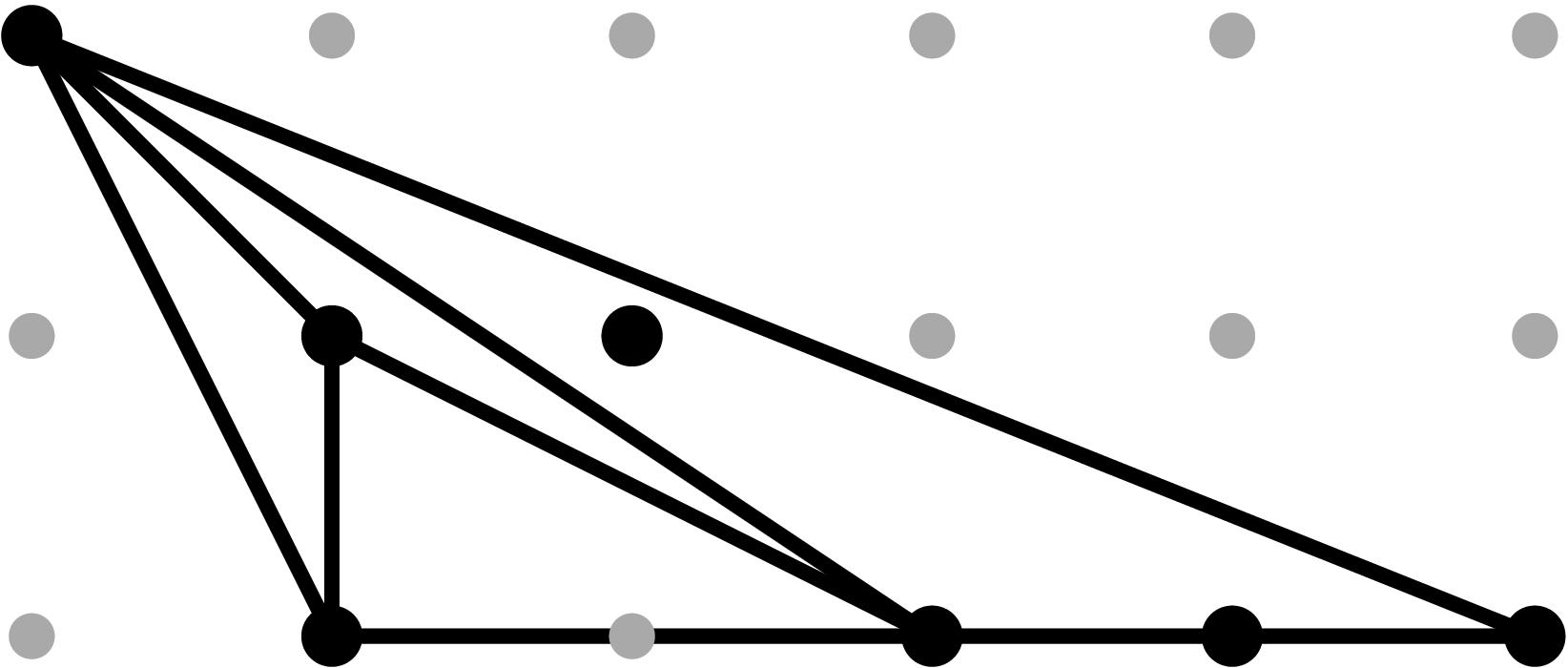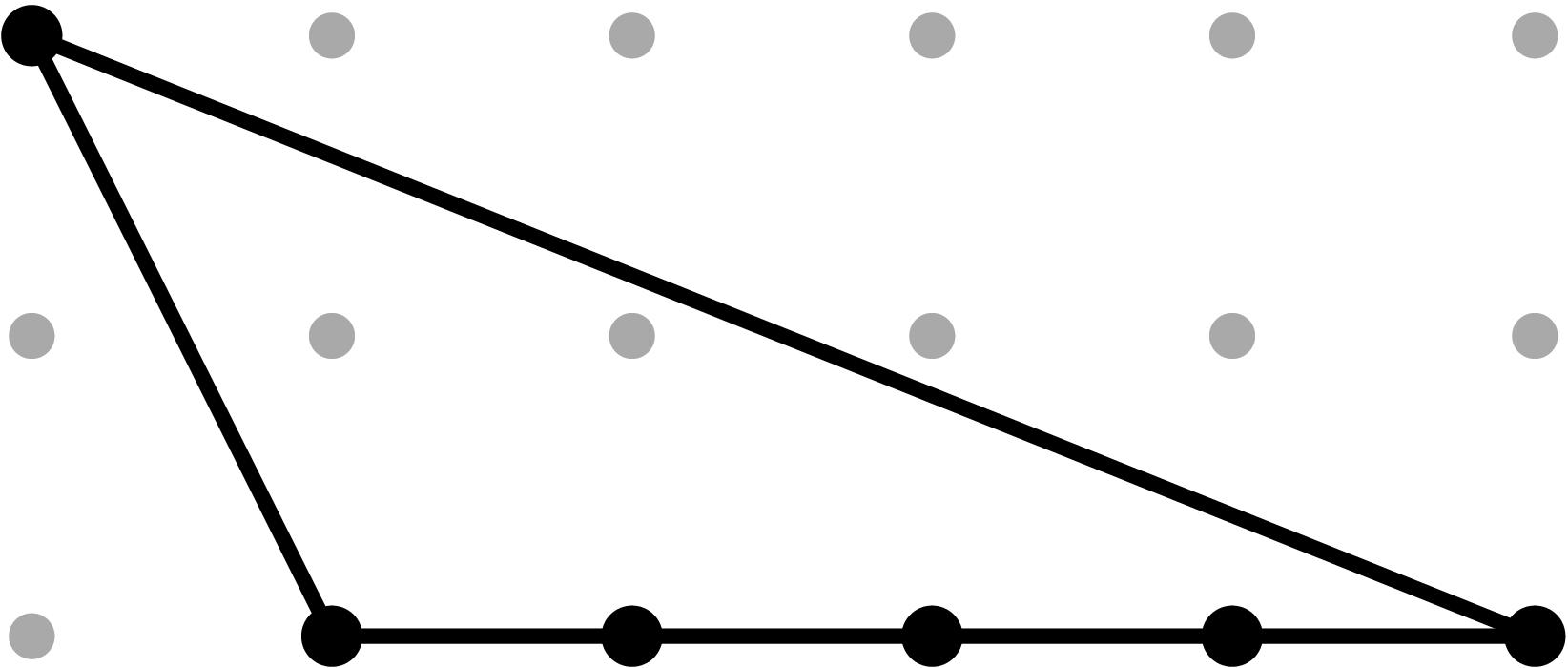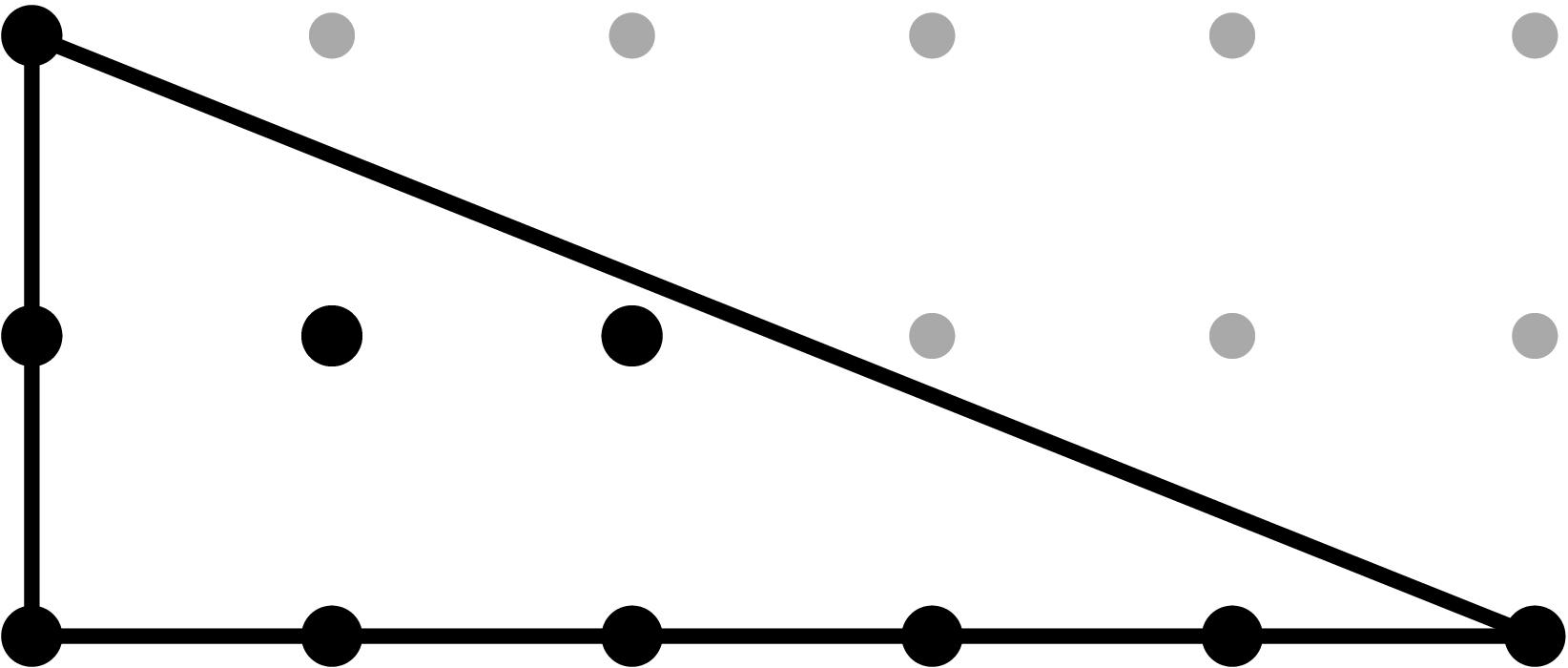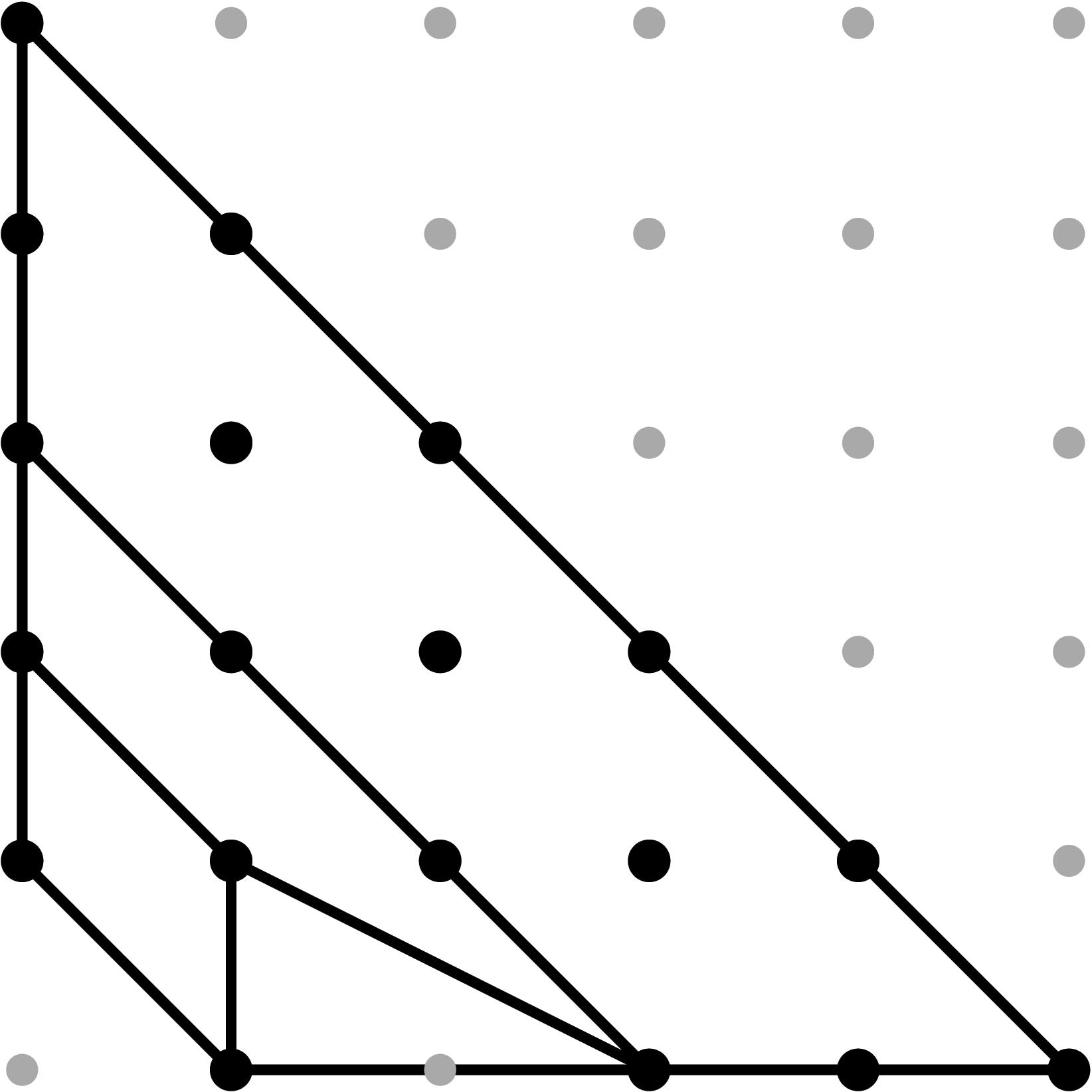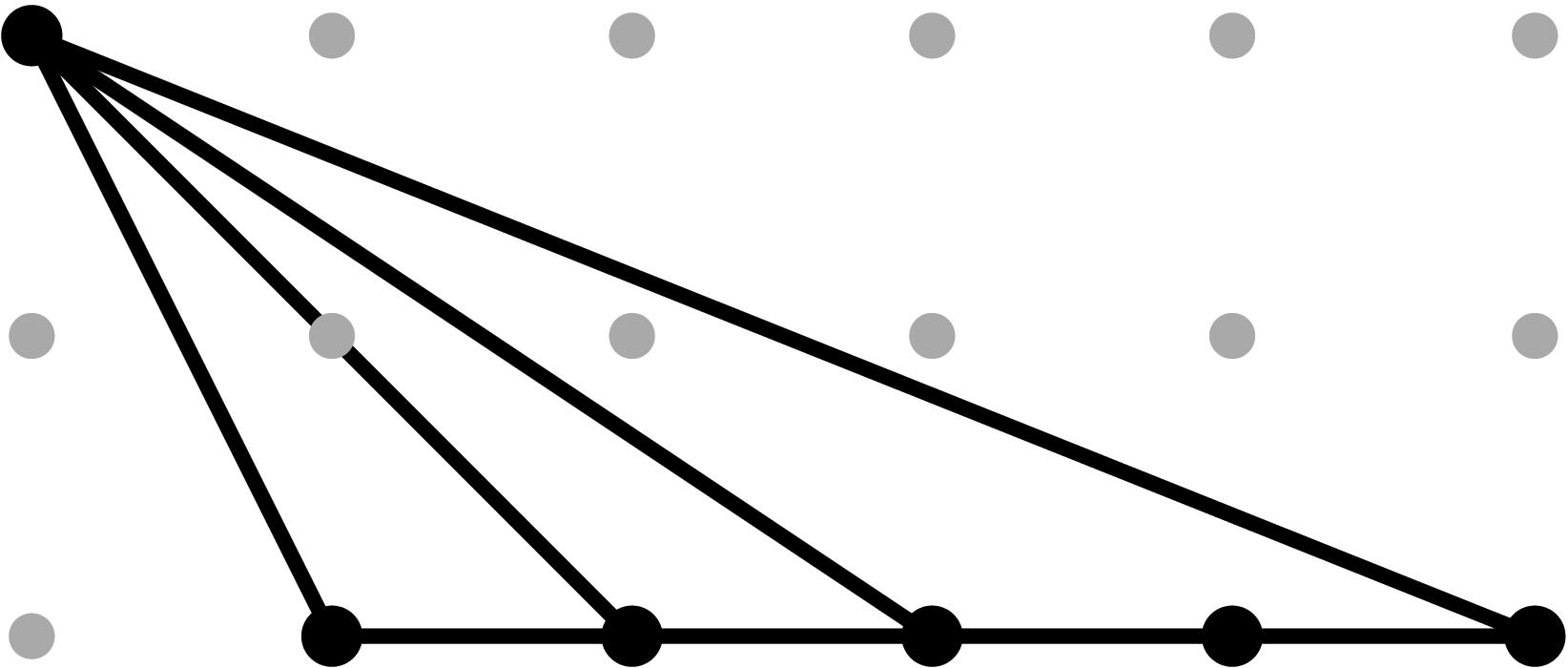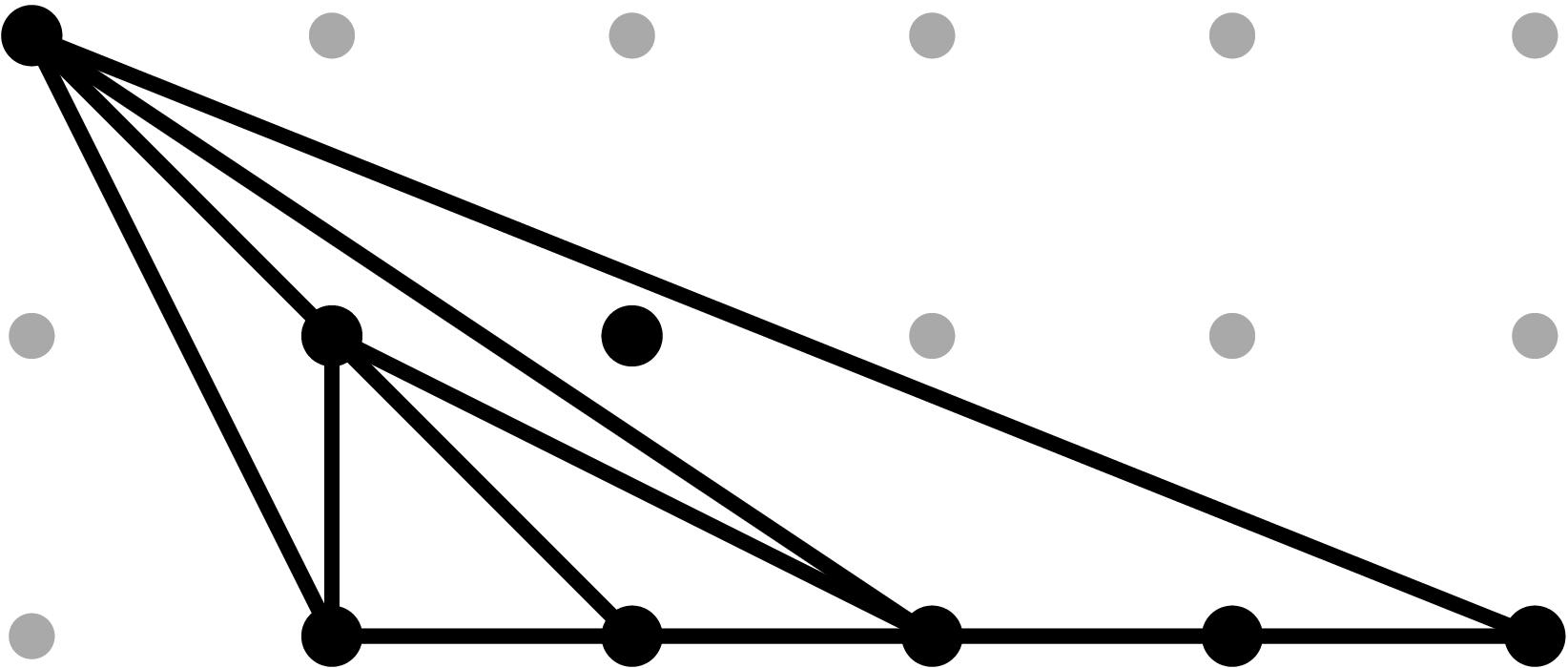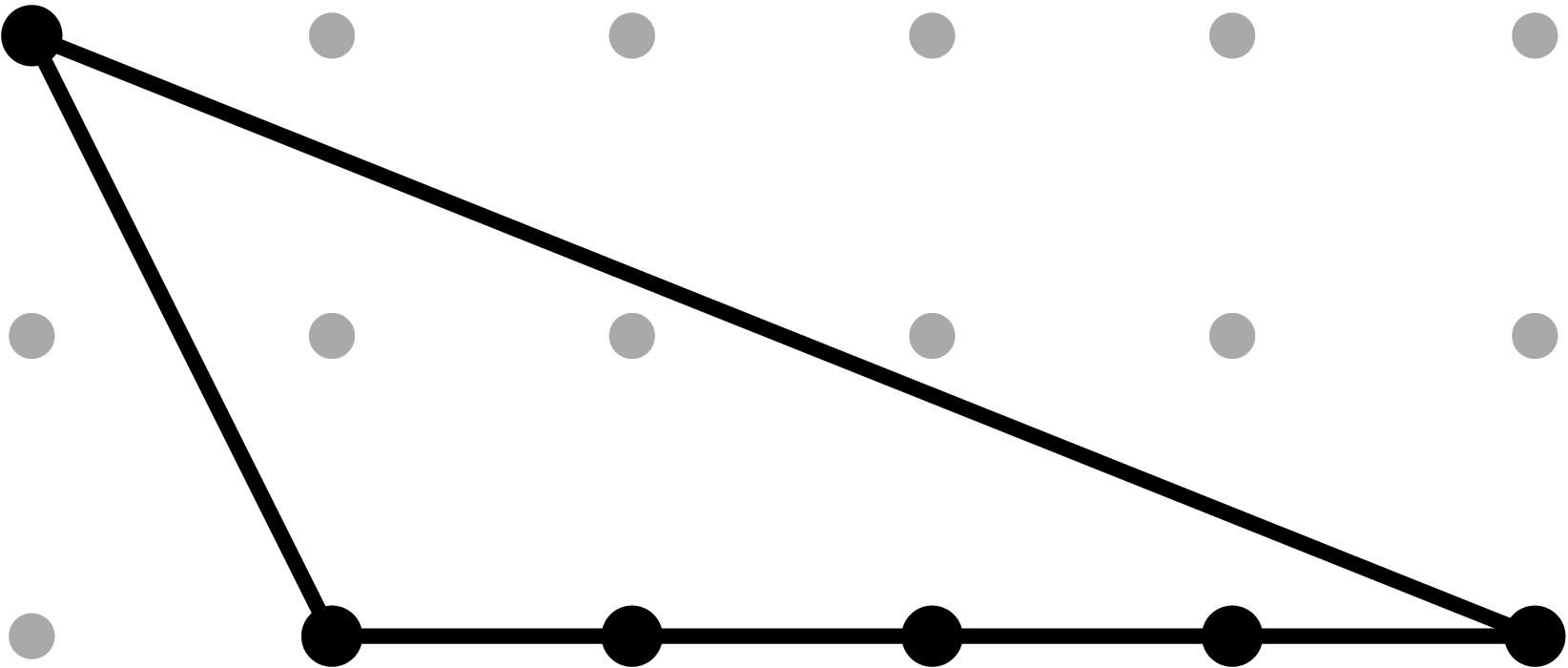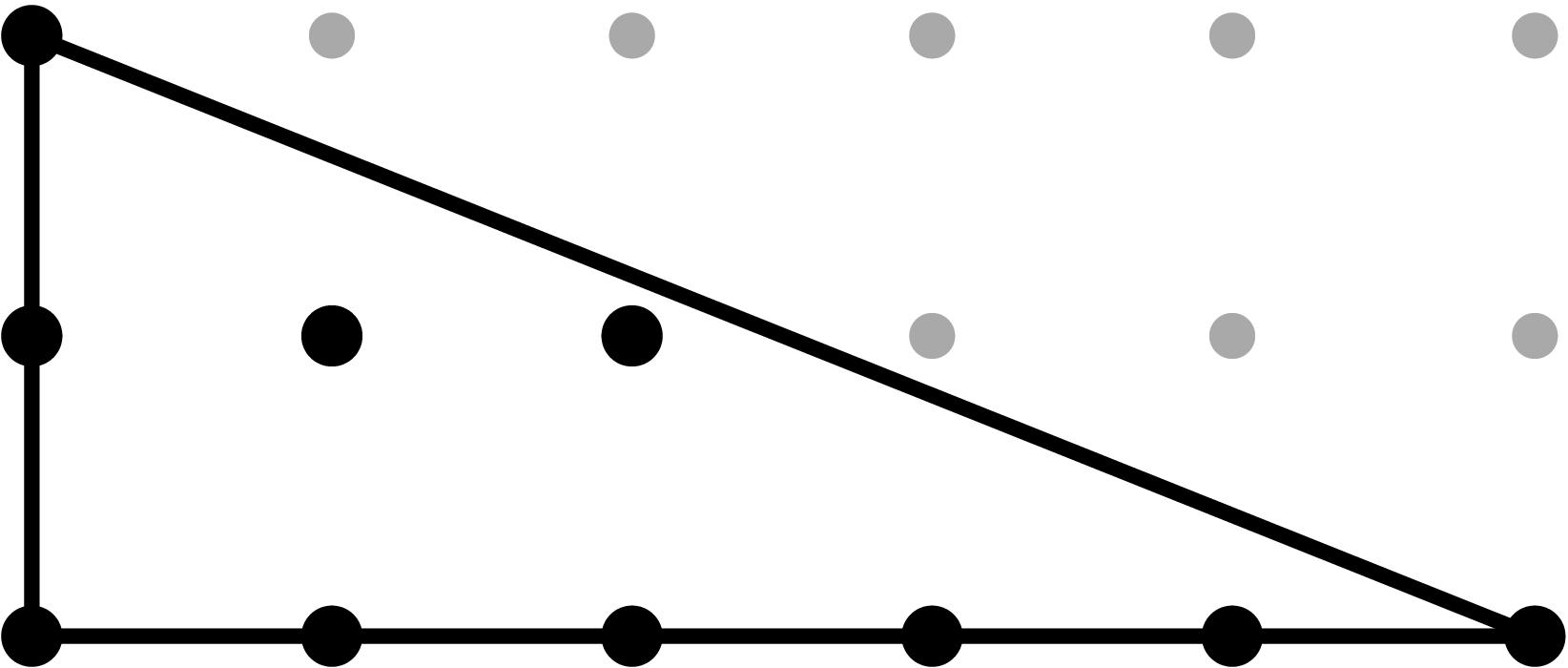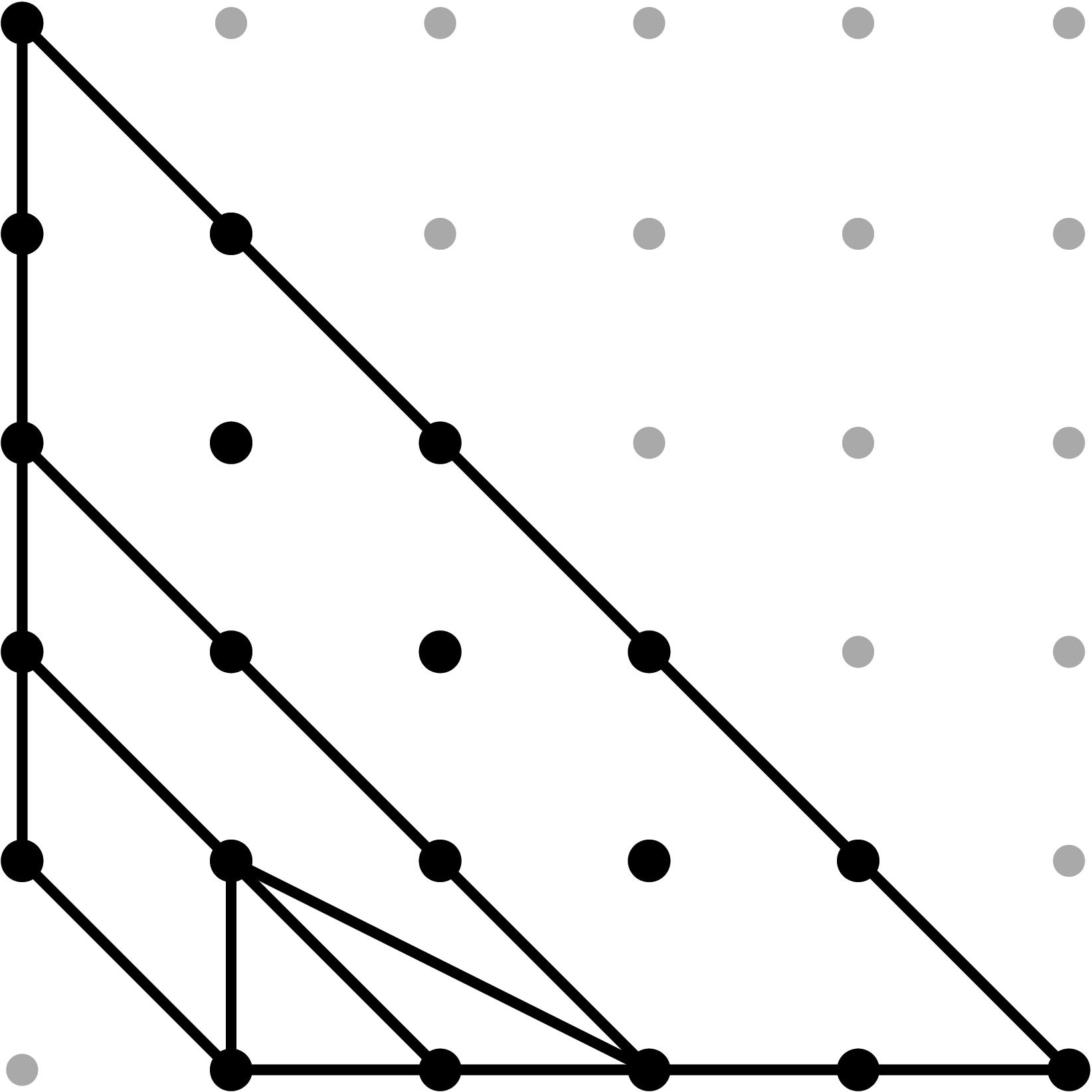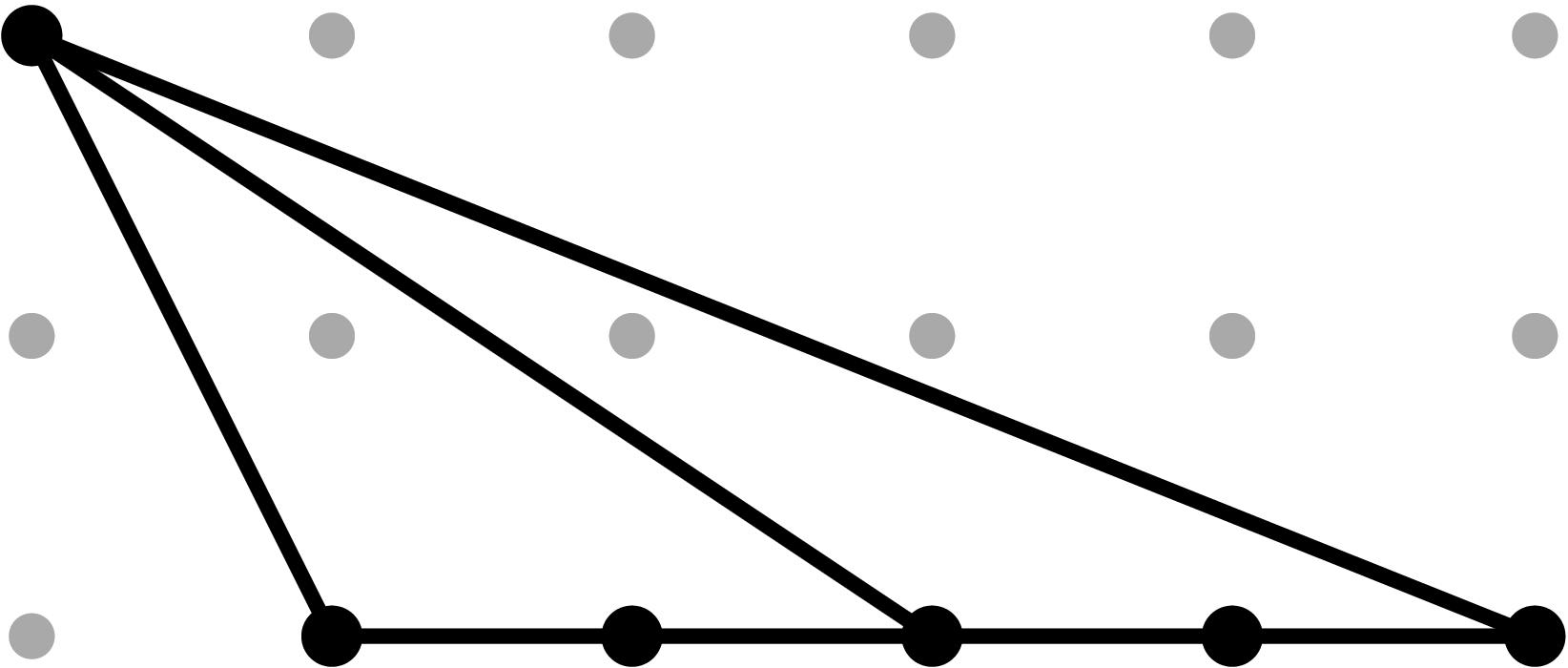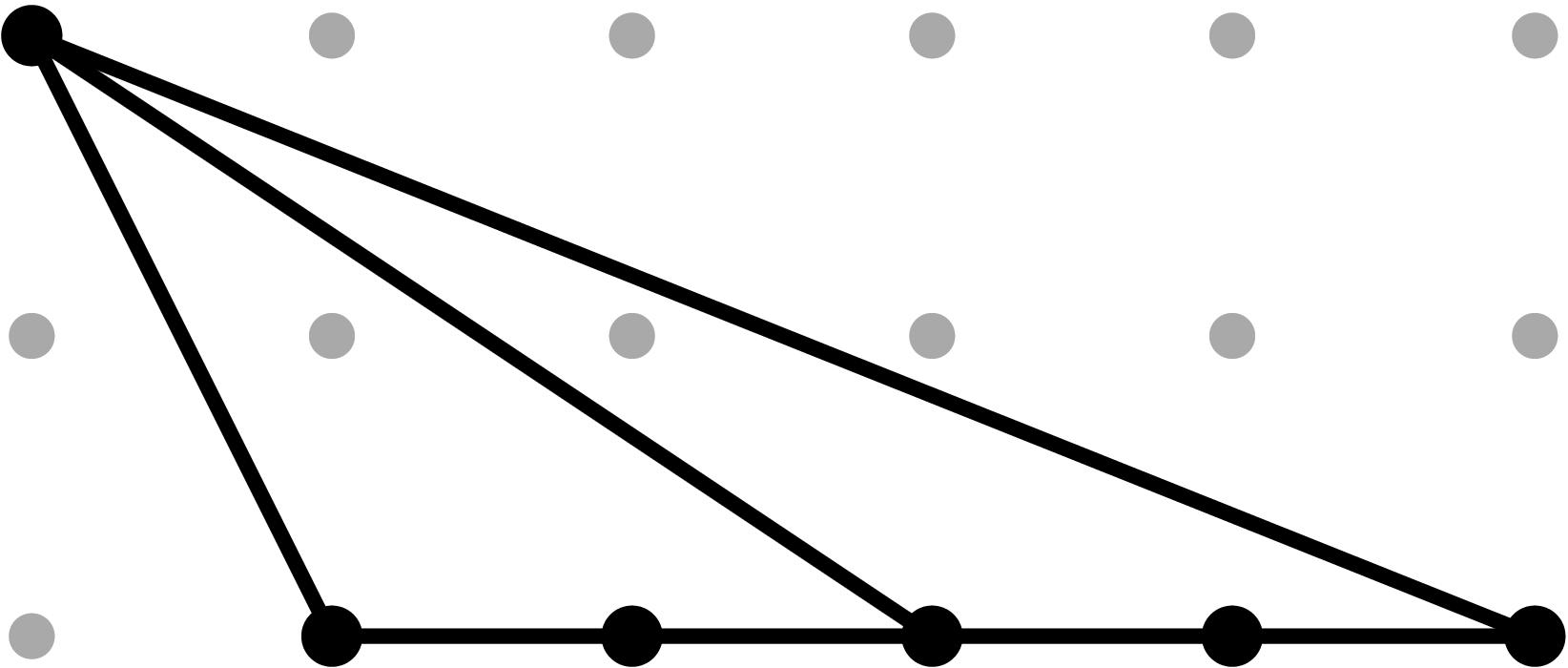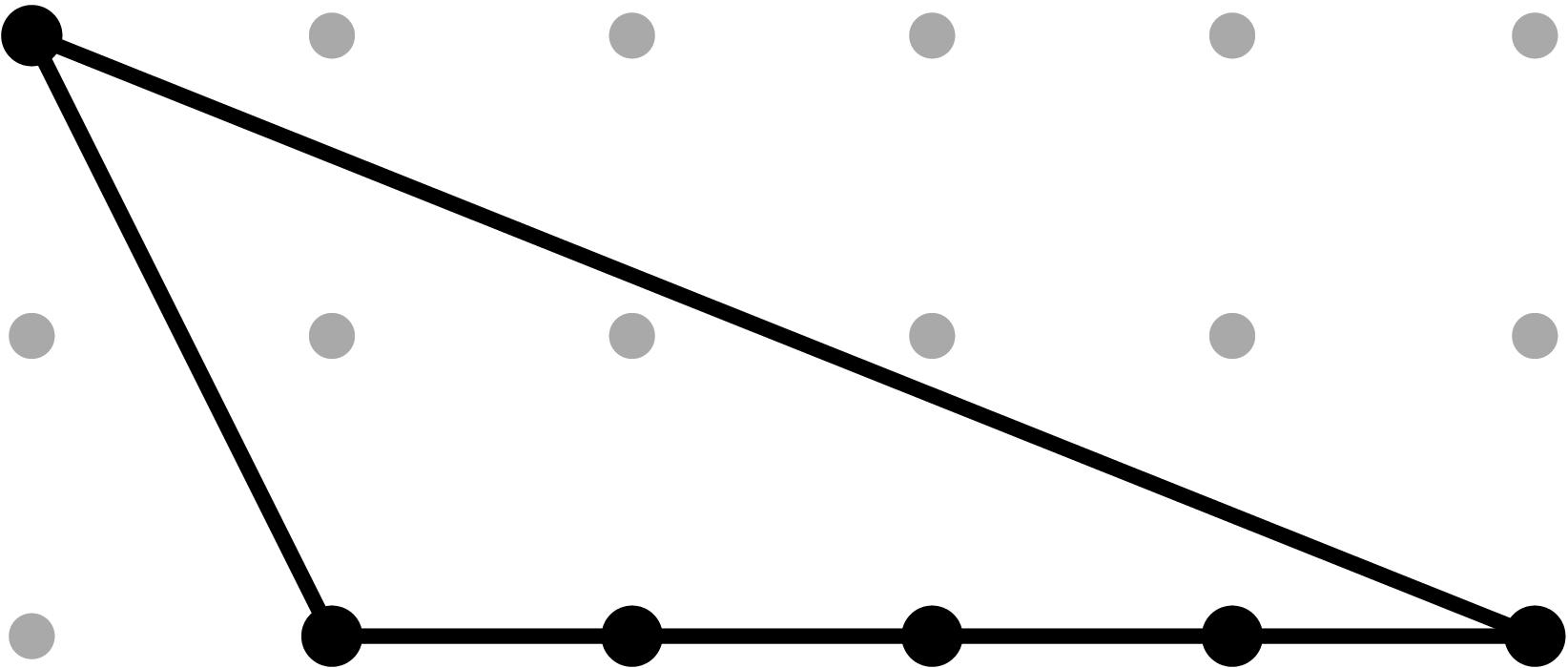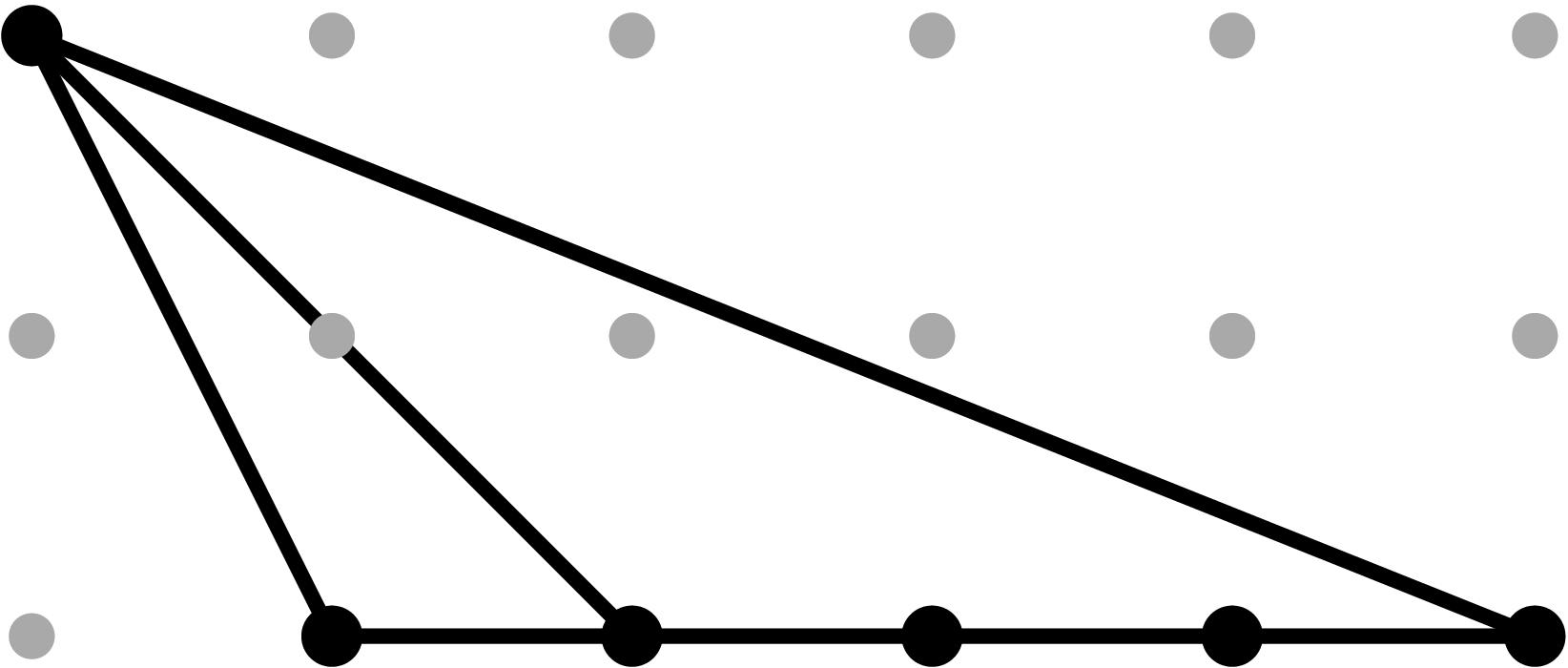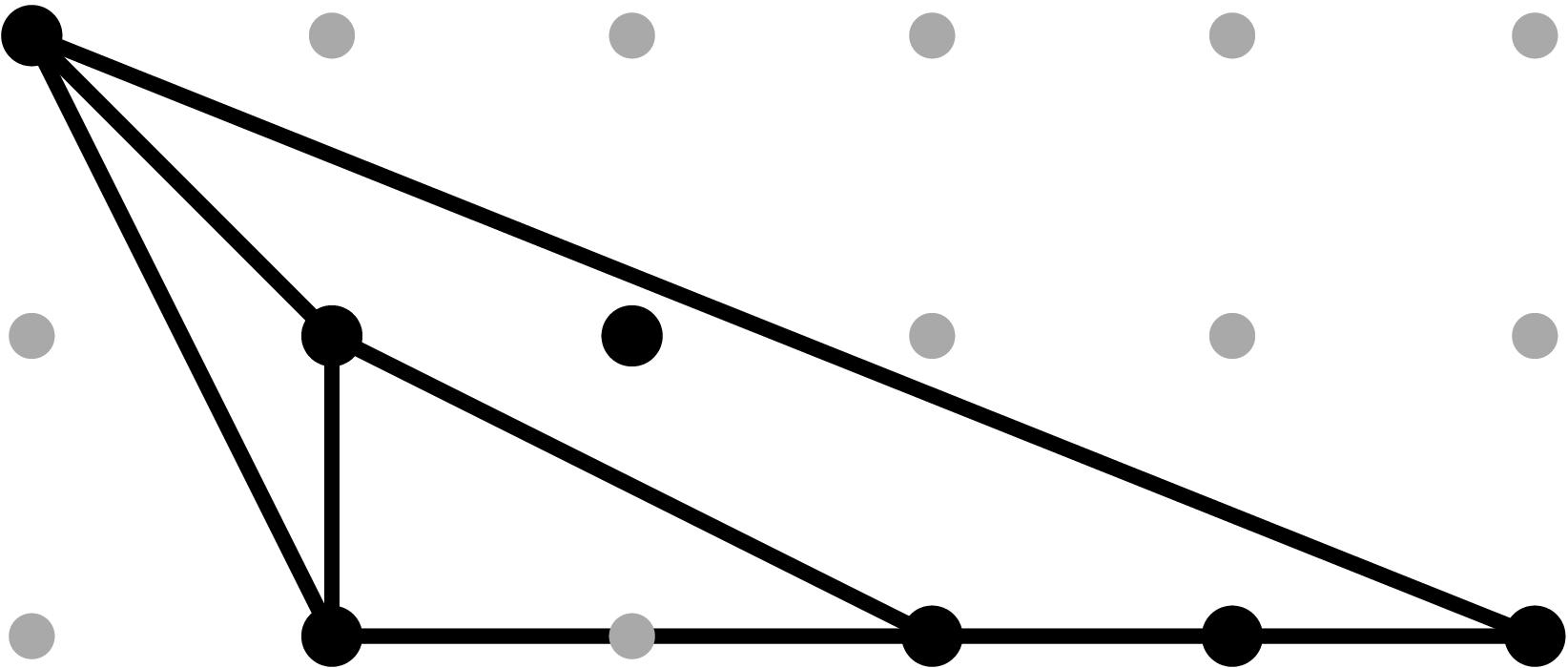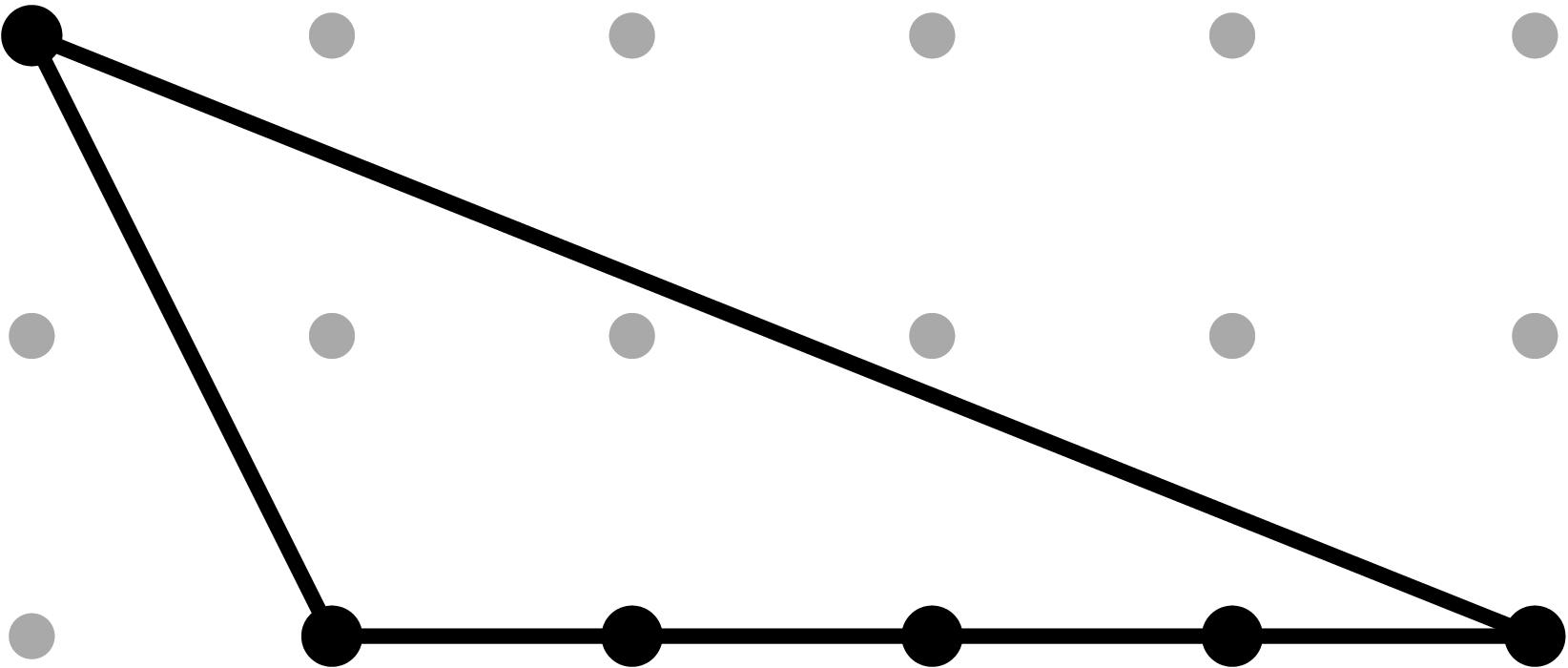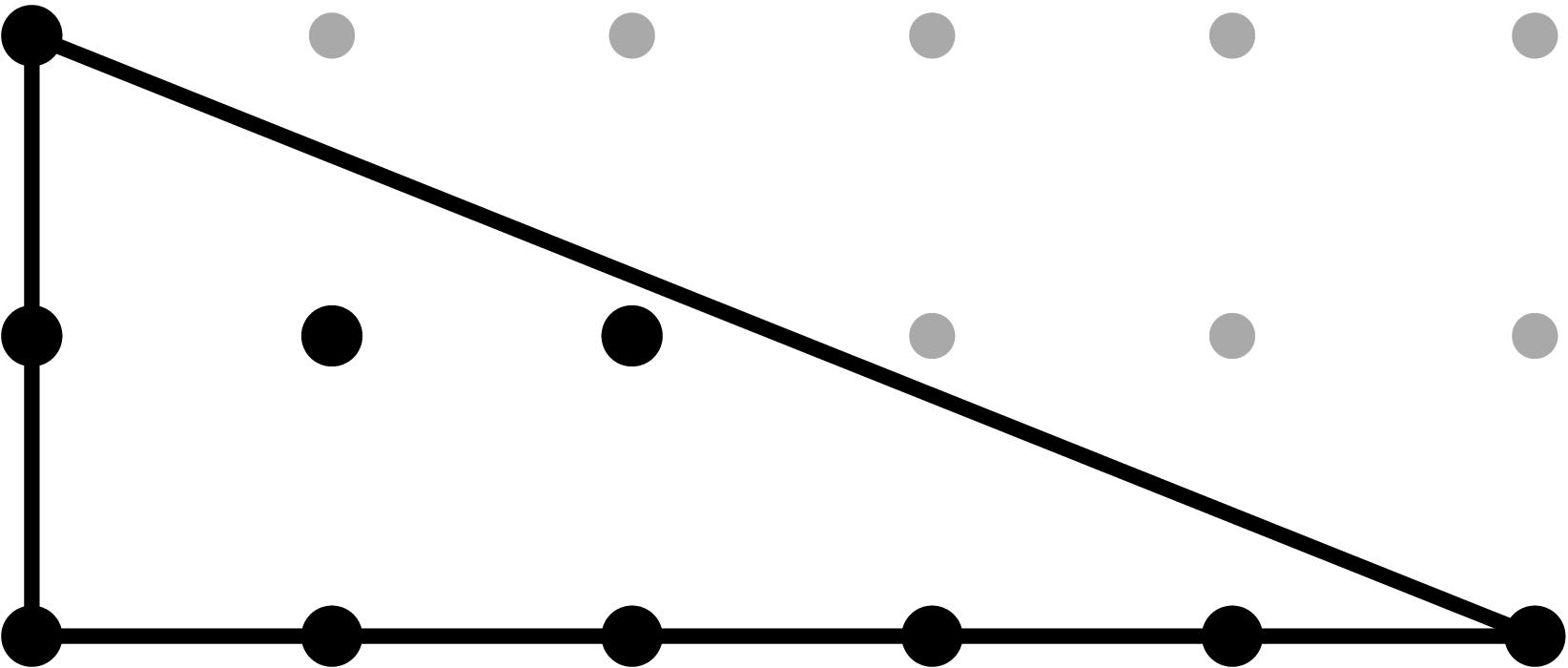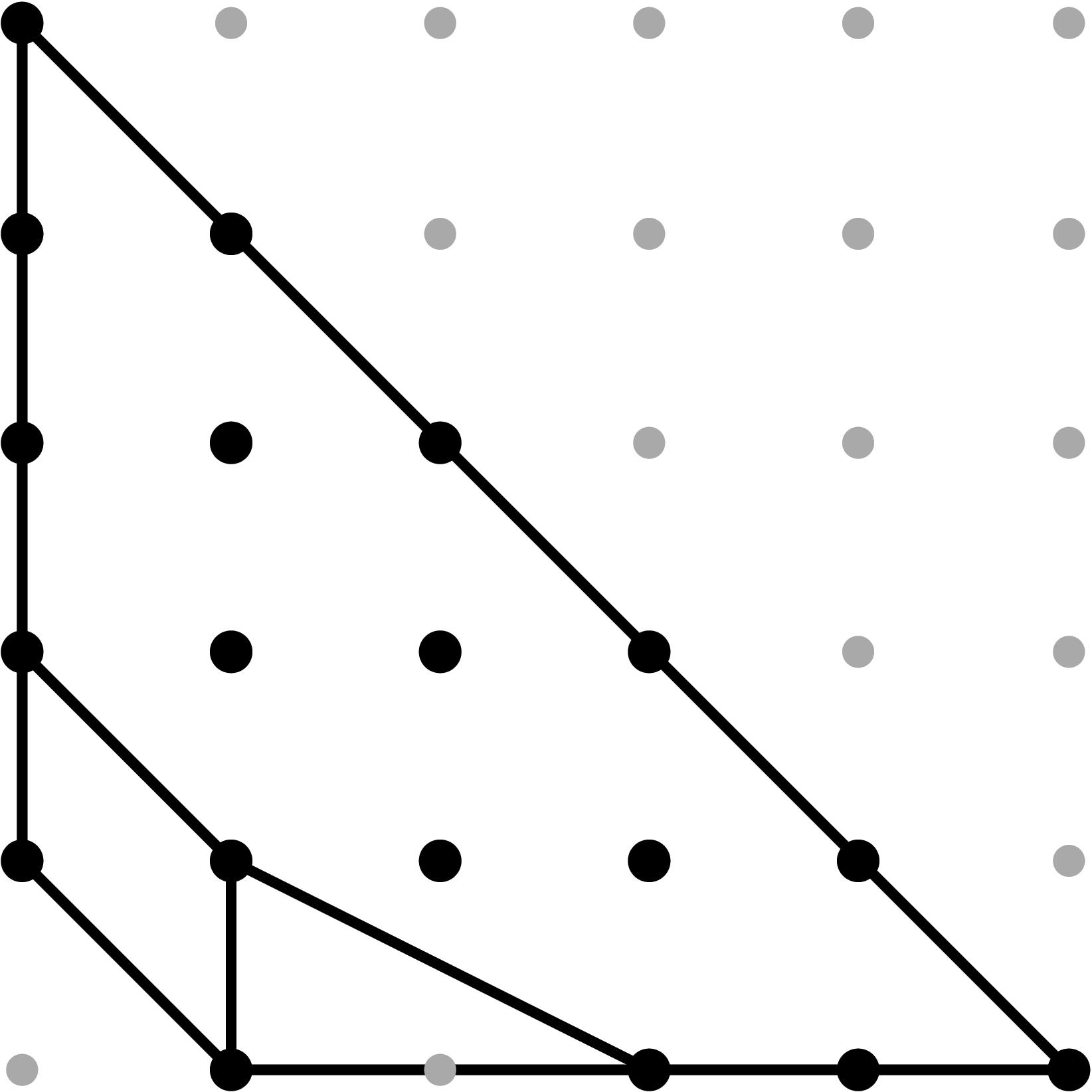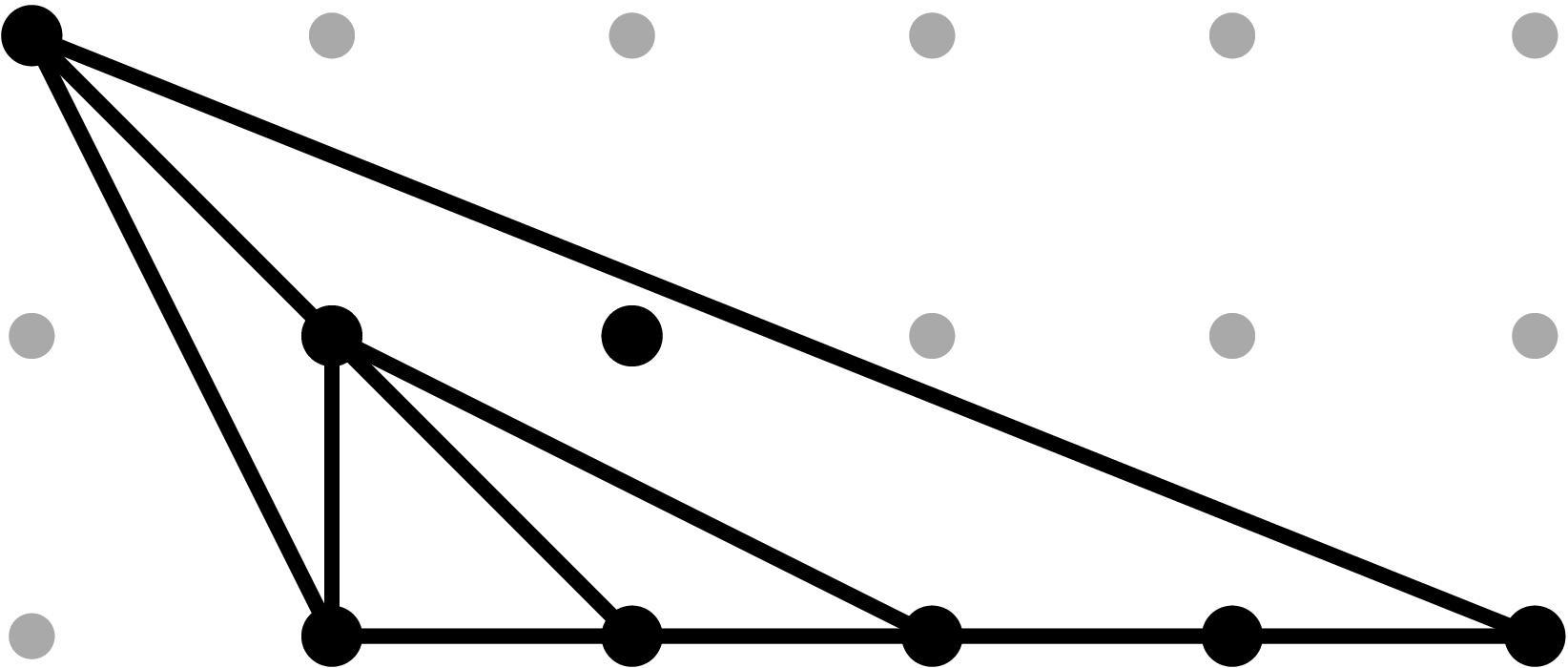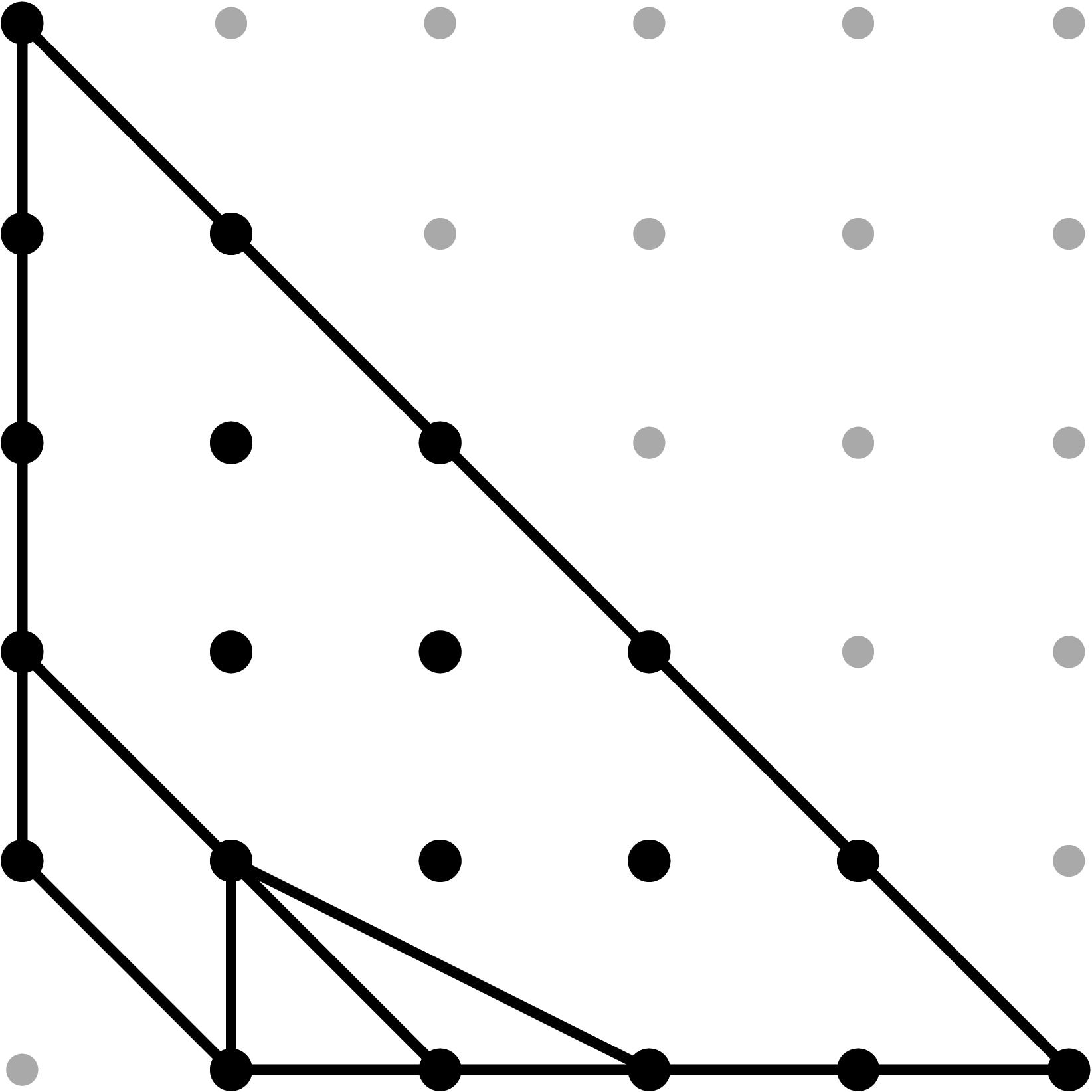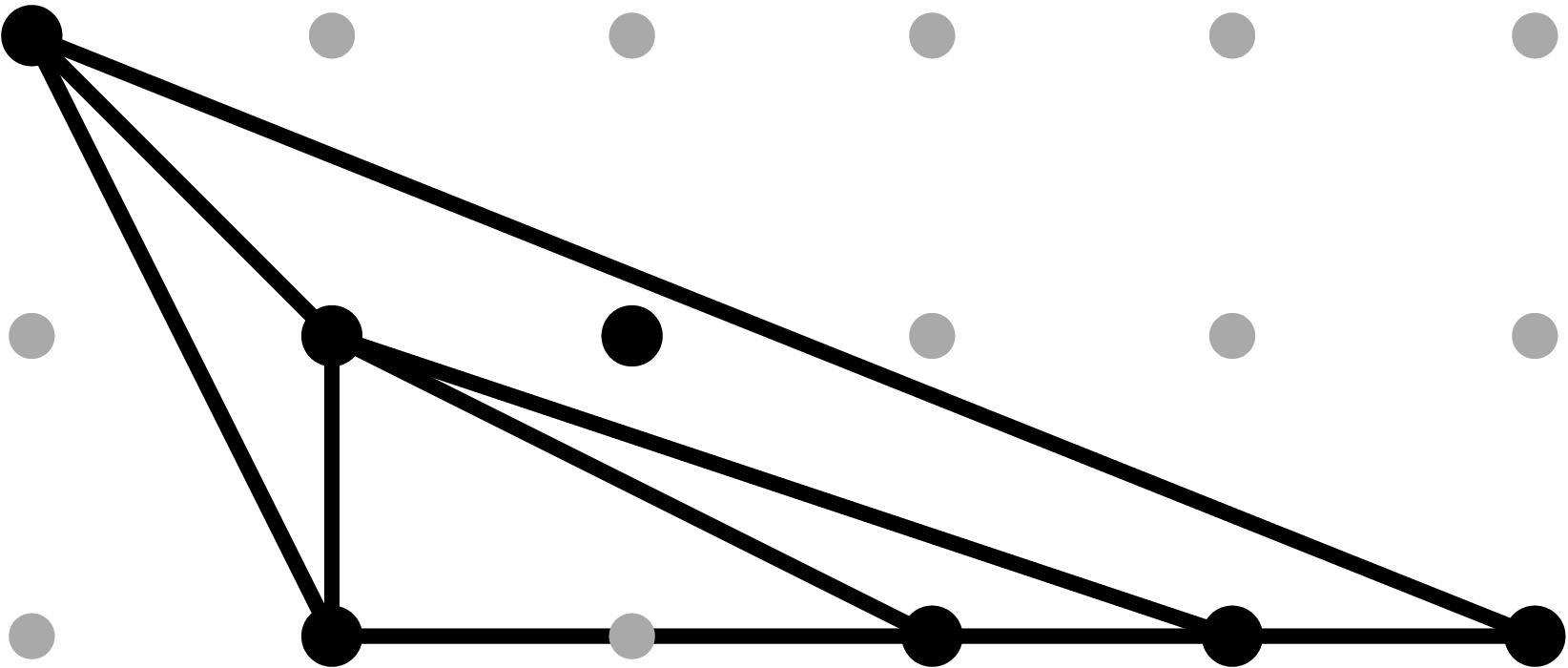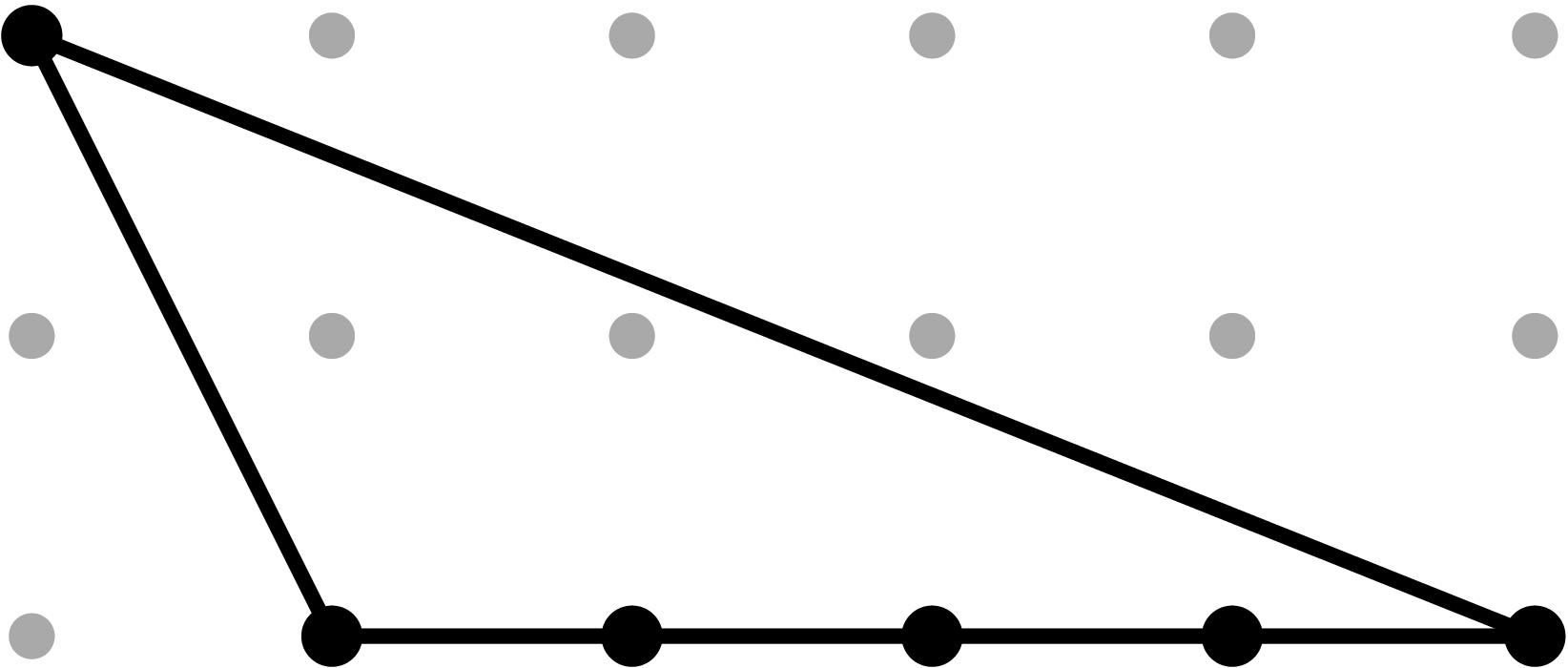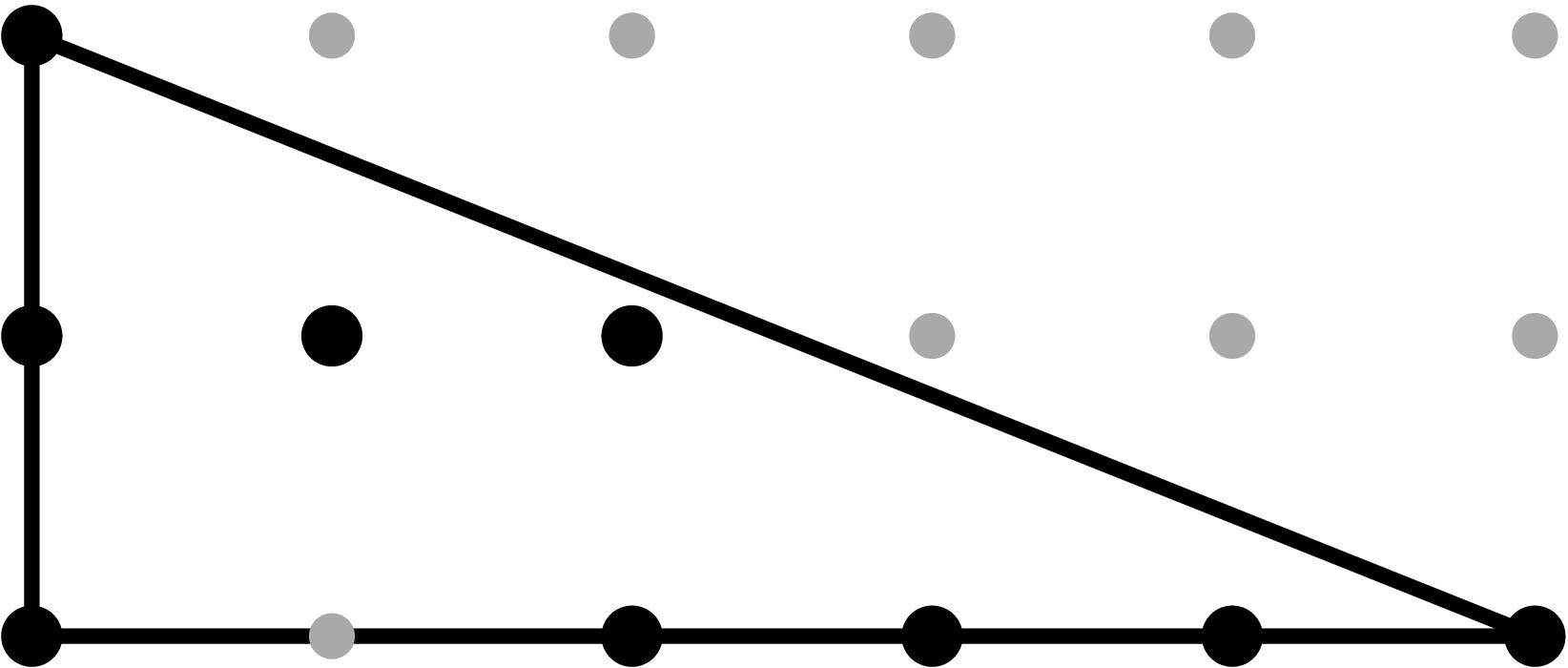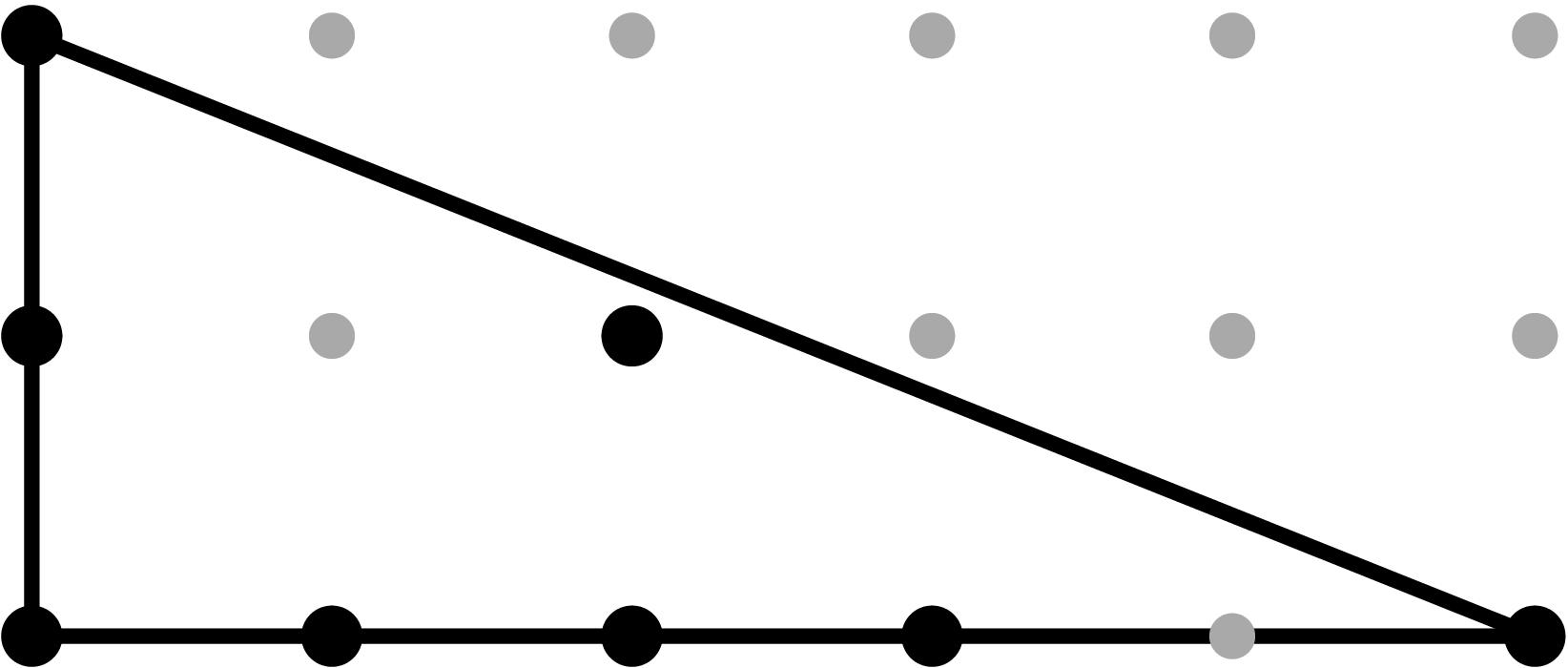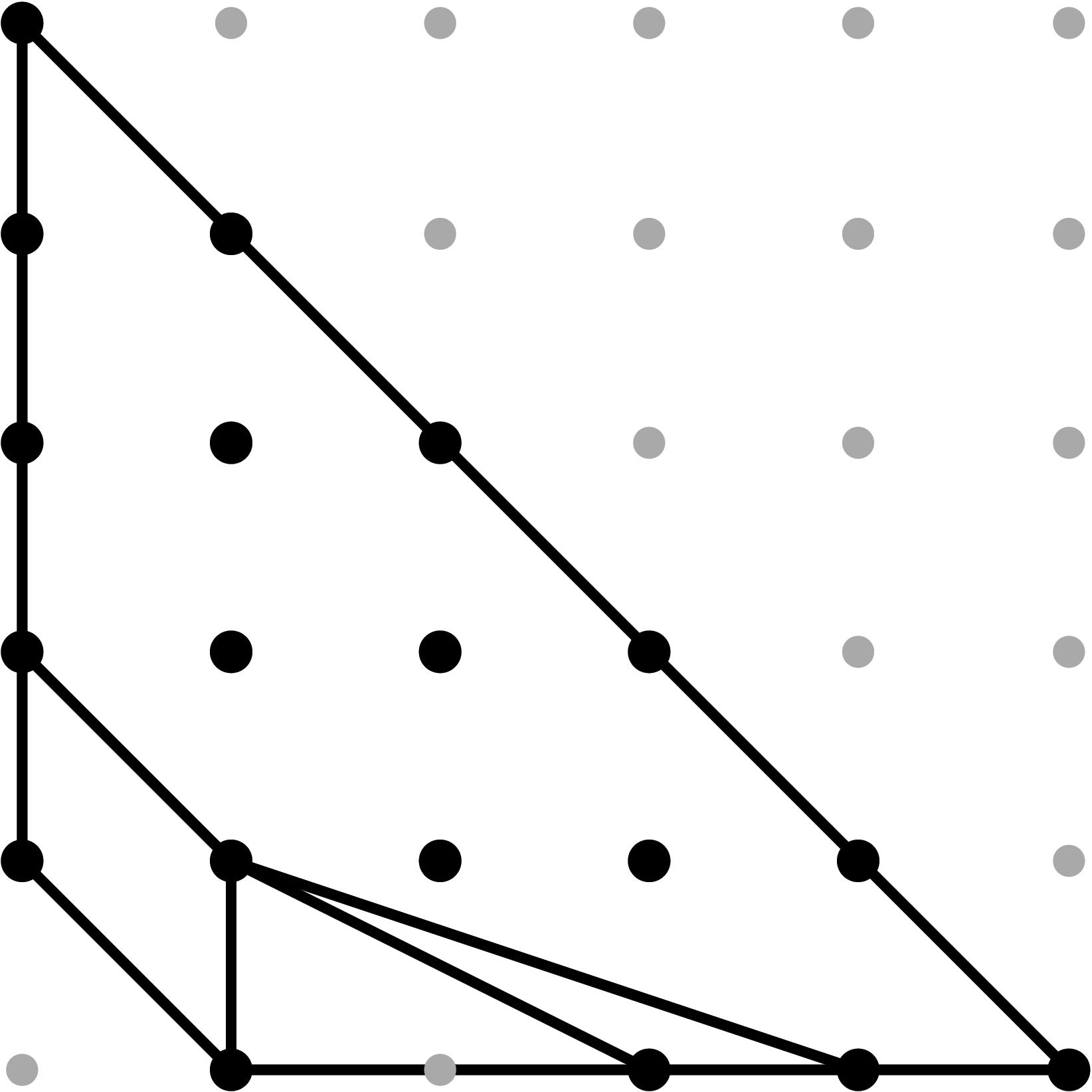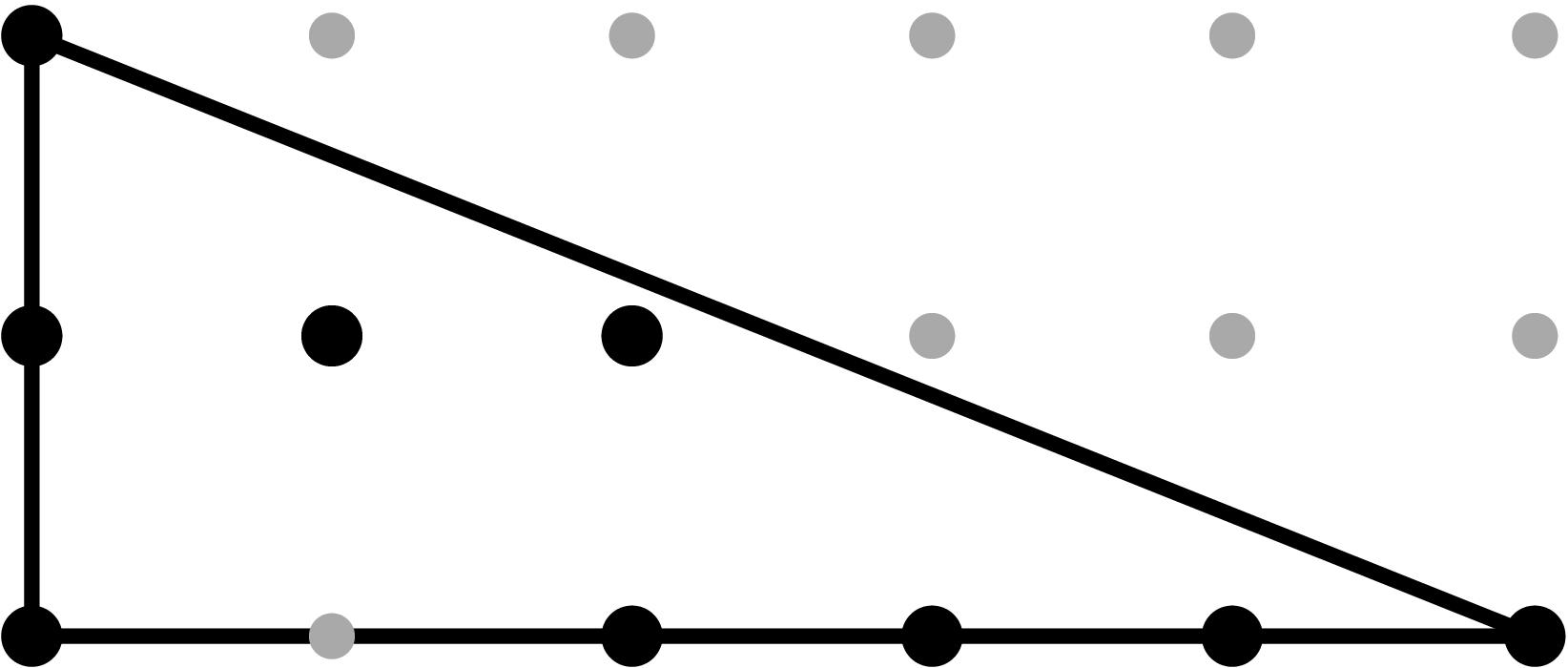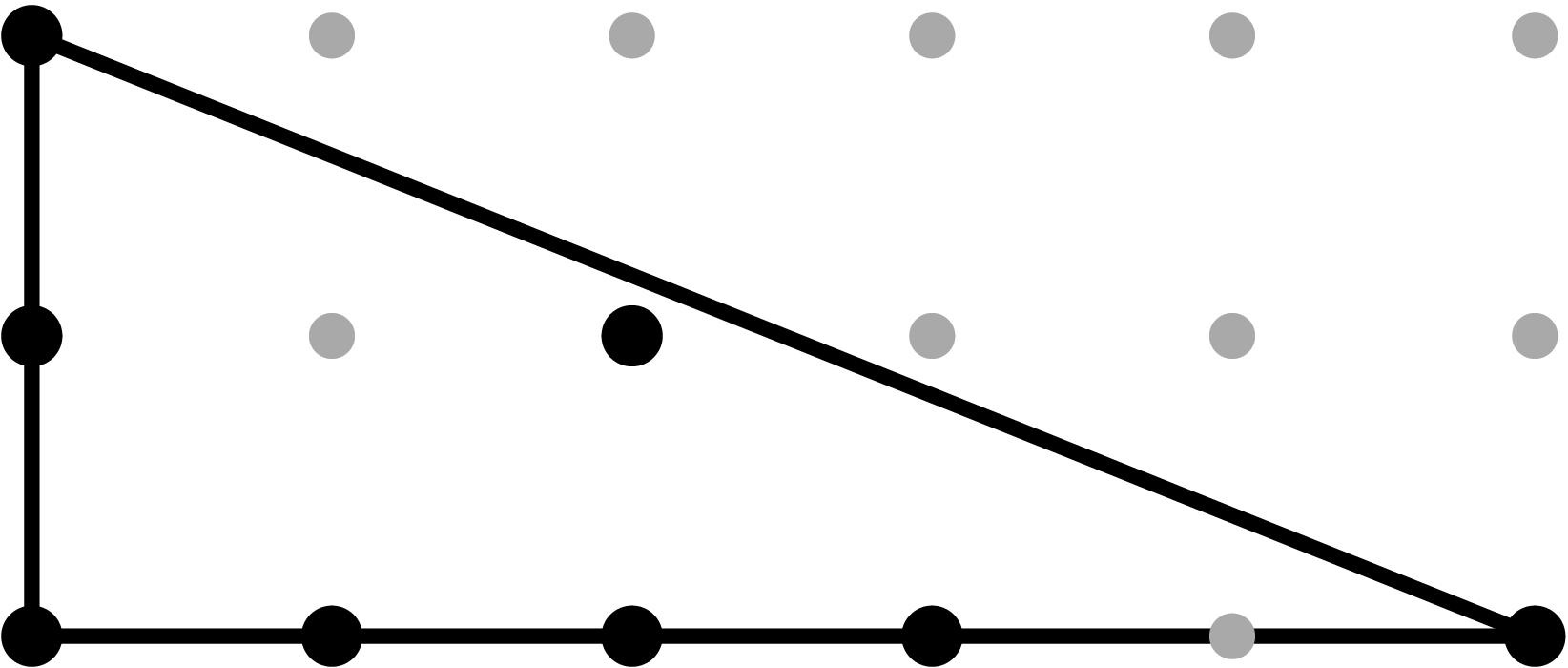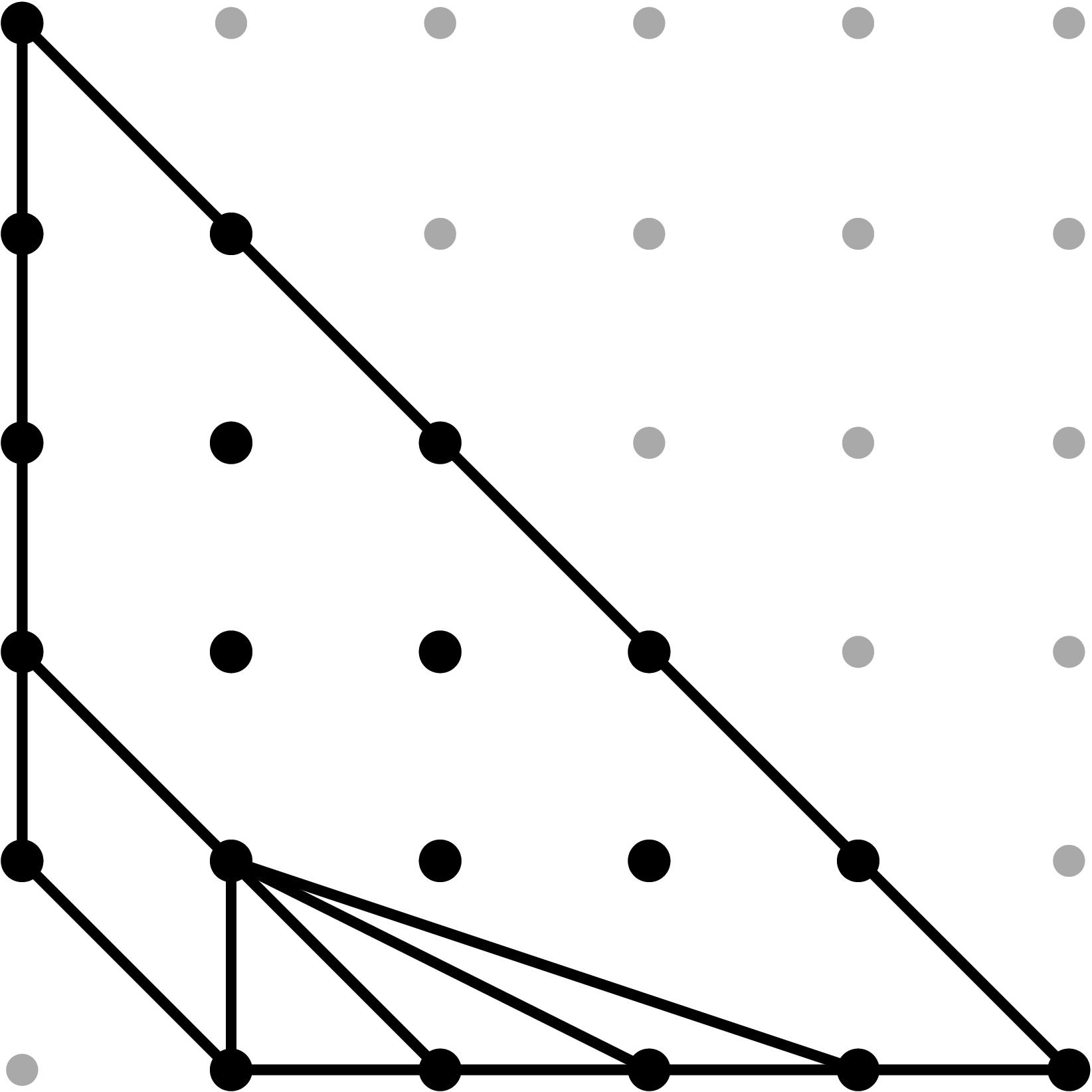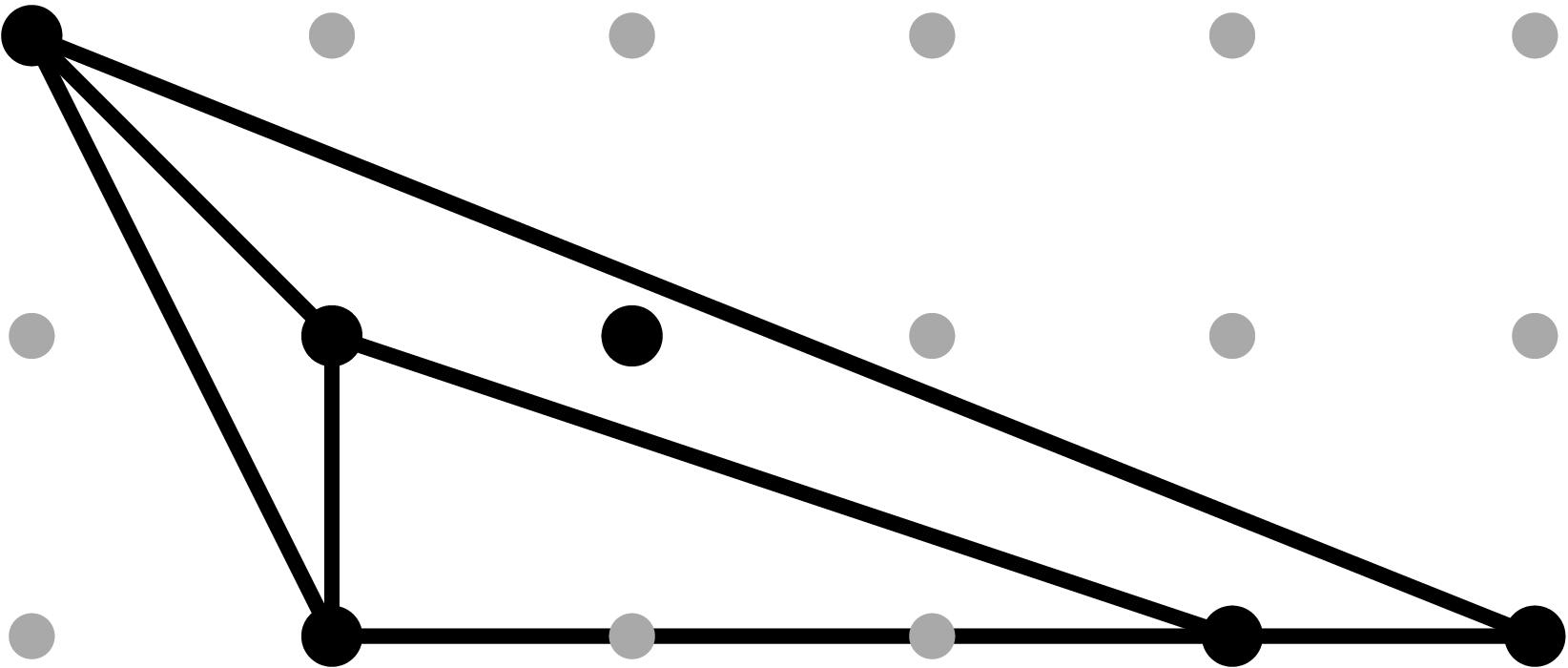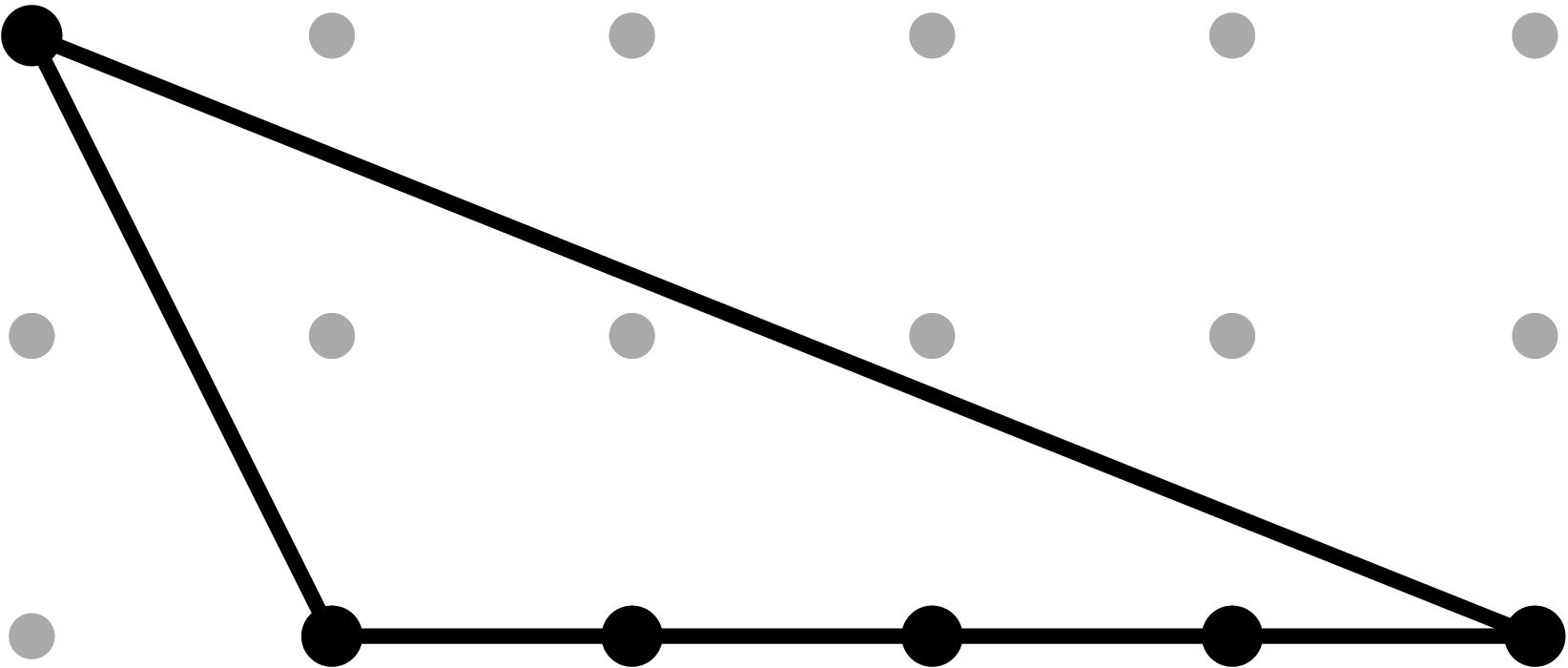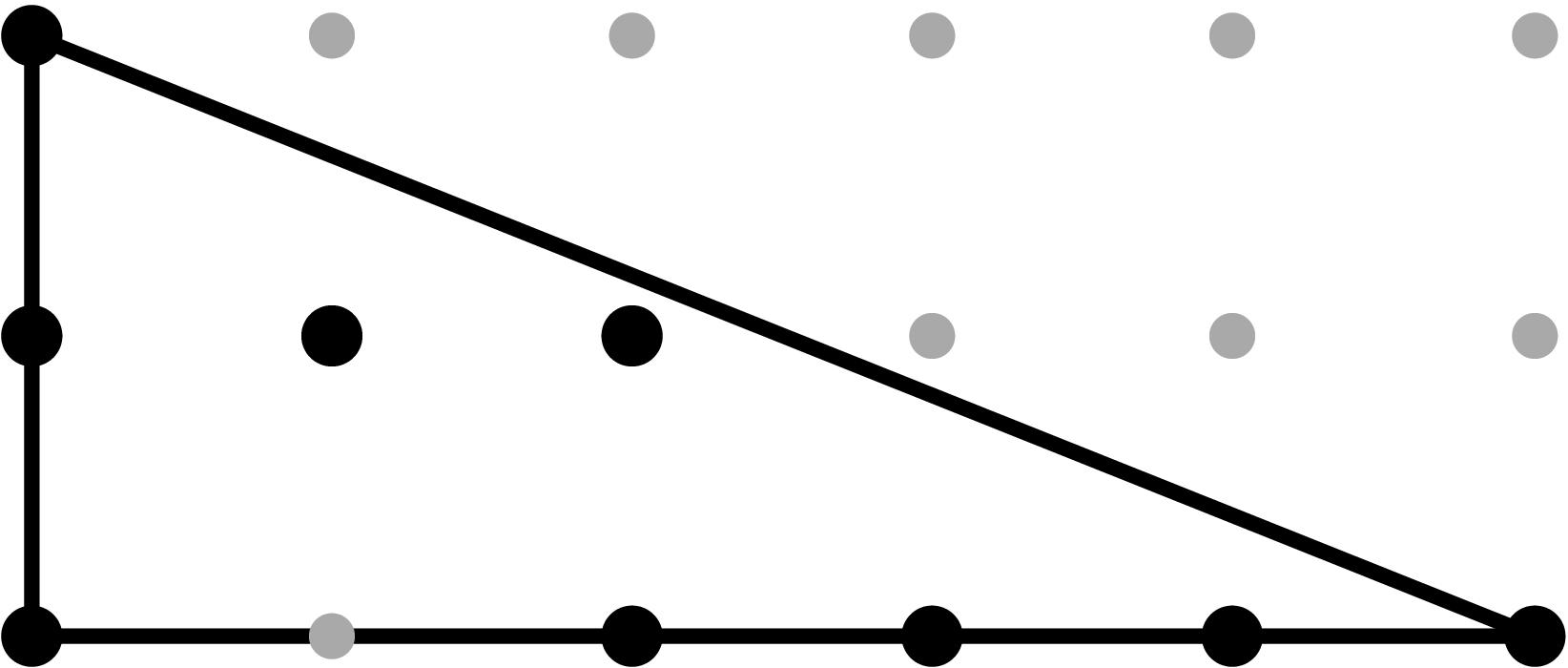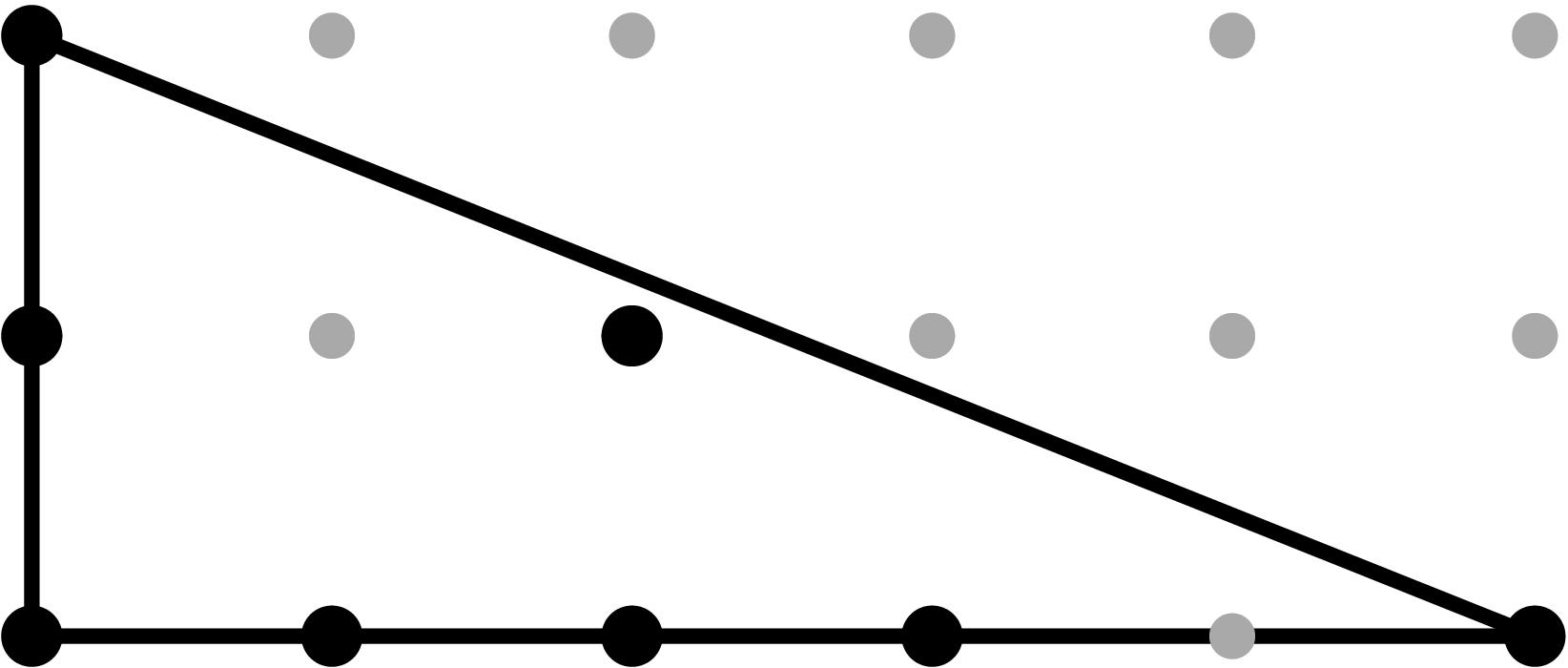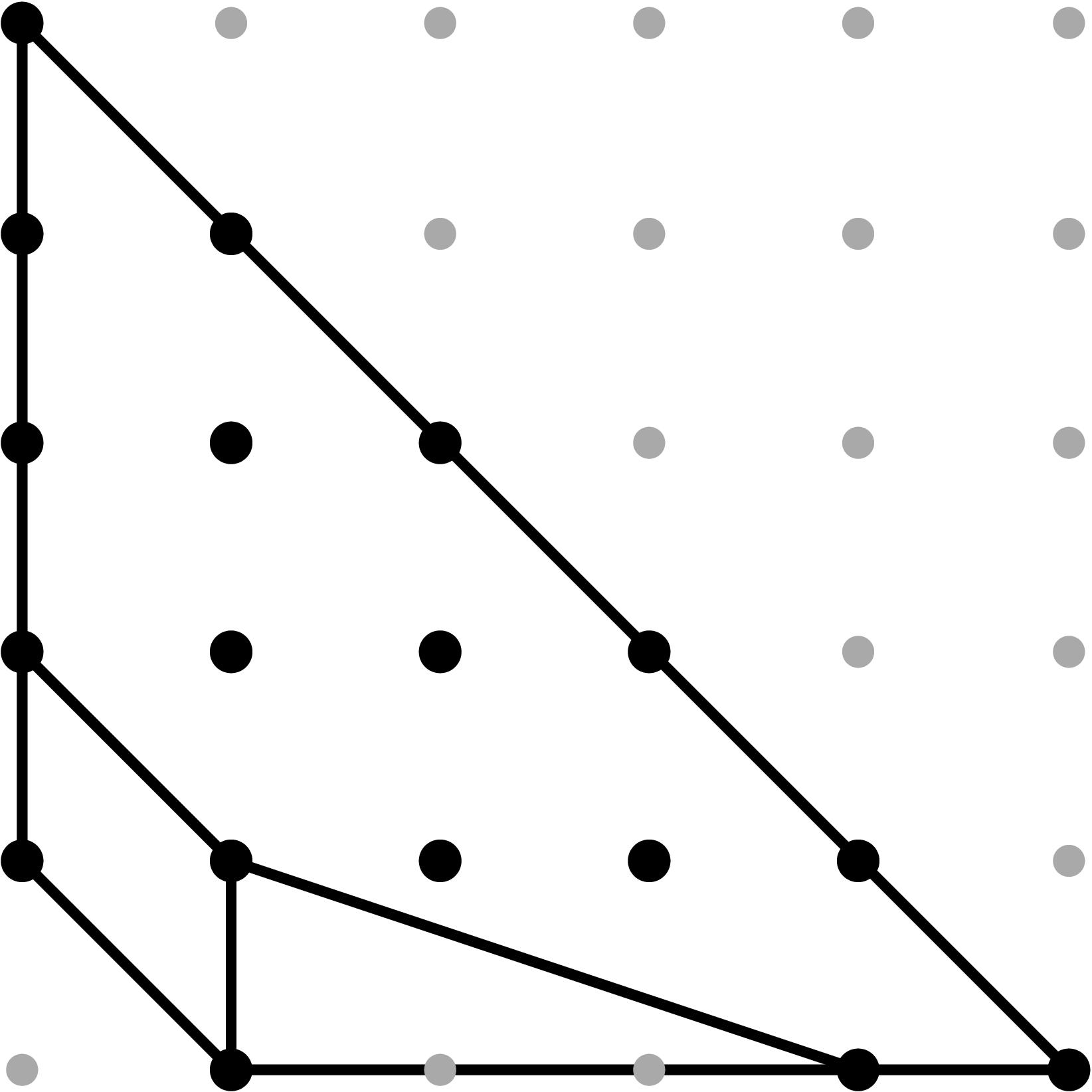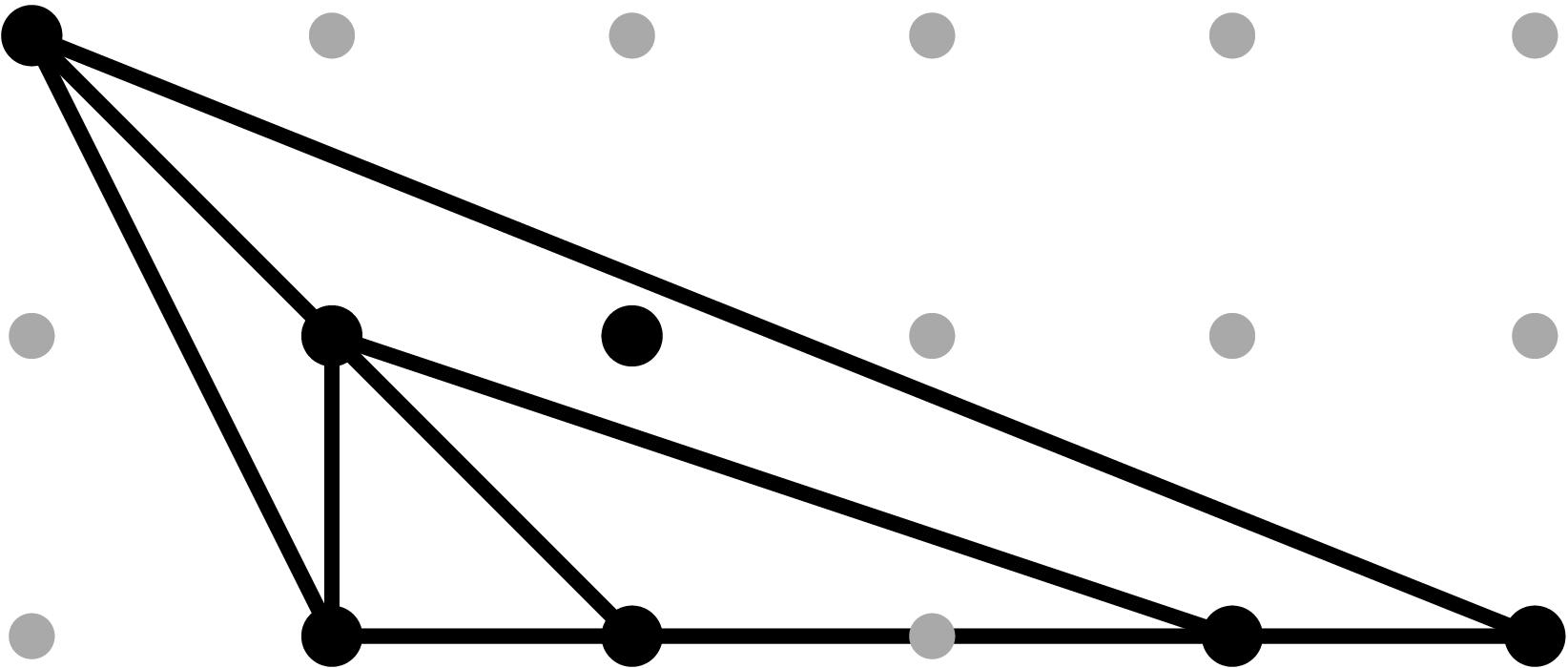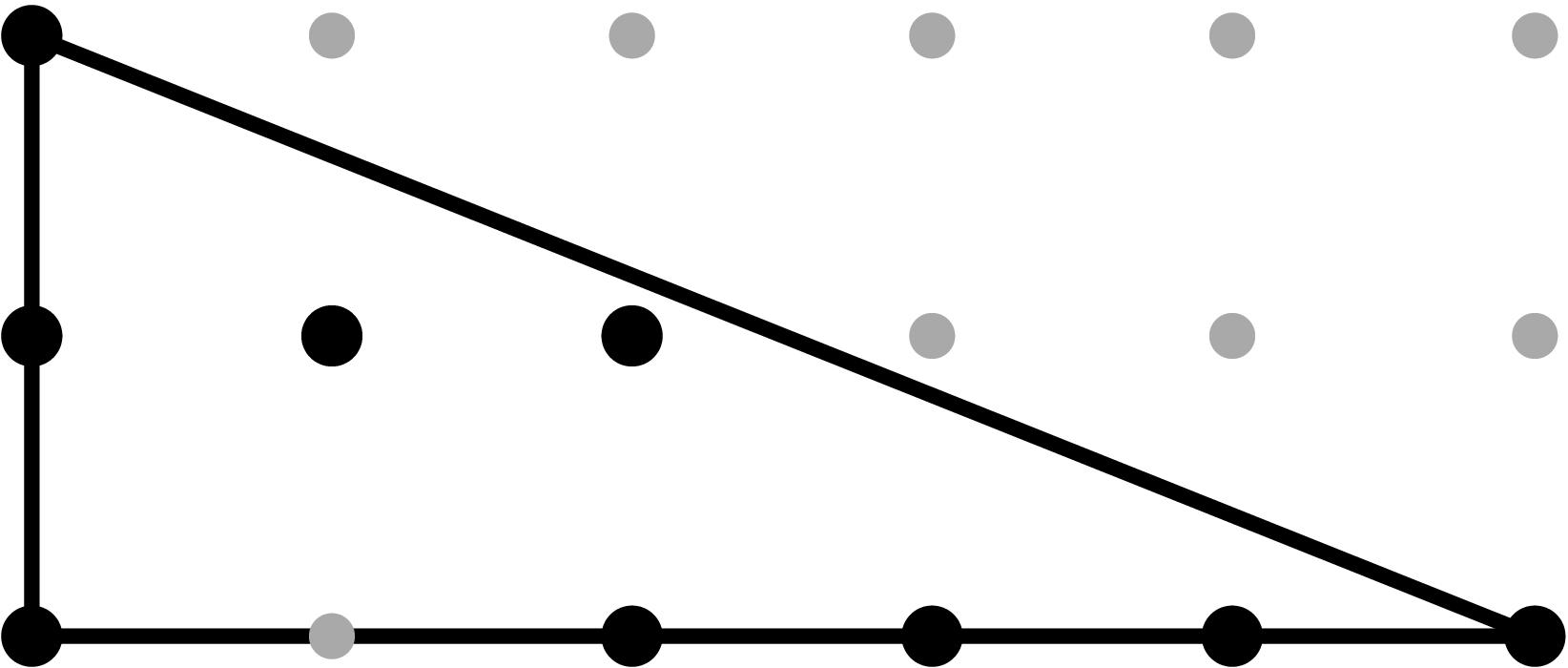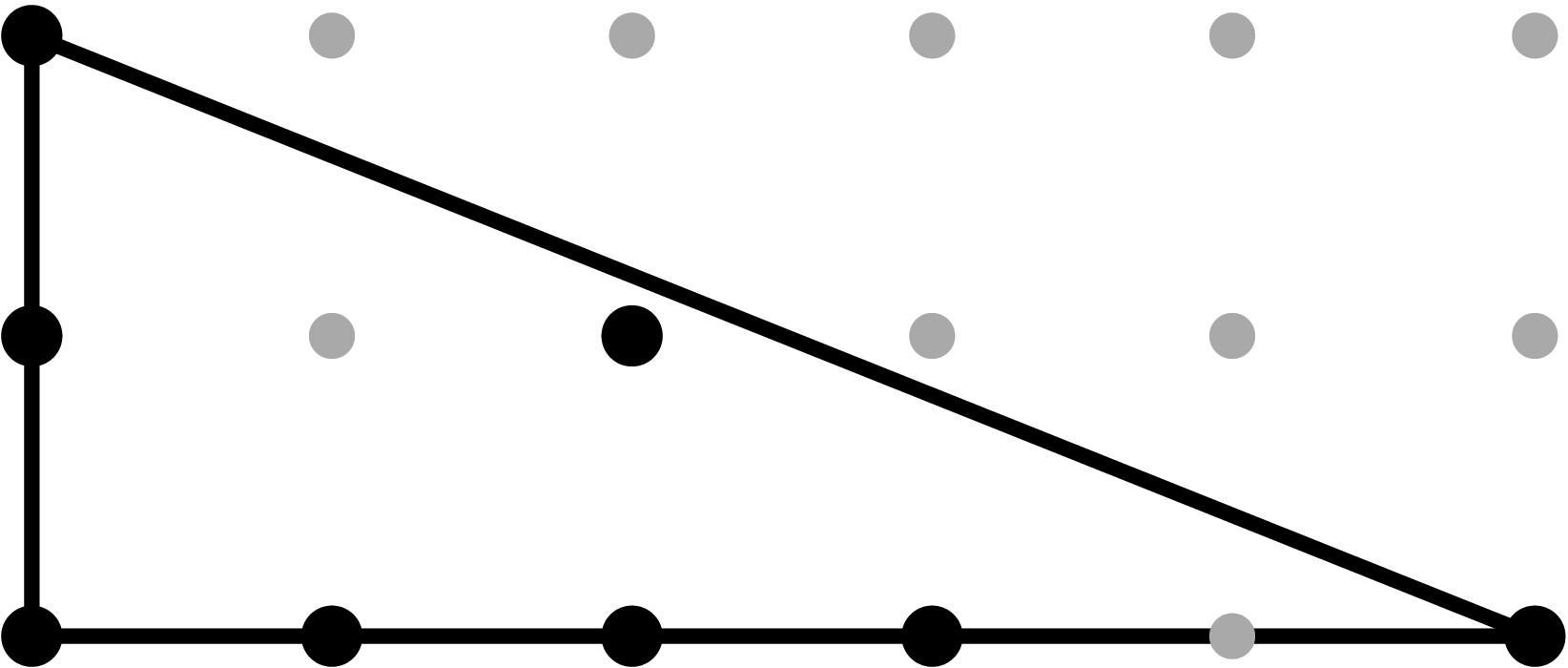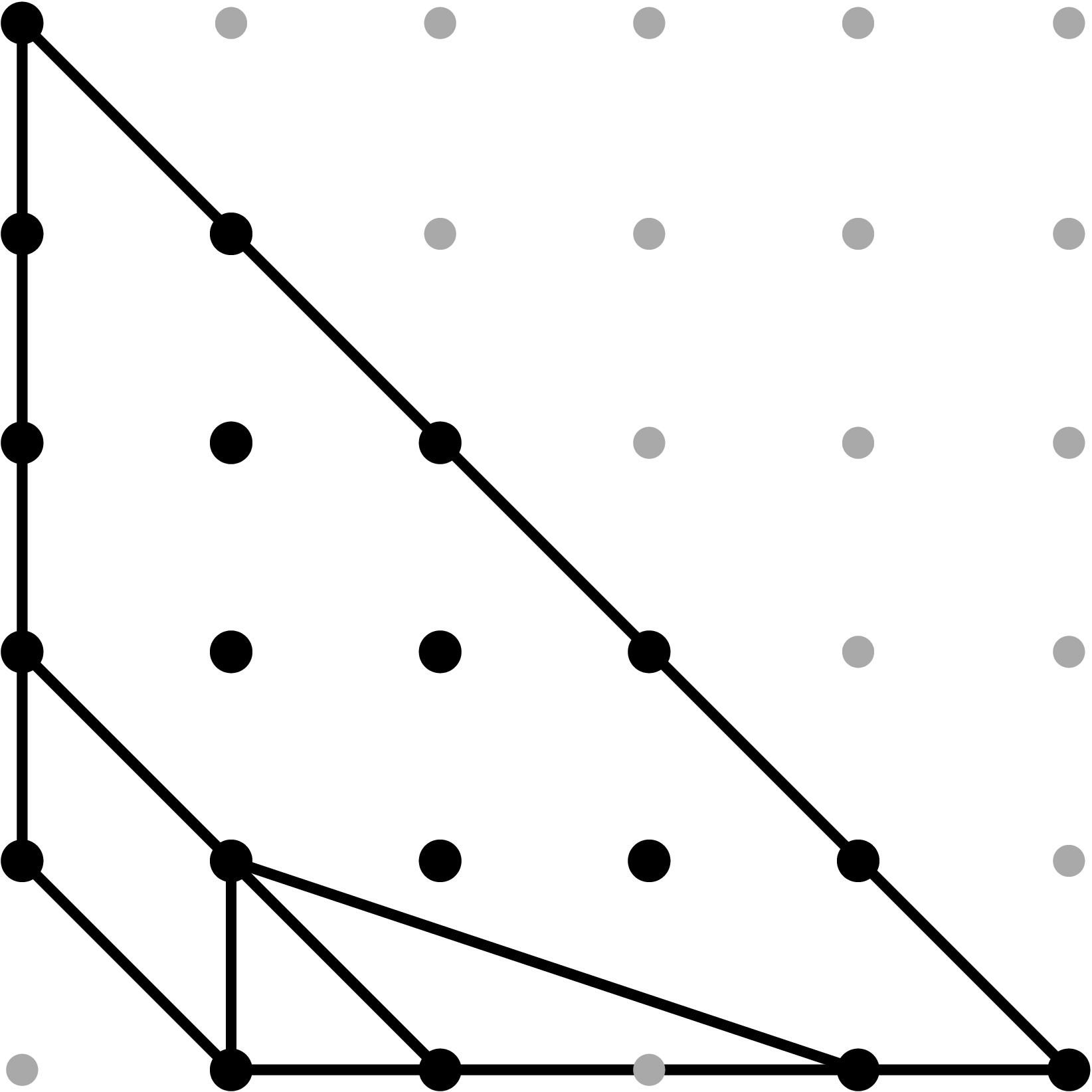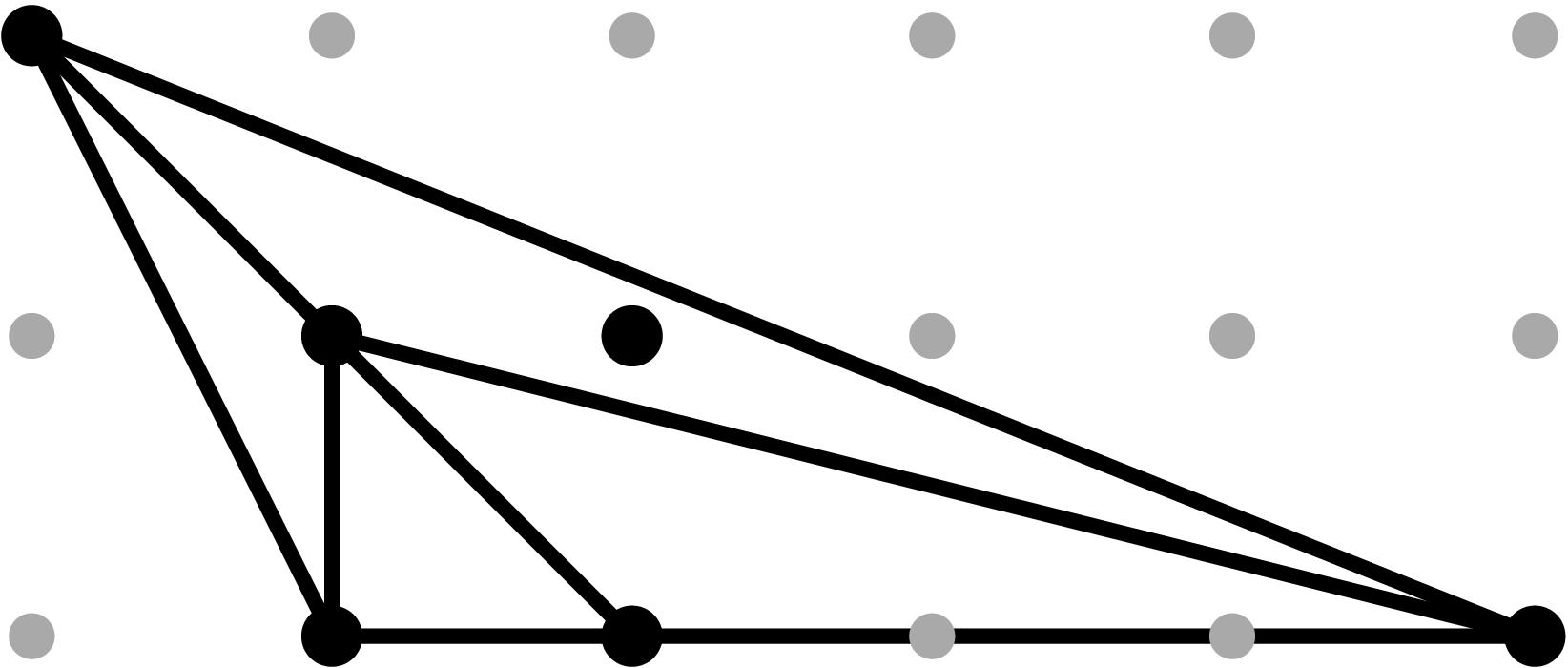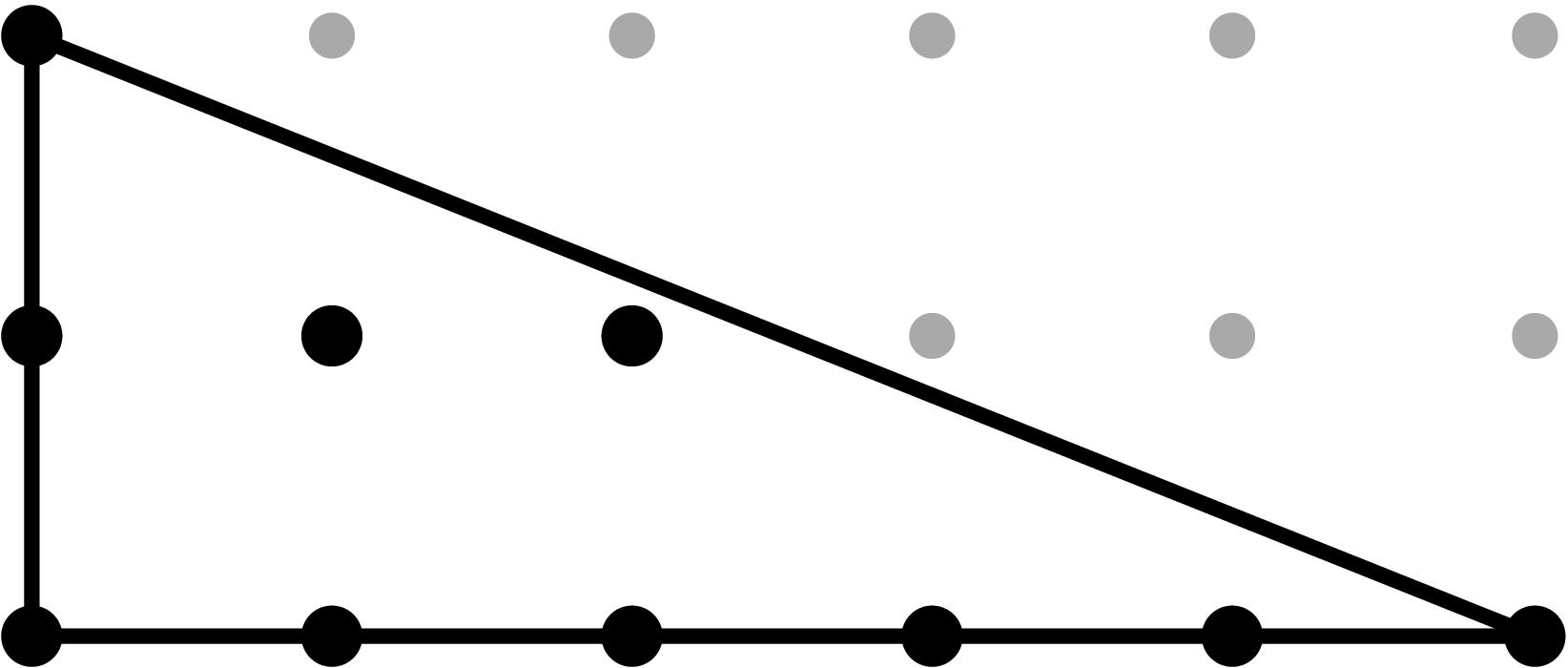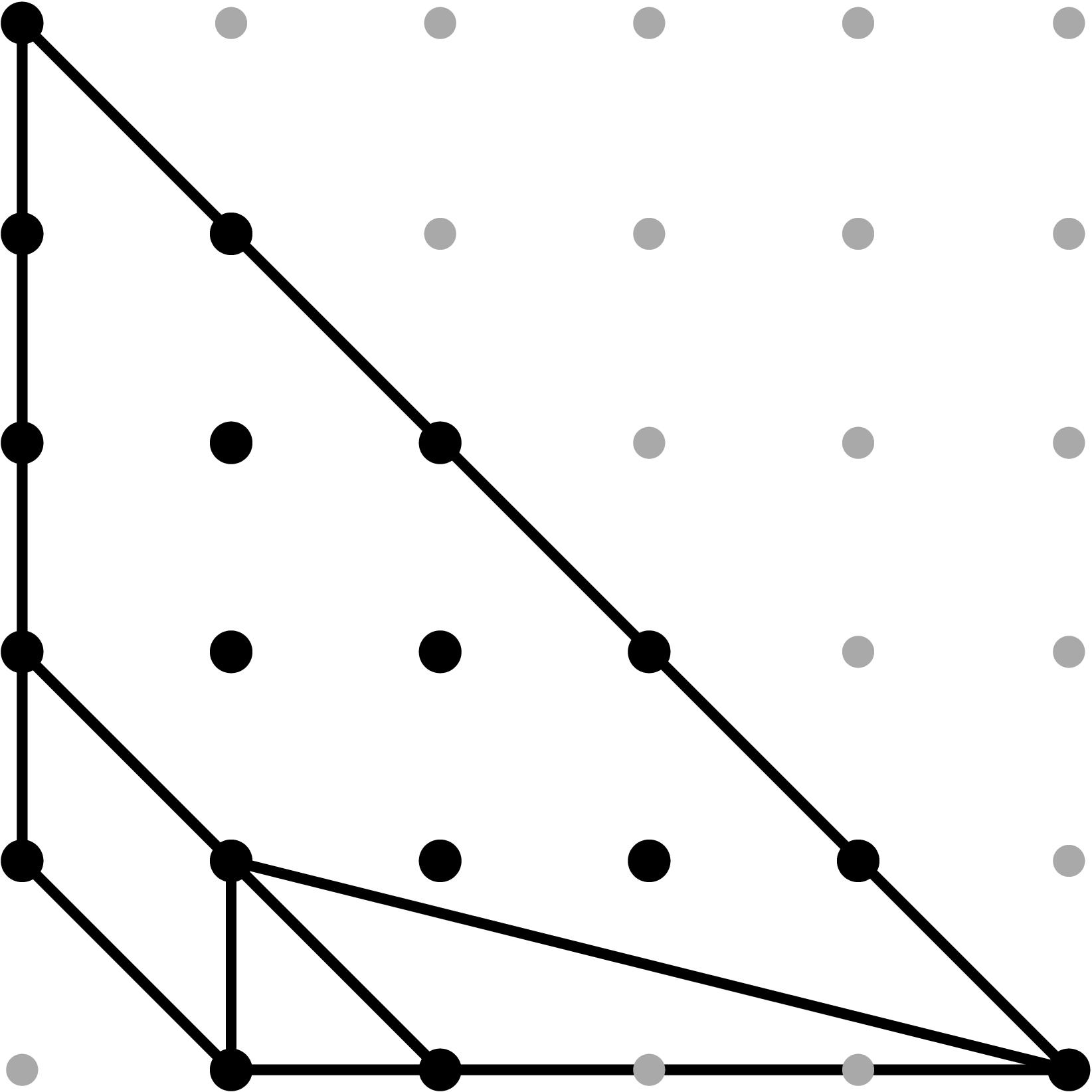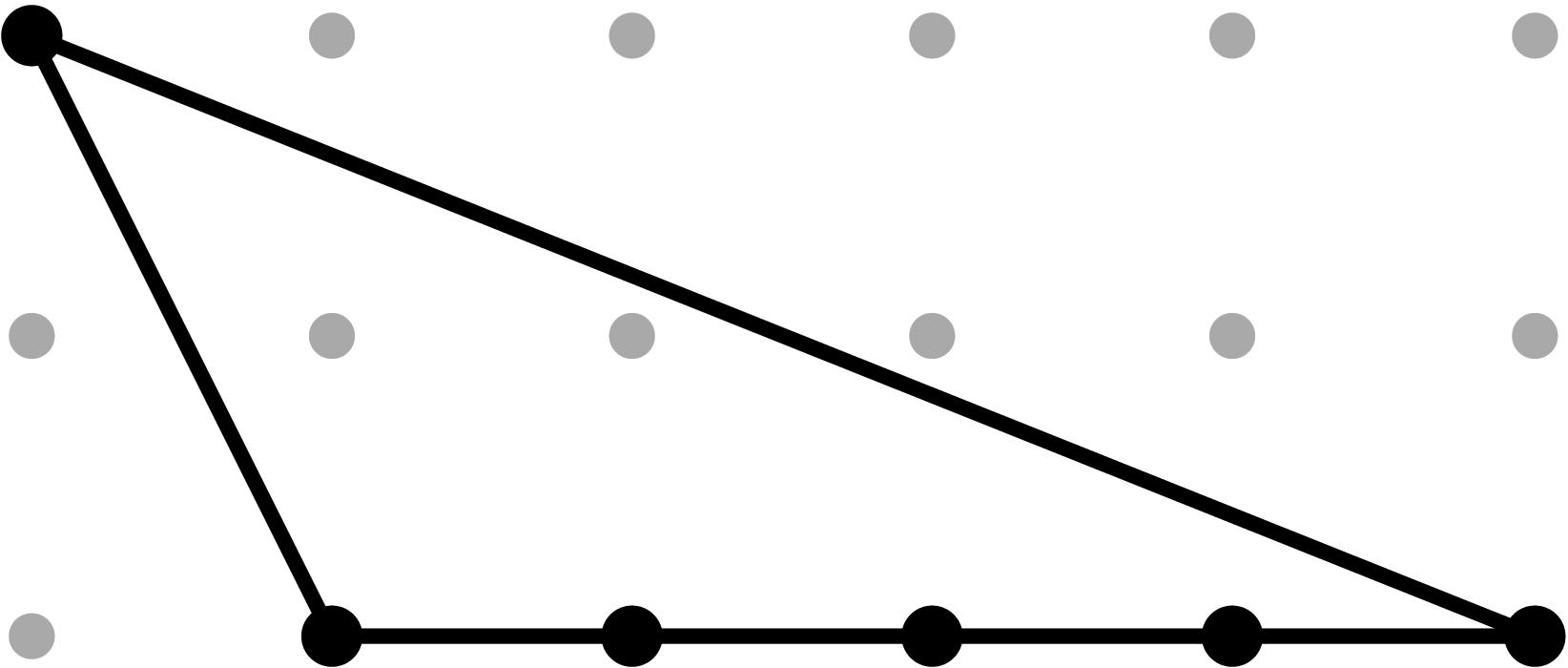Tropical Geometry of genus two curves
Web page for
the paper by
María Angélica Cueto and Hannah Markwig
The computational results in this
web page were obtained using the software
packages
SAGE 6.9, Macaulay 2, and Singular, including the special library tropical.lib. The sage outputs
are stored as .sobj files and plain text files (as commends in the scripts). The Macaulay 2 outputs are recorded as comments on the scripts.
All scripts and outputs described in this page are available as a
zip file here. CAVEAT: Some of the .sobj
files may not load when working
with earlier versions of SAGE. You can run the scripts to obtained readable .sobj files.
Jump to:
§0. Naive tropicalization of plane hyperelliptic curves and tropical modifications inducing faithful tropicalizations
The following scripts allow us to produce faithful tropicalizations on the minimal skeleton (or extended, whenever indicated) of all genus 2 smooth curves defined over a non-Archimedean field K with a valuation val: K* → R. Our input data for the curve is the hyperelliptic equation, i.e. its six ramification points α1,…,α6 in P1. Furthermore, we may assume α1= (0,1) and α6=(0,1) (with -val(α1)="-Infinity", -val(α1)="+Infinity"), and the remaining α2,…,α5 lie in K*. Their negative valuations
ωi = -val(αi) for i = 2,…,5, d34 = -val(α3 - α4)
and the initial forms in(αi) satisfy the required conditions indicated in Table 1.
Table 1: Classification of skeleta of smooth genus 2 curves.
| Cell | Extended skeleta |
Defining conditions | Lengths |
|
| (I) | 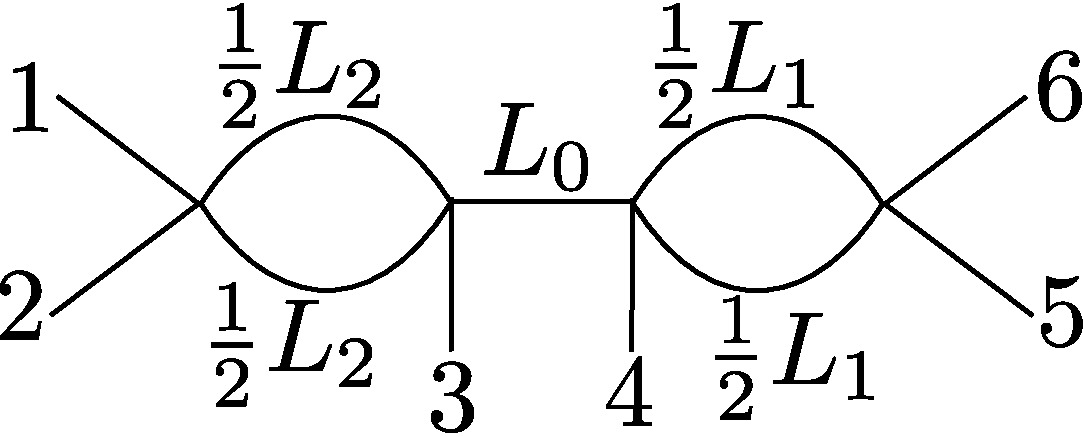 | ω2 < ω3 < ω4 <ω5 |
L0 = (ω4 - ω3)/2
L1 = 2(ω5 - ω4)
L2 = 2(ω3 - ω2)
|
| (II) | 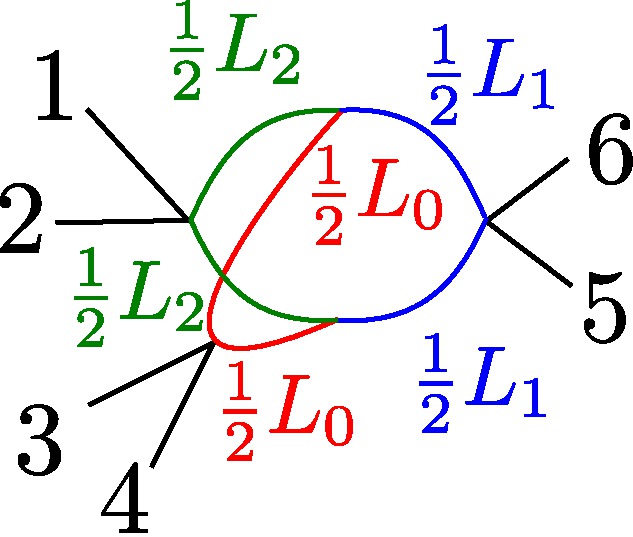 | ω2 < ω3 = ω4 <ω5
d34<ω3
in(α3)=in(α4)
|
L0 = 2(ω4 - d34)
L1 = 2(ω5 - ω3)
L2 = 2(ω3 - ω2)
|
| (III) | 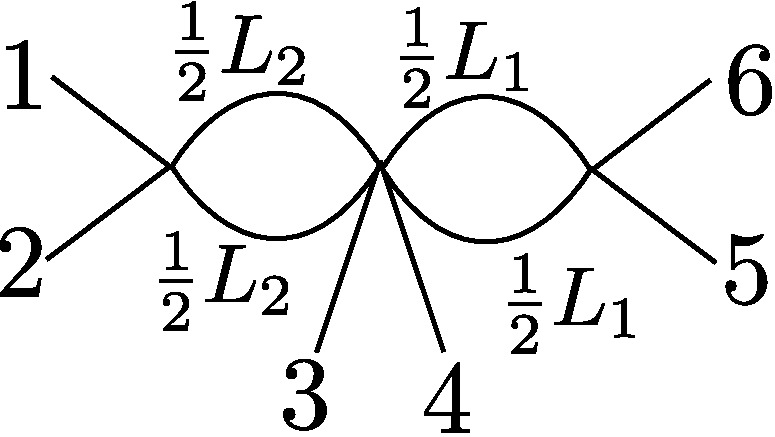 | ω2 < ω3 = ω4 <ω5
d34 = ω3
in(α3) ≠ in(α4)
|
L0 = 0
L1 = 2(ω5 - ω3)
L2 = 2(ω3 - ω2)
|
| (IV) | 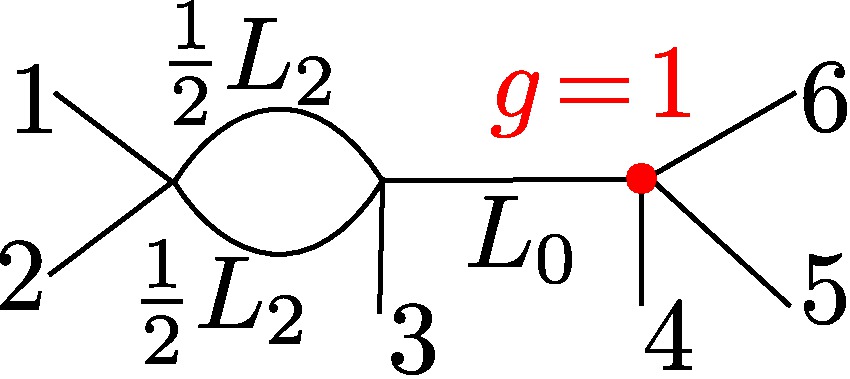 | ω2 < ω3 < ω4
ω4 = ω5
in(α4) ≠ in(α5)
|
L0 = (ω4 - ω3)/2
L1 = 0
L2 = 2(ω3 - ω2)
|
| (V) | 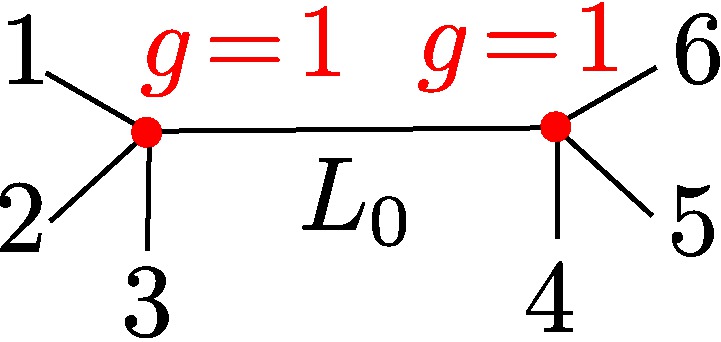 | ω2 < ω4
ω2 = ω3
ω4 = ω5
in(α2) ≠ in(α3)
in(α4) ≠ in(α5)
|
L0 = (ω4 - ω3)/2
L1 = 0
L2 = 0
|
| (VI) | 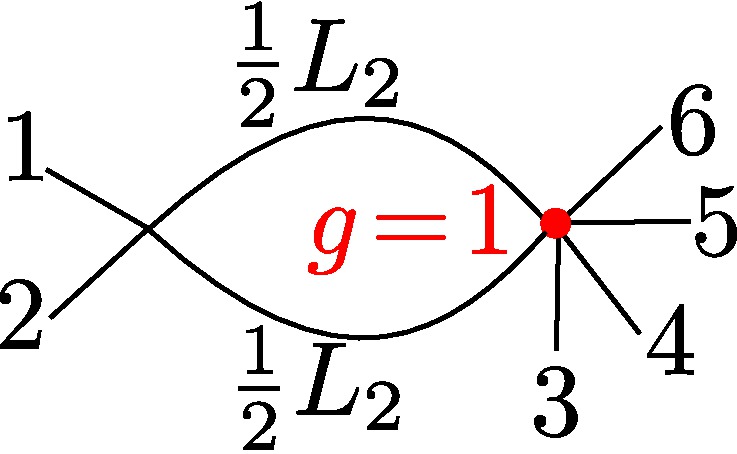 | ω2 < ω3
ω3 = ω4 = ω5
in(α3) ≠ in(α4)
in(α3) ≠ in(α5)
in(α4) ≠ in(α5)
|
L0 = 0
L1 = 0
L2 = 2(ω3 - ω2)
|
| (VII) | 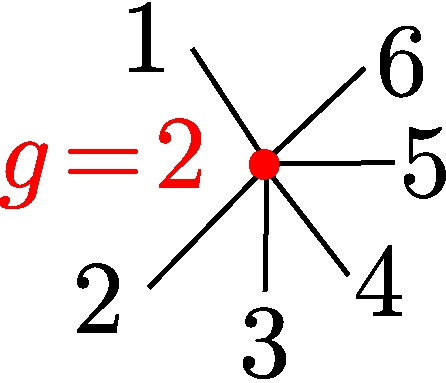 | ω2 = ω3 = ω4 = ω5
in(αi) ≠ in(αj) (for i≠ j)
|
L0 = 0
L1 = 0
L2 = 0
|
The naive tropicalization induced by the hyperelliptic equation
g(x,y) = y2 - x (x- α2)(x- α3)(x- α4)(x- α5)
is never faithful. We use the tropical modification of R2 along the tropical polynomial
F(X,Y) = max{Y, A + X, B + 2X} for A = (ω5 + ω4 + ω3) / 2 and B = ω5 / 2.
A lifting of this tropical polynomial yields a faithful tropicalization on the minimal skeleta via the ideal Ig,f = ⟨ g(x,y), z-f(x,y) ⟩ ⊂ K[x±, y±, z±], i.e. trop(f) = F where
f(x,y) = y - (- α5 α4 α3)1/2 x + ( - α5)1/2 x2.
Since the lifting f(x,y) of the modification involves square roots of the branch points, we replace the 4 varying branch points αi by squares of 4 new variables bi, i.e.
α2 = b22 , α3 = b32 , α4 = b42 and α5 = - b52, so ωi = - 2 val(bi) for i = 2, 3, 4, 5 .
Therefore the hyperelliptic equation becomes
g(x,y) = y2 - x (x - b22)(x - b32)(x - b42)(x + b52)
The combinatorial types of the tropical curves of Type II defined by the ideal Ig,f are determined by means of the Newton subdivisions of the 3 coordinate projections. In order to characterize them, we compute the coefficients of each of the 3 defining equations in terms of the parameters b5, b4, b3, b2 in Singular (in a second step we replace b3 = b4 + b34. In all cases, the (x,y)-projection is well understood: it looks like the Type III case except that the x3 point is marked.
- Sage script containing implementations of all the relevant functions for computing leading terms of polynomials with respect to a weight order, intersections of fans and cones, computation of rays of a cone and sample points in the relative interior of a cone (obtained as the sum of its extremal rays)
- Singular script computing the coefficients of x2, x3, and x4 of the equation defining the (x,z)-projection. The script outputs the corresponding 3 polynomials in b5, b4, b3 and b2. [Output in plain text] [Output that will be used by the relevant Sage script]
- Singular script computing the coefficients of y4, y3z, y2z2, yz3, z4, y3, y2z, yz2, z3, y2, yz, z2, y, z of the equation defining the (y,z)-projection (the remaining coefficients are monomials in the variables b5, b4, b3 and b2, so their valuation is linear in the Type II Cone.) Caveat: the variables are labelled x and y instead of y and z in the script. The order of the monomials and labelling of the variables will be preserved throughout subsequent scripts.
The script outputs the corresponding 14 polynomials in b5, b4, b3 and b2 [Output in plain text] [Output that will be used by the relevant Sage script]
Furthermore, if we add a tail (i.e., an element in K with valuation -A + ε and -B + ε', respectively, with 0<ε, ε'<<1) to the coefficients of f(x,y) we obtain a faithful tropicalization of the extended skeleta for types (I) and (III). We called such choice a "refined modification."
In the following sections, we describe the resulting faithful tropical curve in R3 by means the three coordinate projections and the Newton subdivisions of the resulting plane curves. Numerical examples for K = Q[t] illustrate each of the various cases that arise. To simplify the expressions, all our branch points are (up to sign) squares of polynomials in t with integer coefficients.
We provide Singular scripts as well as the output tropical curve for each projection computed with the Singular library tropical.lib. Each Singular file contains the defining equations for each plane equation.
Whenever ωi = ωj for i ≠ j, the legs li, and lj in the extended Berkovich skeleta of the curve X marked with the branch points αi and αj map to the same leg in the naive tropicalization. If k of them meet, we separate them by means of k-1 vertical modifications along max{X,ωi1} with liftings zij = x - αij for j=1, …, s-1.
In Types (IV) and (V) we show that each vertex in the xy- and yz-projections dual to a lattice triangle with a unique interior vertex is the image of the corresponding genus 1 vertex in the Berkovich skeleton. We do so by means of a j-invariant computation.
- By truncating the input equation, we obtain a smooth elliptic curve Ev (supported on the triangle).
- We use Singular to compute the j-invariant. We use SAGE and Macaulay 2 to analyze the expected valuation of both the numerator and denominator of each j-invariant in terms of the negative valuations of the branch points by means of a leading term computation with a random integer vector ω = (ω2,ω3,ω4,ω5) ∈R4 in the corresponding Type (IV) of (V) Cones.
- In all cases we show that - val(j(Ev)) ≤ 0, so the corresponding elliptic curves have good reduction.
- We show that the corresponding Type (IV) of (V) Cones lie in a single cone of the Gröbner fan of both the numerator and denominator of the corresponding j-invariant. So the computation is independent of the chosen weight vector ω.
- Since the leading terms have coefficients that are powers of 2, the computation is valid for any characteristic of the residue field other than 2.
Back to Top
§0.1 Type (I) Cone (Dumbbell):
Back to Top
§0.2 Type (II) Cone (Theta Graph):
This is the most challenging cell from the combinatorics perspective, since its the only case for which the chart σ4 contains points of the tropical curve in its relative interior. Assuming the initial terms of the branch points to be generic, there will be exactly eight combinatorial types for the modified tropical curve in R3, coming from a subdivision of the Type II Cone into three pieces, obtained by adding the sum of the three extremal rays, and subdividing the cone accordingly. More types will arise in the non-generic case. Our proof by explicit computation determines these conditions in a precise fashion. Examples for each case are provided in the tables below.
Since the lifting f(x,y) of the modification involves square roots of the branch points, we replace the 4 varying branch points αi by squares of 4 new variables bi for i = 2, 3, 4, 5. Furthermore, since the valuation of α3 - α4 is relevant in this cell, we will replace b3 by introducing a new variable b34 = b3-b4, i.e.
α2 = b22 , α3 = (b4 + b34)2 , α4 = b42 and α5 = - b52, so ωi = - 2 val(bi) for i = 2, 4, 5 and d34 = - val(b34) - val(b4).
Therefore the hyperelliptic equation becomes
g(x,y) = y2 - x (x - b22)(x - (b4+b34)2)(x - b42)(x + b52)
To avoid working with non-real expressions, we sometimes replace α2 with - b22 (it will be indicated accordingly).
In the new coordinates
(v5, v4, v34, v2) := (-val(b5), -val(b4), -val(b34), -val(b2)).
the Type II Cone is defined by the following inequalities:
v5 > v4 , v4 > v34 , and v4 > v2.
We record the 17 relevant coefficients for the (x,z)- and (y,z)-projections in terms of the parameters b5, b4, b34 and b2:
- Plain text file containing the coefficients of x2, x3, and x4 of the equation defining the (x,z)-projection. The result was computed with this Sage script.
- Plain text file containing the coefficients of y4, y3z, y2z2, yz3, z4, y3, y2z, yz2, z3, y2, yz, z2, y, z of the equation defining the (y,z)-projection (the remaining coefficients are monomials in the variables b5, b4, b34 and b2, so their valuation is linear in the Type II Cone.) The result was computed with this Sage script.
In order to find all possible combinatorial types of resulting modified 3D-tropical curves with Theta graphs as minimal skeletons, we must compute the Gröbner fans of all the relevant coefficients, to decide what is the height function for each corresponding lattice point in the Newton polytope of the defining equations.
- Sage script that computes the Gröbner fan of all the 3 non-monomial coefficients of the (x,z)-projection and their common refinement. We record the combinatorics of each fan as commented code on the Sage script, and the output as a fan and a dictionary of maximal cones, both as Sage object files. [Compresent output, consisting of '.sobj' files].
- Sage script that computes the Gröbner fan of all the 14 non-monomial coefficients of the (y,z)-projection and their common refinement. We record the combinatorics of each fan as commented code on the Sage script, and the output as a fan and a dictionary of maximal cones, both as Sage object files. [Compresent output, consisting of .sobj files]
-
Sage script that computes the Gröbner fan of the product of all relevant 17 non-monomial coefficients of the (x,z) and (y,z)-projection. The resulting fan as f-vector [1, 21, 54, 35] and lineality space spanned by the all-ones vector.
- Sage object: common refinement of all 17 Gröbner fans, encoded as a polyhedral fan data-type in Sage.
- Sage object: dictionary of all 35 maximal cones in the common refinement of all 17 Gröbner fans (with keys given by numbers 0 through 34).
Once the Gröbner fan of the product of all coefficients is computed, we intersect the resulting fan with the Type II Cone, check for possible subdivisions of this cone induced by the fan, and compute the leading terms for each piece in the subdivision. The Type II Cone gets subdivided into 3 and 4 maximal pieces, respectively, as shown in Figure 1. The blue cones have maximal dimension 4, the red cones have dimension 3 and the purple cones have dimension 2. Since we are interested in the relative interior of the Type II Cone, we ignore components of the subdivision lying on the 3 facets.
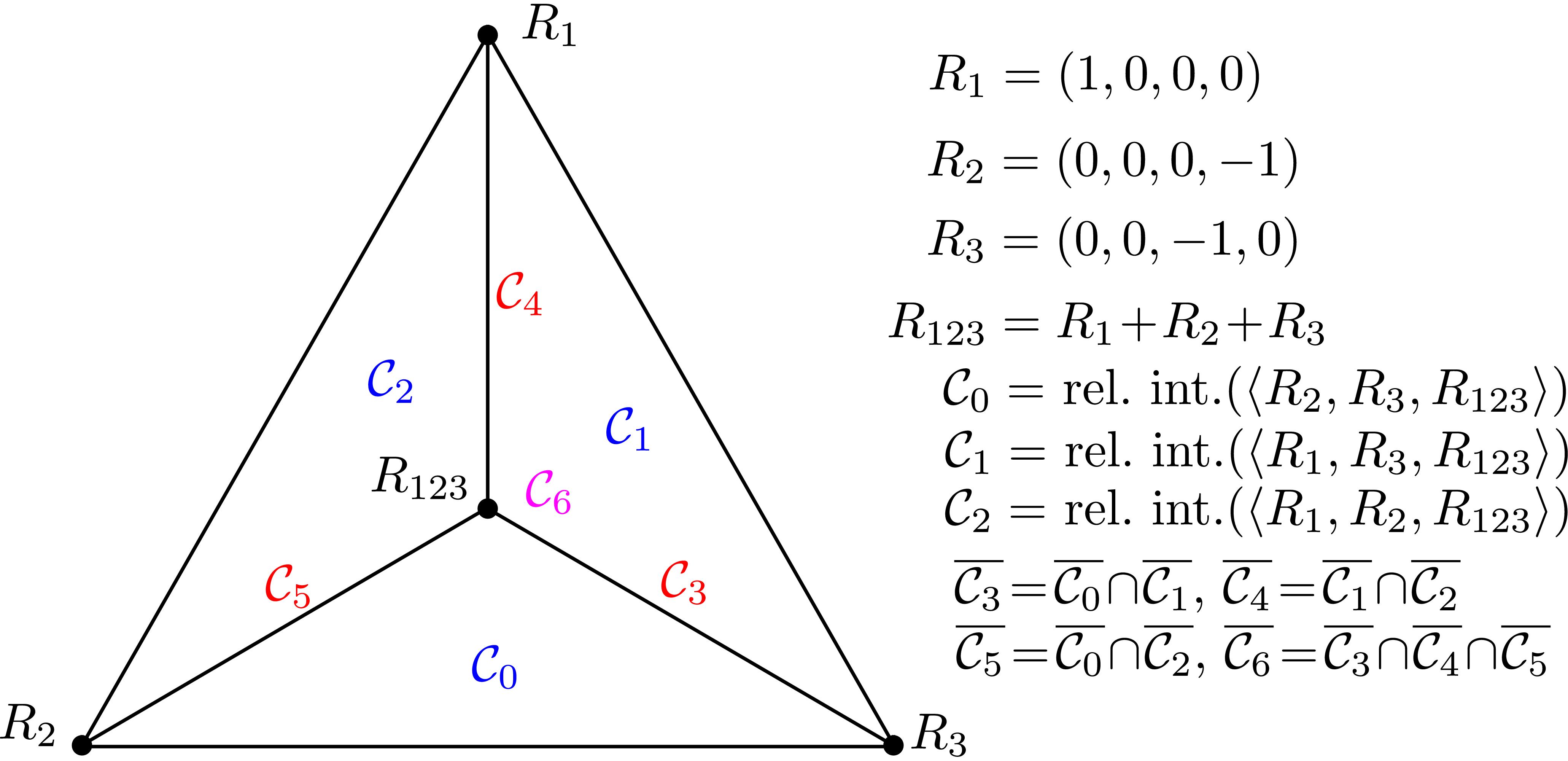
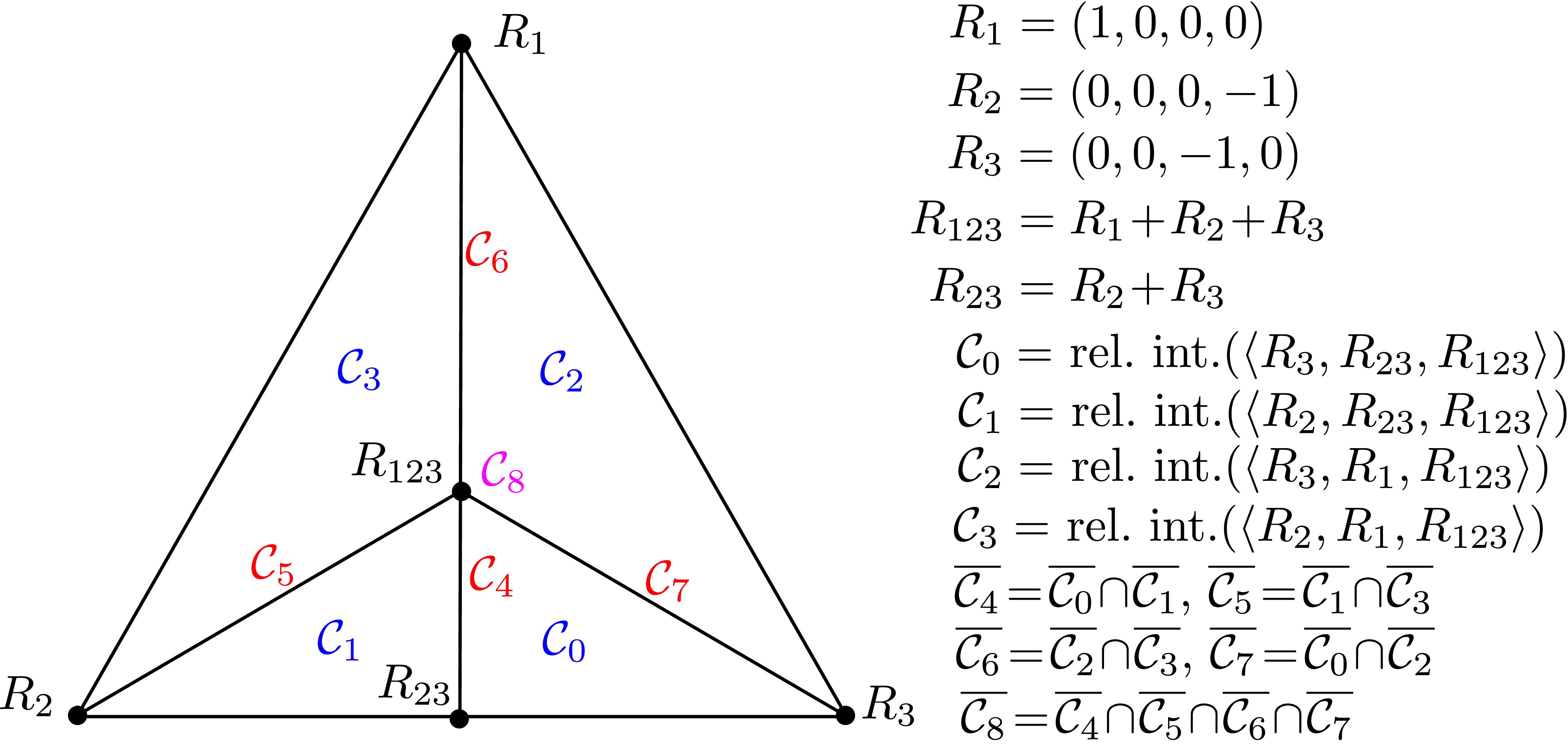 Figure 1: From left to right: subdivision of the Type II Cone induced by the Gröbner fans of the coefficients of the (x,z)- and (y,z)-projections, with the coordinates of each extremal ray, after moding out by the all-ones vector.
Figure 1: From left to right: subdivision of the Type II Cone induced by the Gröbner fans of the coefficients of the (x,z)- and (y,z)-projections, with the coordinates of each extremal ray, after moding out by the all-ones vector.
The following scripts were used to compute the subvisions from Figure 1 and group together the cones yielding the same leading term expressions. In order to determine the leading terms of each of the 17 relevant coefficients, we pick a sample point on each cone. For each cone we always take the sum of its extremal rays, moding out by the all-ones vector to make all entries non-positive and taking the corresponding primitive representative. This will facilitate the construction of examples to determine the possible Newton subdivisions for each projection.
- Plain text output of the leading terms of all 3 relevant coefficients of the (y,z)-projection (the indices of the cones correspond to the cones in the subdivision induced by the (y,z) projection, since it is finer than the one induced by the (x,z) projection.)
- Sage script that computes the subdivision induced by the 3 relevant coefficients of the (x,z)-projection, the extremal rays and the Leading terms for each of the 7 cones, grouping cones with the same leading terms. Table 1 collects the output data.
- Plain text output of the leading terms of all 14 relevant coefficients of the (y,z)-projection.
- Sage script that computes the subdivision induced by the 14 relevant coefficients of the (y,z)-projection, the extremal rays and the Leading terms for each of the 9 cones, grouping cones with the same leading terms. Table 2 collects the output data.
- Sage script that computes relevant combinatorial data of the common refinement of both subdivisions (f-vector, extremal rays, lineality space and H-representation of all pieces), sample points on each cone and the associated leading terms.
-
Sage object recording all 8 pieces of the subdivision of the Type II Cone (as polyhedral objects).
- Sage object recording the leading terms for all 3 relevant coefficients in the (x,z)-projection for each piece in the subdivision.
- Sage object recording the leading terms for all 14 relevant coefficients in the (y,z)-projection for each piece in the subdivision.
Tables 1 and 2 collect the expressions of the leading terms, factored to indicate situations where the expected leading terms have higher valuation than expected. The cone labels agree with those in Figure 1.
Caveat: The computations are valid for any characteristic of the residue field, except 2 and 3.
Table 1: Expected leading terms for each coefficient of the (x,z)-projections and each of the 6 relevant cones in the leftmost subdivision of the Type II Cone in Figure 1.
| Monomials | Leading Terms | Cones
|
|
|
x4 |
(-2) * b4^2
|
[0, 1, 2, 3, 4, 5, 6]
|
x3
|
(-1) * b2^2 * b5^2
(-1) * b34^2 * b5^2
(-1) * b5^2 * (b34^2 + b2^2)
b4^4
(-1) * (-b4^2 + b5*b2) * (b4^2 + b5*b2)
(-1) * (-b4^2 + b5*b34) * (b4^2 + b5*b34)
(-1) * (-b4^4 + b5^2*b34^2 + b5^2*b2^2)
|
[1]
[2]
[4]
[0]
[3]
[5]
[6]
|
|
x2 |
(2) * b2^2 * b4^2 * b5^2
|
[0, 1, 2, 3, 4, 5, 6]
|
Table 2: Expected leading terms for each coefficient of the (y,z)-projections and each of the nine relevant cones in the rightmost subdivision of the Type II Cone in Figure 1.
| Monomials | Leading Terms | Cones
|
|
|
y 4 |
(2) * b2^2 * b5^3
(2) * b34^2 * b5^3
(2) * b5^3 * (b34^2 + b2^2)
|
[0, 2, 7]
[1, 3, 5]
[4, 6, 8]
|
|
y3 z |
(-2) * b4^2 * b5^3
|
[0, 1, 2, 3, 4, 5, 6, 7, 8]
|
|
y2 z2 |
(4) * b5^5
|
[0, 1, 2, 3, 4, 5, 6, 7, 8]
|
|
y z3 |
(-4) * b5^5
|
[0, 1, 2, 3, 4, 5, 6, 7, 8]
|
|
z4 |
b5^5
|
[0, 1, 2, 3, 4, 5, 6, 7, 8]
|
|
y3 |
b2^4 * b5^6
(-1) * b2^2 * b4^4 * b5^4
b2^2 * b5^4 * (-b4^2 + b5*b2) * (b4^2 + b5*b2)
b34^4 * b5^6
b5^6 * (b34^2 + b2^2)^2
(-1) * b34^2 * b4^4 * b5^4
(-1) * b4^4 * b5^4 * (b34^2 + b2^2)
b34^2 * b5^4 * (-b4^2 + b5*b34) * (b4^2 + b5*b34)
b5^4 * (b34^2 + b2^2) * (-b4^4 + b5^2*b34^2 + b5^2*b2^2)
|
[2]
[0]
[7]
[3]
[6]
[1]
[4]
[5]
[8]
|
|
y2 z |
(2) * b2^2 * b4^2 * b5^6
(-6) * b34^2 * b4^2 * b5^6
(-2) * b4^2 * b5^6 * (3*b34^2 - b2^2)
|
[0, 2, 7]
[1, 3, 5]
[4, 6, 8]
|
|
y z2 |
(-3) * b2^2 * b4^2 * b5^6
(9) * b34^2 * b4^2 * b5^6
(3) * b4^2 * b5^6 * (3*b34^2 - b2^2)
|
[0, 2, 7]
[1, 3, 5]
[4, 6, 8]
|
|
z3 |
b2^2 * b4^2 * b5^6
(-3) * b34^2 * b4^2 * b5^6
(-1) * b4^2 * b5^6 * (3*b34^2 - b2^2)
|
[0, 2, 7]
[1, 3, 5]
[4, 6, 8]
|
|
y2 |
(-4) * b2^2 * b34^2 * b4^4 * b5^7
|
[0, 1, 2, 3, 4, 5, 6, 7, 8]
|
|
y z |
(2) * b34^2 * b4^6 * b5^7
|
[0, 1, 2, 3, 4, 5, 6, 7, 8]
|
|
z2 |
(-1) * b34^2 * b4^6 * b5^7
|
[0, 1, 2, 3, 4, 5, 6, 7, 8]
|
|
y |
b2^2 * b34^2 * b4^8 * b5^8
|
[0, 1, 2, 3, 4, 5, 6, 7, 8]
|
|
z |
(-1) * b2^2 * b34^2 * b4^8 * b5^8
|
[0, 1, 2, 3, 4, 5, 6, 7, 8]
|
The previous scripts allow us to predict the expected height of each lattice point in the truncated Newton polytopes of the (x,z)- and (y,z)-projection (involving only the 17 relevant monomials, hence to determine the Newton subdivisions.) However, the combinatorial types of the (y,z)-Newton subdivision will vary within a given cone. The following scripts allow us to compute the corresponding Gröbner fans.
- Sage script to compute all Gröbner fans for all 8 cones in the Subdivision of the Type II Cone by leading terms of coefficients in the (y,z)-projection.
- Sage object: Dictionary of 8 polynomials where we replace each of the 14 coefficient of the truncated (y,z)-equation by its expected leading terms. We will use this to compute the Gröbner fan of the truncated (y,z)-equation.
-
Sage object: dictionary of all 8 Gröbner fans (one per cone in the right of Figure 1.) Each entry is a polyhedral data-type object in Sage.
- Sage object: Dictionary of all Gröbner fans of all 8 polynomials in the previous item. Each fan is given as a dictionary of its maximal cones. Their f-vectors are:
C0: [1, 10, 34, 52, 38, 12],
C1: [1, 14, 46, 64, 42, 12],
C2: [1, 13, 45, 65, 43, 12],
C3: [1, 19, 59, 74, 43, 11],
C4: [1, 15, 55, 84, 58, 16],
C5: [1, 19, 61, 79, 47, 12],
C6: [1, 19, 66, 91, 56, 14],
C7: [1, 14, 47, 67, 45, 13],
C8: [1, 19, 68, 98, 63, 16].
In order to determine the domains of lineality of each combinatorial type, we further subdivide each piece C0,…, C8 by the projection of the Gröbner fan in R6 of the (y,z)-equation equation in the variables [b5, b4, b34, b2, y, z], to the first 4 parameters. Figure 2 shows the induced refined subdivision: only 2 of the 4 maximal pieces get subdivided. The following scripts compute the subdivisions for each cell, the H-representation, and sample points for each piece, to determine the Newton subdivision by explicit computations on examples, assuming no cancellations on the expected leading terms.
- Sage script to compute the refined subdivision of the cone C0 from Figure 1. The result is a subdivision into 5 cones C0,0,…, C0,4 (3 of maximal dimension) as seen in Figure 2.
- Sage script to compute the refined subdivision of the cone C1 from Figure 1. The result is the trivial subdivision, as seen in Figure 2.
- Sage script to compute the refined subdivision of the cone C2 from Figure 1. The result is a subdivision into 3 cones C2,0,…, C2,2 (2 of maximal dimension) as seen in Figure 2.
- Sage script to compute the refined subdivision of the cone C3 from Figure 1. The result is the trivial subdivision, as seen in Figure 2.
- Sage script to compute the refined subdivision of the cone C4 from Figure 1. The result is the trivial subdivision, as seen in Figure 2.
- Sage script to compute the refined subdivision of the cone C5 from Figure 1. The result is the trivial subdivision, as seen in Figure 2.
- Sage script to compute the refined subdivision of the cone C6 from Figure 1. The result is the trivial subdivision, as seen in Figure 2.
- Sage script to compute the refined subdivision of the cone C7 from Figure 1. The result is a subdivision into 3 cones C7,0,…, C7,2 (2 of maximal dimension) as seen in Figure 2.
- Sage script to compute the refined subdivision of the cone C8 from Figure 1. The result is the trivial subdivision, as seen in Figure 2.
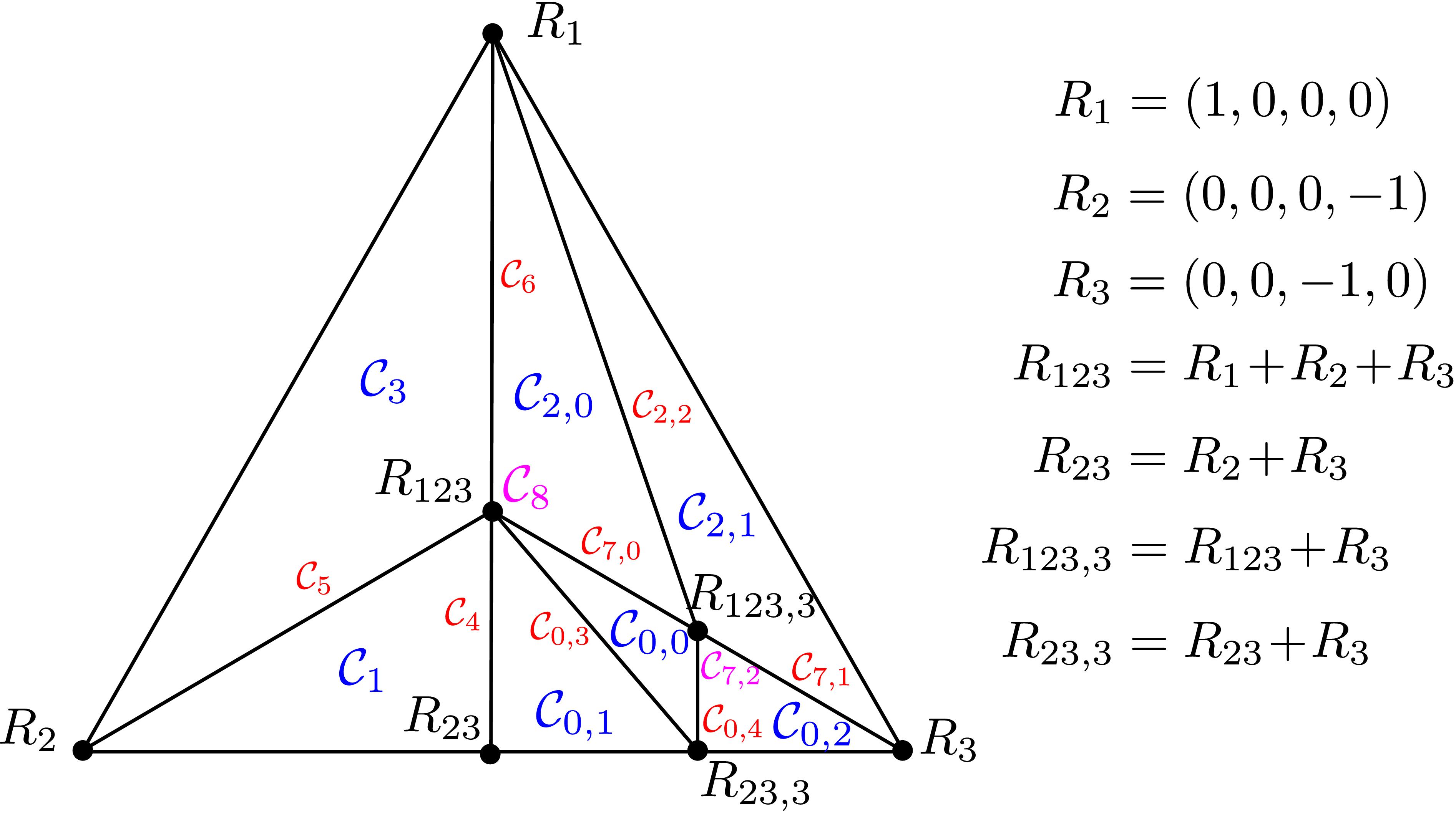 Figure 2: Refined subdivision of the Type II Cone induced by all possible Newton subdivisions of the (y,z)-projection. The first index of each cone reflect the label within the subdivision by leading terms of coefficients, as in Figure 1. We use the same color coding for the dimensions of each cone.
Figure 2: Refined subdivision of the Type II Cone induced by all possible Newton subdivisions of the (y,z)-projection. The first index of each cone reflect the label within the subdivision by leading terms of coefficients, as in Figure 1. We use the same color coding for the dimensions of each cone.
Once the refined subdivision and sample points for each piece are computed, we build concrete examples with Puiseux series to determine the Newton subdivisions for each cone assuming the leading terms have the expected valuation. Whenever the leading terms are non-monomial, cancellations of initial terms might occur. The following tables show the combinatorics of each projection and each cone by means of representative examples associated to the chosen sample points, including the relevant Singular scripts and both '.tex' and '.ps' outputs.
Even though the domains of lineality determining the combinatorics of the (y,z)-projection are those given in Figure 2, the combinatorics of the tropicalization induced by the ideal Ig,f agree for most of them. The domains of linealy are given by the subdivision on the left of Figure 1, i.e. the one computed for the (x,z)-projection.
As stated earlier, our branch points are obtained from (b5,b4, b34, b5) via the formulas:
α2 = b22 , α3 = (b4 + b34)2 , α4 = b42 and α2 = - b52
The only exception to this rule is provided by the non-generic cases in cells C4 and C6 (determined by Tables 1 and 2), where we use α2 = -b22. This change turns the non-genericity conditions from
in (b34)2 = -in (b2)2 to
in (b34)2 = in (b2)2 (for C6) and from in (b4)2 = -in (b2)2 to in (b4)2 = in (b2)2 (for C4). In this way we can construct examples over Q[t] where these genericity conditions are not satisfied.
Jump to:
- Cell C0,0: only generic behavior (Table 0.2.0);
- Cell C0,1: only generic behavior (Table 0.2.1);
- Cell C0,2: only generic behavior (Table 0.2.2);
- Cell C0,3: only generic behavior (Table 0.2.3);
- Cell C0,4: only generic behavior (Table 0.2.4);
- Cell C1: only generic behavior (Table 0.2.5);
- Cell C2,0: only generic behavior (Table 0.2.6);
- Cell C2,1: only generic behavior (Table 0.2.7);
- Cell C2,2: only generic behavior (Table 0.2.8);
- Cell C3: only generic behavior (Table 0.2.9);
- Cell C4: both generic (Table 0.2.10) and non-generic (Table 0.2.11) behavior;
- Cell C5: both generic (Table 0.2.12) and non-generic (Table 0.2.13) behavior;
- Cell C6: both generic (Table 0.2.14) and non-generic (Table 0.2.15) behavior;
- Cell C7,0: both generic (Table 0.2.16) and non-generic (Table 0.2.17) behavior;
- Cell C7,1: both generic (Table 0.2.18) and non-generic (Table 0.2.19) behavior;
- Cell C7,2: both generic (and Table 0.2.20) and non-generic (Table 0.2.21) behavior;
- Cell C8: both generic (and Table 0.2.22) and non-generic behavior;
Back to Top
Cell C0,0:
Back to Table of Contents
Cell C0,1:
Back to Table of Contents
Cell C0,2:
Back to Table of Contents
Cell C0,3:
Back to Table of Contents
Cell C0,4:
Back to Table of Contents
Cell C1:
Back to Table of Contents
Cell C2,0:
Back to Table of Contents
Cell C2,1:
Back to Table of Contents
Cell C2,2:
Back to Table of Contents
Cell C3:
Back to Table of Contents
Cell C4:
In this case, cancellations in the expected initial terms can occur since the relevant leading terms are non-monomial (see Tables 1 and 2).
In order to produce cancellations, we need in (b4)2 = -in (b2)2. To avoid computations with complex numbers, we replace b2 by i b2, i.e.
α2 = - b2. With this reparameterization, cancellations will occur if (b4)2 = in (b2)2.
As a result, we unmark the point (4,0) from the (y,z)-Newton subdivision. So the unmarked (x,z)-Newton subdivision is unaltered. The resulting plane tropical curves in the generic and special cases agree, as expected.
Back to Table of Contents
Cell C5:
In this case, cancellations in the expected initial terms can occur since the relevant leading terms are non-monomial (see Tables 1 and 2).
In order to produce cancellations in both projections, we need in (b4)2 = in (b3 b34). If that happens, the point y3 in the (y,z)-projection drops height and we will obtain a potentially subdivided triangle T with vertices (1,0), (4,0) and (1,1) in the (y,z)-Newton subdivision. Two things can occur:
- the triangle T is not subdivided;
- the triangle is subdivided by the edge yz--y3. For this to occur, we need height(y3)>ω3 + (ω5+ω3+ω2)/3. We scale our original sample vector by 3, set b5=1 and add a tail to b34 of the form t - v34+e for some suitable integer e satisfying the previous height condition. In this case, e=1.
On the (x,z)-projection, the point x3 drops height and we obtain a potentially subdivided triangle T' with vertices (1,0), (4,0) and (1,1) in the (x,y)-Newton subdivision. Two things can occur:
- the triangle T' is not subdivided;
- the triangle T' is subdivided by the edge xz--x3.
Table 0.2.13: Theta Graph Files and Projections for Special C5 with sample points
[0,-1,-2,-3] and [0,-3,-6,-9], respectively.
| Parameters
| Singular Scripts |
(x,y)-subdivision | (x,z)-subdivision | (y,z)-subdivision |
|
b2 = 17 t3 + 13 t4
b34 = 4 t2 - t5
b4 = 2 t + t7
b5 = 1+t2
| Standard Script
(no refinement)
| 
tex output
ps output
| 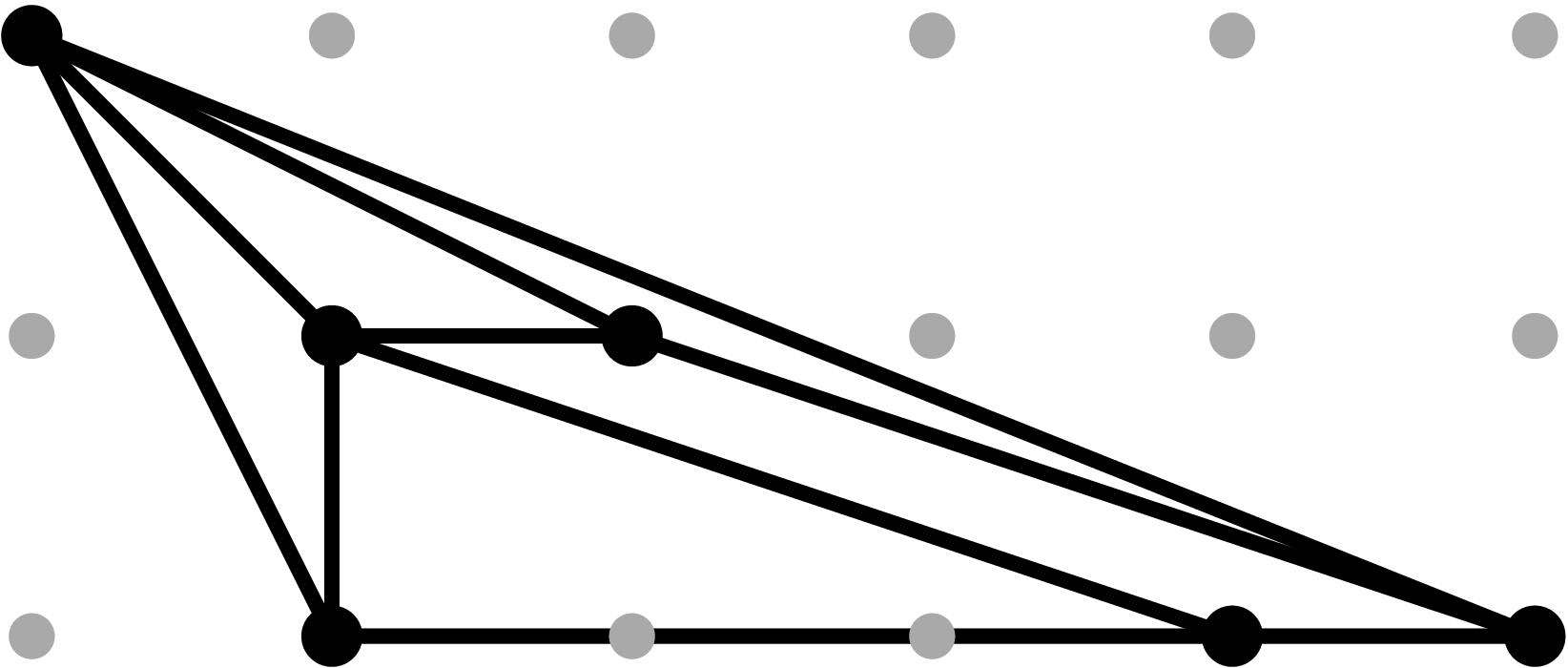
tex output
ps output
| 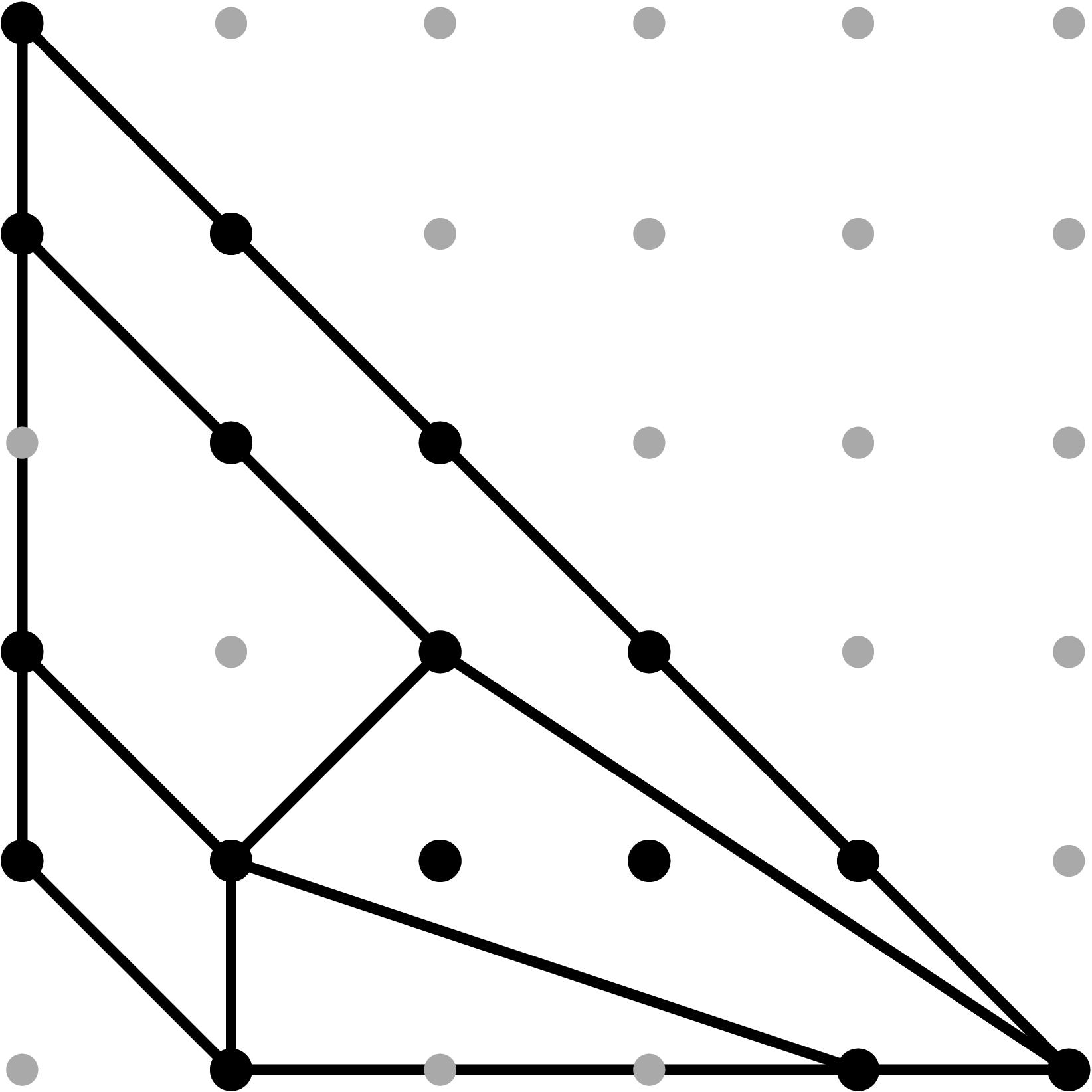
tex output
ps output
|
|
b2 = 17 t9 + 13 t12
b34 = 4 t6 - t7
b4 = 2 t3
b5 = 1
| Standard Script
(no refinement)
| 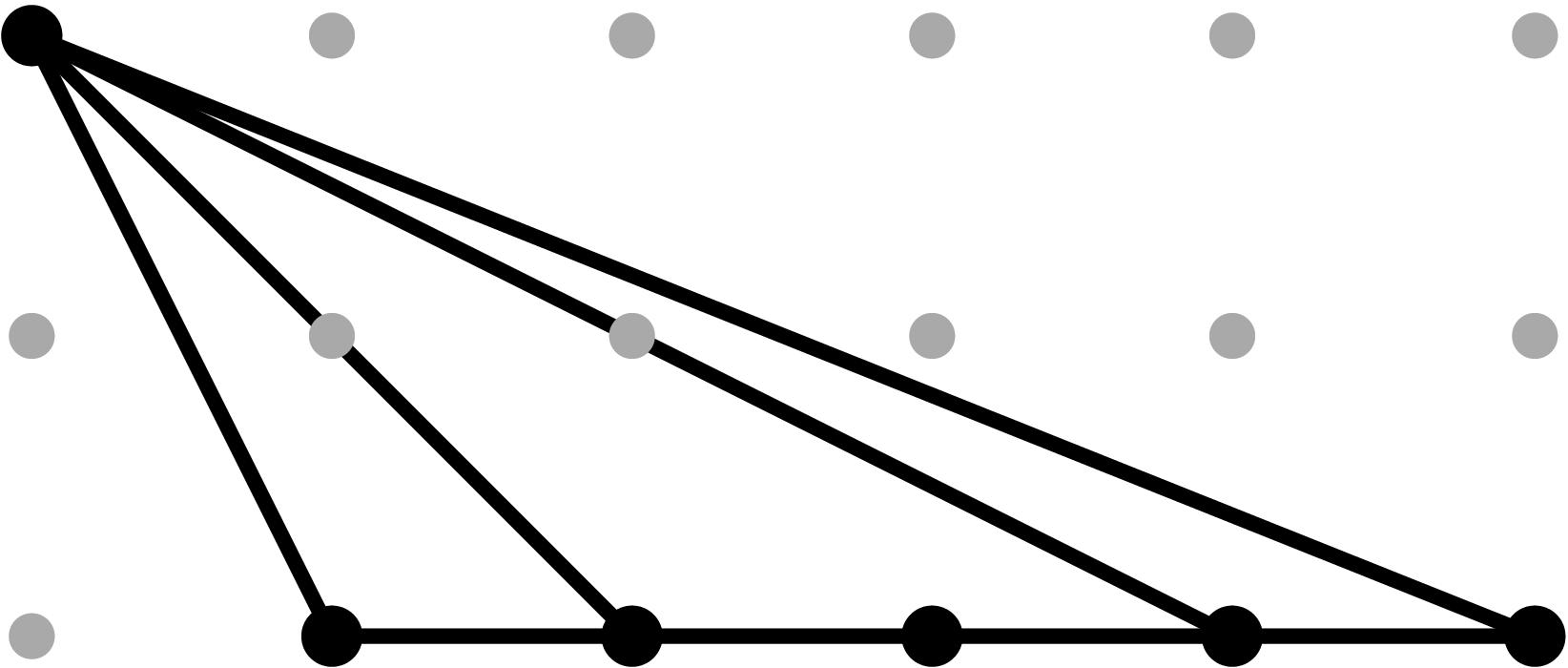
tex output
ps output
| 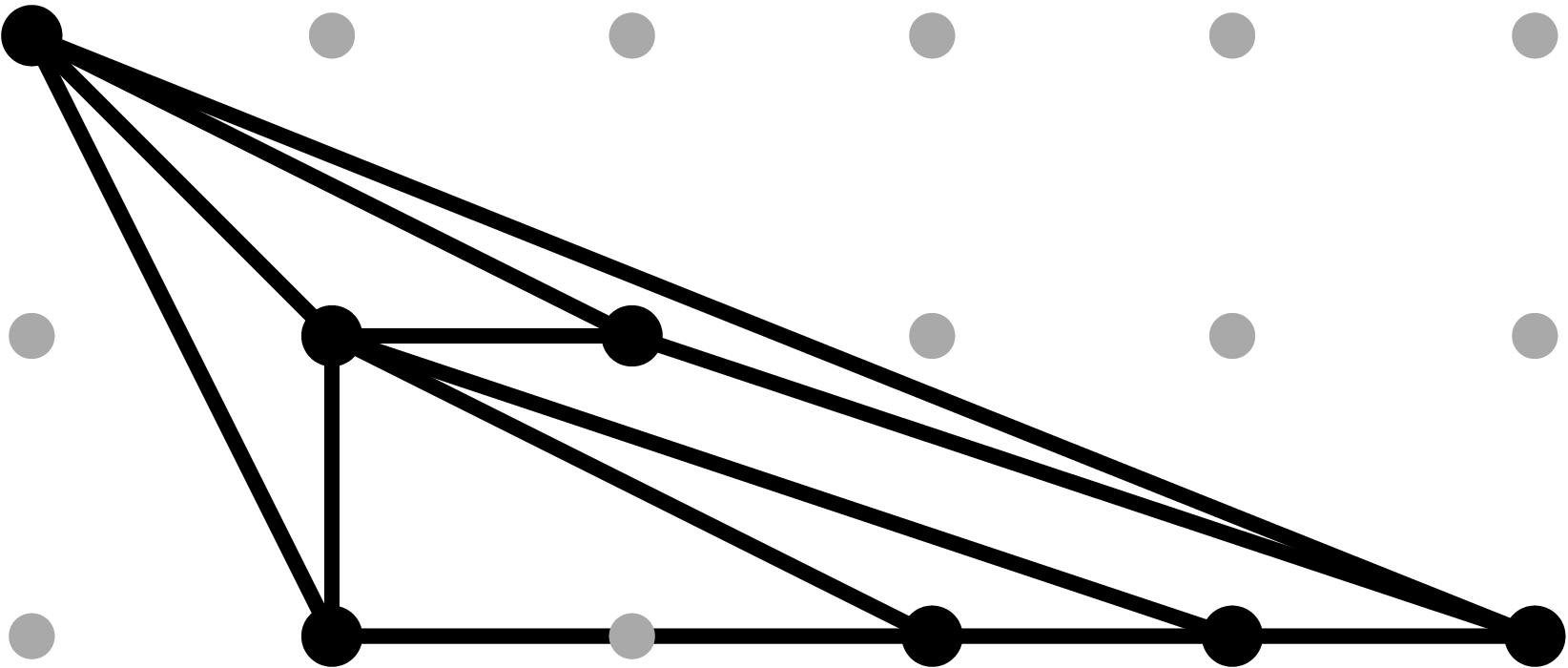
tex output
ps output
| 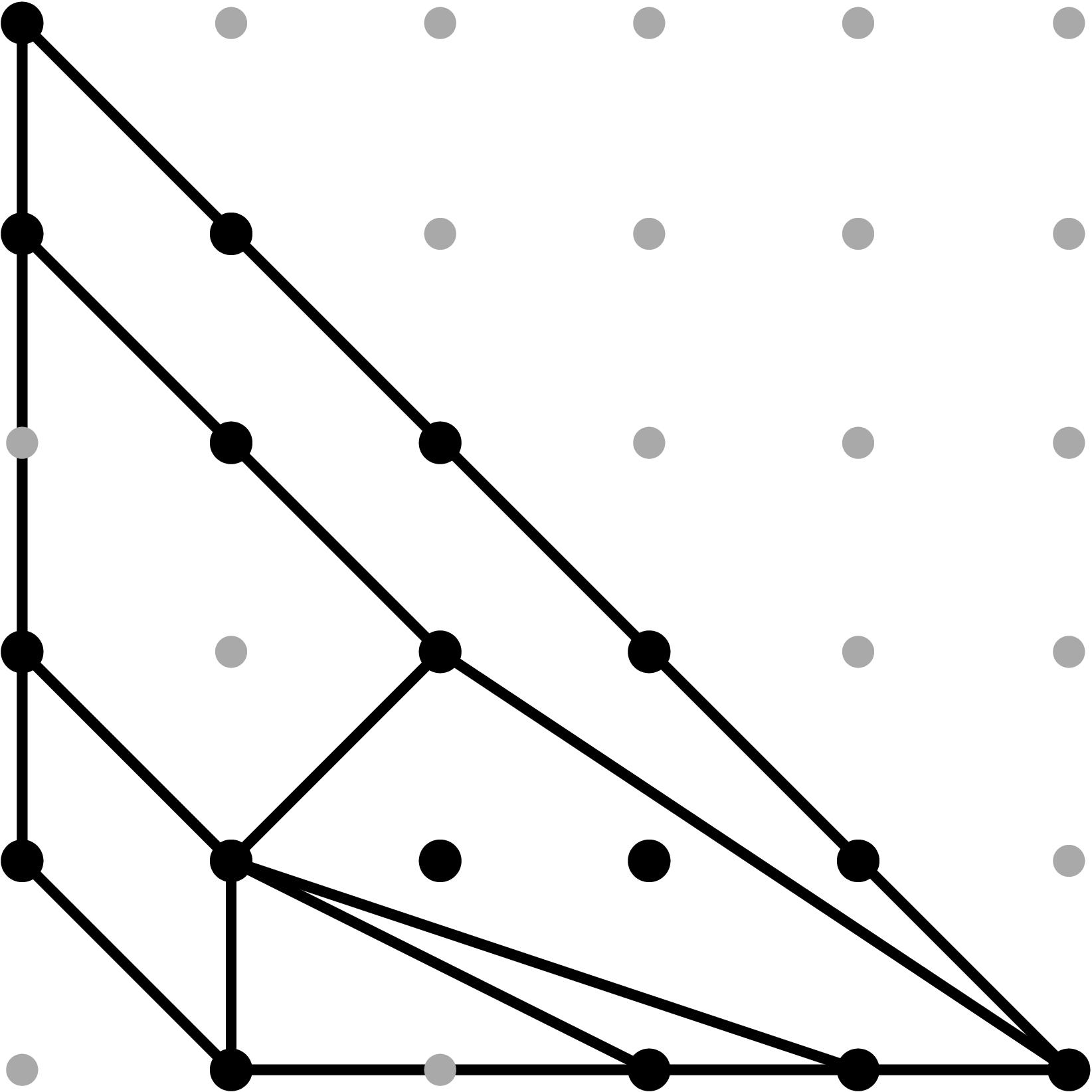
tex output
ps output
|
Back to Table of Contents
Cell C6:
In this case, cancellations in the expected initial terms can occur since the relevant leading terms are non-monomial (see Tables 1 and 2).
In order to produce cancellations, we need in (b34)2 = -in (b2)2. To avoid computations with complex numbers, we replace b2 by i b2, i.e.
α2 = - b2. With this reparameterization, cancellations will occur if (b34)2 = in (b2)2.
If that happens, the point y3 drops height in the (y,z)-projection and we will obtain a potentially subdivided triangle T with vertices (2,0), (5,0) and (2,2) in the (y,z)-Newton subdivision. Two things can occur:
- the triangle T is not subdivided;
- the triangle T is subdivided by the edge y2 z2 -- y3. For this to occur, we need height(y3) > 2 (ω5+ω4+ω2)/3. We scale our original sample vector by 3, set b2=t-ω2/2 and add a tail to b34 of the form t - v34+e for some suitable integer e satisfying the previous height condition. In this case, e=1.
On the (x,z)-projection, the point x3 drops height and we obtain a potentially subdivided triangle T' with vertices (2,0), (5,0) and (2,1) in the (x,y)-Newton subdivision. Two things can occur:
- the triangle T' is not subdivided;
- the triangle T' is subdivided by the edge x2 z -- x3.
Table 0.2.15: Theta Graph Files and Projections for Special C6 with sample points
[0,-2,-3,-3] and [0,-6,-9,-9], respectively.
| Parameters
| Singular Scripts |
(x,y)-subdivision | (x,z)-subdivision | (y,z)-subdivision |
|
b2 = t3 + t6
b34 = t3 + t10
b4 = 4 t2 + t5
b5 = 1+t2
| Standard Script
(no refinement)
| 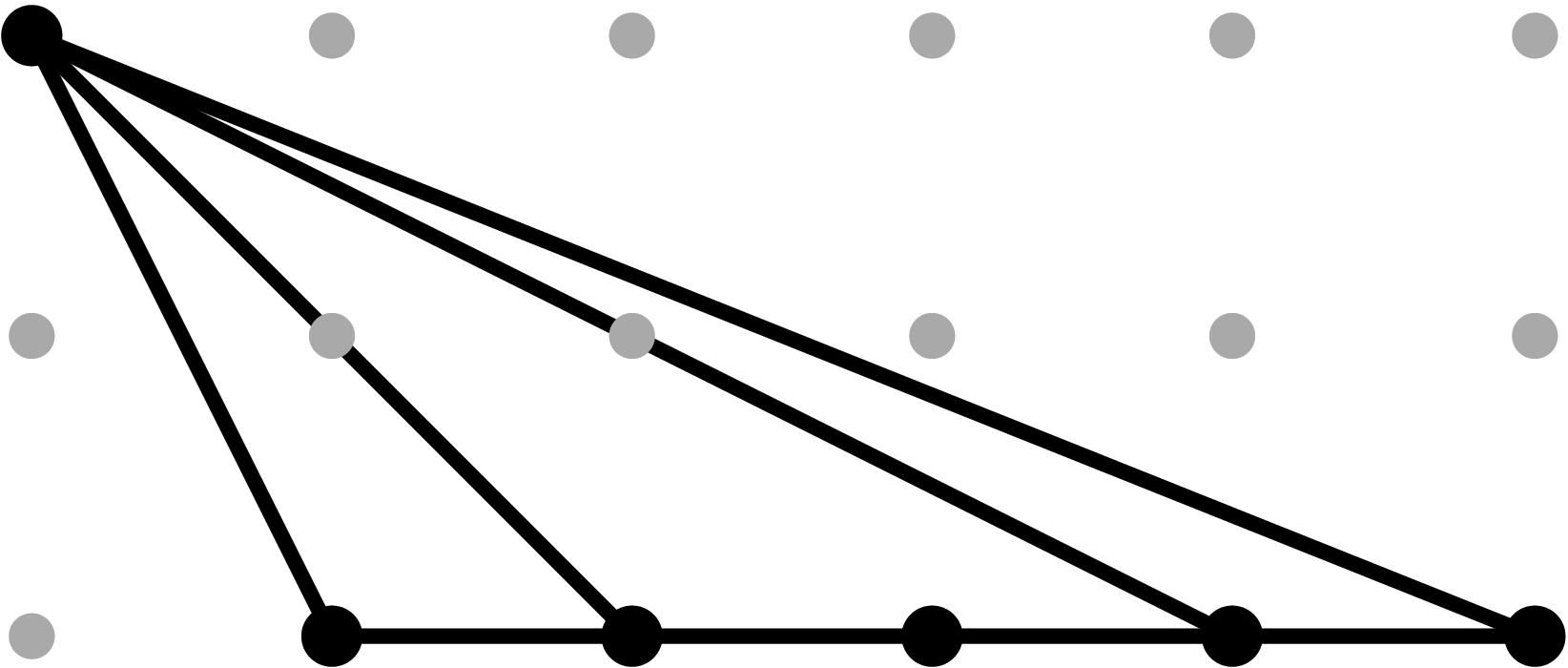
tex output
ps output
| 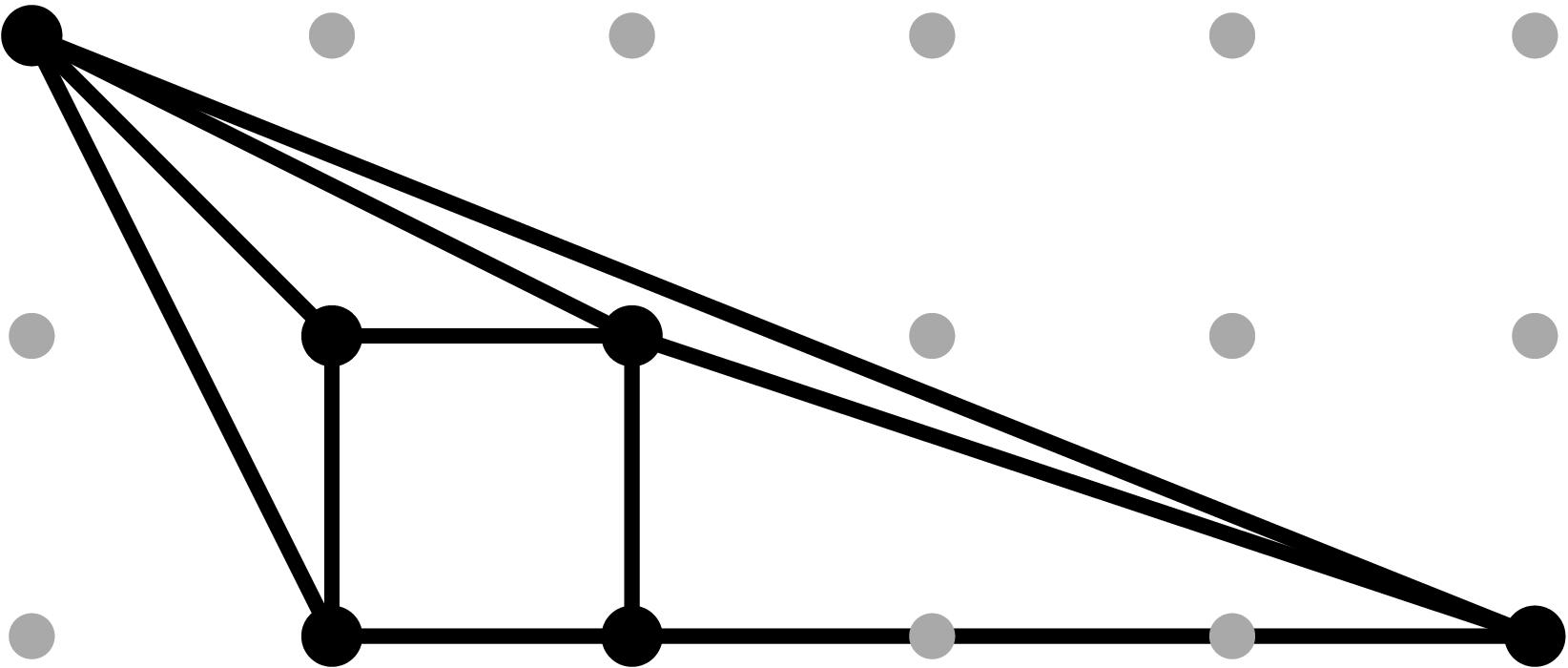
tex output
ps output
| 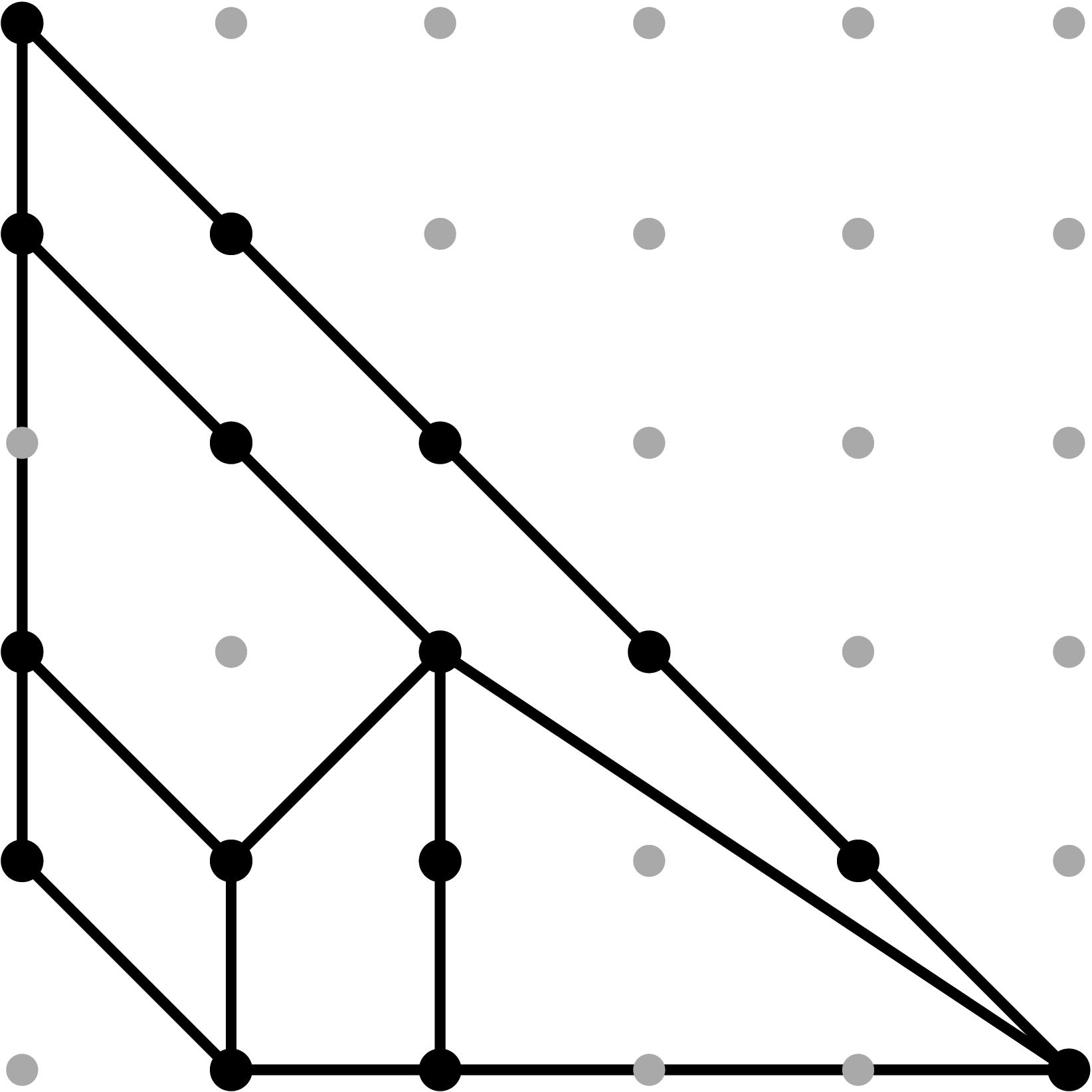
tex output
ps output
|
|
b2 = t9
b34 = t9 + t10
b4 = t6 + t15
b5 = 1 + t6
| Standard Script
(no refinement)
| 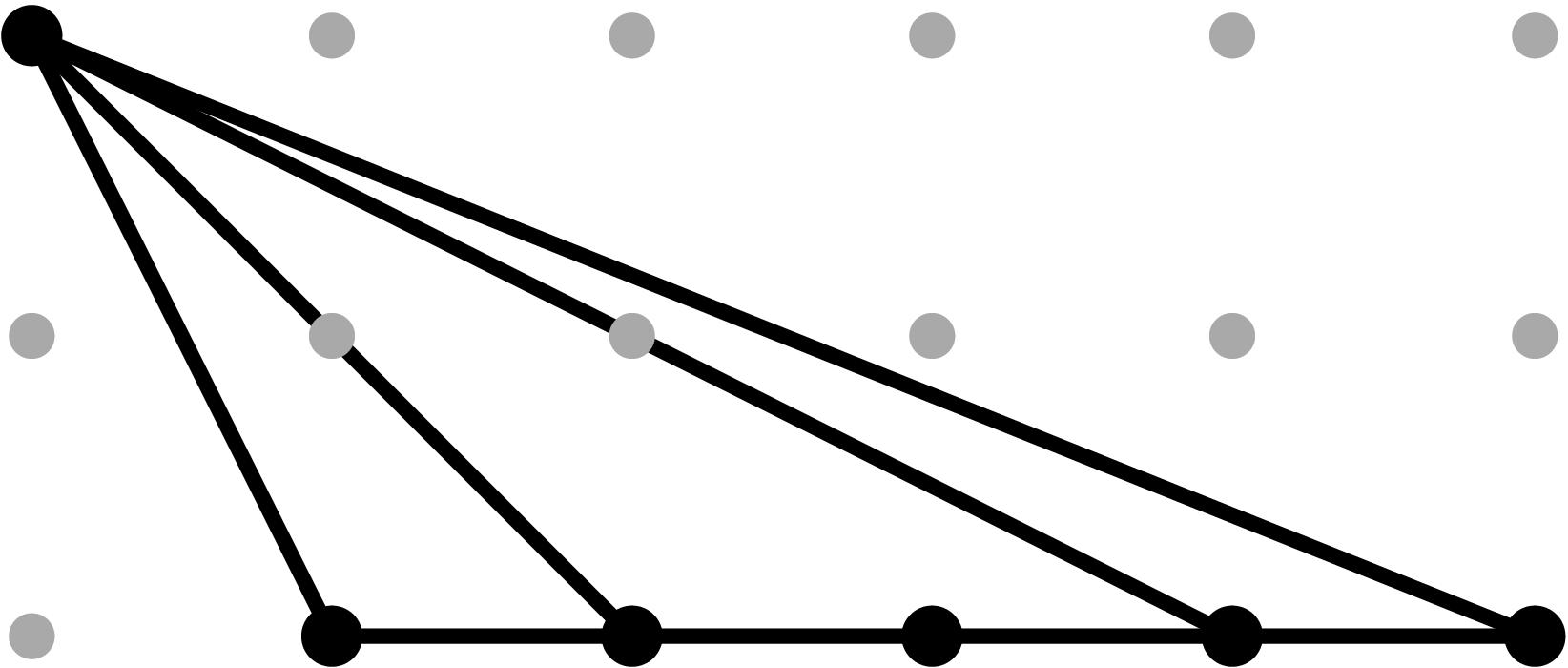
tex output
ps output
| 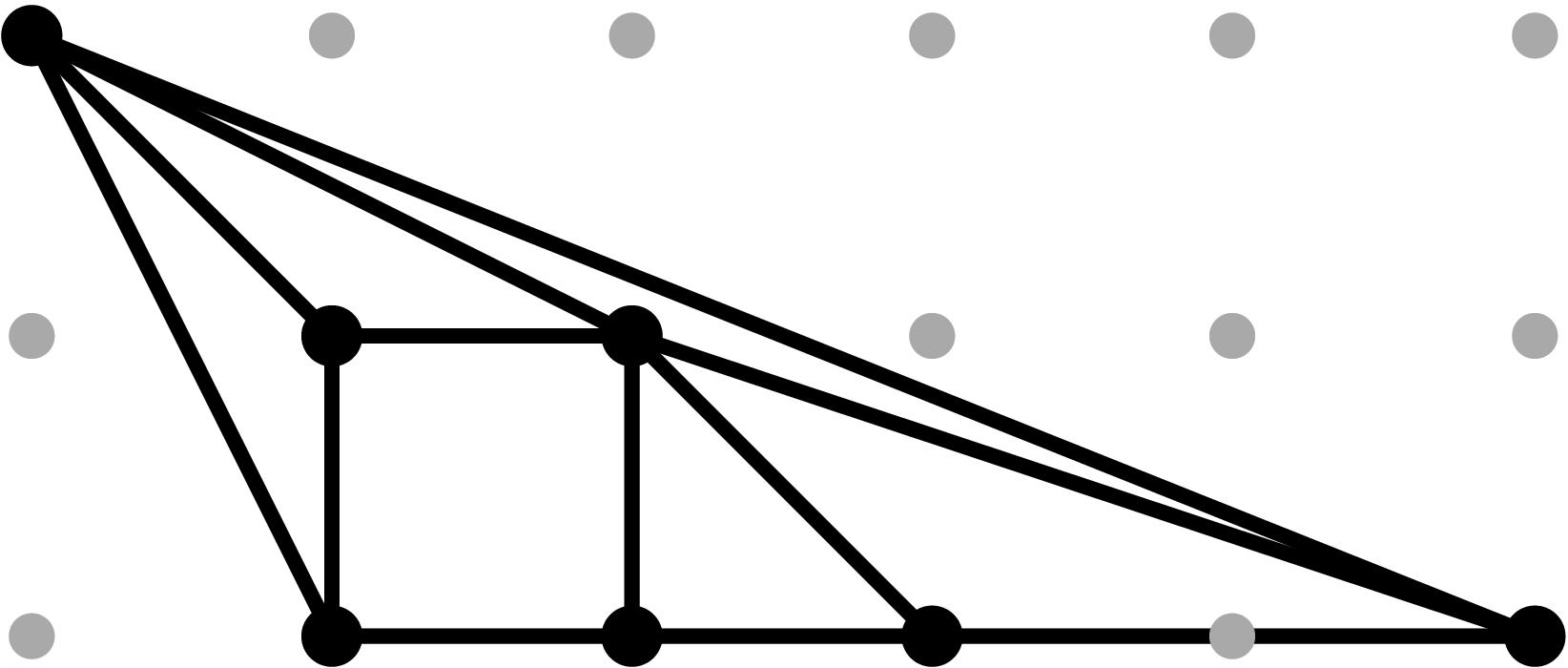
tex output
ps output
| 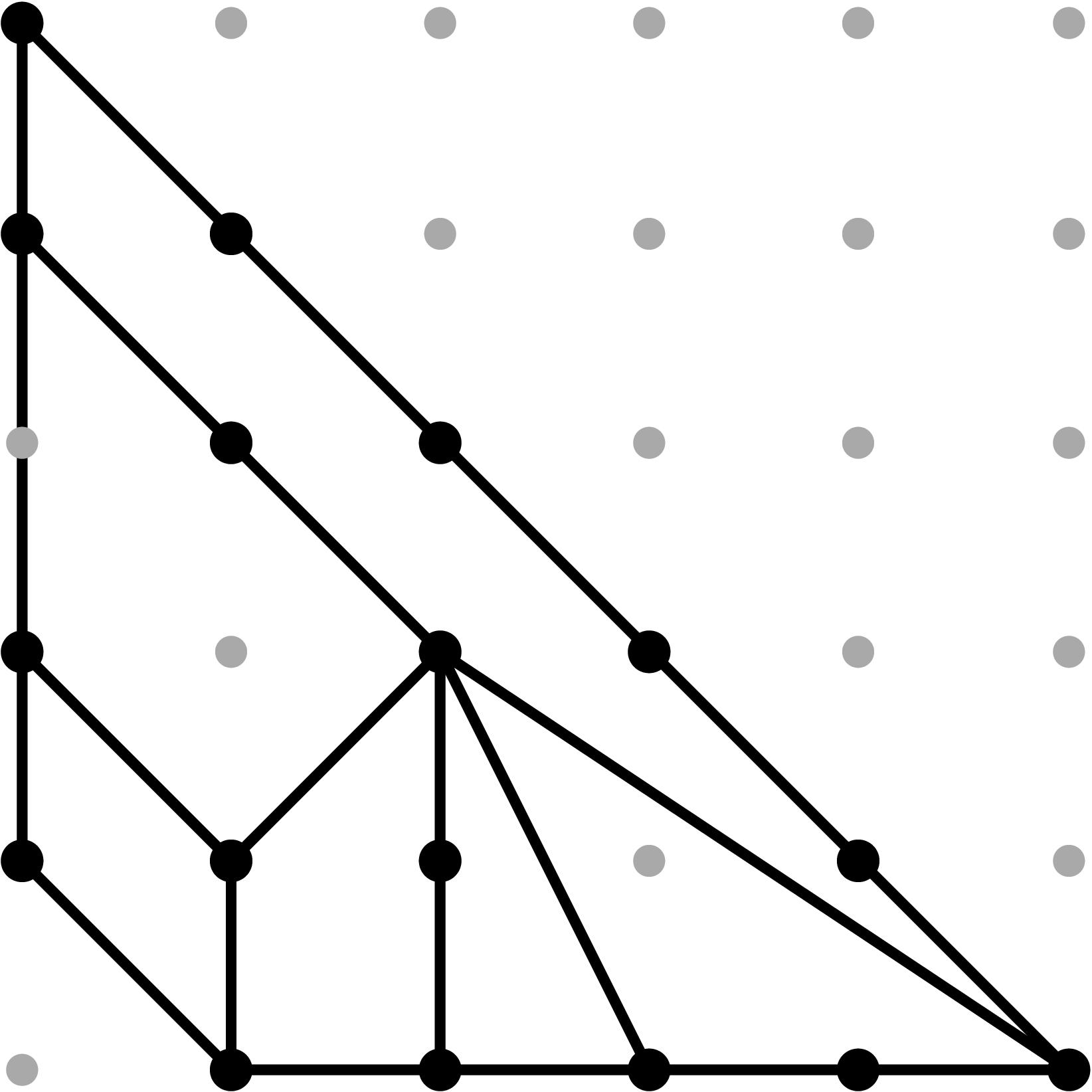
tex output
ps output
|
Back to Table of Contents
Cell C7,0:
In this case, cancellations in the expected initial terms can occur since the relevant leading terms are non-monomial (see Tables 1 and 2).
In order to produce cancellations in both projections, we need in (b4)2 = in (b2 b5). If that happens, the point y3 in the (y,z)-projection drops height and we will obtain a potentially subdivided triangle T with vertices (1,0), (4,0) and (1,1). Two things can occur:
- the triangle T is not subdivided;
- the triangle T is subdivided by the edge yz--y3. For this to occur, we need height(y3)> 2 d34/3 + ω2 + ω3 + 7 ω5/3. We scale our original sample vector by 3, set b5=1 and add a tail to b2 of the form t - ω2/2 + e for some suitable integer e satisfying the previous height condition. In this case, e=1.
On the (x,z)-projection, the point x3 becomes unmarked and we obtain a trapezoid with vertices (1,0), (5,0), (2,1) and (1,1) that cannot be further subdivided.
Table 0.2.17: Theta Graph Files and Projections for Special C7,0 with sample points
[0,-2,-5,-4] and [0,-6,-15,-12], respectively.
| Parameters
| Singular Scripts |
(x,y)-subdivision | (x,z)-subdivision | (y,z)-subdivision |
|
b2 = 4 t4 + t16
b34 = t5 + t10
b4 = 2 t2 + t5
b5 = 1 + t2
| Standard Script
(no refinement)
| 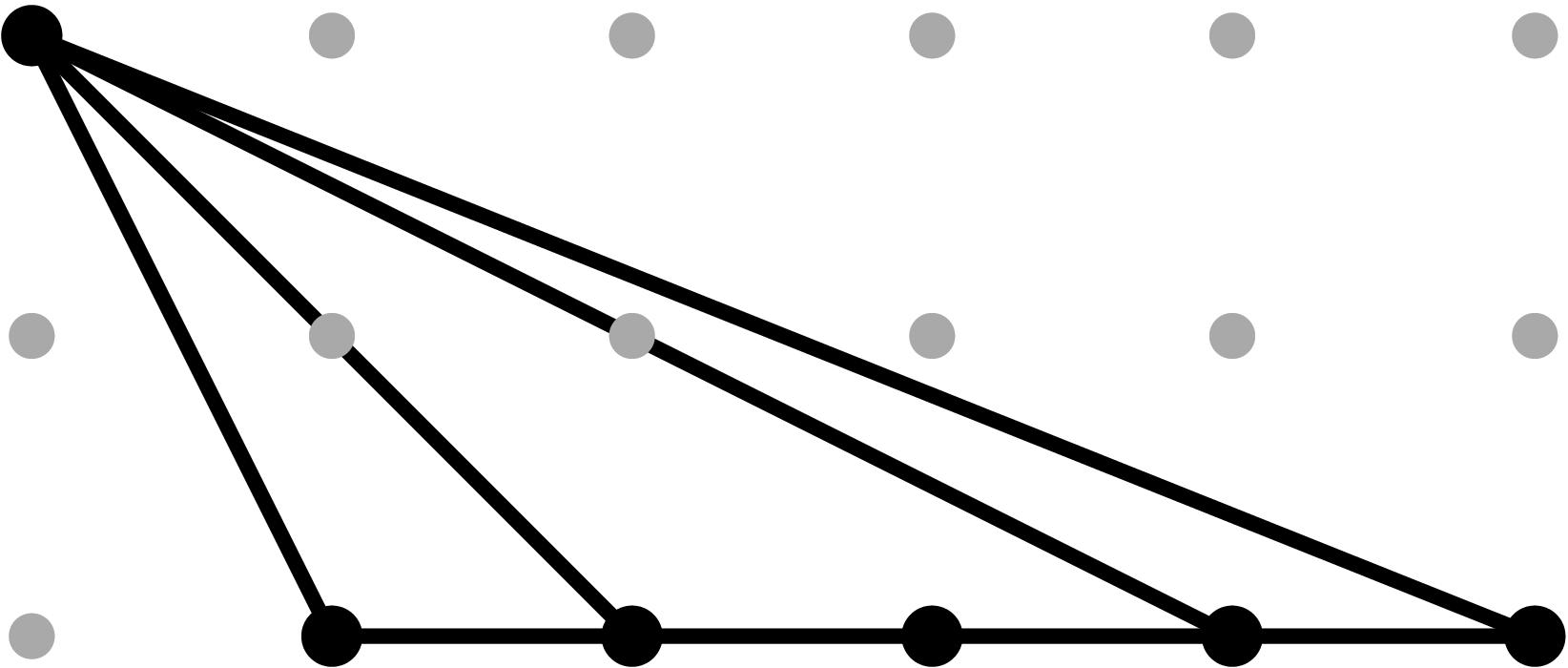
tex output
ps output
| 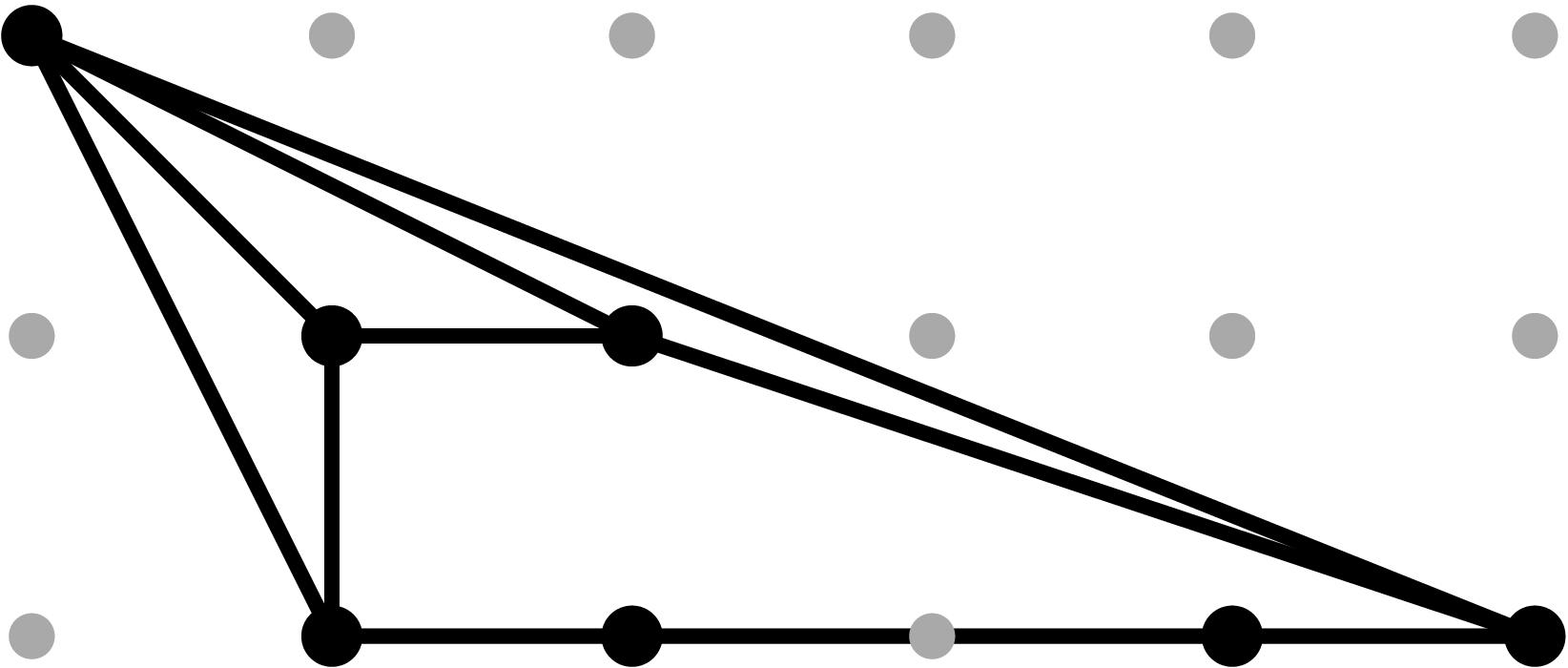
tex output
ps output
| 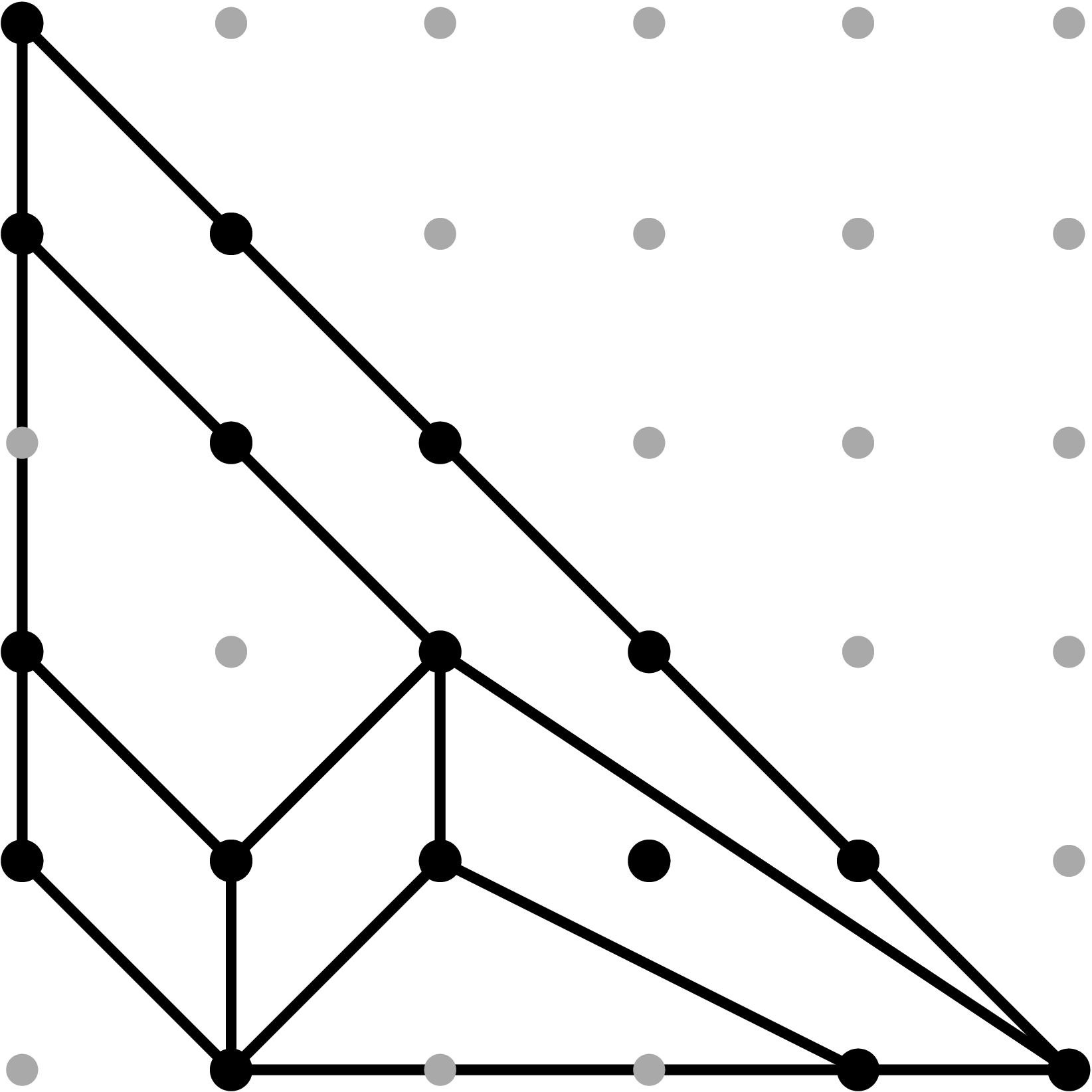
tex output
ps output
|
|
b2 = 4 t12 + t13
b34 = t15
b4 = 2 t6
b5 = 1
| Standard Script
(no refinement)
| 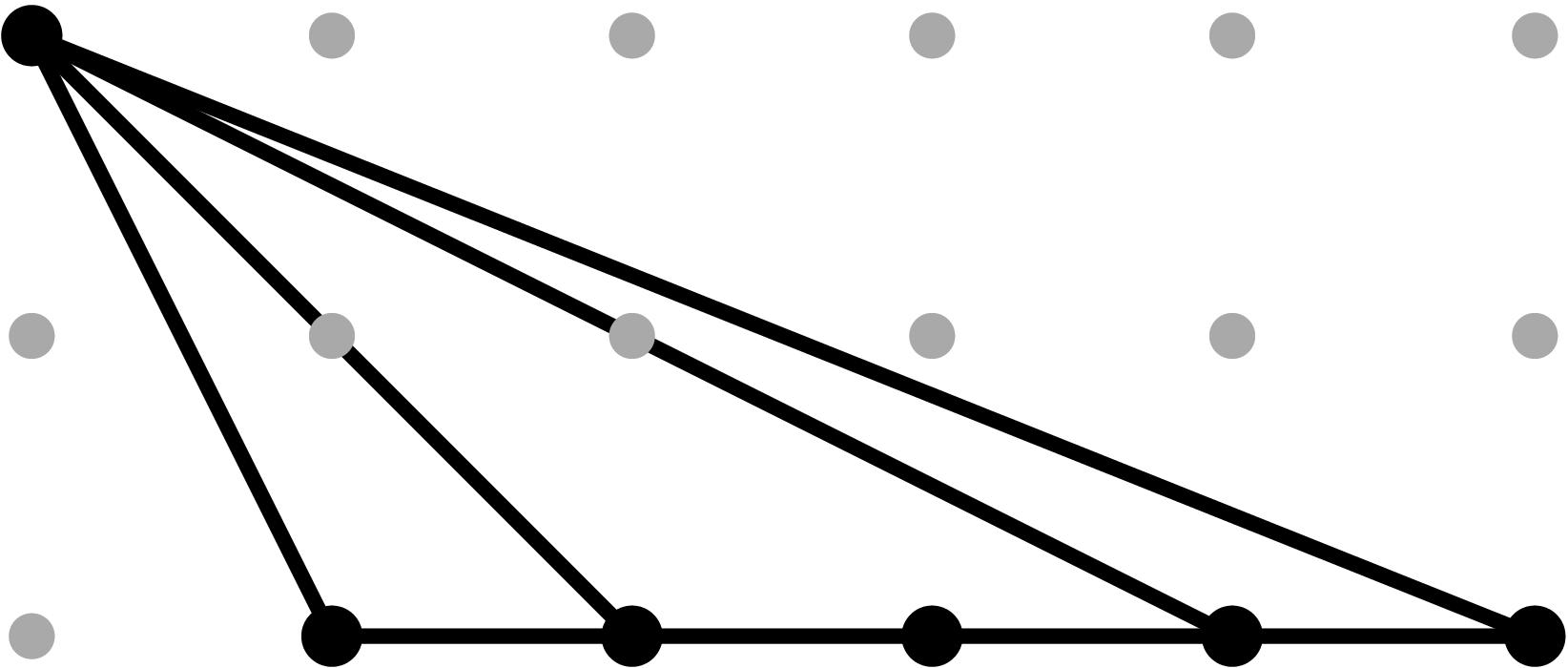
tex output
ps output
| 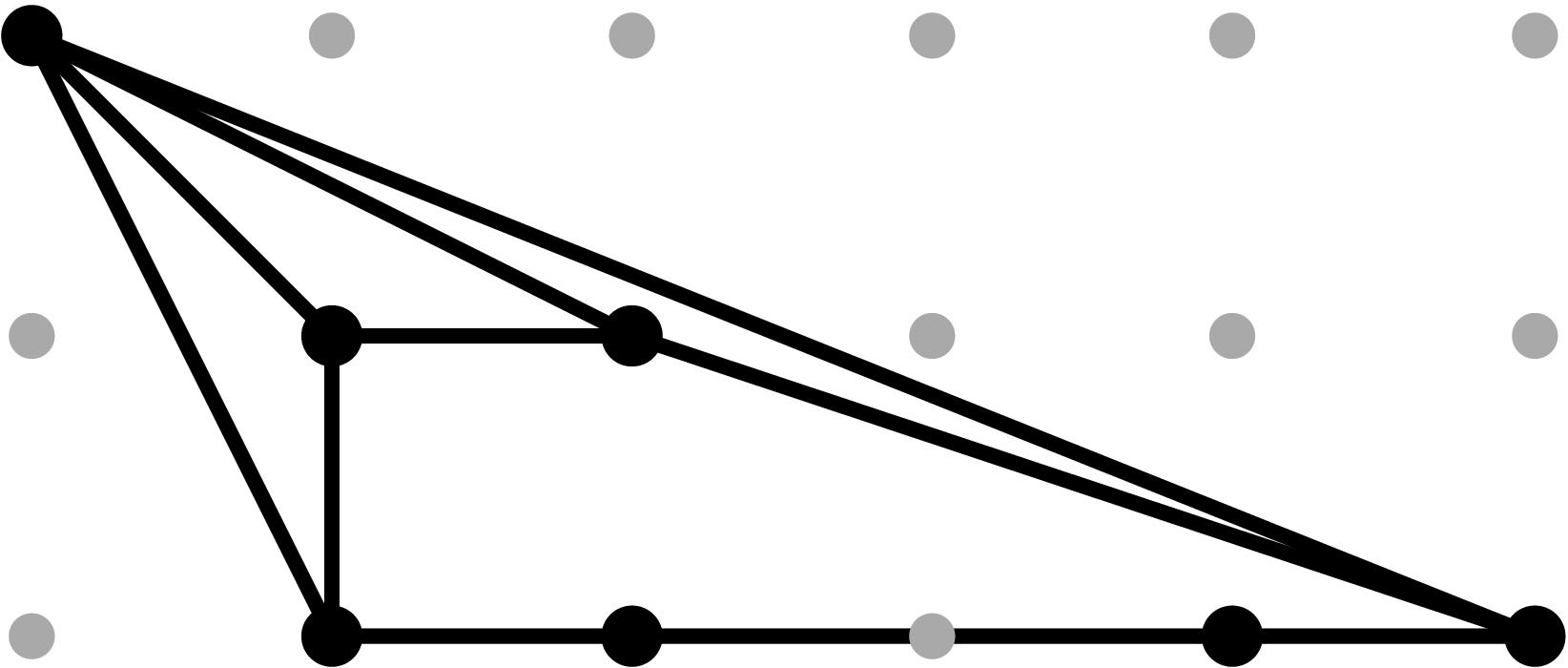
tex output
ps output
| 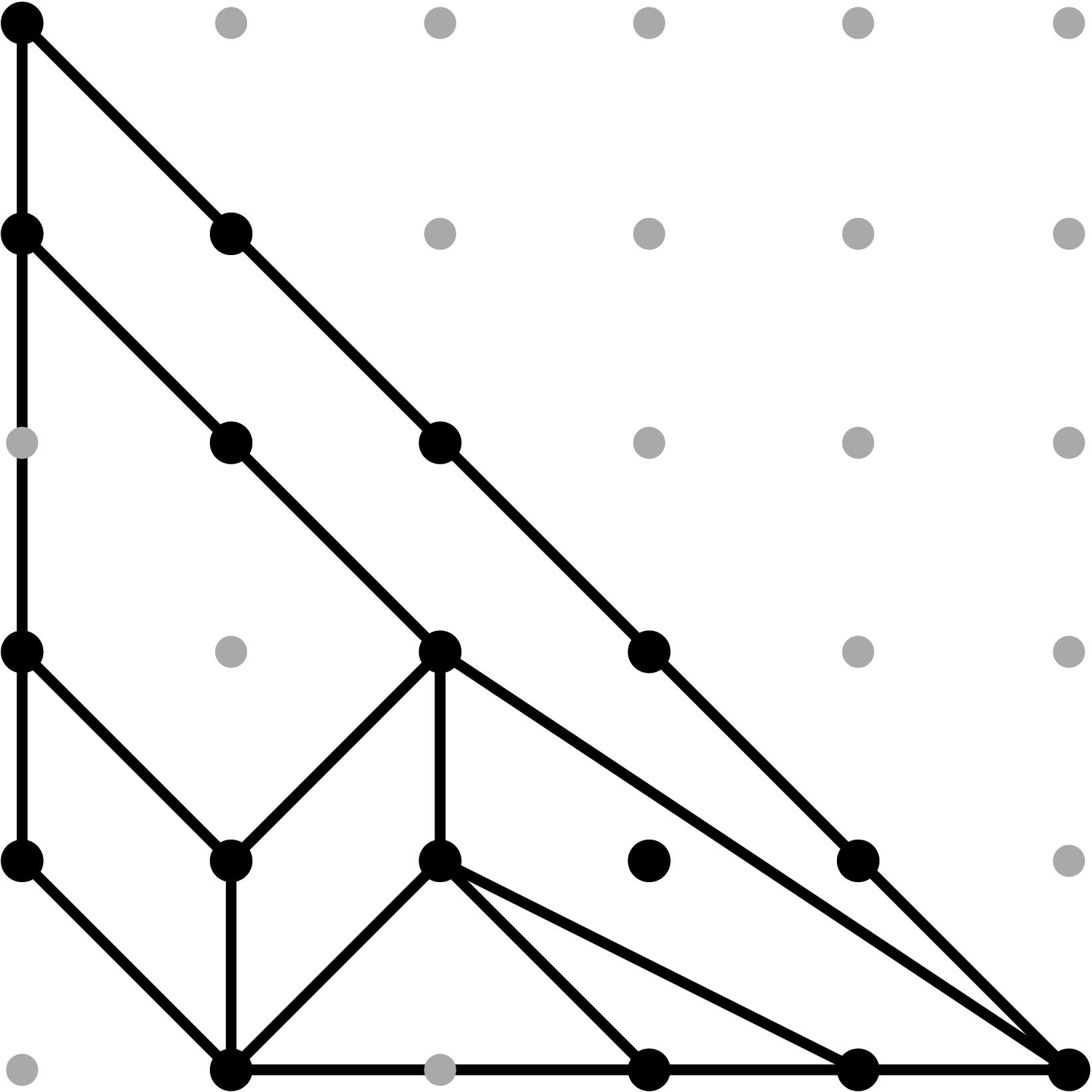
tex output
ps output
|
Back to Table of Contents
Cell C7,1:
In this case, cancellations in the expected initial terms can occur since the relevant leading terms are non-monomial (see Tables 1 and 2).
In order to produce cancellations in both projections, we need in (b4)2 = in (b2 b5). If that happens, the point y3 in the (y,z)-projection drops height and we will obtain a potentially subdivided triangle T with vertices (1,0), (4,0) and (1,1). Two things can occur:
- the triangle T is not subdivided;
- the triangle T is subdivided by the edge yz--y3. For this to occur, we need height(y3)> 2 d34/3 + ω2 + ω3 + 7 ω5/3. We add a tail to b2 of the form t - ω2/2 + e for some suitable integer e satisfying the previous height condition. In this case, e=1.
On the (x,z)-projection, the point x3 becomes unmarked and we obtain a trapezoid with vertices (1,0), (5,0), (2,1) and (1,1) that cannot be further subdivided.
Back to Table of Contents
Cell C7,2:
In this case, cancellations in the expected initial terms can occur since the relevant leading terms are non-monomial (see Tables 1 and 2).
In order to produce cancellations in both projections, we need in (b4)2 = in (b2 b5). If that happens, the point y3 in the (y,z)-projection drops in height and we obtain a potentially subdivided triangle T with vertices (1,0), (4,0) and (1,1). Two things can occur:
- the triangle T is not subdivided;
- the triangle T is subdivided by the edge yz--y3. For this to occur, we need height(y3)> 2 d34/3 + ω2 + ω3 + 7 ω5/3. We scale our original sample vector by 3, set b5=1 and add a tail to b2 of the form t - ω2/2 + e for some suitable integer e satisfying the previous height condition. In this case, e=1.
On the (x,z)-projection, the point x3 becomes unmarked and we obtain a trapezoid with vertices (1,0), (5,0), (2,1) and (1,1) that cannot be further subdivided.
Table 0.2.21: Theta Graph Files and Projections for Special C7,2 with sample points
[0,-1,-3,-2] and [0,-3,-9,-6], respectively.
| Parameters
| Singular Scripts |
(x,y)-subdivision | (x,z)-subdivision | (y,z)-subdivision |
|
b2 = 4 t2
b34 = t3
b4 = 2 t
b5 = 1 + t2
| Standard Script
(no refinement)
| 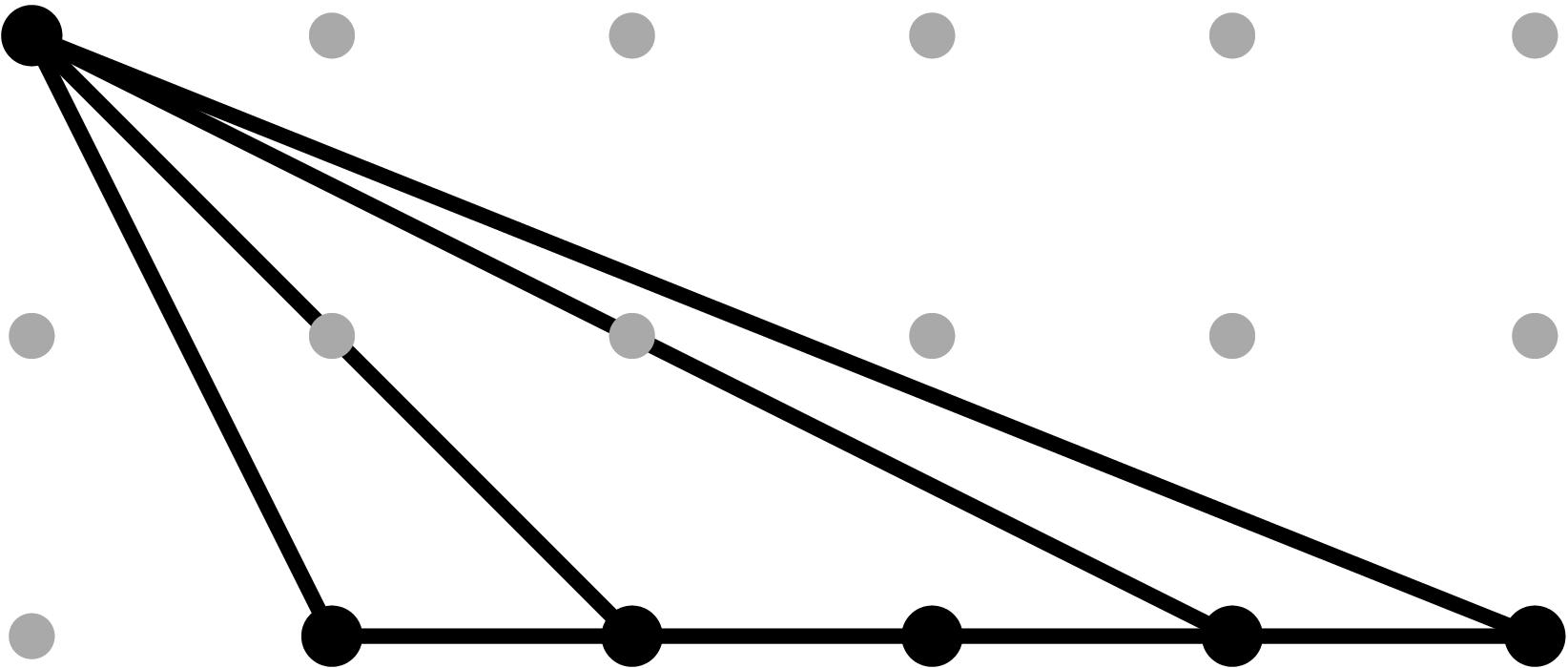
tex output
ps output
| 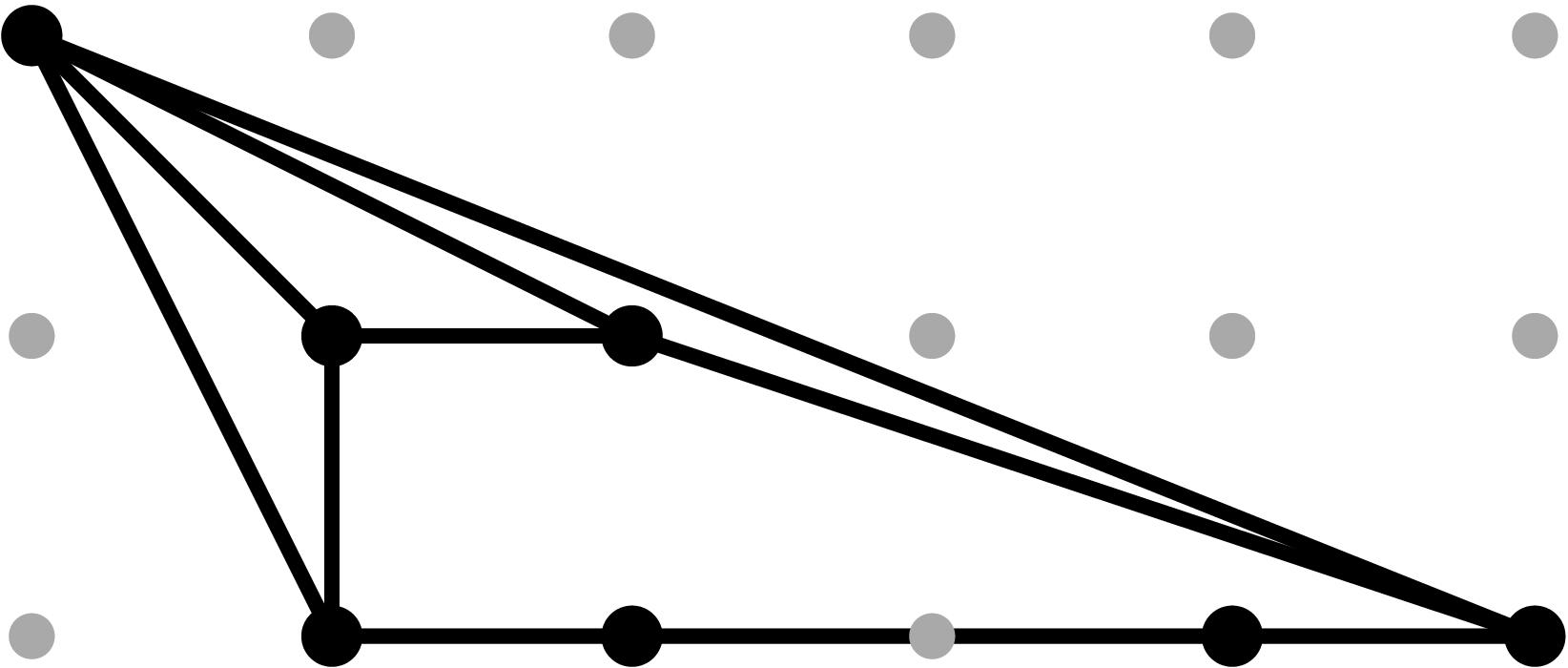
tex output
ps output
| 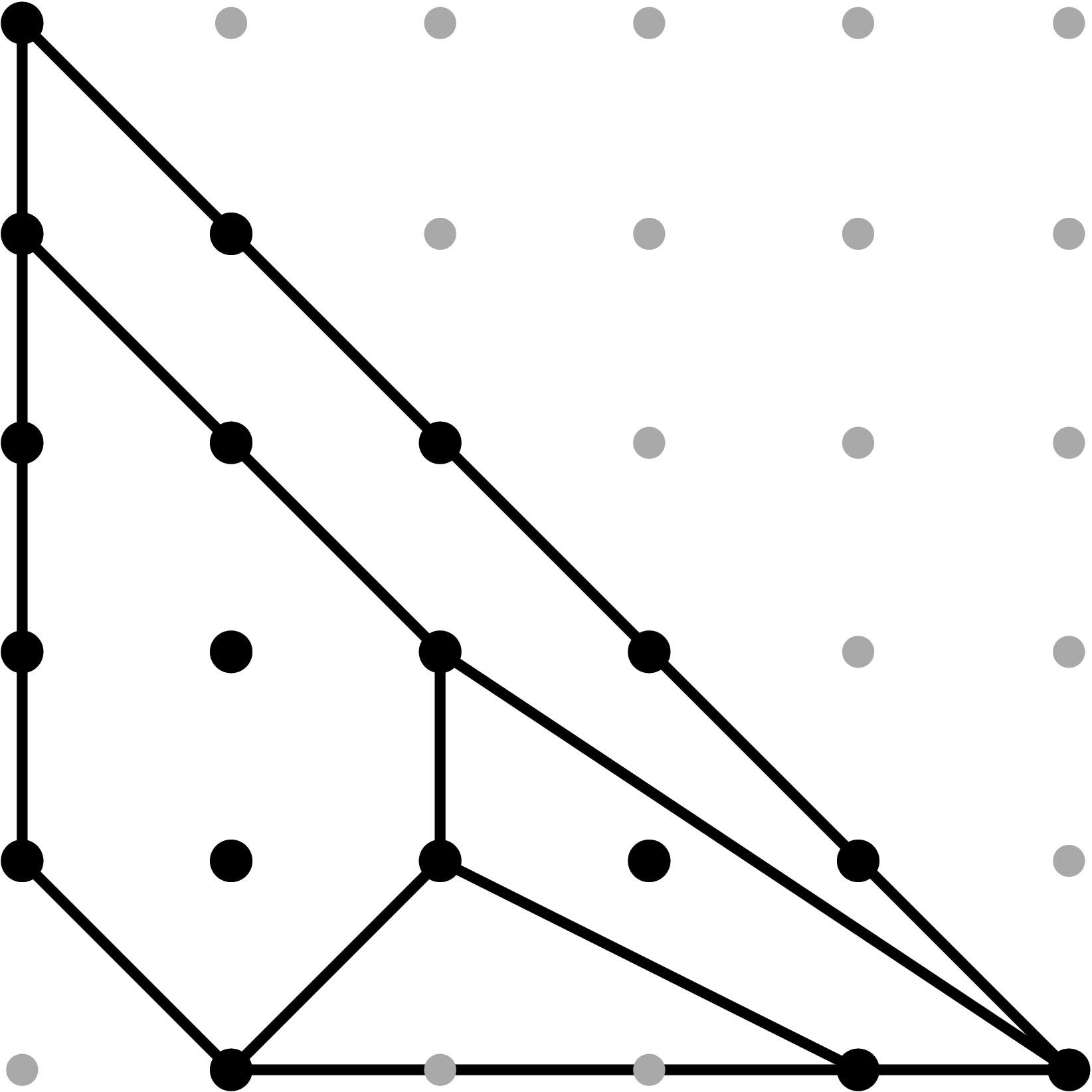
tex output
ps output
|
|
b2 = 4 t6 + t7
b34 = t9
b4 = 2 t3
b5 = 1
| Standard Script
(no refinement)
| 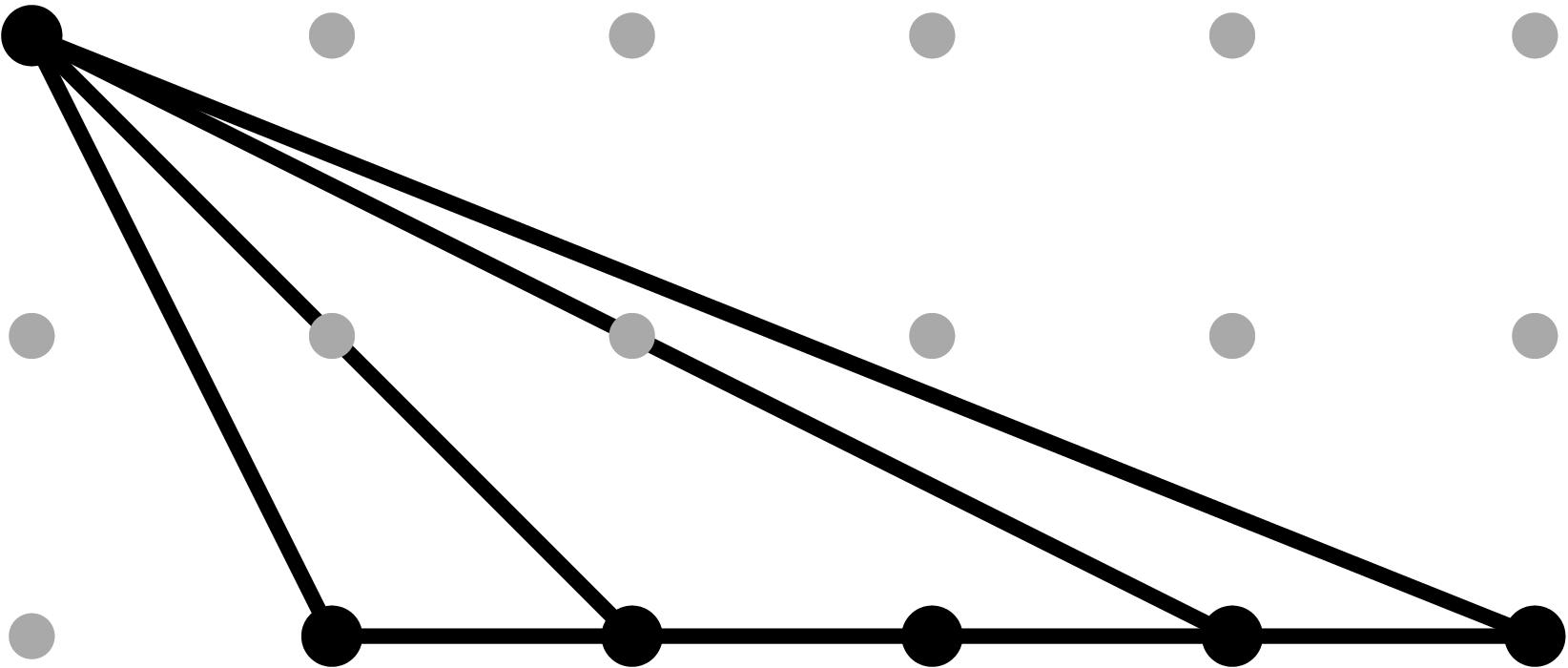
tex output
ps output
| 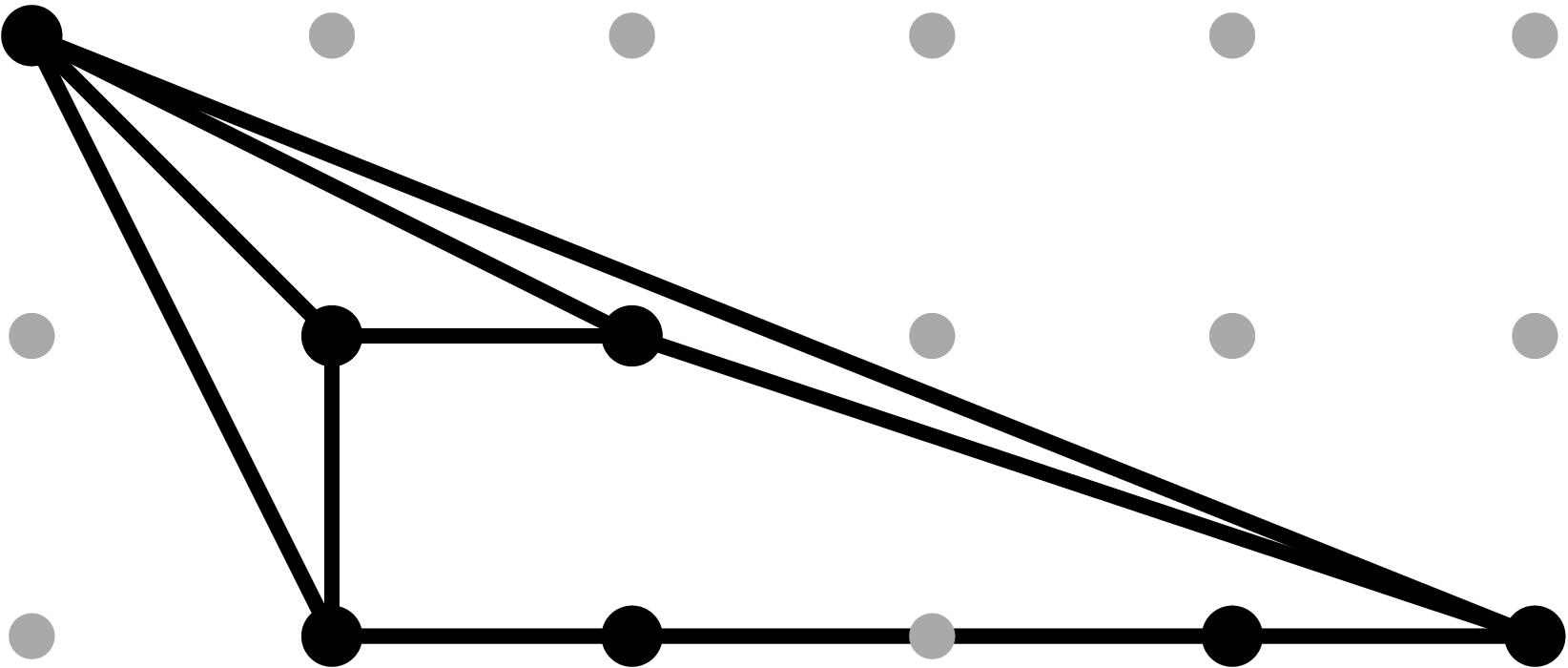
tex output
ps output
| 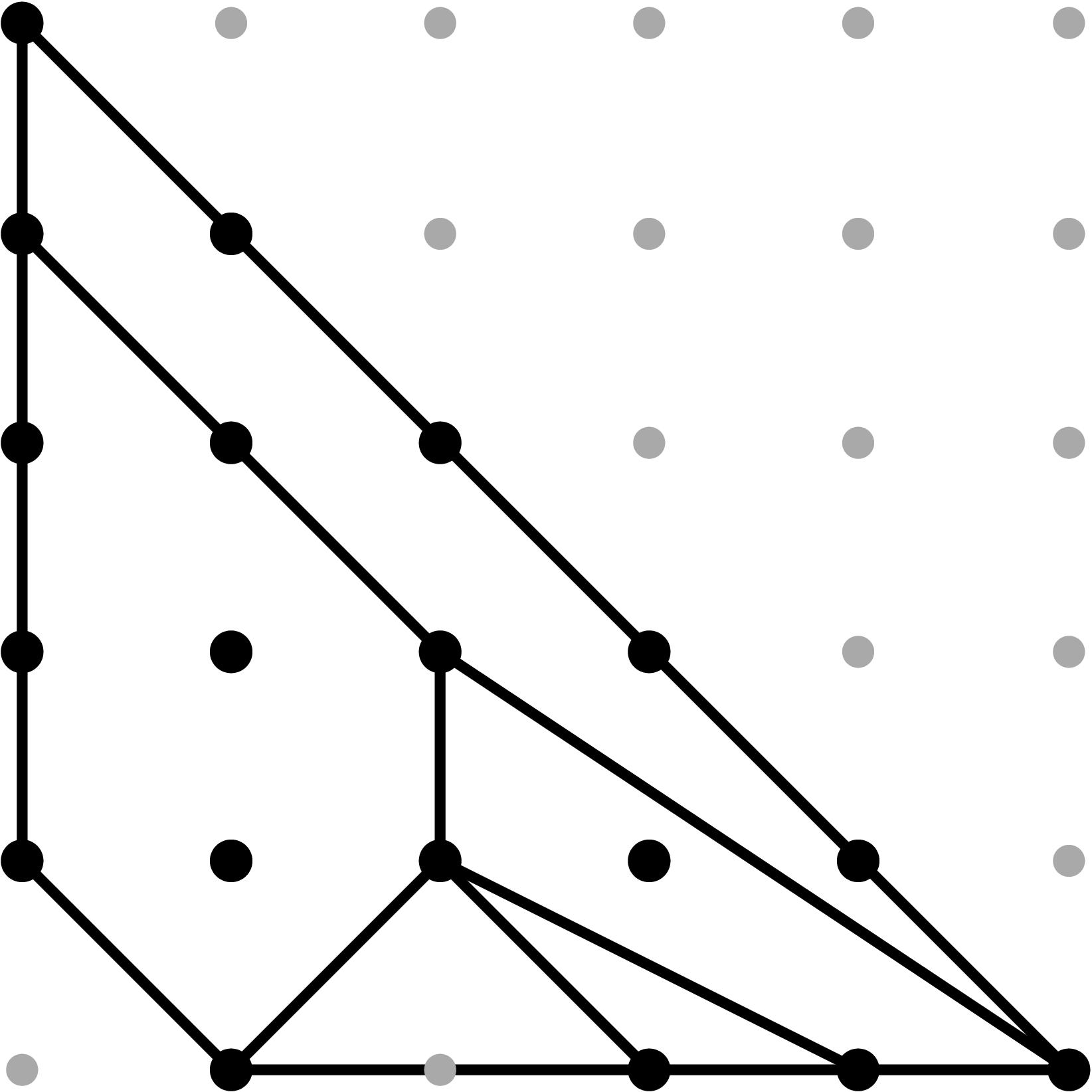
tex output
ps output
|
Back to Table of Contents
Cell C8:
In this case, cancellations in the expected initial terms can occur since the relevant leading terms are non-monomial (see Tables 1 and 2). Depending on our choice of factors to cancel (determined by Tables 1 and 2), the effect of cancellations will be to unmark the points y2 z or y3 and/or y4 on the (y,z)-Newton subdivision and unmark x3 on the (x,z)-Newton subdivision. This has no impact on the tropical world, so we omit including an example.
Back to Table of Contents
Back to Top
§0.3 Type (III) Cone (Figure Eight):
In addition to the modification along F and its lifting f, we compute a vertical modification along MAX{X,ω4} with lifting u = x - α4. This produces a faithful tropicalization at the level of the extended skeleta. We recover the resulting tropical curve in R4 by means of the planar (x,y), (x,z), (u,y) and (u,z)-projections.
Back to Top
§0.4 Type (IV) Cone:
The following files are used to compute the negative valuation of the j-invariant of the curve dual to the genus 1 vertex on the xy-projection.
-
Singular Script to compute the j-invariant of the curve. [Plain text output]
-
Sage file containg the input numerator and denominator of the j-invariant (the file is in plain text).
- Sage script of auxiliary functions for Gröbner fan computations, subdivisions of cones induced by Gröbner fans, leading terms with respect to weight vectors.
- Sage script that computes the leading term (by our own implementation and by generating a script to run in Macaulay 2) of both the numerator and denominator of the j-invariant, factors the resulting forms and checks the Type (VI) Cone lies in a single cone of both the numerator and denominator of the j-invariant.
- Macaulay 2 file that computes the leading terms of both the numerator and denominator of the j-invariant. The output of the computation is commented within the file.
- Sage script that computes the Gröbner cones of the numerator and denominator of the j-invariant. The file records the f-vector, rays and maximal cones. [Compressed output of the Gröbner fan and its maximal cones]
In addition to the modification along F and its lifting f, we compute a vertical modification along MAX{X,ω4} with lifting u = x - α4. This produces a faithful tropicalization at the level of the extended skeleta. We recover the resulting tropical curve in R4 by means of the planar (x,y), (x,z) and (u,y)-projections. As the table shows, the (u,z)-projection is indistinguishable from (u,y) in the tropical world.
Back to Top
§0.5 Type (V) Cone:
The following files are used to compute the negative valuation of the j-invariant of the curves dual to each of the genus 1 vertices on the xy-projection.
-
Singular Script to compute the j-invariant of the curves. [Plain text output of the rightmost vertex]. [Plain text output of the leftmost vertex]
-
Sage file containg the input numerator and denominator of the j-invariant of the leftmost vertex (the file is in plain text).
-
Sage file containg the input numerator and denominator of the j-invariant of the rightmost vertex (the file is in plain text).
- Sage script of auxiliary functions for Gröbner fan computations, subdivisions of cones induced by Gröbner fans, leading terms with respect to weight vectors.
- Sage script that computes the leading term (by our own implementation and by generating a script to run in Macaulay 2) of both the numerator and denominator of the two j-invariants, factors the resulting forms and checks the Type (V) Cone lies in a single cone of both the numerator and denominator of the two j-invariant.
- Macaulay 2 file that computes the leading terms of both the numerator and denominator of the j-invariant of the leftmost vertex. The output of the computation is commented within the file.
- Macaulay 2 file that computes the leading terms of both the numerator and denominator of the j-invariant of the rightmost vertex. The output of the computation is commented within the file.
- Sage script that computes the Gröbner cones of the numerator and denominator of the j-invariant of the leftmost vertex. The file records the f-vector, rays and maximal cones. [Compressed output of the Gröbner fan and its maximal cones]
- Sage script that computes the Gröbner cones of the numerator and denominator of the j-invariant of the rightmost vertex. The file records the f-vector, rays and maximal cones. [Compressed output of the Gröbner fan and its maximal cones]
If we compute two successive vertical modifications along MAX{X,ω4} and MAX{X,ω2} (in that order), with liftings z2 = x - α2, and z4 = x - α4, we produce a faithful tropicalization at the level of the extended skeleta. We can compute the resulting tropical curve in R4 by means of the planar (x,y), (z2,y) and (z4,y)-projections.
Back to Top
§0.6 Type (VI) Cone:
There are several possibilities for the (x,z)-projection, depending on the genericity of the initial forms of α3, α4, α5, β3 and β4 with respect to the expected coefficients for x3 and x4.
- Genericity for x4: in(α3) + in(α4) ≠ 0,
-
Genericity for x3:
in(α5) (in(β3) - in(β4))2 + in(α3) in(α4) ≠ 0.
Generic for x3 (any condition for x4):
In addition to the modification along F and its lifting f, we compute two successive vertical modifications along MAX{X,ω4}, with liftings z3 = x - α3, and z4 = x - α4. This produces a faithful tropicalization at the level of the extended skeleta. We recover the resulting tropical curve in R5 by means of the planar (x,y), (z3,y) and (z4,y)-projections. Notice that the the last two agree with the (z4,y) and (z4,z)-projections so the latter ones need not be plotted.
Back to Top
Generic for x4, Non-Generic for x3 but x3 marked:
In addition to the modification along F and its lifting f, we compute two successive vertical modifications along MAX{X,ω4}, with liftings z3 = x - α3, and z4 = x - α4. This produces a faithful tropicalization at the level of the extended skeleta. We recover the resulting tropical curve in R5 by means of the planar (x,y), (z3,y) and (z3,z)-projections. Notice that the the last two agree with the (z4,y) and (z4,z)-projections so the latter ones need not be plotted.
Back to Top
Generic for x4, Non-Generic for x3 and x3 unmarked:
In addition to the modification along F and its lifting f, we compute two successive vertical modifications along MAX{X,ω4}, with liftings z3 = x - α3, and z4 = x - α4. This produces a faithful tropicalization at the level of the extended skeleta. We recover the resulting tropical curve in R5 by means of the planar (x,y), (z3,y) and (z3,z)-projections. Notice that the the last two agree with the (z4,y) and (z4,z)-projections so the latter ones need not be plotted.
Back to Top
Non-Generic for x4 and also for x3:
Recall that α2=β22, α3= β32, α4= β42 and α5= - β52.
Violating The genericity conditions for both x3 and x4 requires the use of non-real numbers, since we must have
(in (β3))2 = in (α3) = -in(α4) = - ( in (β4))2 and in (β3) in (β4) = in (β5) (in (β3) - in (β4)).
We take in (β5) = 1, in (β3) = (ι - 1), and in (β4) = (1 + ι).
We produce all the numerical examples by evaluating all the elimination ideals at the desired values of β2, β3, β4, and β5
with Singular, by working with the field extension associated to the polynomial x2 + 1. To plot the tropical plane curves with Singular, we replace each polynomial by one with coefficients in Q[t] with the same t-valuation (the result is obtained by specializing the Symbolic computations to a random value of ι.) As was mentioned, we only treat the refined modifications.
Back to Top
§0.7 Type (VII) Cone (Good Reduction):
If we compute three successive vertical modifications along MAX{X,ω2} with 3 different liftings
z2 = x - α2, z3 = x - α3, and z4 = x - α4,
we produce a faithful tropicalization at the level of the extended skeleta. We can compute the resulting tropical curve in R5 by means of the planar (x,y), (z2,y), (z3,y), and (z4,y)-projections. Notice that these 3 projections are indistinguishable. Their sole purpose is to isolate the leg marked by the corresponding branch point.
Back to Top
§1. Igusa invariants and their tropicalizations
The following scripts allow to compute initial forms of the corresponding polynomials A, B, C, A', B', C', Q3 = AB - 3C, Q4 = AB - 4C, and Q4' = A'B' - 4C'. We refer to the last two sections of the paper for the definition of these polynomials.
-
The variables for A, B, C, Q3 and Q4 are ordered as the tuple x = (a6, a5, a4, a3, a2, a1).
-
The variables for A', B', C', and Q4' are ordered as the tuple x = (a6, a5, x34, a3, a2, a1).
- Sage script generating the polynomials A, B, C, A', B', C', Q3, Q4 and Q4', and the M2 scripts to compute the initial forms with respect to weights in the Dumbbell and Theta Cone. In addition, it computes the Gröbner fan of Q4' and the subdivision induced on the Theta cone.
- Sage script generating all 7 polyhedral cones representing the 7 cells in M2trop and sample points on each cone. We use the variables (a6, a5, x34, a3, a2, a1) only for the Theta Cone.
- Sage script that computes the Gröbner cones of the polynomials A and A' and computes the subdivision on all 7 cones in M2trop induced by these fans. The file records the f-vector, rays and maximal cones and verifies that no subdivision is performed. We save the output fans as Sage objects.
[Output for A]
[Output for A']
- Sage script that computes the Gröbner cones of the polynomials B and B' and computes the subdivision on all 7 cones in M2trop induced by these fans. The file records the f-vector, rays and maximal cones and verifies that no subdivision is performed. We save the output fans as Sage objects.
[Output for B]
[Output for B']
- Sage script that computes the Gröbner cones of the polynomials C and C' and computes the subdivision on all 7 cones in M2trop induced by these fans. The file records the f-vector, rays and maximal cones and verifies that no subdivision occurs. We save the output fans as Sage objects.
[Output for C]
[Output for C']
- Sage script that computes the Gröbner cones of the polynomials Q4 and Q4' and computes the subdivision on all 7 cones in M2trop induced by these fans. The file records the f-vector, rays and maximal cones and verifies that the only subdivision produced is in the Theta cone. We save the output fans as Sage objects.
[Output for Q4]
[Output for Q4']
We separate the Macaulay2 scripts into two types, depending on the maximal cone in M2trop. We assume the characteristic of the residue field to be different than 2 and 3. Our own implementation of the leading terms is given at the end of this section, and includes the computation for all lower dimensional cones.
§1.1 Dumbbell Cone
In all our scripts we input a weight vector ω=(ω6,ω5,ω4,ω3,ω2,ω1) in R6, where -val(αi) = ωi for i=1,…, 6. The vector ω lies in the Dumbbell cone since it satisfies:
ω1 < ω2 < ω3 < ω4 < ω5 < ω6
In all the scripts below, we fix ω = (36,25,20,16,9,1). The scrpts where generated from the Sage script provided above. The outputs of the computations are commented after each command in the scripts.
- Macaulay 2 Script computating the initial form of A with respect to the weight vector ω;
- Macaulay 2 Script computating the initial form of B with respect to the weight vector ω;
- Macaulay 2 Script computating the initial form of C with respect to the weight vector ω;
- Macaulay 2 Script computating the initial form of Q3 = A B - 3 C with respect to the weight vector ω;
- Macaulay 2 Script computating the initial form of Q4 = A B - 4 C with respect to the weight vector ω;
- Macaulay 2 Script computating the initial form of A, B, C, Q3 and Q4 with respect to the weight vector ω.
§1.2 Theta Cone
In all our scripts we input a weight vector ω=(ω6,ω5,d34,ω3,ω2,ω1) in R6, where -val(αi) = ωi for i=1,2,3, 5, 6, and -val(x34) = d34. Recall that x34 = α4 - α3.
The vector ω lies in the Theta cone since it satisfies:
ω1 < ω2 < ω3 <ω5 < ω6 and d34 < ω3.
The Sage script at the begining of this section computes the Gröbner fan of Q4' = A'B' - 4 C' by replacing Q4' by the sum of its extremal monomials. Its f-vector equals [1, 32, 174, 396, 420, 168].
- Sage Object: Gröbner fan of Q4' in R6 given as a polyhedral fan data type.
- Sage Object: Gröbner fan of Q4' in R6 given as a rational polyhedral fan data type. This file is used to subdivide the Theta cone.
The calculation yields a subdivision of the Theta cone into 3 pieces, which we call Θ0, Θ1 and Θ2. The Sage calculation gives the inequalities and extremal rays for each piece, recorded in Table 2 below. We compute a sample point on the relative interior of each piece by adding up the extremal rays and translating by the all ones vector to get non-negative weights for each variable. The variables are ordered as the tuple x = (a6, a5, x34, a3, a2, a1).
Table 2: Combinatorial data of the Subdivision of the Theta cone induced by the Gröbner fan of Q4'.
| Cell | Defining inequalities |
Extremal rays | Lines | Sample point |
|
|
Θ0 |
(0, 0, -1, 1, 0, 0) x + 0 >= 0,
(0, 0, 0, 0, 1, -1) x + 0 >= 0,
(1, -1, 0, 0, 0, 0) x + 0 >= 0,
(0, 0, 1, 0, -1, 0) x + 0 >= 0,
(0, 1, 1, -2, 0, 0) x + 0 >= 0
|
(0, 0, 0, 0, 0, -1)
(0, 0, 0, 0, -1, -1)
(0, 0, -2, -1, -2, -2)
(0, 0, -1, -1, -1, -1)
(0, -1, -1, -1, -1, -1)
| (1, 1, 1, 1, 1, 1) | ω(0)=(6, 5, 2, 3, 1, 0); |
|
|
Θ1 |
(0, -1, -1, 2, 0, 0) x + 0 >= 0,
(0, -1, 0, 2, -1, 0) x + 0 >= 0,
(1, -1, 0, 0, 0, 0) x + 0 >= 0,
(0, 1, 0, -1, 0, 0) x + 0 >= 0,
(0, 0, 0, 0, 1, -1) x + 0 >= 0
|
(0, -1, -1, -1, -1, -1)
(0, 0, 0, 0, 0, -1)
(0, 0, 0, 0, -1, -1)
(0, 0, -1, 0, 0, 0)
(0, 0, -2, -1, -2, -2)
| (1, 1, 1, 1, 1, 1) | ω(1)=(6, 5, 2, 4, 2, 1); |
|
|
Θ2 |
(0, 0, -1, 0, 1, 0) x + 0 >= 0,
(1, -1, 0, 0, 0, 0) x + 0 >= 0,
(0, 0, 0, 0, 1, -1) x + 0 >= 0,
(0, 0, 0, 1, -1, 0) x + 0 >= 0,
(0, 1, 0, -2, 1, 0) x + 0 >= 0
|
(0, 0, 0, 0, 0, -1)
(0, 0, -1, 0, 0, 0)
(0, 0, -2, -1, -2, -2)
(0, -1, -1, -1, -1, -1)
(0, 0, -1, -1, -1, -1)
| (1, 1, 1, 1, 1, 1) | ω(2)=(6, 5, 1, 3, 2, 1) |
Macaulay2 scripts to confirm the calculation of the initial forms on the three pieces of the Theta cone. The outputs of the computations are commented after each command in the scripts. The calculations are also done at the end of the Sage script by computing the leading terms as the monomials maximizing the inner product between the weight vector and the exponent vectors.
- Macaulay 2 Script computating the initial form of A, B, C, Q4' with respect to the weight vector ω(0) = (6, 5, 2, 3, 1, 0);
- Macaulay 2 Script computating the initial form of A, B, C, Q4' with respect to the weight vector ω(1)=(6, 5, 2, 4, 2, 1);
- Macaulay 2 Script computating the initial form of A, B, C, Q4' with respect to the weight vector ω(2)=(6, 5, 1, 3, 2, 1).
§1.3 Initial terms and genericity conditions on M2trop
The following scripts compute the initial forms of all polynomials
A, B, C, A', B', C', Q4 and Q4' and determine the exact genericity conditions to ensure the tropical Igusa invariants equal the negative valuation of the corresponding algebraic Igusa invariants. We always assume our residue field has characteristic different than 2 and 3. It relies on the subdivision computations done at the beginning of this section.
- Sage script including all auxiliary functions used in our Gröbner fan computations, subdivisions of cones induced by Gröbner fans, leading terms with respect to weight vectors.
- Sage script computing the (factorized) initial forms of all polynomials. The calculation for Q4' is the only one that requires a subdivision of the Theta cone. The output is commented on the file.
- Plain text output recording our initial forms for each (subdivided) cone and the precise genericity conditions required to ensure the expected valuations are achieved for each cone.
§1.4 Characteristic Issues
The calculations of the initial forms of A, B, C, D, Q3 and Q4 above are valid whenever the characteristic of the residue field does not divide the coefficient of the initial term. The output shows that we only have issues with the polynomial A since the coefficient is 6. To extend our findings to characteristic 3, we must refine the computation of the initial form of A, by writing A as an integer combination of polynomials with coefficients ±1:
A = 4 A4 + 6 A6 + 12 A12 + 120 A120.
The computation verifies that no matter what point we choose, we need only compare the initial terms of 4 A4 and Q = (6 A6 + 12 A12 + 120 A120)/3. This gives 3 cases to analyze, depending of the order between ω3 and (ω4 - 1). In case of equality there will be cancellations whenever val(-3 α4 + 2α3) > -ω3. If so, there will be no general formula for computing val(A), and we would have to make a substitution of the form
α3 = 3/2 α4 + y34 where val(y34)> -ω3
in case we want to compute the true valuation. Our genericity conditions will disallow this situation.
The following files are used to compute the decomposition of A, together with the Gröbner fans of these 4 polynomials and their intersection with the Dumbbell Cone, and the genericity conditions required to compute the tropical Igusa invariants.
- Sage script including all auxiliary functions used in our Gröbner fan computations, subdivisions of cones induced by Gröbner fans, leading terms with respect to weight vectors.
- Sage Script to compute the decomposition of A and the leading terms of each of its four components. The output is included as comments on the script.
- Sage script that computes the Gröbner cones of the polynomial A and its four components. The file records the f-vector, rays and maximal cones. We save the output fans as Sage objects.
[Output for A],
[Output for A4], Output for A6], [Output for A12], [Output for A120].
- Sage script computing the (factorized) initial forms of all the components of A in the polynomials for all cones except the Theta cone. It also computes the leading terms of Q = 6 A6 + 12 A12 + 120 A120 and compares it with that of 4 A4. The script shows that issues may arise only when ω3 = ω4 - 1 and in(3α4) = -2(α3).
The output is commented on the file.
- Plain text output recording our initial forms for the non-Theta cones and the precise genericity conditions required to ensure the expected valuations are achieved for each cone.
Back to Top
"Any opinions, findings, and conclusions or recommendations expressed in this material are those of the author(s) and do not necessarily reflect the views of the National Science Foundation."








